Learn from general counsel at:

+ Foursquare + Teach For America

+ Panasonic
+ Dallas Stars
and more P3

Learn from general counsel at:

+ Foursquare + Teach For America

+ Panasonic
+ Dallas Stars
and more P3



⚫ Go to market faster
⚫ Reduce costs
⚫ Mitigate risk
⚫ Achieve data accuracy
Our solution takes a transactionbased approach to product configuration, policy issuance and policy life-cycle events, including both financial and non-financial processing.


We utilize decades of experience to meet the sophisticated recordkeeping requirements inherent to nonqualified deferred compensation (NQDC) plans.




With 35 years of client relationships in Policy and Plan Administration, we utilize a value-added approach, using US-based resources to meet our commitments and service expectations for our BPO services.


Fourteen general counsel share how they drive business success from their seats at the table
Eric Cohen, Terex P18
Anna Porcaro, Ascena Retail Group P33
Eric Eissenstat, Continental Resources P47
Lynne Puckett, Celanese P58
Marc Ellenbogen, Fousquare P73
Tracy Cheney, Early Warning Services P86
Ashley Halfman, Printpack P94
Tracy-Elizabeth Clay, Teach For America P116
Roxy Bargoz, Avant P132
Alana Matthews, Dallas Stars P146
Jessica Hodkinson, Panasonic P167
Melanie Klint, PFSweb P191
Jobe Danganan, HomeLight P208
Michael Valente, Versum Materials P220

Tara
Hobbs DeWitt uses smart processes and data analytics to optimize procurement, real estate, and fleet management
67
Mona Chu leverages her expertise gained from Google and Box to help Pure Storage’s global expansion
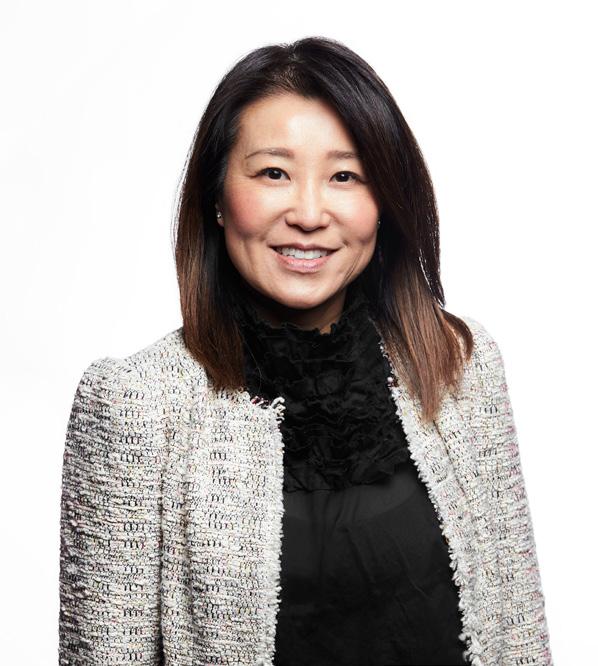
80
Amir Hameed guides global engineering experts to remake clients’ cloud communications services
83
Letitia
How Nancy Gleason supports a growing Vineyard Vines as controller and briefly as acting CFO 90
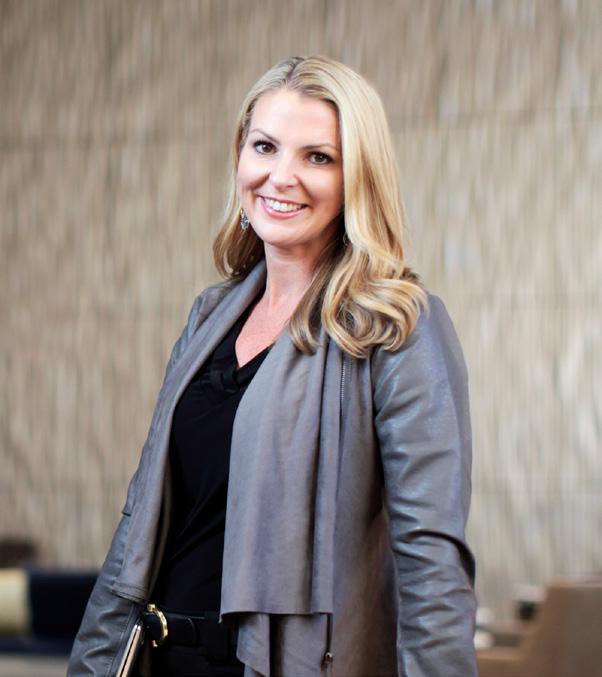
L. David Kingsley takes a two-way street approach to talent acquisition, engagement, and retention at Vlocity
140
Marjorie Zyble brings her nearly twenty years of GE and HR experience to help transform GE Aviation’s culture
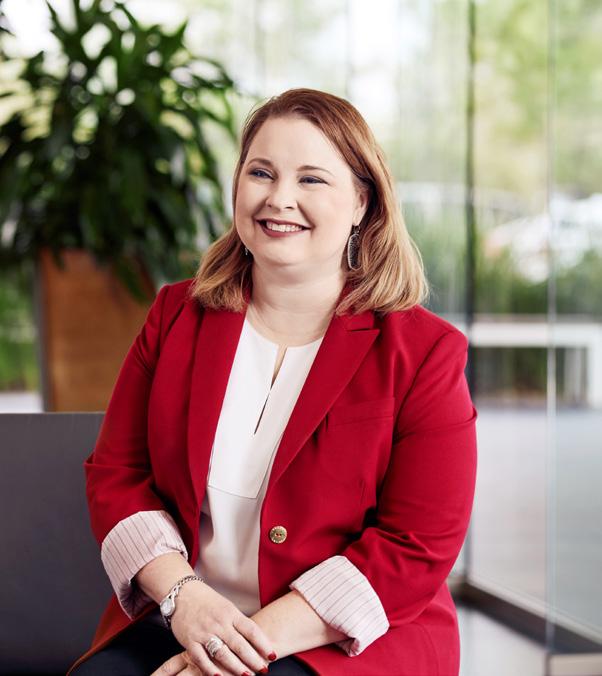
150
As senior parter at McKinsey, Kevin Carmody helps companies become resilient through holistic, organization-wide
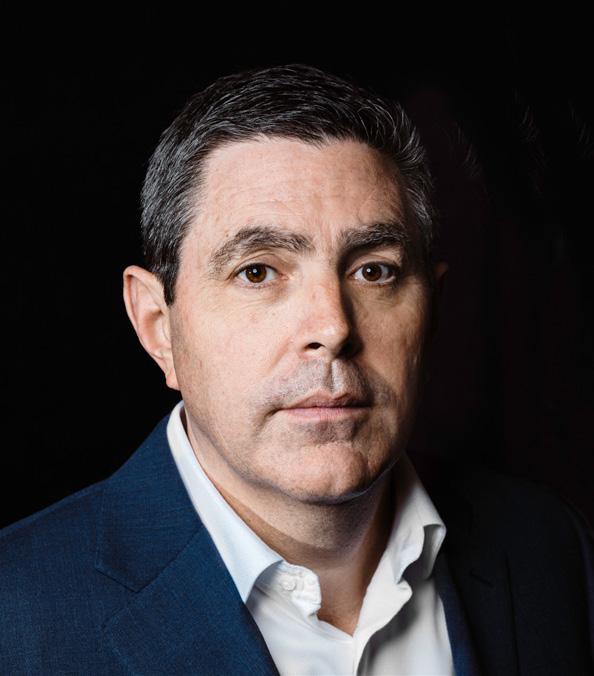
161
Lou Nowikas goes beyond his role in facilities to reduce environmental impact and increase employees’ well-being
184
HR expert Tracie Sponenberg on how to make the world a better place, one HR professional at a time
197
Cleveland Browns’ VP of IT Brandon Covert is the underdog you want running things behind the scenes
200
Alisha Valavanis helps WNBA Seattle Storm and Force 10 Sports achieve victory by focusing on the power of teamwork and collaboration 215
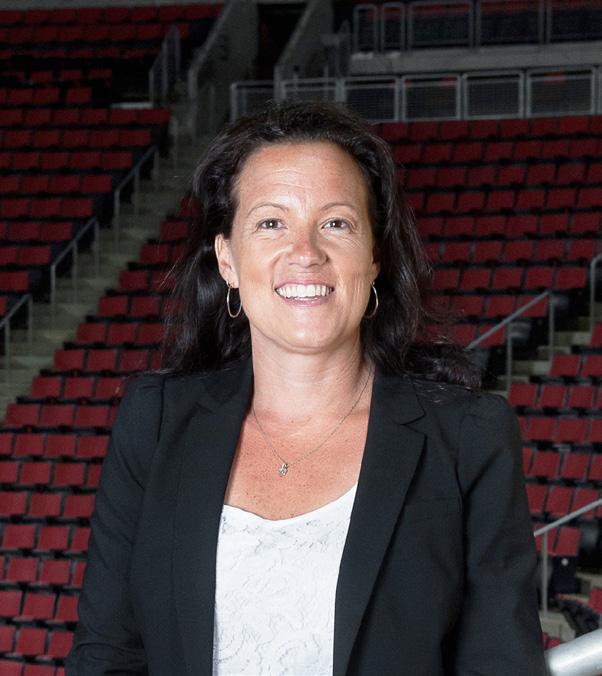
Shawn Bushouse dives deep into the “hyperentrepreneurial” culture that has led Vital Proteins to the top of the national market 178
VP, Creative
Kevin Beauseigneur
Director, Editorial
Kevin Warwick
Managing Editor
Frannie Sprouls
Editors
Melaina K. de la Cruz
KC Esper
Julia Thiel
Hana Yoo
Staff Writers
Sara Deeter
Billy Yost
Editorial Intern
Blythe Long
Contributors
Megan Bungeroth
Joseph Charney
Peter Fabris
Lori Fredrickson
Will Grant
Russ Klettke
Kathryn Kruse
John Larrabee
Keith Loria
Bridgett Novak
Anthony Ruth
Paul Snyder
Sara Verdi
Zayvelle Williamson
Andrew Wilson
Clint Worthington
Brianna Wright
A.J. Zak
Stephanie Zeilenga Designer
Melody Pohla
Photo Editors/Staff
Photographers
Cass Davis
Gillian Fry
Production Assistant
Andrew Tamarkin
Profile® is a registered trademark of Guerrero, LLC.

© 2020 Guerrero, LLC guerreromedia.com
825 W. Chicago Ave. Chicago, IL 60642
Subscriptions + Reprints
For a free subscription, please visit profilemagazine.com /subscribe. Printed in China. Reprinting of articles is prohibited without permission of Guerrero, LLC. For reprint information, contact Reprints & Circulation Director Stacy Kraft at stacy@guerreromedia.com.
CEO & Publisher
Pedro A. Guerrero
Chief of Staff
Jaclyn Gaughan
VP, Sales
Kyle Evangelista
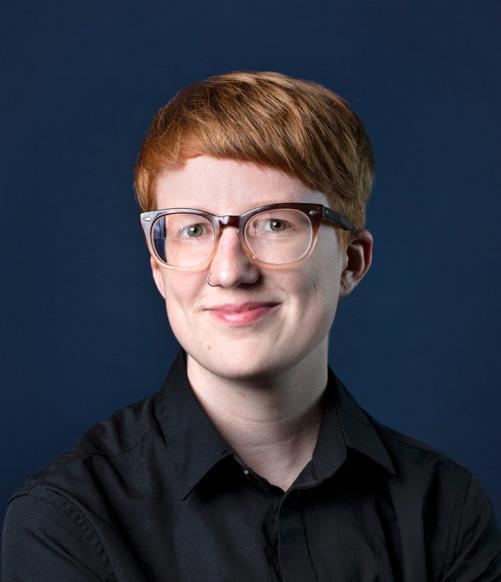
VP, Hispanic Division
Vianni Lubus
VP, Finance
David Martinez
Director, Client Services
Cheyenne Eiswald
Senior Client Services Manager
Rebekah Pappas
Client Services Manager
Brooke Rigert
Director, Talent Acquisition
Elyse Schultz
Talent Acquisition Manager
Haylee Himel
Director, Business Development
Jenny Vetokhin
Manager, Business Development
Angela Reeves
Director, Strategic Partnerships
Krista Horbenko
Director, Strategic Accounts
Taylor Frank
Senior Events Manager
Jill Ortiz
Senior Director, Sales
Ben Julia Sales Training Manager
Alexa Johnson
Content & Advertising Managers
Christina Brown
Allyssa Bujdoso
Chip Carey
Justin Davidson
Michelle Harris
Brandon Havrilka
Zachary Hernandez
Elif Negiz
Chantal Roberts
Hannah Tanchon
Molly Thomas
Michael Velazquez
Ashley Watkins
Growing up, I was always aware of my impact on the environment—thanks to Smokey the Bear’s wildfire lessons in northern Minnesota to litter pick-up days during high school. It’s ever-present in my mind now, especially as I read increasingly urgent climate change articles I see every day.
That’s why I keep a tote bag on hand to grocery shop or grab a pickme-up treat during the workday. I store my snacks and sandwiches in a reusable quart bag, and a designated mug for coffee is always on my desk. And when I moved to Chicago, I traded in my car for a transit pass.
My coworkers also take initiative on lessening our office’s impact where we can. A couple years ago, one of our designers lobbied to get a large recycling bin that sits in the common area so everyone can make more conscious decisions about throwing away that plastic cup or stack of papers. One of our writers, Sara Deeter, even worked with our office manager to replace the coffee stirring straws with wooden sticks to reduce plastic usage.
There are so many things we do each day to ensure we are personally leaving at least a small impact on the environment. But saving the environment is not solely up to me or any individual person—it’s important that corporations make their contributions as well.
Enter our cover star Lynne Puckett. Shortly after joining chemical solutions company Celanese in early 2019, Lynne was asked by CEO Lori Ryerkerk to lead the company’s first environmental, social, and governance council with a focus on sustainability.
Celanese has made strides in its environmental stewardship efforts by reducing its environmental releases by 58 percent, its waste by 32 percent, and its greenhouse gases by 28 percent. Lynne and the council want to take it further. Sustainability is a good business decision, and it’s also a personal one for Lynne and Celanese employees.
Lynne isn’t the only general counsel in this issue who has a mission that drives them. Foursquare’s Marc Ellenbogen is taking the company to the forefront of data privacy, Alana Matthews breaks down barriers and creates opportunities for working parents at the Dallas Stars, and Tracy-Elizabeth Clay fell in love with the transformational work that Teach For America does for students across the US.
Every issue, I’m inspired by the work our featured executives accomplish and even more so by the guiding principles that power them through their careers. Our general counsel issue is no exception.
Facebook: @gh.profilemagazine
LinkedIn: @Profile_ExecMag
Twitter: @Profile
Frannie Sprouls Managing Editor Gillian FryHow to build successful and efficient legal teams
Shawn Gibbs, Seqirus P8
Derek Smith, Airbnb P11
John Geffert, CBIZ P14
The influenza virus constantly mutates, leaving researchers at Seqirus, a top developer and manufacturer of influenza vaccines, in a constant race to keep up.
As associate general counsel at Seqirus, Shawn Gibbs is in the thick of it. Se -
qirus, a division of CSL Limited, battles influenza around the world, which means the company is constantly engaging with regulatory agencies.
“Negotiating commercial agreements, compliance with regulations, litigation— they’re all part of the job,” Gibbs says. “You could say it’s a broad area.”
In the pharmaceutical industry, advertising often presents a unique legal challenge. “The United States is one of the few countries to allow direct-to-consumer advertising of prescription drugs,” Gibbs points out. “But the ads must be truthful, non-misleading, and based on the label approved by the FDA. You can’t avoid mention of safety risks observed in clinical trials.”
Unlike typical pharmaceuticals, the influenza vaccine has to be approved as a new formulation each season. As such, when a new influenza vaccine is approved, it generally must demonstrate non-inferiority to an existing influenza vaccine already on the market. “More and more with the influenza vaccine, we try to talk about how the vaccine performs after it is approved by the FDA,” Gibbs explains. “By collecting and analyzing real world data, we’re able to gain valuable insight on how a particular vaccine technology performs in the ‘real world.’”
Early in life, Gibbs got a taste of what it’s like to be part of an organization tackling a huge challenge. He enlisted in the US Army, and for a time was stationed in Africa as part of Operation Support Hope, a military effort to provide assistance to refugees of the Rwandan civil war. His military experience gave him skills he has relied on throughout
his career. “It gives you a perspective on how to deal with adversity,” Gibbs explains. “You learn how to stay the course whatever the task at hand. And you absolutely learn about teamwork and organizational skills.”
Gibbs used his GI Bill benefits to help pay his tuition at the University of Iowa. After earning his undergraduate degree, he worked for a time at a local clinical research organization. That experience would influence the choices he made in his career path.
“It was my first experience with pharmaceutical trials,” he says. “They were working on a drug in phase four research. In law school, I hearkened back to that period and realized I enjoyed the science in that kind of work.”
Most lawyers spend some time working for a law firm after graduating law school, even if they eventually choose to work inhouse. Gibbs instead took a series of jobs working his way up at various life science corporations, including C. R. Bard Inc., GE
“[Having military experience] gives you a perspective on how to deal with adversity. You learn how to stay the course whatever the task at hand.”
Shawn Gibbs shares words of advice for young lawyers interested in working in-house.
• "Don't be afraid to go down unconventional paths. Most people who become inhouse lawyers work for law firms first. I didn't. Try betting on yourself."
• "Don't be afraid to take on new challenges and new areas of the law."
• "Continue to build your skills."
Healthcare, Optimer Pharmaceuticals, and Nestle Nutrition North America.
Then he heard about Seqirus, then newly created spin-off after Novartis had sold its influenza vaccine to CSL Limited. “I was looking for new opportunities,” he recalls, “and this was a chance to work in a start-up environment.”

The flu is often regarded as a sickness that can keep one in bed for a week and causes little lasting damage. But that’s not really true. Influenza can be deadly for some, especially the very young and the elderly. Each year, the virus claims between 290,000 and 600,000 lives worldwide. The 1918 pandemic proved fatal for more than 50 million around the globe.
The crew at Seqirus is constantly faced with new challenges when it comes to the flu vaccine. “With influenza, you need a new vaccine every year, based on World Health Organization requirements,” Gibbs explains. “Next to the human immunodeficiency virus (HIV), influenza is the most active in terms of mutation.”
Seqirus is a global company, with manufacturing and R&D hubs across the US, Europe, and Australia, and a commercial pres-
ence in more than twenty countries. Though Gibbs is based in the US, he also provides legal advice for corporate operations in Argentina, Brazil, and Canada.
He relies on a small but very effective team to help assess the laws in those countries. “I have an attorney who sits at our manufacturing site in North Carolina as well as a paralegal who attends law school,” he says. “I also have a contract counsel in Argentina, a very seasoned lawyer who assists with our needs in South America.”
What’s more, Gibbs sees some big changes for the industry on the horizon. “There’s been a lot of effort to find a more effective influenza vaccine, and a recent Presidential Executive Order sets the stage for federal agencies to provide more funding,” he says. “From a regulatory standpoint, there’s opportunity to talk more about how a vaccine performs and in-house counsels need to stay abreast of the changing laws to effectively counsel their clients.”
Ballard Spahr is proud to partner with Shawn Gibbs and support Seqirus in its global fight against influenza, clearing the way so that clients like Seqirus can focus on what counts—their mission.
Ballard Spahr is proud to support Seqirus as it works to deliver on its mission – fighting influenza.
We’re proud that the work we do lets our clients focus on the work they do best.
Derek Smith is a builder, not a breaker. As associate general counsel at popular home-sharing marketplace Airbnb, Smith uses the entrepreneurial skills he has learned as both a lawyer and a musician to help the legal department thrive on a global level.
After graduating from Harvard University, Smith went to the University of Oxford planning to complete a master’s degree focused on deterrence theory and the United States’ strategy for handling the proliferation of weapons of mass destruction. That
was a highly topical area of study for the early 2000s, Smith notes, and he ultimately decided to stay on at the university to complete a PhD in international relations.
But to Smith, his area of study at Oxford is far less relevant to his current career path than his choice of extracurriculars. “Music is very important in my family, and I’ve been singing a cappella throughout my life,” he says. “When I got to Oxford, I noticed that they didn’t have any all-male a cappella groups. So I decided to start my own group, called Out of the Blue.”
And according to Smith, his decision to found Out of the Blue did far more than simply sustain his passion for music.
“That experience sparked my interest in entrepreneurship, and made me more willing to go in-house and take more of a start-up route rather than stay on the more traditional law firm path,” Smith explains. “It taught me to take risks, it taught me how to build something from scratch, it taught me how to think about organizational dynamics and team motivation, and it taught me how to market something in a way that not only gets it off the ground but actually helps it thrive.”
That joy of building something new has stayed with Smith over the years, he says. In fact, it’s what inspired his move in-house after spending four and a half years as a
litigation associate at Latham & Watkins, a role that despite being very stimulating was “ultimately more about fighting over things that were broken.”
“In an in-house role, your purpose is to help grow and improve the business,” Smith says. And Smith has certainly seen growth during his tenure at Airbnb. “When I joined the company in June 2016, the legal department was only twenty to twenty-five people, and the company itself had roughly two thousand people,” Smith recalls. “The company has tripled since then.”
Today, Airbnb’s legal team comprises nearly 150 people. That not only means that they are able to specialize and give
 Derek Smith Associate General Counsel Airbnb
Emily Cheng
Derek Smith Associate General Counsel Airbnb
Emily Cheng
more nuanced legal advice to different regions around the world, but also means that the legal department is able to manage risk for the company—or, as Smith puts it, better able to escape the “fighting fires” mentality.
“When you’re a small team, all you can do is find the fire, assess the damage, and then do something about it as fast as you can,” Smith remarks. “We still have some people acting as firefighters—because someone always has to be the firefighter—but now more
rotating the time of the meeting to ensure that he accommodates team members in Asia and Europe as well as the United States.
“It can be nearly impossible at times to set up meetings so that they’re inclusive for the entire global team, but we find a way because we want to achieve a true diversity of opinion,” Smith remarks.
Even once the meetings are scheduled, Smith still has to select which topics from the team updates should be part of the
people can devote their attention to thinking about where things are smoldering, what kind of damage could be done if those things develop into fires, and how we can help the company prevent those fires from erupting.”
Of course, having a bigger legal team also comes with some downsides. “The biggest challenge is communication,” Smith notes. “A global team can’t fit in a single room for meetings like a small team can, and effective communication becomes much more difficult.”
But Smith has developed a solution to his problem. He schedules biweekly meetings for the legal teams he works with,
meeting agenda. This is because only some updates are worthy of discussion in a meeting, he points out.
“If anything doesn’t need to be discussed live, then it is better communicated by email. And after the meeting, we follow up with a list of very clear action items identifying who is responsible for what,” Smith says.
Beyond all of those elements, Smith says, there remains one more key to an effective meeting. “I bring my Pomeranian, Hippo, to most of our meetings. He keeps everybody happy and calm and makes everything just a little more lighthearted,” Smith says with a laugh.
Paul Hastings is proud to support our client
Associate General Counsel Airbnb
Derek is a brilliant legal mind and a true asset to his field.
As one of today’s fastest growing law firms, we understand the imperative for innovation, efficiency, and breakthrough performance facing today’s leading companies – and what it takes to help our clients succeed.
“We still have some people acting as firefighters—because someone always has to be the firefighter—but now more people can devote their attention to [fire prevention].”
Cleveland-based CBIZ Inc. has grown immensely since John Geffert rejoined the company in the early 2000s after law school and a brief stint in private practice.
Now as associate general counsel and assistant secretary, he often acts as the company goalie: the last stop between CBIZ and incurred liability. This is no small task at one of the country’s largest providers of accounting, tax, advisory, employee benefits, retirement planning, and property and casualty insurance services.
As CBIZ’s legal goalie, Geffert strategizes and enacts protections—most of which he
has managed to standardize—and he looks mainly to one core value when it comes to decisions and interactions with both employees and clients. “We are One CBIZ,” he says. “This is the guide I use.”
For Geffert, success means the development and use of diverse talents to make complex, strategic maneuvers. In fact, the excitement about a team-oriented position is what drew Geffert to in-house legal work, where he gets to be a generalist and provide support across different business lines, touching a variety of areas of the law, when and where needed.
Geffert was introduced to CBIZ as a college-student accounting intern in 1997
and returned after completing his law degree. Geffert wasn’t the only person to see CBIZ’s value: with a track record of maintaining talent, much of the current leadership team joined the company shortly after its inception in the late 1990s. Like many, Geffert always believed in CBIZ, though he admits that it began with a different mindset as a roll-up.
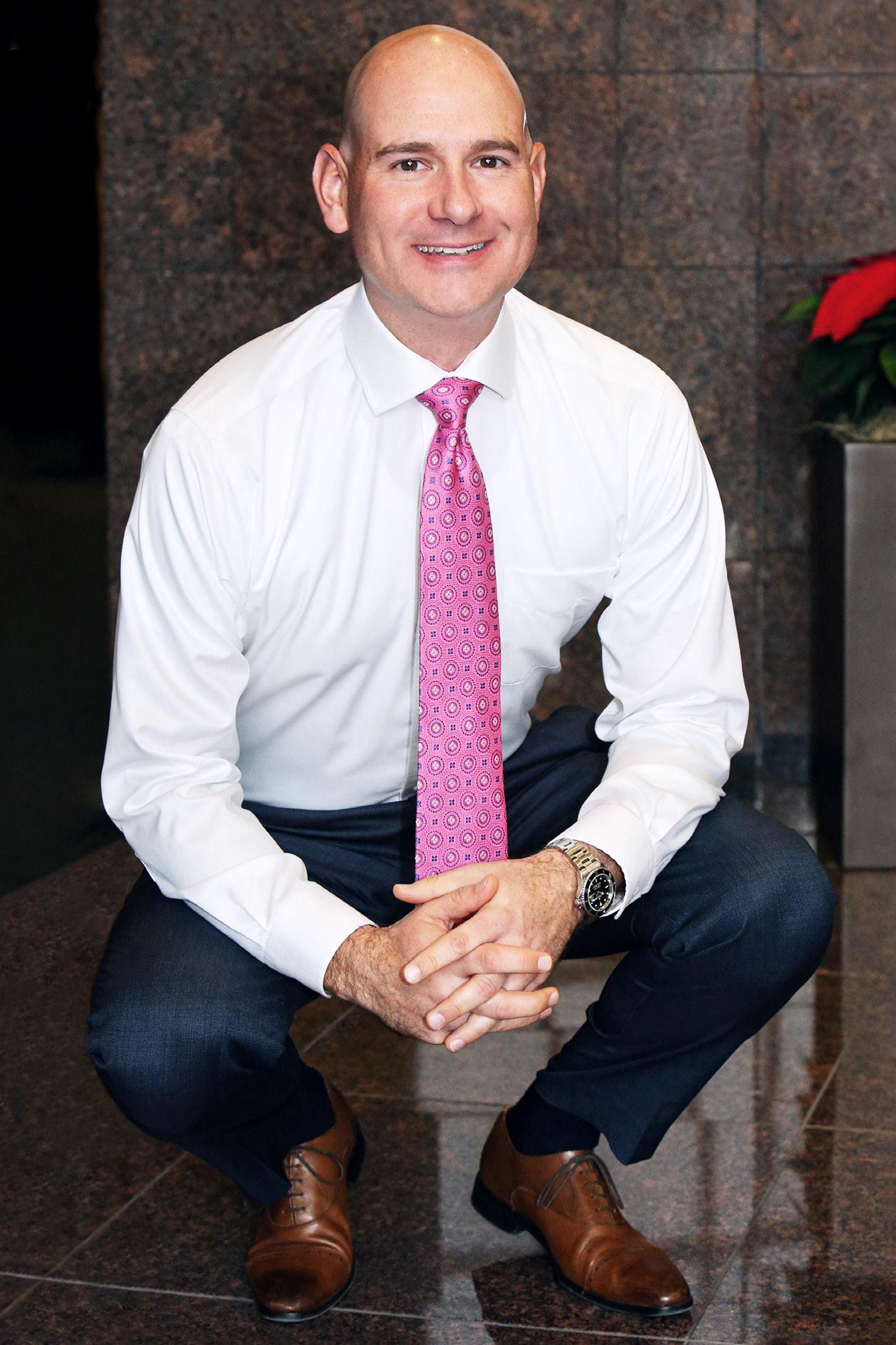
Not long after launching, the highly decentralized company found itself wobbly and stock plummeted. About fifteen years ago, Geffert began to combat issues of standardizing various practices, from valuation to litigation support, as well as getting the financial services division to use standard contract forms.
“The roll up was a bit fast and loose,” he says of the company after it committed to completing dozens of acquisitions each year. “Some of our changes were technical in terms of standardizing protective contract language that has become industry standard and some were art, such as branding our different services to the market.”
Eventually, CBIZ created structures to guide its development. After the company was stabilized, “we began to focus on our strategic vision and execution, and thus saw lots of growth opportunity,” Geffert says. Despite old-guard leaders in the industry questioning CBIZ’s new and innovative business model, he explains, the company now ranks as the country’s tenth largest accounting provider, with total revenue approaching $1 billion and its share price climbing to all-time highs.
Being part of an ever-growing company thrills Geffert. When he arrived, the corporate legal department consisted only of the general counsel, two paralegals, and an administrative assistant, giving Geffert the opportunity to advance his skill set from
environmental law and M&A to securities and corporate compliance. Over the past two decades, the department has grown and now also enjoys the cross-functional support of specialists in the field.
He is passionate about protecting CBIZ’s reputation as one of the “Best and
Brightest Places to Work.” Serving on the Great People, Great Places committee, Geffert encourages a people-centric environment and helps advance CBIZ’s flexible and understanding culture. “We want people to share opinions,” he says. “It’s not a place that you have to hesitate and wonder
We are proud to support John Geffert and CBIZ in their mission to provide exceptional professional business services to companies across the country. We congratulate John and CBIZ on developing and sustaining a culture of inclusion, purpose and excellence.
if you should. We treat everyone as a professional, and we look for solutions to help each other.”
Keeping this ideal culture a reality—not just a reputation—is key. Throughout the company’s hiring efforts, CBIZ aims to welcome diverse new staff and celebrate those who are already deeply ingrained into the business. “It does not matter who you hire if they are not actually heard and respected,” Geffert says, which feeds into his philosophy of using everyone’s unique experiences to unite as a team. He says he constantly seeks opportunities to share knowledge, both his own and others’.
Besides adhering to core values that focus on “doing the right thing” with a “dedication to clients’ success,” Geffert identifies another CBIZ strategy for success: “We out-national the locals and out-local the nationals.” Because of the company’s scope, when a client needs something, Geffert says, “We have someone somewhere with national expertise. We can answer nearly every question a small- to mid-sized company might have. But the delivery is local. It is your local accountant or broker, the one who is active in your community that you work with daily.”
As a key player in M&A, and therefore one of the first interactions key sellers have with CBIZ, Geffert takes on the responsibility of demonstrating the culture he’s so proud to help enforce. Understandably,

contracts and RFPs are very important, but ultimately, strengthening relationships is what leads to a stronger company.
“We negotiate like crazy to protect ourselves,” Geffert says, “all while trying to be reasonable and approachable in order to maintain relationships.” Though part of the corporate team, he says, “Everyone in the field: those are my clients.” He wants new clients to become a part of the family, to know that they will be important after the deal closes and they become a member of the CBIZ family. The result, Geffert says proudly, is that when people join the team, they like it.
CBIZ has established a national footprint and they will expand their play. They seek to be a company that responds to any issues small or mid-sized businesses might have. Geffert is excited about CBIZ’s key strategy of investing in high growth industries like niche advisory services and continuing to expand its human capital management business—that with sophisticated technology combines group health benefits and payroll into one seamless process with an entire suite of employee services—so CBIZ can better serve the needs and “grow deep roots with clients.”
At the core, Geffert says, it sounds too simple, but the experience of working with the CBIZ team, the idea that they are One CBIZ, comes down to a critical concept, easy to name and difficult to enact: respect.
“We want people to share opinions. It’s not a place where you have to hesitate and wonder if you should.”
Twenty-two years ago, Eric Cohen joined Terex as its senior vice president, secretary, and general counsel after serving as an outside counsel. Since then, the manufacturing company has gone from $700 million in revenue to as high as almost $10 billion with more than twenty thousand team members worldwide. After refocusing and divesting of some of its businesses over the past few years, today Terex is worth $4.5 billion with more than ten thousand employees worldwide.
Cohen began as the sole in-house attorney and expanded his legal department into a team of more than forty attorneys, paralegals, safety engineers, and compliance professionals. During his tenure, he’s helped oversee seventy mergers, acquisitions, and depositions. And in 2013, he spoke with Profile about his transition from outside counsel to in-house and how he helped fast-track the company’s growth.

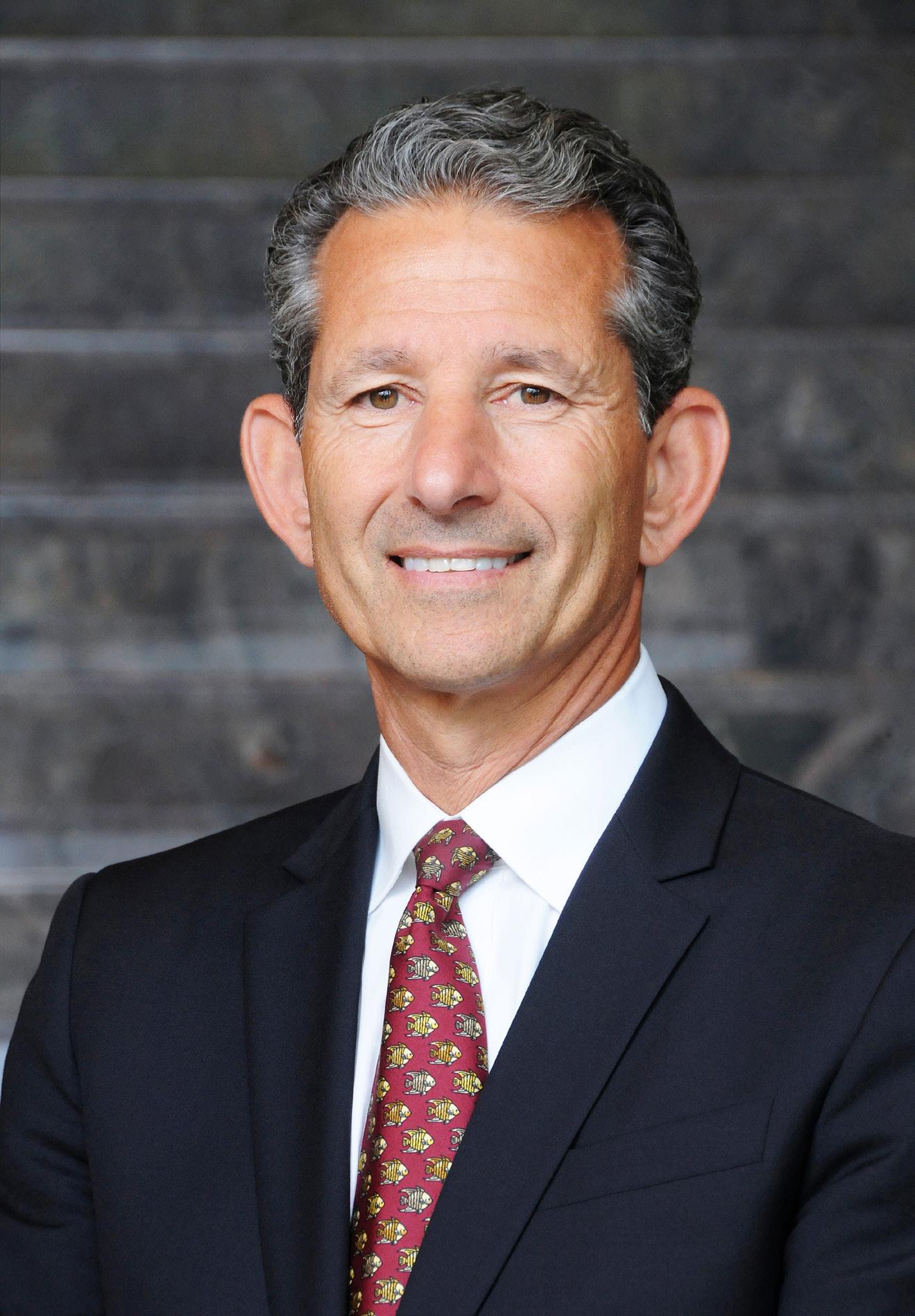
Just before his retirement from Terex at the end of 2019, Cohen spoke with Profile about his secrets to success.
Cohen believes courage and integrity are intertwined. “It often takes courage to do the right thing,” he explains. “You need to state your opinions and stand up for what you think is right. This applies not only to business deals but to how you treat others.”

Terex often bought companies that others were afraid to buy. “In many cases, we were the first buyer of the last resort,” he explains. “In those situations, we had to shed the typical risk-averse attorney attitude and find ways to support bold moves while protecting the company.”
There was the time Terex was involved in the risky takeover of a public company in Germany. “There were

lots of reasons we shouldn’t have done that deal, including that they were operating in the Middle East and Asia, as well as in shipping ports, which presented us with a lot of unknowns,” he recalls. “One board member was so concerned that he resigned over it. I had to characterize the risks and dig deep to find new channels of information—search firms and investment banks—to obtain serious, objective assessments of the business.
“We ended up closing the deal,” he continues, “which turned out to be a good move for us. It got us into new markets and expanded our line of products and services. And it helps prove the point that you sometimes need to take risks to succeed.”

On the integrity side, Cohen recounts a situation when a company they had a purchase agreement with didn’t understand some of the provisions. “We could’ve gotten millions in recovery, but that wouldn’t have been right because it wasn’t what had been intended,” he says. “So, we pointed out their misunderstanding
and allowed them to correct it, rather than trying to benefit from it.”
“Every question to a member of the legal team should receive a response the same day, even if it is to tell them you’re busy and can’t provide the information until tomorrow,” Cohen says. “People do not like to be ignored, and I do not want the department to be viewed as a black hole where matters languish.”
“Unlike a law firm, we do not earn our keep by billing hours,” he says. “We need to make sure our time is spent on the right things and to triage things that are not as important.”
When working with outside counsel, Cohen says you need to establish clear expectations. “Let them know how many hours you want them to spend on certain

“We need to make sure our time is spent on the right things and to triage things that are not as important.”




1. Have courage and integrity. Stand up for what is right.
2. Practice servant leadership.
3. Keep it simple and practical.
4. There is no substitute for hard work and responsiveness.
5. Be open to change and tackling new challenges.
6. Be a business partner— think strategically and focus on creating value.
7. Think about how what you do and say will be interpreted with 20/20 hindsight.
8. Anybody can sue anyone at any time for anything.
9. Nothing is over until it’s over, and then it’s still not over.


10. Emails are evil.


Ricci Tyrrell Johnson & Grey is a full service firm of trial lawyers dedicated to achieving results for its clients. Our firm is a powerful blending of experience, commitment and vision. Individually and together we have represented and partnered with our clients in trials and non-litigation matters on a regional and national basis for decades.
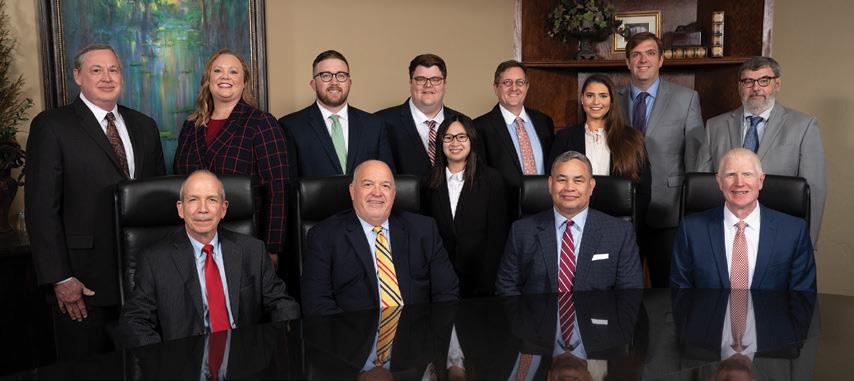

things. And before they start writing up lengthy memos, ask them to call and report their findings to you,” he explains. “That will often prevent a lot of wasted time.”

Cohen makes a point of telling everyone he works with to be careful how they use emails. “Their primary purpose is to convey facts and documents, not to editorialize,” he stresses. “Opinions can come back to
In what Cohen describes as “an overly enthusiastic moment,” an executive once wrote the following about software Terex was developing: “We can dominate the industry with this.” Those words became a problem later, when a competitor claimed they were attempting to “dominate the industry.” In fact, this was far from the reality, but the email was memorialized forever.
“Discovery will find those emails and they often don’t look so good in hindsight,” he explains. Simple phrases like “this concerns me” can later be construed as evidence of a problem and be used against the company, when, as Cohen explains, it might

“People do not like to be ignored, and I do not want the department to be viewed as a black hole where matters languish.”
& Brewer, P.C. is proud to recognize the accomplishments of Eric Cohen and Terex


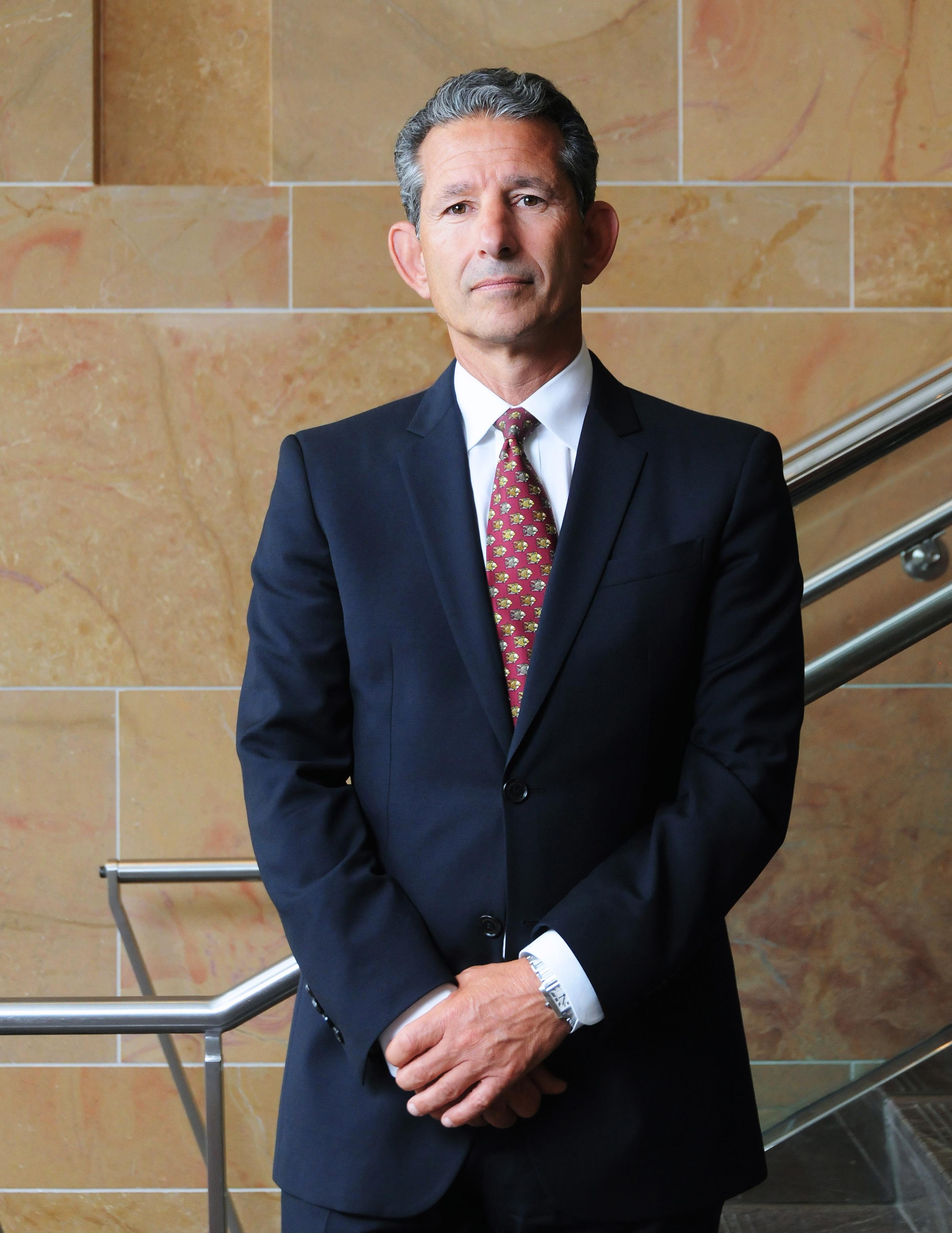
Thank you for 22 years of inspired leadership, playing a central role in building today’s Terex and keeping us strong and secure along the way. You have been instrumental in all aspects of the business, and you leave a lasting legacy of exemplary Legal and Compliance teams and a global team driven by the Terex Way values. Wishing you continued great success and happiness.
never have been an actual problem or may have been corrected later.
“People have to learn to use email responsibly and communicate more over the phone and in person,” he adds.









One of the ways Cohen gives back is by being on the board of Pro Bono Partnership, which offers free legal services to nonprofits in New York, New Jersey, and Connecticut.
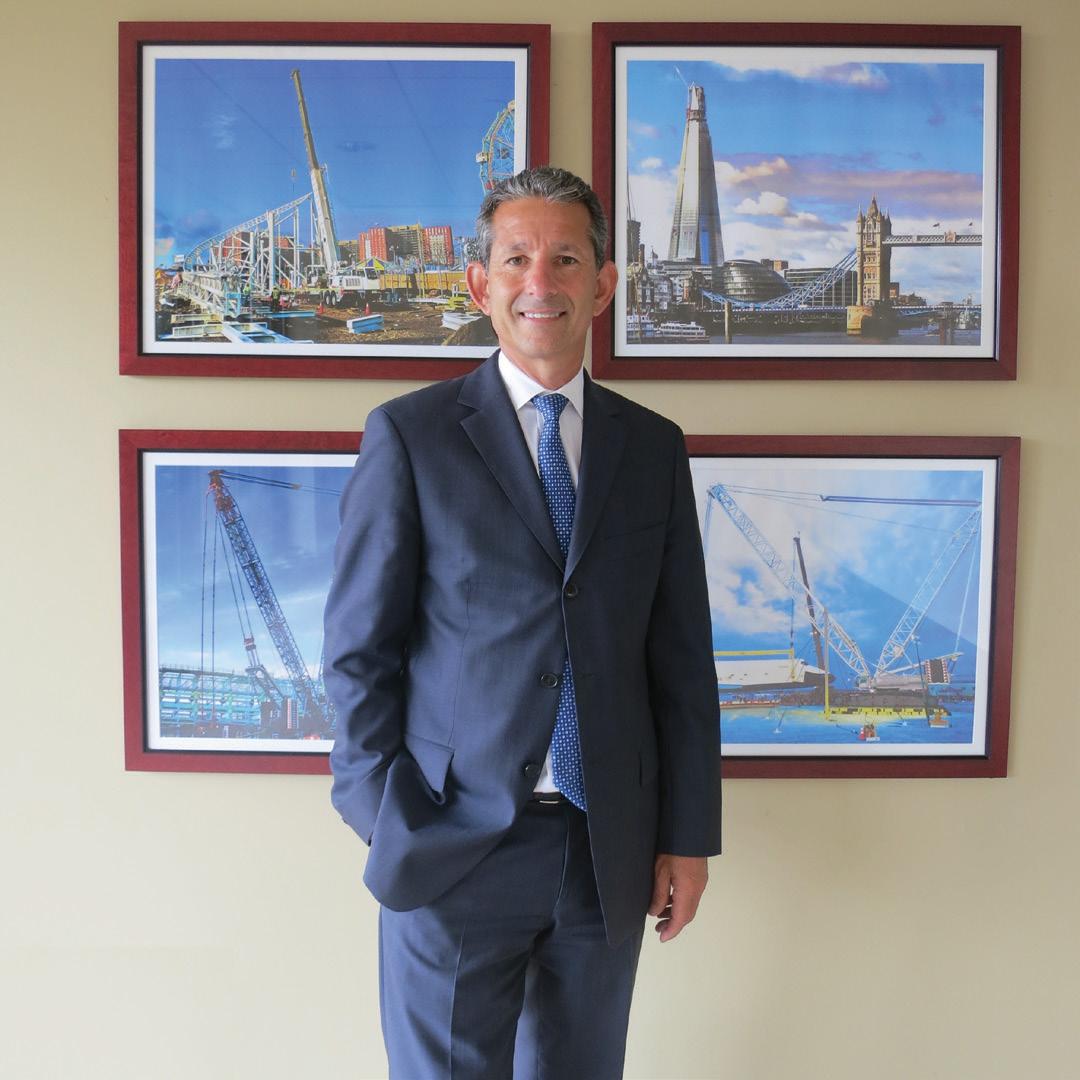













“I’ve been very fortunate in my career and been given lots of opportunities,” he says. “It’s extremely gratifying to be able to help others achieve their goals.”
Bryan Cave Leighton Paisner congratulates our former partner Eric Cohen for this well-deserved honor. Eric has a long, distinguished career as general counsel of Terex Corporation and has helped grow the global manufacturer over the past twenty-two years. We have been proud to partner with Eric and Terex and wish him well in his next chapter.

“It’s extremely gratifying to be able to help others achieve their goals.”
THE GLOBAL TEREX TEAM MEMBERS
Tara Long knows a thing or two about MassMutual.
Since starting at the company more than seventeen years ago as an SAP authorizations specialist, Long has touched on nearly every aspect of the business: financial risk reporting, IT controls and compliance, information risk and privacy management, and worksite voluntary benefits, to name a few.
Today, as head of Corporate and Institutional Solutions Technology, Long leverages her wide-ranging knowledge of the insurance giant to produce not only consistently excellent results but also a consistently excellent environment for everyone at the company.
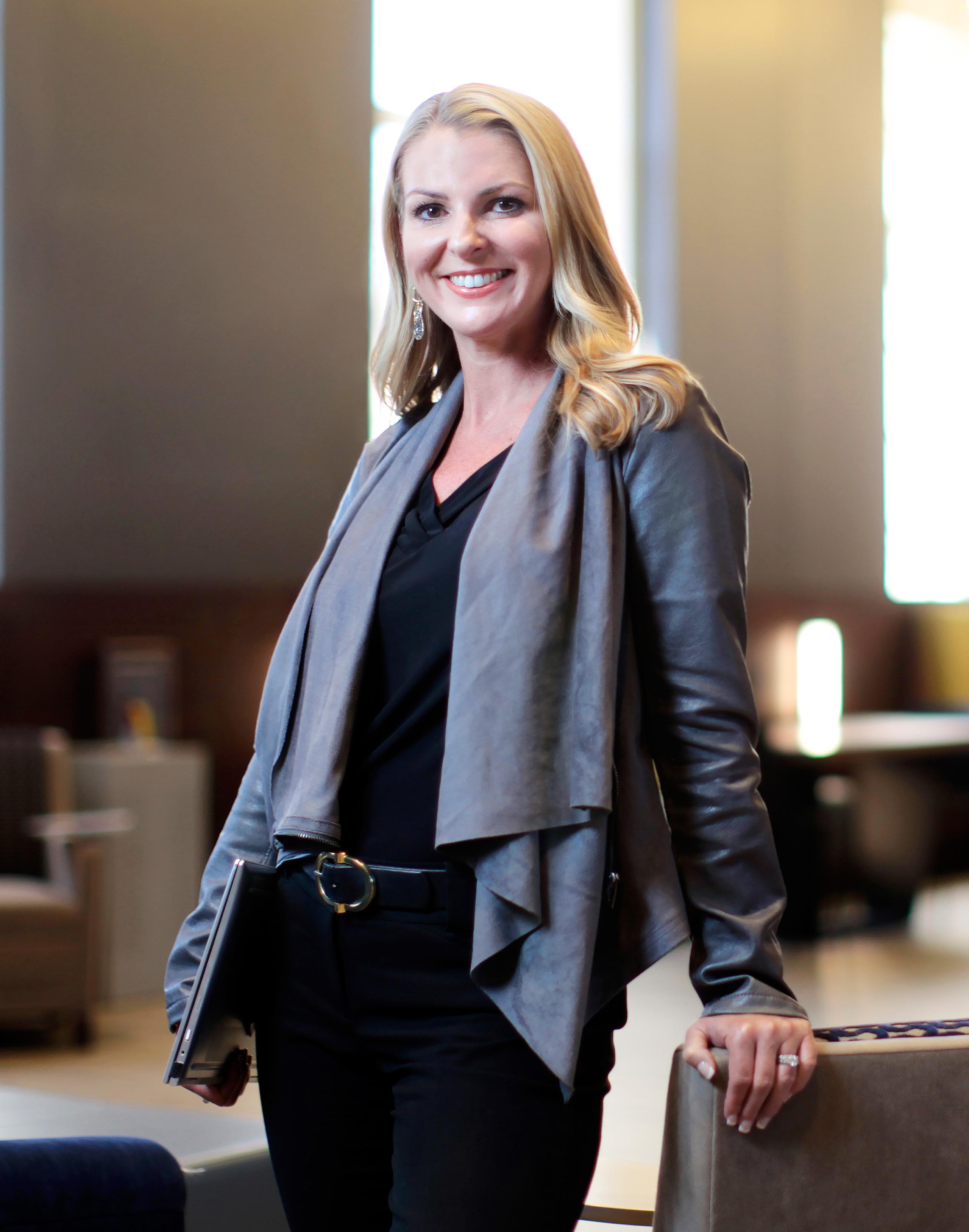 Tara Long
Head of Corporate & Institutional Solutions Technology
MassMutual
Michael
J. Fiedler
Tara Long
Head of Corporate & Institutional Solutions Technology
MassMutual
Michael
J. Fiedler
A psychology major at Mount Holyoke College, Long didn’t always plan on working in the IT space. But being open-minded to learning new things is a part of who she is, Long says, and the transition to function as an IT auditor at PricewaterhouseCoopers meant a whole new horizon of learning opportunities.
“It was an opportunity to learn about many different companies, not just IT, and auditing the various companies’ systems environments,” Long explains. “And then I realized that IT was something I truly enjoyed.”
But while Long’s early career was focused on IT audit, she quickly progressed into roles with a more diverse array of responsibilities. She began focusing on information security, and later expanded to leadership roles within risk management—but throughout it all, Long had a very specific goal in mind.
“I am inherently curious and wanted to learn more about the business,” she says. “I’ve had so many different experiences and taken on so many different roles, and that’s really helped me grow and broadened my skill set and leadership.”
That is why her current position is such a great fit, Long notes. It is fast moving, changing all the time, and focuses on the growth and development of the business. It draws upon her IT expertise and innovation to ensure that the right technologies and solutions are in place to support the business.
At MassMutual, Long continues to push herself to grow and learn. “I have always felt supported at MassMutual in my endeavors to try new things and learn new skills,” Long says. “And because the company is so large, there are many different avenues to broaden your skill set and expand your career.”
But there’s one thing, Long says, that’s even more important to her than the learning opportunities available at the company. “It’s the people,” Long says simply. “MassMutual is its people—whether it’s the people in leadership that I report to, my amazing business partners, or the people on my team, I always feel energized and excited to come to work here. I feel privileged to work with these people and with the most wonderful team.”
Tara Long is not by any means alone in her passion for diversity and inclusion work: the company as a whole has made D&I a strategic goal, Long notes, and has been recognized accordingly. In 2019, the company was not only honored by the Human Rights Campaign Foundation as a Best Place to Work for LGBTQ Equality but also included in the Diversity Best Practices Inclusion Index and Disability Equality Index.
“MassMutual is its people. . . . I feel privileged to work with these people and with the most wonderful team.”
TARA LONG

With over three decades of experience in managing the systems and workings of global enterprises, we can help navigate you towards opportunity with
AI-powered Core
Agile Digital at Scale
Always-on Learning
The journey to digital has so many nexts. Navigate your next with Infosys.
www.infosys.com
As a leader, Long prioritizes the autonomy, curiosity, innovation, and collaboration of her team to ensure that together they deliver on the high-level results promised by MassMutual’s purpose: to help people secure their future and protect the ones they love.
“The team, in my mind, is greater than the sum of its parts,” Long says. “I’m a firm believer in the idea that no one individual can consistently deliver excellent results while working alone.”
MassMutual’s Institutional Solutions business comprises a variety of solutions aimed at corporate and institutional financial and risk management needs, including institutional insurance, defined benefit pensions, pension risk transfer, investments for defined contribution plans, and funding agreements. And on the corporate side, Long’s technology team supports functions like HR, finance, investment management, law and compliance functions, among others.
Her team focuses on working to meet the organization’s current and future needs related to those areas. “We are in growth mode, so on the technology side we have to make sure we are meeting the demands
of the business—or even exceeding their expectations—in terms of technology delivery and service,” she explains. “But the company is more than 165 years old, so there are many legacy systems in place here: we have to think about how we can modernize these systems, how to create scale, become more digital, and how to automate and streamline.”
Long is incredibly proud of her team and the excellent results they have delivered for the business, she says. As a leader, she feels a responsibility to create a “fun, motivating, inclusive, diverse culture” to help support her team and drive consistent results.
“A person will always be more successful in anything they do when they are able to keep their passions at the forefront and focus on excellence in everything they do,” she points out.
Long also looks to boost creativity, positivity, and productivity through her work on diversity and inclusion (D&I) initiatives. She most recently took on the role of Vice Chair of the Women’s Leadership Business Resource Group (BRG) at MassMutual. “D&I is really critical to the success of the business,” Long
asserts. “But it’s not just diversity and inclusion from the traditional perspective—it’s about diversity of thought and perspectives and creating an inclusive environment where all of those voices can be heard and valued so that, at the end of the day, the most optimal outcomes can be achieved.”
And whether it’s D&I initiatives, company culture, Institutional Solutions, or corporate programs, both Long and MassMutual are in it for the long haul. “We think in terms of decades here, not just quarters,” Long emphasizes. “That’s one of the reasons why we are a leader within our industry.”
Andesa Services offers Software-as-a-Service technology, hosted in a secure, private. cloud-based environment to seven of the top thirteen life insurance and annuity carriers in the country. With eighty-plus product variations, any decision-maker or system user has access to unmatched technology and innovated services to effectively manage their policy and plan administration needs anytime, anywhere. With Andesa you will streamline workflows, reduce infrastructure costs, and test new markets effectively and efficiently. Utilizing the decades of experience and fully-integrated suite of life insurance and annuity services Andesa has to offer allows you to focus on your true business purpose.
“It’s about diversity of thought and perspectives and creating an inclusive environment where all of those voices can be heard and valued so that . . . the most optimal outcomes can be achieved.”
TARA LONG
 By ZAYVELLE WILLIAMSON
By ZAYVELLE WILLIAMSON
Matt King knows that there is a huge difference between being a leader and being a manager. And as vice president of global IT security and chief information security officer (CISO) at Belcan, King has learned how to be a true leader and resource for his team.
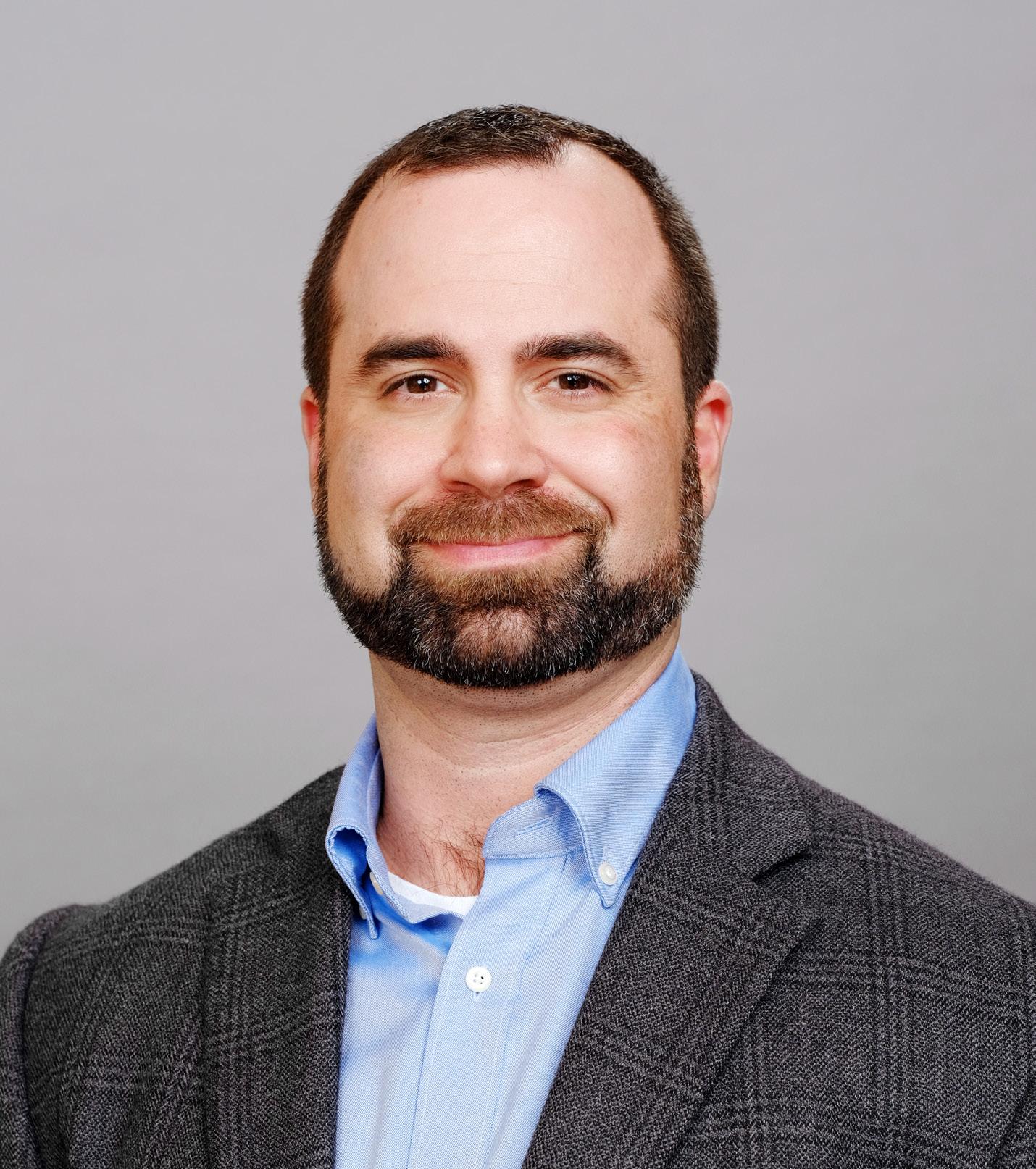
King didn’t go to college planning to enter the IT security field. The Northern Kentucky University alum originally wanted to pursue a career in aerospace engineering. “But in the summer between my freshman and sophomore year of college, I wanted to earn some extra money and a relative offered me a position in IT,” King recalls. “It inspired me so
much that I decided to change my focus to computer science.”
King started his career as an intern at Anthem Inc. and over the next decade he improved his knowledge of the field of IT and security at Anthem, eventually taking a role in IT security leadership.
Belcan—a global company known for the top-level IT, consulting, and engineering services that it provides to customers working in automotive, defense, aerospace, and industrial sectors—recruited King to serve as director of global IT security in January 2017. “When I started, I had one person on my staff,” King says with a laugh. Promoted to VP and CISO in 2018, King oversees the IT and cybersecurity operations for the entire
Matt King VP of Global IT Security and CISO BelcanMatt King’s passion for cybersecurity education and training extends far beyond his team at Belcan. Through a new program called Belcan Cyber Academy, King and his leader, Terry Williams, have partnered with local high schools to offer students four increasingly advanced courses on topics such as programming, cryptography, systems security, and ethical hacking.
“We are helping to educate students and get them ready for the next step in their education, whether that’s getting a certification in cybersecurity or finding an internship in the field,” King explains. “I’m curious to see how programs like this can affect the overall gap in cybersecurity.”
company—and has seen his staff grow to a total of ten people.
“I rely heavily on the expertise of each of my team members,” King says. “Each person should be able to share their ideas and opinions, no matter their title, so that they can contribute to the greater good of what we’re trying to achieve. Everyone has an equal voice!”
Essentially, King explains, he and his team try to achieve the highest possible level of security for all of Belcan’s data while working around the numerous, complex regulations surrounding data security, data protection, and privacy. “You have to be extremely fast and nimble to do that, especially when you’re
As team leader, King is on a constant lookout for new methods, tools, technologies, and educational opportunities that will help his team members save time and effort. And in his experience, education and the right tool sets are often the most effective—and costeffective—means of ensuring that your team knows how to provide efficient protection to the organization. “AI and automation tools, such as LastLine, that reduce the overall workload to allow your team to focus on the right things at the right time,” he explains, “in conjunction with training, are crucial to
“It’s always been very important to me to get my people training and education to ensure they can get the job done,” King says. “Cybersecurity is one of those areas where everything is constantly evolving, so you have to remain vigilant and learn about what to do next if
Education also serves as an excellent reward mechanism, King says. “If someone works really hard to accomplish their goals,
I’ll gladly give them additional training or help them get additional certifications—even if that means that they will eventually leave the company and do something different after getting that certification,” the CISO says. “I don’t want to deter anyone from taking the right opportunity for them. Although I prefer them to stay, sometimes I can’t offer that opportunity, and I enjoy growing people.”
But providing tools and training to help your team get things done isn’t the only thing a leader needs to worry about, King points out. A true leader also thinks about how things get done and whether they are truly enabling their staff to follow through on those expectations.
“It’s the idea of situational leadership,” King says. “Early on, I realized that I was setting unrealistic expectations for people and applying a leadership style that didn’t really match the guidance that they needed. That’s really taught me to provide the appropriate leadership to match the situation at hand.
“Let’s say you assign somebody to research a topic, and they’re a mathematician,” King continues. “You just say, ‘Hey, can you read through these materials?’ But even if they’re a fantastic mathematician, they might have no idea what your expectations are for the research, what the end result should be, or what they should be looking for.”
When your team is struggling, King knows that it’s up to you to change things for the better.
Lastline’s Network Detection and Response platform detects and contains sophisticated threats before they disrupt your business, on premises and in the cloud. We offer the industry’s most accurate detection of threats entering and operating within your network, unmatched visibility across the complete attack chain, and automated remediation.

“I don’t want to deter anyone from taking the right opportunity for them.”
MATT KING
Lastline’s Network Detection and Response platform delivers the visibility security professionals need to detect and contain sophisticated cyberthreats before they disrupt your business. We o er the industry’s most accurate detection of threats entering and operating within your network, both on premises and in the cloud.
It would be an understatement to say that Anna Porcaro knows how to be a good mentor. With three doctors and a dentist in her immediate family, Porcaro has been surrounded by smart, hardworking role models her entire life. “We’re a family of overachievers,” Porcaro says with a laugh.
But Porcaro knew early on that a medical career was not for her. Instead, she pursued a career in law. Throughout her thirty-year career, Porcaro built on the example of her hardworking family members and sought out mentors to find success as Ascena Retail Group’s vice president and chief counsel of contracts.
By BRIANNA WRIGHTShe began her legal career as a clerk for a family court judge. After garnering some experience in the courtroom at a law firm, Porcaro realized that litigation was not what she wanted to do with her career. During the

Anna Porcaro displays her professional flexibility through good mentorship and staying ahead of the curve at Ascena Retail Group
first year of her law firm tenure, Porcaro remembers the day that changed her career path forever.
“The managing partner of the firm I worked at called me in his office to meet with me,” Porcaro recalls, “and I’m thinking ‘Oh my gosh, he’s going to fire me!’” This couldn’t have been further from the truth: the partner called Porcaro to ask her to join the legal department for the firm’s major corporate client.
“My law firm had identified me as the junior associate who would best represent the firm,” Porcaro says. “This completely surprised me because I didn’t think that anybody had observed my work that closely.” This moment became the impetus for her work in-house.


Transitioning to the corporate world was one of the first great challenges of Porcaro’s career. However, it wouldn’t be the last time Porcaro needed to be adaptable. One of the hoops Porcaro had to jump through as in-house counsel was the lack of tenure at the first company she worked for. “We all worked there with the view that this was not going to be our long-term career path, and that we would eventually be looking for other jobs.”
While being bought out can be stressful for any professional, Porcaro used the opportunity to make connections that proved beneficial to her career further down the line. Porcaro also gained insight on making corporate connections as in-house counsel.
“If you have a good relationship with a senior lawyer as a junior lawyer, that person can help you get a job,” she advises. “However, if you’re looking for senior jobs as a senior attorney, you need to be networking with the businesspeople.” It is this business savvy that has allowed for Porcaro’s greatest career successes.
Another challenge Porcaro faced was her transition from the tech industry to her current position at Ascena Retail. Porcaro gained her footing as a self-described “tech geek” with her time as corporate counsel at Lucent Technologies, so when she began working at Ascena, she employed her knowledge of this field to their IT contracts. And because she loves shopping in retail, Porcaro knew it would be a fun role to take on.
“It’s been a very interesting experience in the retail world,” Porcaro explains, “but everybody who’s reading the business pages today is well aware that retail is going through some challenges.”
Alongside transitioning to different industries, Porcaro found herself very busy navigating the company’s challenges along with her own. It is safe to say that after six years at Ascena, Porcaro is adept at adaptability.
Porcaro has overcome plenty of obstacles in her career, and it has made her a stronger attorney. She was recognized for her skill when she won the 2017 Global Counsel of the Year Award in the General Commercial
“I’m not a very bossy person. I just believe in encouraging people and supporting my team.”

Drinker Biddle salutes Ascena Retail Group and Anna Porcaro, Vice President, Chief Counsel, Contracts.
We are pleased to count Anna among our valued clients. She has enjoyed a progression of roles and responsibilities at Ascena and is deservedly recognized in the pages of Profile Magazine and elsewhere as a gifted in-house counsel.
As a history major, Anna Porcaro is a very proud history buff, and she draws on her personal readings of historical nonfiction in her professional life, as well. One of her favorites is Team of Rivals by Doris Kearns Goodwin, which discusses the White House cabinet under Abraham Lincoln and their changing perceptions of the sixteenth president from negative to positive.
“I was inspired by how this group of rivals came together under Lincoln’s leadership because he focused on the individuals’ strengths,” she explains. “As they worked together they came to respect Lincoln and value his leadership. The mutual respect among the team was a main reason why Lincoln’s presidency was a success. I think that’s also what makes your professional team a success—focusing and respecting an individual’s strengths.”

category. “When I received the email that I was nominated, I wasn’t even sure if it was real,” Porcaro says jokingly. “I asked a colleague, ‘Can you validate whether or not somebody’s trying to spam me?’” Being recognized for her hard work in her career was very satisfying, but earning the respect of peers and adding value to an organization is how she truly measures success.

Her combination of skills sets her apart from everyone that Jeff Eichen has worked with during his career. “Navigating the waters of a large organization is not easy,” says Eichen, who is a partner at Drinker Biddle & Reath. “We all have competing demands for our time and attention. Anna has a sound moral compass and respect for others, which shows in all her professional dealings. I’m honored to be considered as not just a colleague but also a friend.”
During her thirty-plus-year in-house career, Porcaro has acquired a wealth of knowledge. As a leader, she has adopted styles from her mentors (such as the family court judge’s no-nonsense approach) alongside developing her own attitude toward leadership. “I’m not a very bossy person,” Porcaro explains. “I just believe in encouraging people and supporting my team.”
Porcaro finds herself most often employing a flexible style of mentorship with her colleagues. It’s this method that Porcaro believes adds the most value to her team.
“I am involved in their work when they need me, and if they want to keep me out of it, that's fine,” Porcaro says. “I want people to know that they can come to me when they are dealing with a certain challenge, and that I always have their back.”
Retired Mark Shale CEO Scott Baskin draws on his decades of executive experience to help small businesses make their mark
By MEGAN BUNGEROTH Portraits by GILLIAN FRYIt would never occur to Scott Baskin, even on the other side of a thirty-five-year career as an executive, to step away from the business world. While he’s certainly earned the right to take it easy after serving for more than three decades in leadership roles for menswear retailer Mark Shale—a family company founded by his grandfather— Baskin spends much of his time working with other small business owners in the hope that they can glean some of his hard-won wisdom and find success in a challenging market.
“At this point in my life, with my gray hair, I love all kinds of different businesses, and mentoring is one way that keeps
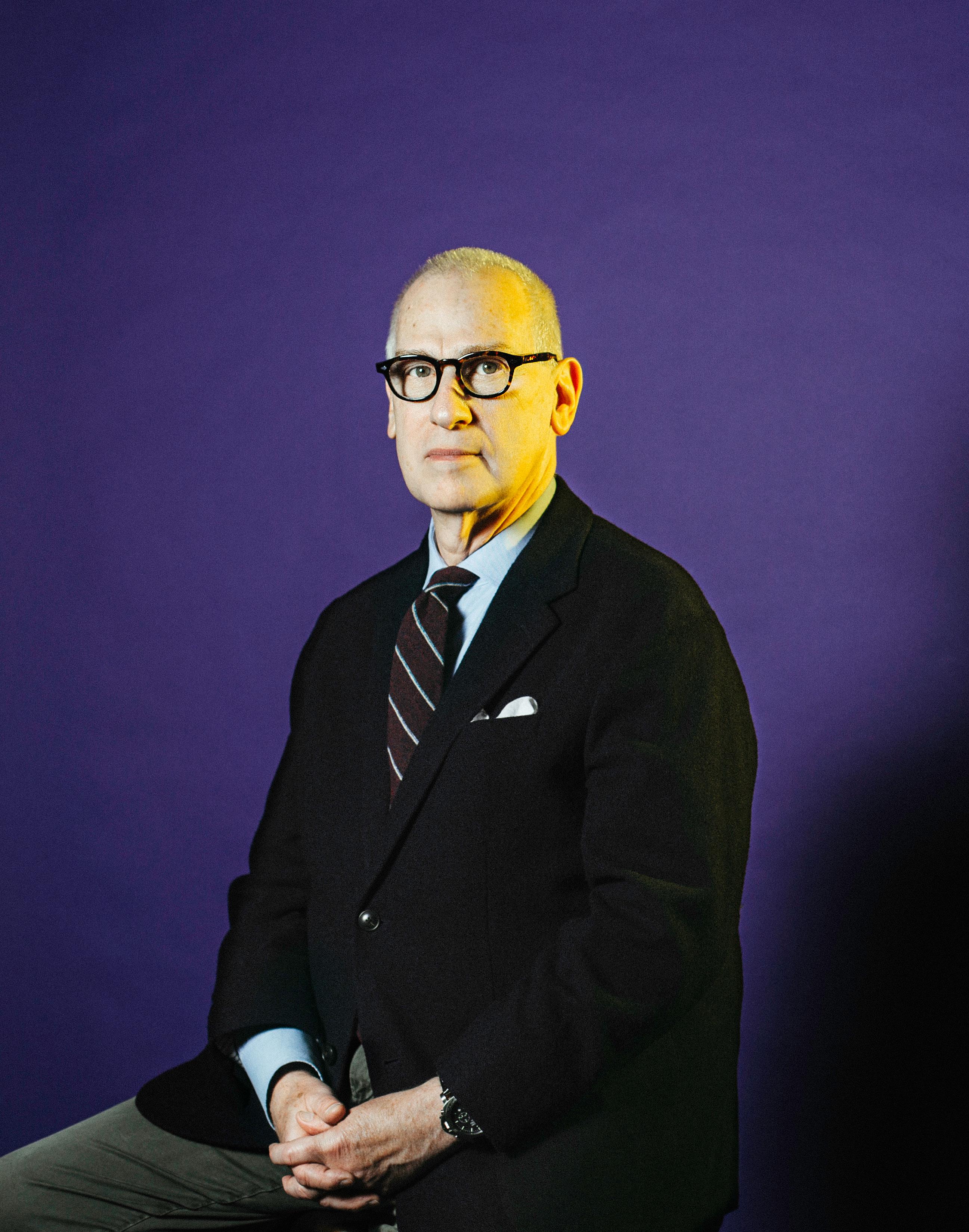 Scott Baskin Retired CEO Mark Shale
Scott Baskin Retired CEO Mark Shale
me involved in learning about different businesses,” Baskin says. “It's intellectually stimulating. One of the most enjoyable parts for me is working with a business that is very different from mine, because in lots of ways, I think I provide better value—you ask more questions and dig deeper when you aren’t familiar with the business.”
It’s that genuine curiosity, he says, paired with a deep understanding of how small businesses work generally, that can be the most helpful to entrepreneurs.
Baskin began his career as an attorney, first working for a stint at the US Attorney’s office in Chicago, where he was involved in “a couple of fascinating mob prosecutions,” he says with a laugh. Afterward, he spent almost four years on the Capitol Hill staff of US Representative Abner Mikva of Illinois and working as a legislative assistant on the House Ways and Means Committee. Soon, though, the pull of the family business brought him to Mark Shale, where he spent the rest of his career.
“It's the kind of business that mixes the creative with the analytic and all kinds of things, which is fun,” Baskin says. “Every day had a new challenge, which I liked a lot.”
Now that he’s retired, Baskin devotes his time to mentorship and board service, but he emphasizes that he didn’t suddenly decide to start advising other entrepreneurs after he retired—it grew organically as others came to him for advice, and it developed because he has always been open to those conversations and relationships.
“It started with a friend who had a business problem and said, ‘Do you have ten minutes? Can I share a problem?’ Over the years, there have been a lot of friends who knew I was in business and would call and say, ‘Hey, I have a friend who has this business. He’s got an issue. Could you talk to him?’” Baskin says. “And that led to, depending on the nature of the problem and the needs of the business, sometimes a longer-term relationship, sometimes just a cup of coffee. You just don't know.”
Over the past twelve years, Baskin has joined more formal mentorship matching programs: he’s part of the Young Presidents Organization (YPO), which has a formal mentorship program through EO, the Entrepre-
neurs’ Organization. He ran the program for three years as chair, matching people with the right mentors, recruiting mentors and mentees to join, and running the programming. He also sits on the board of the Small Business Advocacy Council, a nonpartisan, nonprofit organization that advocates for small-business interests in the political arena. He currently serves as the unpaid CEO.
“We have members that go from the far right to the far left of the political spectrum, but we all get together and focus on problems and how to solve them,” Baskin says. “When you do that, the partisan stuff disappears, which is fascinating.”
Membership in these types of organizations can help both those looking for

“At this point in my life, with my gray hair, I love all kinds of different businesses, and mentoring is one way that keeps me involved in learning about different businesses.”
SCOTT BASKIN
guidance and those hoping to help fellow small-business owners, but Baskin says that no matter how you find a mentor or mentee, the most important first step is to listen. He advises mentors to begin by asking a lot of questions about a person’s particular business and its challenges.
“The other part is trying to get an understanding of their financials,” Baskin says. “Financial reports are less like a report card and more to be used as a road map to try to set goals and give direction to the business.”
Small business owners and executives are often so focused on the day-to-day challenges of a business—and Baskin counts himself among those who have made this mistake—that they don’t take the time to sit down and look at their financials.
“If you’re the owner, you’re in the trees. You don’t see the forest, and you don’t pay a whole lot of attention to the financials, the business, because you’re just busy putting out fires and you’re busy doing the urgent, not the important,” Baskin says. “So a big help is having someone, a board member or sometimes just an advisor from the outside, who sits down and says, ‘Let’s spend fifteen minutes going over last month’s financials.’ Everything there is a question. ‘Why were sales good? Why were sales bad? Why was this expense high? Why was this expense low?’”
Asking those questions enables the entrepreneur to take a wider view of their business and talk through some of the high-level problem solving and planning that’s crucial for longevity and profitability.
Of course, asking the right questions at the right time is a skill that Baskin has cultivated over many years of gaining insights into how different businesses succeed—as well as how they stumble. “I tell all the people I mentor: there are few mistakes I haven't made in business, and I want someone to reap the benefits of these mistakes.”
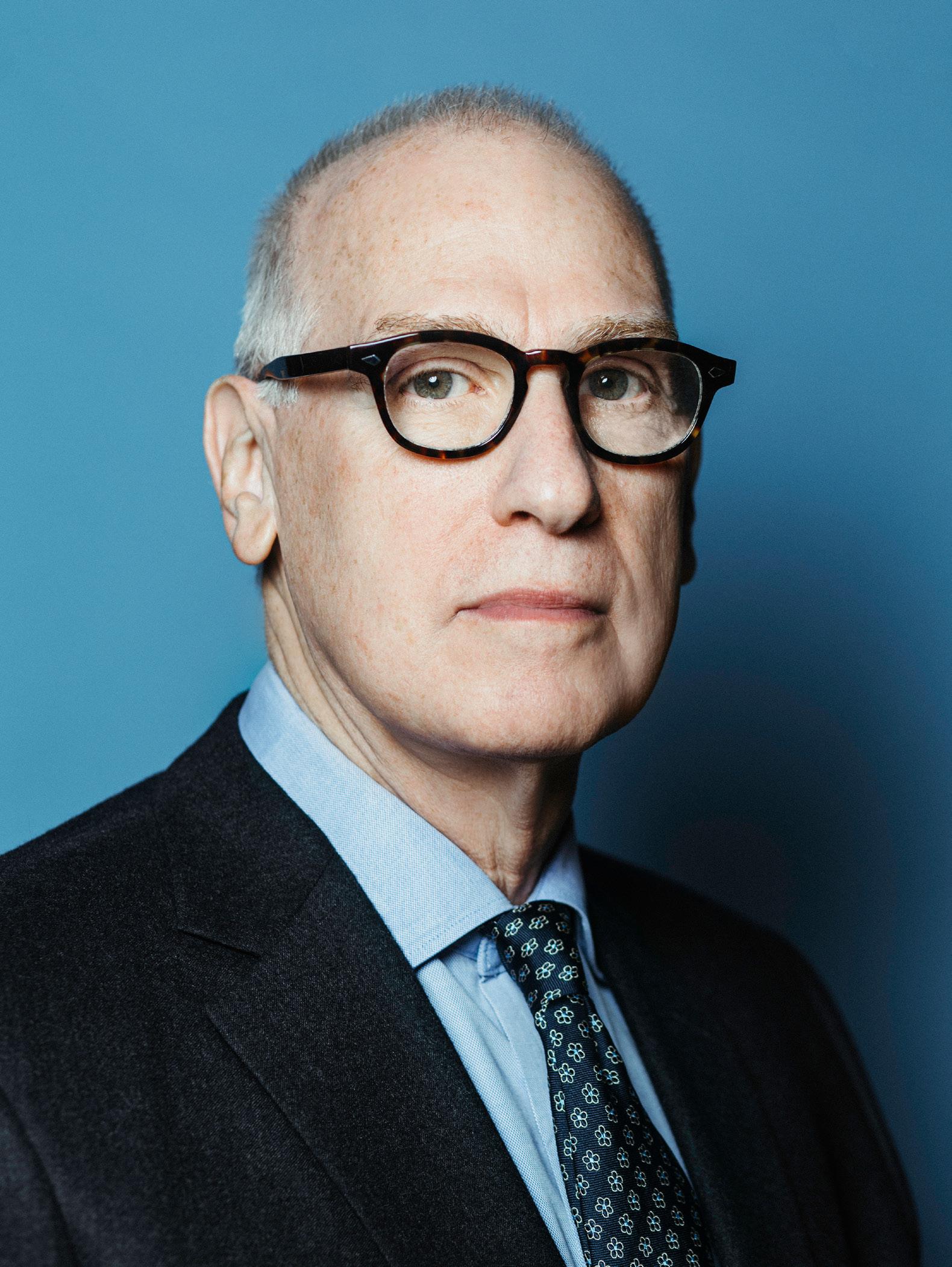
“I tell all the people I mentor: there are few mistakes I haven’t made in business, and I want someone to reap the benefits of these mistakes.”
SCOTT BASKIN
You could say Sally Shanks was destined from an early age for her job as chief accounting officer at WillScot Corp. Her parents instilled her with work ethic and an “always persevere” nature. “They were equally passionate about their work and their family,” Shanks explains. “The apple does not fall far from the tree.”
Shanks spent summers with her grandparents, who were dedicated to ensuring she had a well-rounded education. Her grandmother would teach her about the arts and music while her grandfather, a lifelong banker, taught her how to read the Wall Street Journal. “We would track five stocks
for the summer and calculate returns on the stocks,” Shanks says.
With a passion for finance, she continued on the same path when she enrolled at Providence College intending to major in finance. At the accounting table during enrollment, “they told me finance was for the students that couldn’t make it in accounting,” Shanks recalls. “I laughed and took on the challenge. Turns out, it worked well for me.”
In 2017, Shanks found more exciting challenges at WillScot, the leading provider of mobile offices, portable storage containers, modular classrooms, and other temporary space solutions across industries. The Marylandbased company’s leadership had made the decision to go public.
“As WillScot was evaluating their transformation from a subsidiary of a multinational parent company to an independent company, they began looking for two critical roles to lead the transformation,” Shanks explains. One of those roles was chief accounting officer, which she currently holds. “I started at WillScot two months before our go-public transaction was completed. At that point, there wasn’t much time for preparation and readiness planning. We had to transform on the go and adapt as needed.”
The transaction presented Shanks and her team with a number of tasks: unwinding from their parent company; new debt and capital structures; putting together centralized corporate teams for treasury, tax, and account- Dean Ray
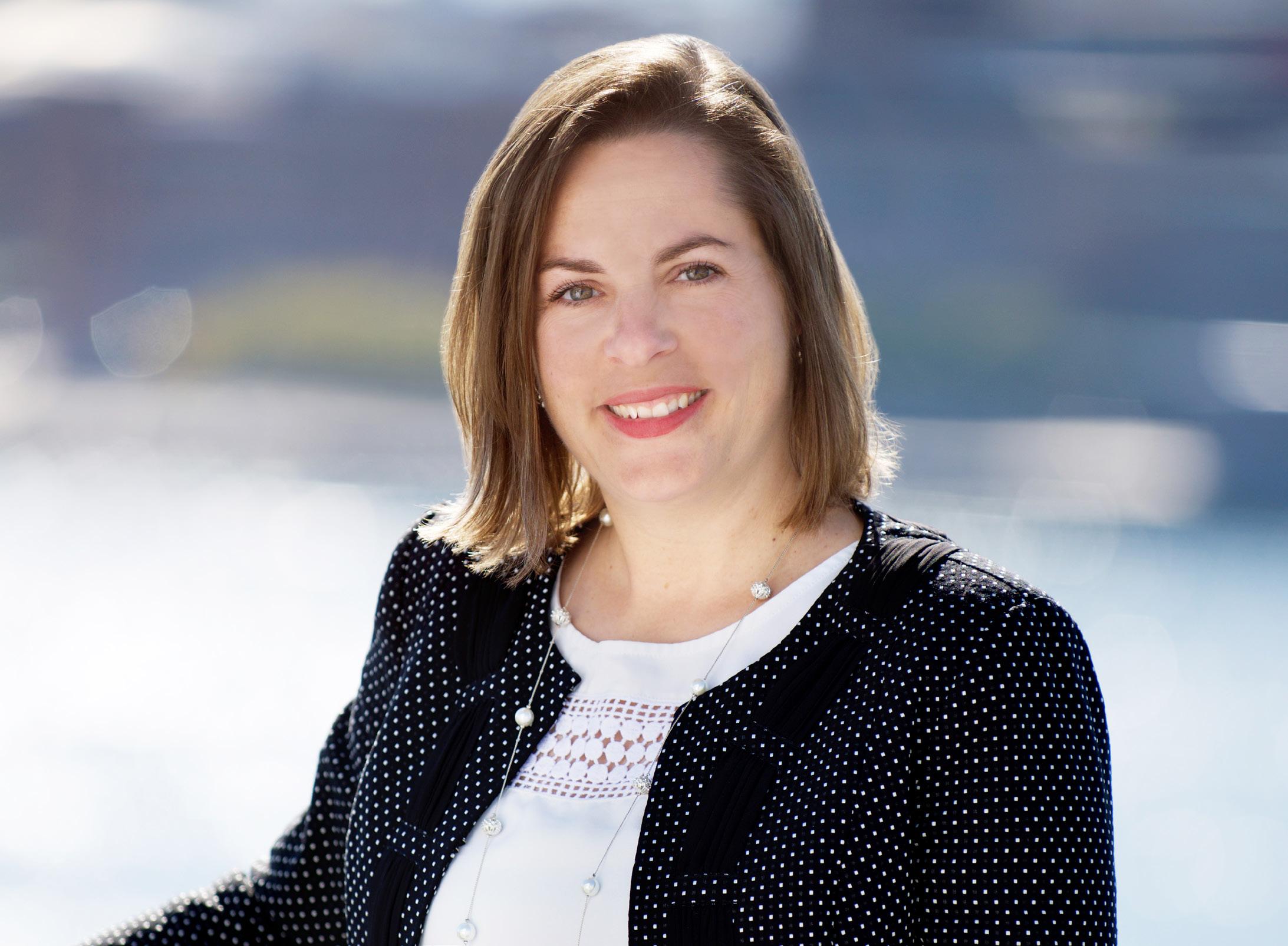
When she’s not keeping track of the numbers at WillScot, Sally Shanks enjoys running, camping, and family activities. “Outside of work, my true passion is my family,” she says. “My husband, Matt, and our two children are my source of strength and support as I balance my career with my family life.”
In this instance, it is Sally Shanks.
ing purposes; and adding flex resources to assist in the acute time period.
That’s a lot of heavy lifting, but Shanks, who previously worked as corporate controller at performance marketing agency Merkle, was well prepared for the assignment. “I’ve lived in rapid-growth companies for most of my career,” she says. “I thrive in these environments and enjoy the depth and breadth of opportunities that oftentimes will come from the chaos of growth and transformation.”
The pace hasn’t slowed much since then. As part of the 2017 going public transaction, WillScot stated its intentions for rapid growth through acquisition. The company has closed and integrated three acquisitions, including doubling its size with the 2018 acquisition of Modular Space Holdings Inc.—or ModSpace. The company network now boasts 120 locations across the US and Canada, and the company fleet includes 150,000 modular space and portable storage units.
“WillScot is committed as an organization to the full integration of its acquisitions,” Shanks says. “This provides a tremendous opportunity for my teams to engage in the integration process, develop best practices by working side by side with acquired teams during the transition, and develop skills outside of their day-to-day and month-to-month roles,” she explains. “Once the transaction is closed, we’re generally the first ones on the
ground engaging with the acquired company to dig in around critical financial visibility and compliance initiatives, such as financial statement visibility, controls, tax, and treasury operations.”
With WillScot now a public company, the next challenge for Shanks and her team is meeting the standards of the Sarbanes-Oxley Act (SOX), the 2002 federal law that established sweeping auditing and financial regulations for public companies. The team must balance the support of the organization’s growth goals with compliance initiatives.
“This is our first year for SOX controls audit, and we’re in full swing to ensure that we’re compliant and also support the ongoing requirements into 2020 and beyond,” she says. “Preparing for this big milestone has been a major initiative for the company over the last two years. We’re excited about the initial finish line at the end of 2019, and we’re ready to normalize these controls processes into 2020.”
Shanks is quick to credit her team with helping her tackle the new tests she has faced at WillScot. “My leadership team and all of the supporting team members have a tremendous dedication to their work and the company,” she says. “It’s a great team— filled with passion and perseverance that has carried us through the last two years of heavy transformation.”
Throughout her career, Sally has demonstrated leadership, integrity and a commitment to excellence. Sally, your colleagues at PwC congratulate you on being selected to be featured in Profile Magazine for continually demonstrating these qualities and for all of your accomplishments.
We wish you continued success in your career.
www.pwc.com
A common thread through much of Jamila Taylor’s life has been her ability to create and seize great opportunities. It seems appropriate, then, that she is tasked with building and improving the HR operations in her new position at Guidehouse, a 2018 carve-out of the public sector from PricewaterhouseCoopers (PwC) and, with the acquisition of Navigant, an innovative global “next generation” consulting firm that focuses on national and global “front-page” matters.
Taylor joined Guidehouse in 2019 as the managing director and head of human resource operations. But her route to the company was somewhat circuitous. With several offers in hand, she made the decision to join Guidehouse because of the leadership, cul-
ture, and diverse and complex scope of work in a role created specifically for her.
Taylor’s knack for forging her own path dates back to her time in college at Michigan State University. There, the Illinois native custom-designed a well-integrated, multifaceted degree in interdisciplinary studies that aligned with her personal and career goals. She knew from experiences in high school that she wanted to go into the world of business—her father worked in HR for decades at General Mills, and that’s also where she had a high school internship working with a strong female HR professional whom she came to admire and emulate—but an accounting class at Michigan State proved quite challenging.
When aptitude tests confirmed her propensity for business, the career counselor encouraged her to shift gears and craft a dif-
ferent path by weaving together economics, psychology, and languages into her own degree program.
After earning both her bachelor’s and master’s degrees from Michigan State, she took an HR position with Eaton Corp. Not long after joining, however, her father was diagnosed with Parkinson’s disease. Taylor quit her job, moved to Arizona to support and care for her parents, and joined an M&A team for a small fire protection and emergency medical services company, gaining invaluable M&A experience early in her career.
Taylor then secured a coveted leadership role at General Electric, where she worked across three different divisions—GE Supply, GE Transportation, and GE Plastics—for about a decade. She then transitioned to Saudi Arabian Basic Industries Corporation
Guidehouse’s Jamila Taylor found the right fit at the consulting firm and leverages her expertise to develop an HR operations team that accelerates the business

as a result of the GE Plastics divestiture. Thereafter, she moved to positions with Harris Healthcare Solutions and CACI, an IT company, where she successfully led the company through the largest HR transformation project in its history. In 2019, she joined Guidehouse and was named partner and lead of the newly Enterprise Shared Services function later that same year.

Guidehouse appealed to her because the role provided her the opportunity to leverage and apply her diverse background and experiences in a “build” environment. “I like to build and fix, solve problems, transform, and continuously advance the HR function,” she says. “From my first job interview to this day, one of the deciding factors for me has always been culture fit. Fit and the ability to bring your whole, authentic self to work is paramount for me.
“Guidehouse is a place where you can be true to yourself and feel appreciated and valued for your contributions and impact,” she adds.
Taylor worked with the new chief human resources officer to define an environmental vision that inspires employees to achieve their best every day.
“The organization has and continues to experience unprecedented change, and the HR operations team is on the forefront of this transformation, focused not only on basic HR capabilities that support the business strategy but forward-thinking capabilities that enable the business,” Taylor explains.
When the business carved out from PwC in May 2018, the team was tasked to stand up basic HR services and capabilities within forty-five days. “The team accomplished this with grace and most of all a lot of grit,” she
says. “The challenge for me was to improve these HR services and further enhance, standardize, scale, optimize, and align to Guidehouse’s business strategy.”
In just eighteen months, Guidehouse established itself as a stand-alone operating entity and implemented new HR systems, business processes, and policies/procedures.
During this time, the business announced its intent to acquire Navigant. As a result, the team quickly redirected their efforts toward ensuring a successful integration following the deal close in October 2019. Taylor and others leveraged the foundational work accomplished and continued to seize opportunities that address the challenges of the new organization. “A collaborative spirit is key to making the integration work,” she says.
Along with collaboration, Taylor embodies a direct but empathetic leadership style. It’s also important for her to be involved and understand the projects her team works on. “I strive to create a positive environment where my team believes they can succeed and that we’re in it together,” she explains. “If one of us has a misstep, we all do. I never ask them to do anything that I’m not willing to do. That breeds trust, dedication, and loyalty.”
Looking to the future at Guidehouse, Taylor highlights her determination and focus with a demanding list of initiatives: transform HRIS into a platform of engagement that is supported by management but driven by employees, redesign the total rewards model to offer value-based options, create operational efficiencies through payroll automation, design a talent acquisition strategy that addresses the dynamic talent landscape, and analyze business data through the lens of both a data scientist and the lens of a business leader.
“It’s a lot to deliver,” she acknowledges, “but the team is up for the challenge.”
Adaptalytics is proud to support Guidehouse and our other clients in assisting them achieve their HR analytics goals. Our data artisans turn data insights into actions for the human resources community by rapidly providing powerful and valuable decision tools in the areas of HRIS, people analytics, and compensation. adaptalytics.com
Eric Eissenstat spent twenty-seven years representing Fortune 10–level clients all over the country. He first- or second-chaired hundreds of cases and tried more than fifty cases to verdict focusing on antitrust, bank and securities fraud, D&O liability, and business torts, amid an exhaustive list of others. Eissenstat’s trial accomplishments include a $30 million punitive damage jury verdict on a tortious interference claim, setting a new tort standard, and a $75 million fraud judgment. On the defense side, examples include reversal of a $17 million verdict making new law in Oklahoma and a defense verdict in a $90 million fraud case.
Eissenstat was the trial-seasoned litigator every law student with aspirations of courtroom action dreams of being. And then he decided to go in-house.
“I was just always curious what it might be like to have one client, to be on the same team and really get

to know the company from the inside,” Eissenstat says of joining Continental Resources, one of his former clients and beneficiary of the $30 million punitive damages verdict.
Three years after the company went public, CEO Harold Hamm offered the lawyer the chief legal officer role out of the blue, Eissenstat says.
“When was I going to get another opportunity like this?” the lawyer asks. “I was wondering if God was pushing me in this direction, and after talking with my wife, we decided we thought He was.”
Despite a best-in-class litigation record, Eissenstat said there were still a great many lessons to learn when it came to actually leading an in-house team. “I’ve been fortunate Continental is big on leadership
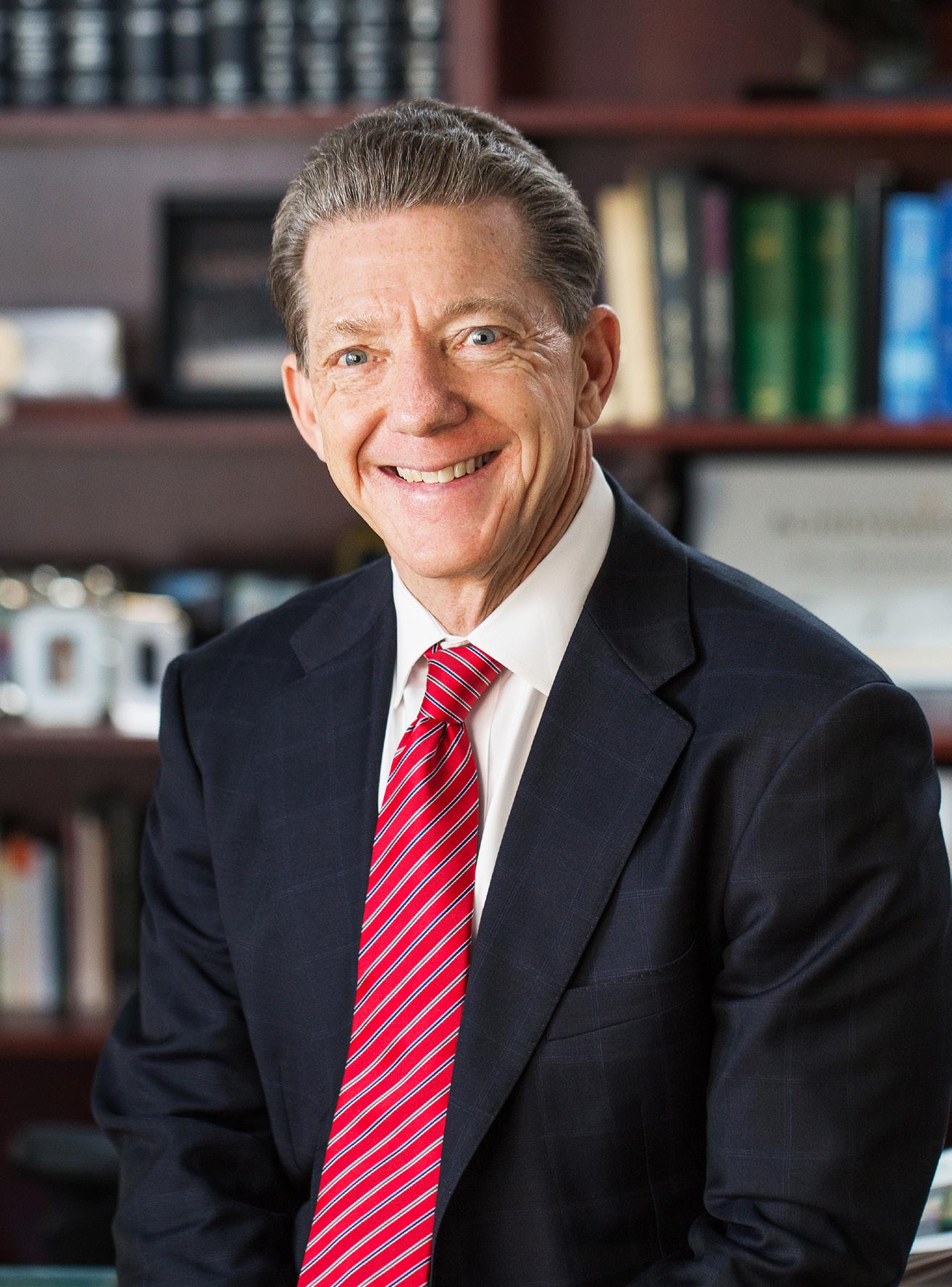
 Eric Eissenstat SVP, General Counsel, Chief Risk Officer, and Secretary Continental Resources
Eric Eissenstat SVP, General Counsel, Chief Risk Officer, and Secretary Continental Resources
development, investing in its people, and grace,” Eissenstat says.
While engaging in a number of internal and external leadership training opportunities, the GC focused on getting his head around the idea of serving one client with a multitude of perspectives and needs. “We embrace the idea that every person is our client and important. This has allowed us to develop relationships with everyone—from entry level to CEO,” Eissenstat noted. “I’m a firm believer in servant leadership and integrity; I’ve tried to bring a value-centric approach to this role.”
While it might be easier to get the litigator out of the courtroom, it was a little tougher to get the courtroom out of the litigator. “My wife often reminds me, and I’ve learned, that I can’t cross-examine people all of the time,” the GC says with a laugh. “I have high expectations of myself, and sometimes you have to approach things differently with your team. Fortunately, I am blessed to work with some of the best lawyers I’ve ever worked with here, and our team is second to none.”
Part of what makes the legal team at Continental Resources so special, the GC says, is that while the team is incredibly lean for a company of Continental’s size, it is able to handle a considerable amount of work in-house.
“We are very active in managing our litigation,” Eissenstat says. “We are also knee deep in all major transactions and lead the risk, compliance, and governance functions. Our financial metrics are truly top-tier by any measure.”

The team’s efforts are reflected in high client satisfaction. A client survey of SVPs, executive team members, managers, and other relevant stakeholders rated the team’s performance, service, and results as “excellent” and said the team “frequently achieves” its vision and mission “to provide world-class legal services in a timely, cost-sensitive, and innovative manner.” “We try to figure out how to resolve problems and not just throw balls and strikes,” Eissenstat explains. “As a strategic department, we find solutions, not just options.”
Because Eissenstat came from a litigation background, his expertise is still a vital part of his overall leadership over the past nine years.











“We win most of our litigation, so that helps,” Eissenstat says in a way that seems like an afterthought, an assumption of a high-performing legal team. But when adding examples such as “analysts stating Continental should be teaching other companies how to do related-party transactions due to best-in-class governance, it says a lot about how terrific our team is.”





“I think they say that service is the rent you pay for the price of being on this earth,” Eissenstat says. “I’m a big believer in trying to help serve others.”
The GC has always been drawn to issues of restorative justice, and his résumé of giving back to both the legal community as
We congratulate Eric Eissenstat on his recognition in Profile. BakerHostetler is proud to support Eric and Continental Resources, one of America’s top independent oil producers and a leader in energy technology.

McAfee & Taft salutes Eric Eissenstat and all our friends at Continental Resources, America’s Oil Champion. We are honored to be part of your team.
Since our founding in 1952, McAfee & Taft has been the go-to law firm for successful businesses seeking high-quality service, superior value, and innovative legal solutions.



well as those in need is, he says, just a reflection of his faith. Early in his career, Eissenstat served in leadership positions with the Oklahoma and American Bar Associations. Thereafter, he has focused on giving back to his community.
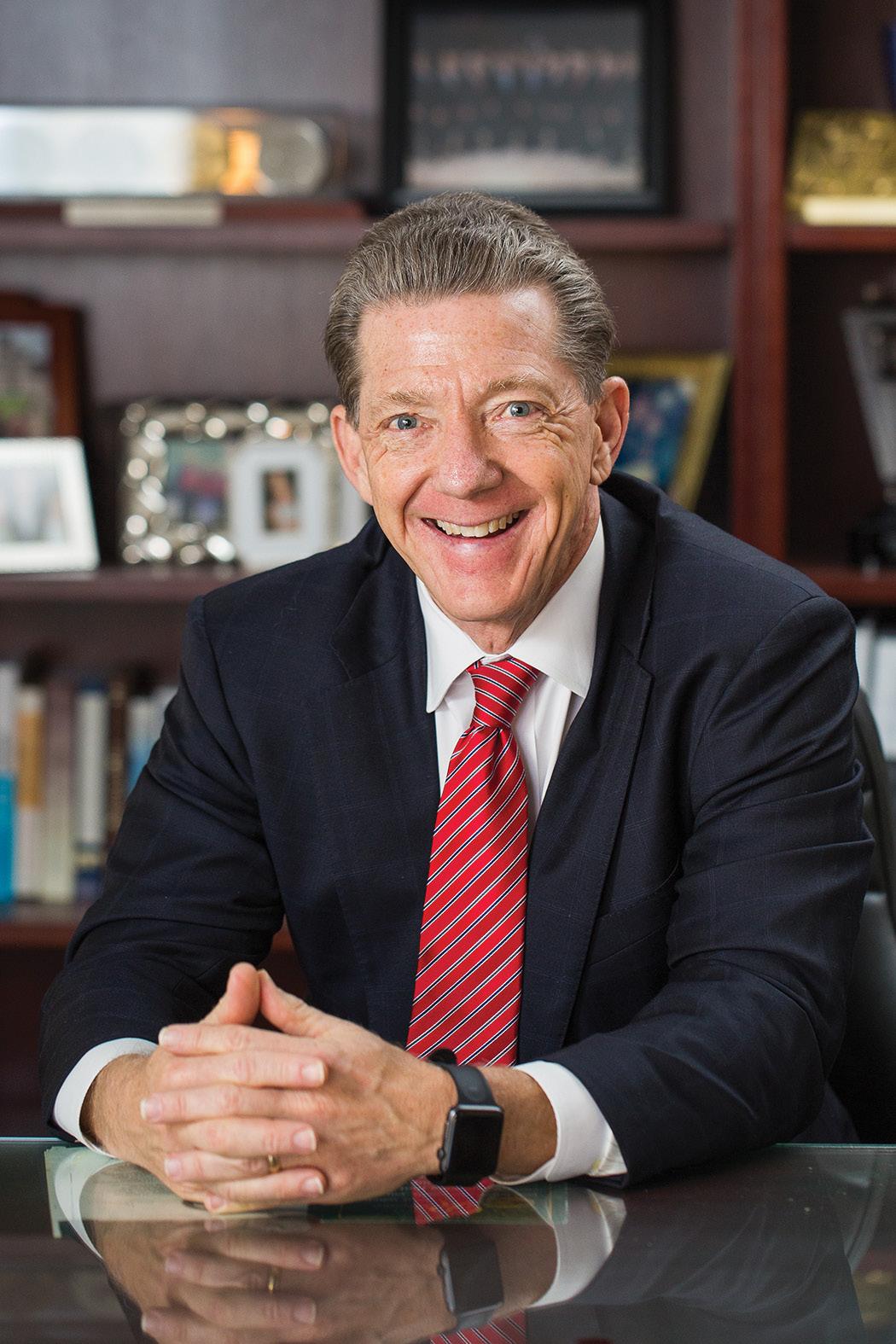
He became heavily involved (and the eventual chair) of the Oklahoma Lawyers for Children organization, representing children who do not have a voice in parental separation or termination cases. He handled a three-week jury trial pro bono, representing the interests of a child who had suffered an extensive complex skull fracture and subdural hematoma—one of the most emotionally challenging cases he’d ever faced.
Eissenstat and his wife also support organizations such as the Trinity Legal Clinic, a Christian legal clinic that offers pro bono services for people who cannot afford legal representation. Eissenstat is involved in a number of other organizations and has received numerous awards.

In an already storied legal career, Eissenstat says he’s learned the privilege of practicing law means being a giver, not a taker—to try to make a positive difference in the lives of others.
Phillips Murrah law firm is proud to have a longstanding partnership with Eric Eissenstat and Continental Resources. Our firm empowers our clients with the insight and strategic legal counsel necessary to maintain a competitive edge. Through our multidisciplinary team of skilled attorneys, clients are supported by across-the-board transactional legal representation and in all areas of general, civil, business, and complex litigation. With offices in Oklahoma City and Dallas, Phillips Murrah is more than an exceptional legal team, we’re your strategic partner. Phillips Murrah is a member of ALFA International. For more information on our practices and attorneys, visit phillipsmurrah.com.
“It is a privilege to work with Eric Eissenstat and Continental Resources. We have worked together for years to protect and strengthen Continental’s leadership position in the American energy industry. I admire Eric’s integrity and his leadership abilities.” —Poe Leggette, head of BakerHostetler’s National Energy Team
The life and career journey for Letitia Silas has been nothing short of extraordinary. After college, the native Californian pursued her dreams and aspirations on the East Coast without knowing a single individual and with only a little savings in the bank. However, she had ambition, drive, and a willingness to succeed no matter what.
Silas had relocated to New York to serve as a constituent liaison intern in the office of Senator Hillary Rodham Clinton. “While Hillary’s office was impressed with my résumé, they did not offer me the internship until I showed up in New York ready, willing, and able to volunteer (unpaid),” she says. “So,

I went to New York without a bird in hand first—just hope and a wiliness to do whatever it takes.”
After interning with Clinton, Silas returned to California but was restless after being inspired by great experiences and committed professionals in New York. Motivated by the 2004 presidential election and drawn to John Kerry’s inspiring story of courage, she packed her bags and drove to Boston.
Once again, Silas didn’t know anyone there, she didn’t have a job lined up, and she didn’t know anyone who actually worked on the campaign. “I had a lot of faith,” Silas says with a laugh. “I was applying for temporary jobs, staying at a hotel, and just hanging out at the Massachusetts State House so that I could be a part of that energy. I was going to show up there every day in my suit and with my résumé until something happened.”
Before too long, she became acquainted with a professional who “walked me right over to the John Kerry campaign headquarters and told them to give me a job.” “Everybody ran up to me and said, ‘You have to meet Ayanna!’ Well, it turns out they were talking about Ayanna Pressley.”
The campaign staffers embraced Silas and assigned her to the phones. “It was at least several weeks before I actually met Ayanna,” Silas says. “She came up to me one afternoon as I was doing calls. She was amazing.” Silas soon found a mentor in Pressley, who was then Kerry’s constituency director.
Silas recalls that Pressley took her under her wing, even arranging for Silas to meet several Massachusetts elected officials. And Roy Cox
to Silas, it is that kind of relationship that made her work with the Kerry campaign so valuable and has also inspired Silas to mentor young women. “Ayanna was impactful and made a difference in my experience on the campaign,” Silas recalls.
The campaign exposed Silas to the political and social circles in Boston, and eventually she landed a paid, full-time job as a legislative aide to a Massachusetts state representative. She was finally able to secure better living and had really landed her foot securely in the political door.
Silas created enduring connections and relationships, and her experiences developed her positive brand, built her résumé, and made her more competitive when it came to applying to law school, securing scholarships and legal internships, and eventually attorney positions.
“Basically, I worked my tail off,” Silas says with a laugh. “I was relentless in my studies, I volunteered while in law school, and I gave up one of my summers to work on a paper with a professor, which is how I was able to publish a law journal article before graduation.”
During her studies, Silas was encouraged to apply for a judicial internship with the federal district court. “At the end of the interview, I asked whether I had the job. And she said, ‘Oh yes, you had the job before you walked in the door. I just wanted to meet you in person,’” Silas recalls.
Since earning her degree, Silas has kept up her personal brand and momentum. Prior to graduation, she accepted a dream job as a labor law attorney for the National Labor Relations Board. After several years with the NLRB, she was recruited by a large law firm. While with the firm, Silas made a positive impression on one of her clients, Howard University, and was soon offered a position as in-house labor counsel for the university and its hospital.
Outside of legal work, Silas trains Howard University Law School and Business School students in personal branding and professional dress in addition to mentoring young women. Silas also started her own podcast, Beauty Not Boundaries, which highlights female diversity and topics relevant to today’s women.
According to Silas, anyone can find open doors. “But it requires showing up. It requires hard work. It requires dedication and consistency. It requires looking the part and playing the part. And it requires having a reputation and brand that people trust, rely on, and are willing to invest in,” Silas says. “When others believe in you and your vision, they want you to succeed. And, when they want you to succeed, they will make a way for you and your vision.”
Editor’s note: At press time, Letitia Silas was no longer with Howard University and accepted a position as partner at Fisher Phillips.
1. Being smart and having a great résumé are important, but you also need to look the part. People will not hear what you have to say if they cannot get past how you look, sound, or come across.
2. Take control of your life and your career. Don’t let anything or anyone decide for you. Be intentional and deliberate. Know when to take action and when to observe, strategize, and plan your next power move.
3. Be open to constructive feedback and positive recommendations. This will help improve your personal brand and lead you to better places in life and in your career.
4. Be reliable, trustworthy, and hardworking. Show up on time, keep your word, and always produce a polished work product. Do what others may be unwilling to do.
5. Identify people who support you and people who may work against you. Find supporters who will be real with you and build upon your positive brand. Keep a healthy distance from those who don’t, as they can damage your brand.
6. Keep it to yourself. Despite our social media culture, you don’t need to broadcast your plans, goals, and every move. When the time is right, share with others.
7. Do what you love so your passion and tenacity don’t wane. Clients can sense if you love what you do or if you are just working for the paycheck.
8. Share your successes. Take what you’ve learned and share it with others who are driven and working toward their own success.
“When others believe in you and your vision, they want you to succeed. And, when they want you to succeed, they will make a way for you and your vision.”
LETITIA SILAS
Human resources may seem far afield from his time in the Navy, but it calls for a number of skills that Philip Dana learned during his service.

“I’m not afraid to put in the long hours and roll up my sleeves,” he says, a principle he’s cultivated during fifteen years in the Navy, and then zigging and zagging across industries and numerous parts of the world.
At his core, Dana describes himself as a “300-pound Irishman who loves people,” and that affability has helped establish him early in his HR career. Between his blue-collar upbringing and the discipline of military service, Dana perpetually feels called to “answer the need, make things better, and jump in with the team,” he explains. “It’s a big part of who I am.”
The son of a military family, Dana grew up in the Philippines before
moving to Idaho and enlisting in the Navy shortly after school. After serving as a naval officer for six years and a HR/talent leader for fifteen-plus years, Dana found himself involved with The Honor Foundation, a notfor-profit transition program for Special Operations leaders to reenter the workforce.
It was there that he met future boss Marc Brown and he recruited Brown as one of their inaugural senior coaches. There, he helped transition Navy SEALs to the workforce, built up a relationship with Brown, and in 2017 was brought over to Zovio proper.

With Zovio’s rebranding from an online for-profit university to an education technology services company, Dana worked to execute major tech and HR improvements to aid Zovio’s bid to revolutionize the education industry. As vice president of HR operations, Dana focused on his role leading a large team and filling seven hundred permanent roles a year across six different organizations across the company.
Previously, Zovio had been known as Bridgepoint Education Inc., the owner of online colleges like Ashford University. Now, the newly minted Zovio has transitioned chiefly to a supplier of education technology services, owning TutorMe, Fullstack Academy, and Learn@Forbes. From an HR standpoint, that presented numerous challenges from Dana’s perspective.
“The tech part clashed with the workforce,” he explains. “We were buried in paper and spreadsheets.” In Zovio’s old system, performing basic functions like creating organizational charts would take, on average, three hours to complete.
Enter Workday, a cloud-based HRM system whose implementation into Zovio has been
one of Dana’s biggest projects to date. From recruiting to onboarding to development and more, Workday was the advanced HR tech Dana was looking for to upgrade Zovio’s more traditional processes.
After a one-year implementation, the company’s renewed HR system launched in mid-December 2018, with Dana and his team spending the following year putting it through its paces. “It’s kind of like a racecar,” Dana explains. “When you first put it together, you don’t immediately take it racing. Workday also triggered us to change every single business process in HR, for the better.”
It wasn’t long before Zovio’s HR processes saw significant improvements, which Dana
takes as a point of pride. “It leap-frogged us from 2000s HR activity to today’s age of what’s expected in order to manage an agile, nimble, date-driven, fast-moving organization,” he says.
All of this work, Dana explains, is part of Zovio’s new focus on bringing education tech services into the education sector—helping universities diversify their toolkit, giving students access to streamlined application and financial aid resources, and giving organizations the ability to effectively upskill their workforce.
The success of Zovio’s Workday implementation, as well as his other HR work at the company, speaks to Dana’s discipline and collaborative leadership style. “I like to get into
the trenches, listen, learn, digest new material, and understand how things are done,” he explains. “To do a good job, you have to speak the language of the business.”
Networking and connecting with people are some of his greatest joys in his line of work: “it fuels me and makes me happy,” he says. Whether with his team or with other executives at corporate functions, Dana values transparent, authentic, candid conversations about the direction of the company and what they can do to improve it. “If I can do it at an event where there’s football—Navy and Seattle Seahawks in particular—great food, and beverages, even better!”
In all the high-performing environments Dana has experienced, both in business and in the military, he sees the best leaders doing more fireside chats with their team to hash out what’s on their mind. For Dana, communication is key between him and his team. “I need to hear their input before making decisions.”
In his younger days, Dana admits he was a lot more gung-ho, pushing to work faster and harder and get things done on his own. But now that he’s a seasoned leader, he understands the value of passing on his knowledge and letting his team members take the driver’s seat with their own ideas.
“I want to start building a legacy of folks who have worked for me, to grow into world class HR leaders,” Dana says. “If they can be better and more senior than me, so much the better.”
Editor’s Note: At press time, Philip Dana left Zovio and is now head of HR at Dendreon, a biotech company headquartered in Seal Beach, California, owned by Sanpower.
“I’m not afraid to put in the long hours and roll up my sleeves.”
PHILIP DANA
Lynne Puckett has spent her adult life working side by side with some of the sharpest minds in America: she spent five years working at the CIA, sixteen years honing her legal skills at top firms like Hogan Lovells, and nearly a decade working as general counsel, senior vice president, and corporate secretary at Colfax Corporation, a diversified technology company that provides orthopedic care and fabrication technology products and services around the world.
But Puckett has never seen anything quite like the teams at Celanese—teams who are passionate not only about what they do but also about how that work impacts their communities and the world.
When Puckett was first contacted about the general counsel and senior vice president position at Celanese,

With the help of General Counsel Lynne Puckett, Celanese is securing a name for itself as a global leader in sustainability
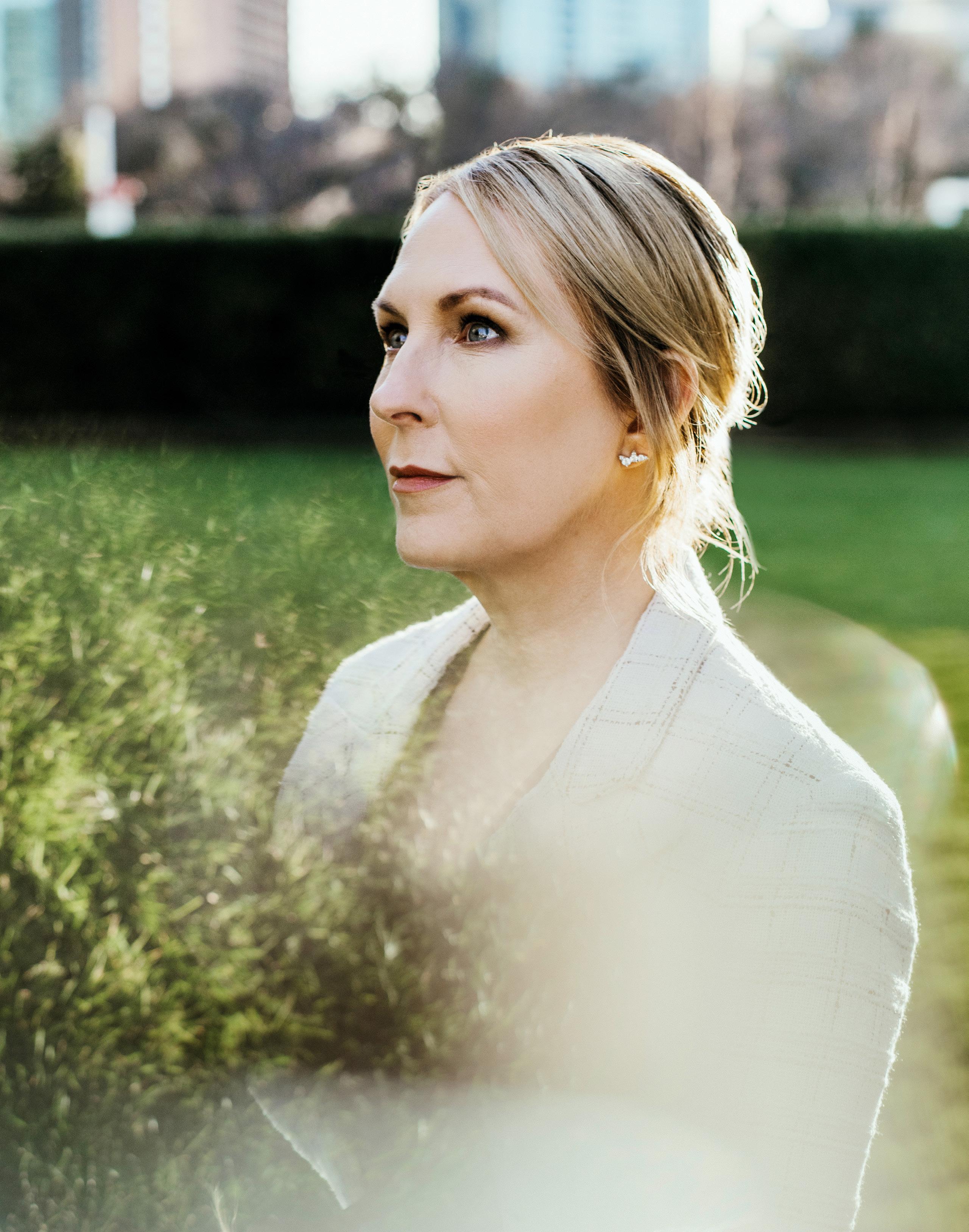 Lynne Puckett
SVP and General Counsel
Celanese
Lynne Puckett
SVP and General Counsel
Celanese
Developing innovations is our mission. Legally and technically. We seemingly succeed in this well and consistently – no other law firm has been named “Most innovative law firm of the year” six times by the Financial Times. We cooperate with legal tech providers. We use artificial intelligence in our daily work. We develop ourselves: With FUSE, we are the only law firm to have set up an innovation laboratory that is also used by clients from Germany. Together with lawyers, start-ups in FUSE are working on technical solutions for complex consulting products.
In the past five years, Celanese has expanded its efforts to protect the earth and the communities that it houses far beyond the establishment of the ESG Council. In fact, as the numbers show, the company has made truly remarkable efforts to improve its stewardship of the global environment.
28% in greenhouse gases
32% in total waste
29% in volatile organic compounds

In 2019: 120 site conservation projects
$16M in sustainable cost savings
Source: Celanese

she had no thought of leaving her team at Colfax—a team she built from scratch and continued to expand upon as the company went through a period of tremendous growth.
But as soon as she sat down for coffee with Celanese’s CEO, she could tell that this was an opportunity she couldn’t pass up.
“It was a chance to learn a different industry, in a new city, at an S&P 500 company with about $7 billion in revenue,” Puckett recalls. “But more than anything, what I perceived was a strong vision coming from an incredibly dynamic and energetic management team. And that is still true of the company today.”
That sense of vision and energy has propelled Celanese to its current status as a leading chemical and special materials
www.allenovery.com
corporation whose products are used in everything from race cars and airplanes to perfume bottles and medical technologies.
But as Puckett has seen for herself since joining Celanese in February 2019, a great deal of the company’s sense of purpose stems not simply from its commitment to increasing revenue but also from its dedication to a higher cause.
“Celanese has a really, really heavy focus on community and volunteerism,” Puckett says. “There is such an effort to give back to the community, to protect the community, and to make sure that our processes are as efficient as we can make them in terms of water and energy usage and emissions. We are always thinking about how we can increase recyclability or make products with bio-based materials like wood and vinegar.
“But when Lori [Ryerkerk] came in as CEO,” Puckett continues, “she said, ‘This is such a critical area, we need to take it even further.’”
One of the first things Ryerkerk did was to ask Puckett to lead the company’s first environmental, social, and governance (ESG) council.
The council has representatives from all different departments and functions at Celanese, including representatives from the company’s overseas locations. Those representatives are tasked with oversight of all environmental, social, and governance issues, but as Puckett explains, one area has received far more attention than the others.

“Celanese already has social and governance matters really well in hand. This is the most integrated, respectful, and diverse workplace I’ve ever worked in,” Puckett enthuses. “These days, diversity and inclusion
can sound like buzzwords, but I’ve never seen those values lived like they are here.”

Thus, for the past year and more, Puckett and her colleagues on the ESG council have focused on amplifying and promoting the company’s efforts to protect the environment. The first task? Data collection and analysis.
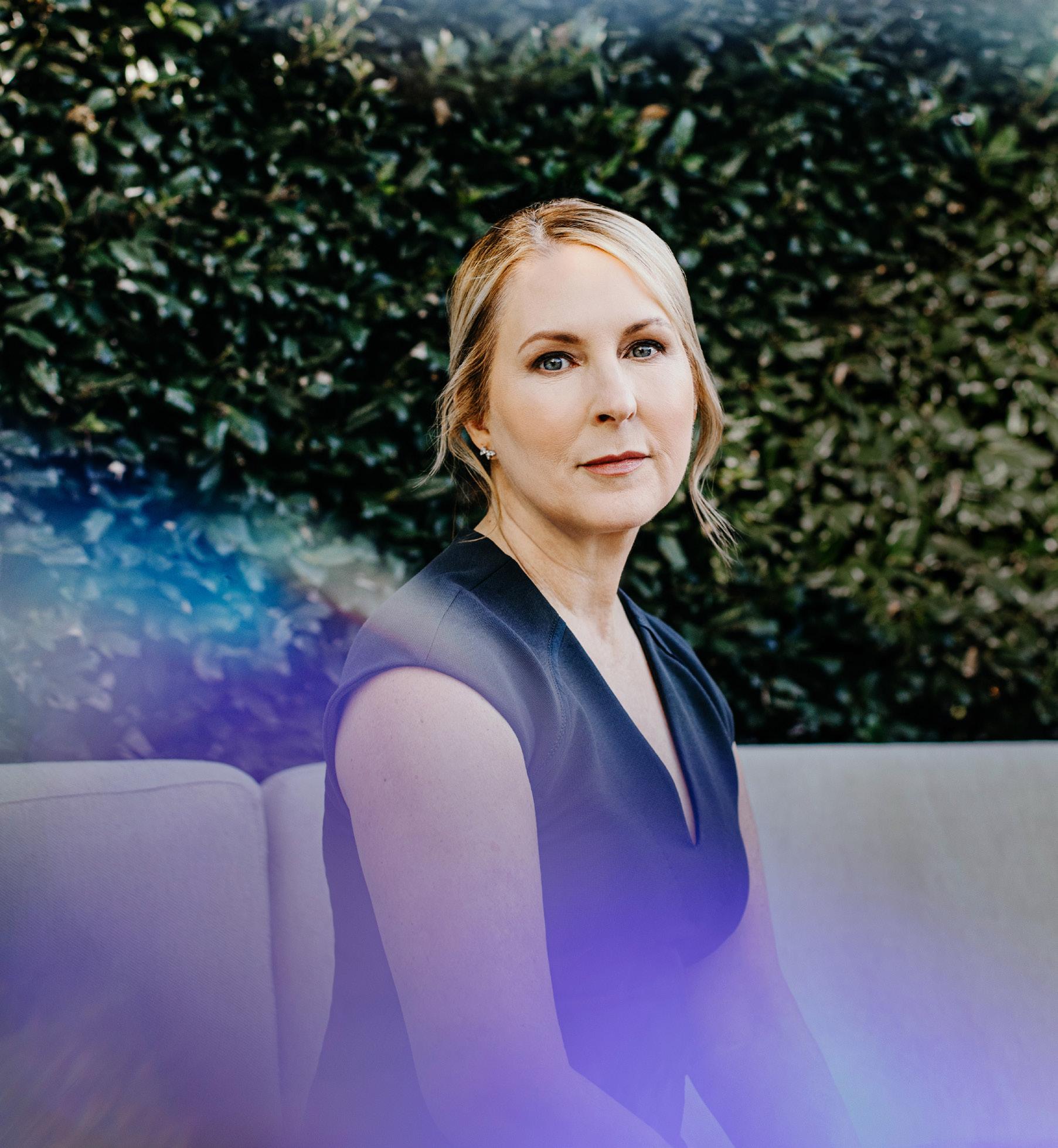
“The company is putting a lot of energy and resources into the question of how we can power ourselves better and produce in a more environmentally friendly way,” says Puckett, who serves as the head of the council. “In 2019, we worked to fully and accurately capture all company activities in that arena—there’s a lot of rigor involved in monitoring each and every aspect of energy consumption, emissions control, and water usage.”
Celanese has put an elaborate array of software systems in place to monitor its impact on various areas in the environment, Puckett says, but
she and the other council members have also been working to garner information from another group of stakeholders.
“We’ve reached out to holders of more than 75 percent of Celanese shares to discuss these issues, and between phone and in-person conversations, we ended up speaking with holders of more than half of our outstanding shares,” Puckett says. “We talked with them about what is available to us in our ESG analyses, where they thought the metrics were and should be, and what was relevant or important to them in this area. And they wanted to have that input.”
Based on all this data and input, Puckett says, Celanese will gain a better understanding of how its metrics compare with those of other leaders in the chemistry industry. Even further, she emphasizes, the company will be able to pinpoint the adjustments needed to revamp its ESG reporting efforts in 2021 and the years ahead.

“We felt like we had good messages in place regarding ESG before this council was started, but those messages were scattered throughout our website,” Puckett remarks. “We needed to take our messaging to the next level to make sure people were becoming aware of our efforts. These issues, especially sustainability, are important to everyone—our customers, investors, neighbors, and employees throughout Asia, Europe, and the Americas.”

Puckett’s external partners see how her leadership will further the ESG’s success. “As usual, Lynne’s support of and focus on ESG distinguishes her as a leader and first-mover in her profession,” says Paul Genender, partner at Weil, Gotshal & Manges. “We are fortunate to have the opportunity to collaborate with her on this important topic.”
Kirkland & Ellis Partner David Feirstein agrees. “Lynne’s strategic thinking, leadership and overall excellence is unsurpassed, and it has been a pleasure to work alongside her,” he says. “Her commitment to making a positive impact and doing things the right
“More than anything, what I perceived was a strong vision coming from an incredibly dynamic and energetic management team. And that is still true of the company today.”


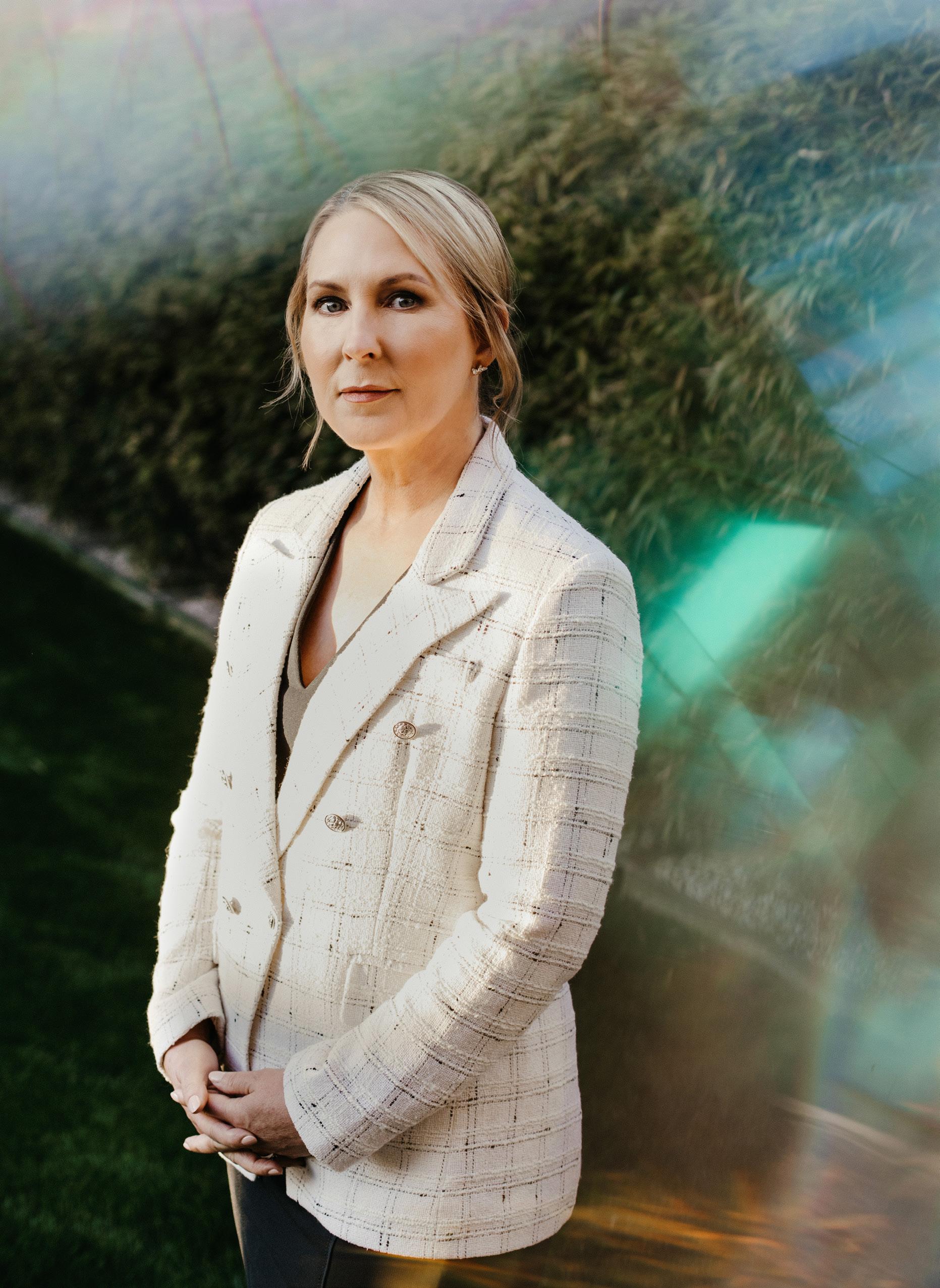















way is apparent in all she does. There is no doubt that Lynne will be a driving force behind Celanese’s ESG success, and will make a real difference to communities around the world.”
But to Puckett, increasing awareness of Celanese’s sustainability efforts is not just a good business decision—it’s also intensely personal.
“My husband is from Germany, so I’ve spent a lot of time in Europe,” Puckett says. “And when you’re in Europe, recycling is just a part of life: it’s not even something people have to think about. And then you come to the US, and you see people still throwing trash out of their car windows.
“I have three kids, and I want to make sure that they care about this issue,” the GC adds. “Sustainability efforts are increasingly about intelligent young people who join the workforce and speak out. To them, it’s not just about profit for profit’s sake anymore.”
“Sidley Austin congratulates Lynne Puckett on this welldeserved recognition. She is an experienced general counsel who is an asset to her company and community. We are honored to partner with Lynne and the entire Celanese team in their efforts to make a positive impact in their communities and the world, including the pro bono efforts we are engaged in with the legal team.”
—Yvette Ostolaza, Partner



We congratulate our friend Lynne Puckett for her achievements and well-deserved recognition. As one of the largest US-based firms, Haynes and Boone has seen significant growth because of our ability to collaborate with clients to solve problems, and we thank Lynne for giving us that opportunity with Celanese. haynesboone.com

Hobbs DeWitt first became enamored with supply chain management his junior year of college at the University of Tennessee in Knoxville, when a professor illustrated the concept with a glass bottle. “He had us think through the entire process, from silica to the store shelf,” DeWitt says. “That was the turning point for me.”
Now, many years later, DeWitt is driving major transformation in his role as vice president of supply chain at TruGreen, the largest US provider of lawn care and tree and shrub services. By optimizing the company’s procurement, real estate, and fleet processes, his goal is to improve profitability to support the company’s strategic pillars, which include growth through customer-centered innovation, efficiencies to fuel growth, and digital transformation. He’s already saved the company millions since coming to TruGreen in early 2018.
Previously, DeWitt spent fifteen years in procurement and supply chain at IBM. He worked his way up to global sourcing and
strategy manager for marketing and communications, managing a $1.1 billion annual spend. “I worked with the best minds in procurement and had the opportunity to engage in business transformation there,” he says.
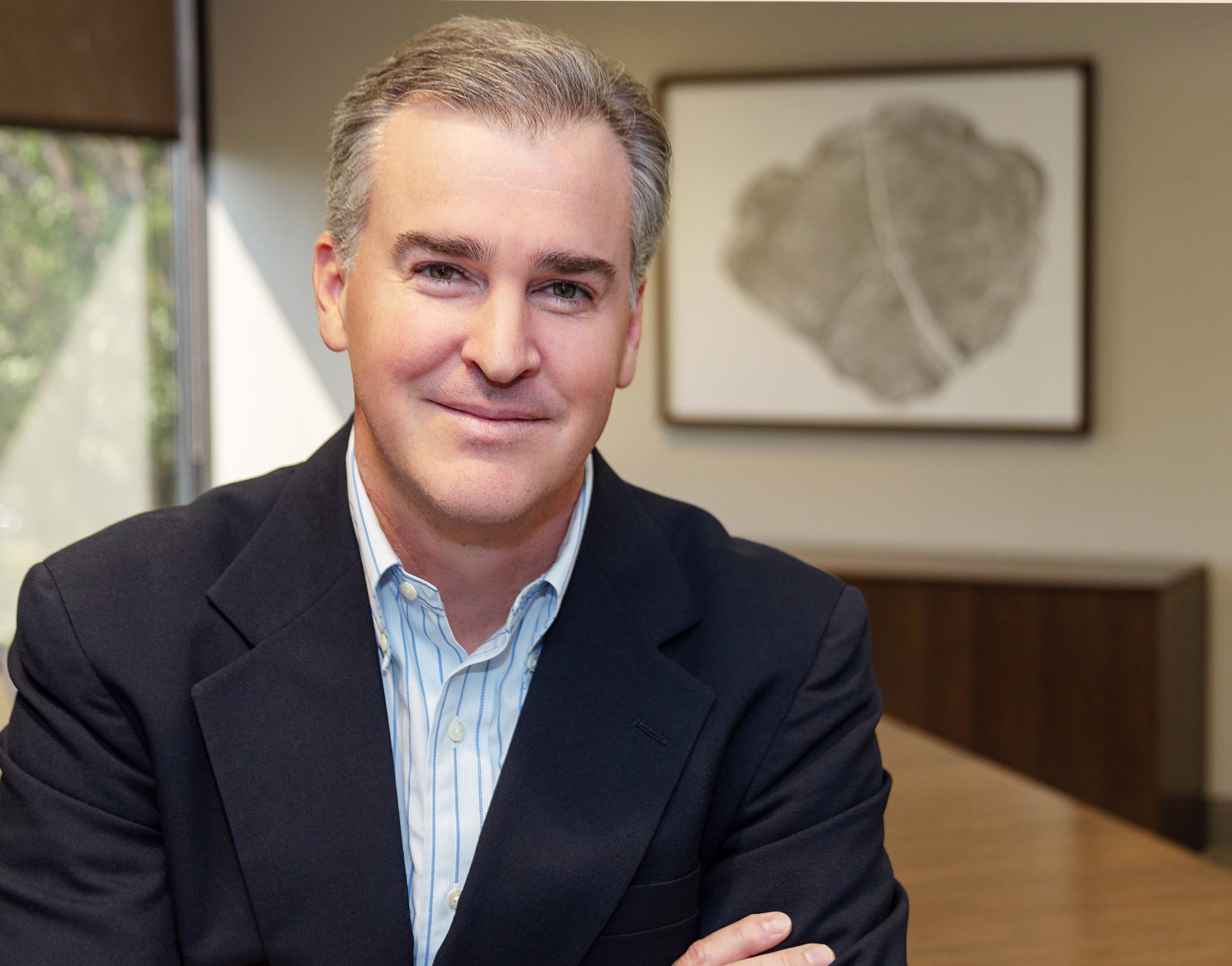
He also came away from IBM an expert in the seven-step procurement process, a proven method for strategic sourcing and negotiations. “This process ensures you understand the requirements, the
stakeholder’s goals, and marketplace trends,” he says. At TruGreen, he put this same process in place to manage the company’s addressable spend in both direct and indirect categories.
Getting the procurement team involved early on is essential to the process’s success. Through the strong leadership and direction of the CEO and CFO, TruGreen departments quickly realized the value of
including procurement as a partner sooner rather than later.
“We’re working to get people to understand that there is a procurement process and to change the behavior of departments that had previously purchased goods and services without the support of the procurement organization,” DeWitt says. “If you wait until the end game to get our procurement team involved, we’re not going
to have as much negotiating power. It’s like if you go to buy a car and say, ‘I have to have it’—that weakens your position.”

In real estate, DeWitt and his team are starting a space utilization study to rationalize the location, size, and number of TruGreen’s locations, which currently number 296 throughout the US and Canada. “Our goal is to have the most cost-effective locations that serve our customers well,” he says.
To achieve this, his team partners with one of their brokers, Newmark, a commercial real estate advisory firm, for data analytics on customer and employee location, traffic patterns, future area growth, environmental impact, and other factors. “These data points give us a predictive understanding of what the market is doing and will do to help us improve and optimize our network of real estate.”
DeWitt is also using data to cut out inefficiencies in the management of TruGreen’s 9,500-strong fleet of vehicles that service

more than two million customers. To guide decisions on whether to perform maintenance on a vehicle or order a replacement, DeWitt’s team has introduced a health scorecard that ranks vehicles based on criteria such as mileage, utilization, maintenance cost, and remaining economic value.
He has also optimized the design of TruGreen’s trucks. DeWitt and his director of fleet formed a guiding coalition team (Kotter’s change management approach) of field personnel and corporate fleet department employees that collaborated with Monroe Truck Equipment to design and create a simplified commercial truck featuring a stainless-steel flatbed and two independent polyethylene tank spraying systems. The trucks also allow the back end, which has a twenty-year lifespan, to be separated from the front chassis (which has an average ten-year lifespan) and reattached to a new chassis.

“If you wait until the end game to get our procurement team involved, we’re not going to have much negotiating power. It’s like if you go to buy a car and say, ‘I have to have it’—that weakens your position.”
HOBBS DEWITT

“The new design reduces cost, uses quality material, and is beneficial to the company. Now for every four commercial stake body trucks we purchase, we can buy an additional commercial stake body truck with the savings,” DeWitt says. The first new truck was deployed in spring 2019 to glowing reviews from the field.
None of these projects would have been a success without an engaged and aligned team, DeWitt says. To guide his team, he relies on a situational leadership philosophy that calls for managers to adjust their style depending on employees’ individual strengths and align the management technique with each individual situation. “We have built a strong team with the passion to do the work and the willingness to learn and collaborate,” he notes.
Team development heads up DeWitt’s list of goals for the next few years. Specifically, he aims to continue building out his team, giving them the tools needed for success, and building strong succession candidates for key positions. He’s also aiming to develop increasing value to fuel TruGreen’s growth, continue to document category strategy and playbooks, and establish strategic supplier relationships that “lessen the company’s risks while maintaining a cost-effective supply chain.”
Overall, he says he feels blessed to have his job. “I’ve always loved everything about the work I do,” DeWitt says. “The variety is fantastic, and the complexity stimulates me every day. There’s never a dull moment.”
“We have built a strong team with the passion to do the work and the willingness to learn and collaborate.”
HOBBS DEWITT
Knight Frank creates and implementes real estate strategies for its clients to reduce occupancy costs, maximize flexibility and increase profitability.
Denis McCarthy, the chief risk officer at Hilton, embodies the idyllic archetype of a self-made man. McCarthy paid his own way at West Virginia University, where he studied finance and accounting. While the technical skills he gained were critical to his later success, the greatest lessons he learned at university pertained to his work ethic.
“It was very early on, at eighteen, that I learned to have complete and utter selfmotivation and self-responsibility,” McCarthy says. “You didn’t take tests and go to classes just to pass them. It was your money. So, at a very young age, I made certain I was getting something back on my investments.”
While at university, McCarthy joined the Army Reserves before transitioning to active duty, becoming a Green Beret, and eventually amassing twenty years of cumulative experience in the United States military. What began as an additional way to pay for college became a defining launch point for McCarthy’s career.
Teamwork, leadership, and communication, McCarthy explains, are foundational pillars in the military, without which highly complex and stressful missions would inevitably fail. McCarthy considers his
time in the military his “second masters,” providing him essential leadership and communication skills that allow him to thrive in high-stress situations.
Once he entered the corporate world, McCarthy hit the ground running, landing a gig at PricewaterhouseCoopers as a senior accountant. He surrounded himself with driven consultants and accountants, quickly learning how to adapt his skill set to the corporate world.
Entering hospitality at Host Hotels & Resorts, and then Interstate Hotels & Resorts, McCarthy became intimately familiar with the ins and outs of the industry, both from management and ownership perspectives. He honed skills in day-to-day hotel operations and returning investments for owners with tight margins.
Just as he had done at university and in the military, McCarthy put his all into his work while also building critical connections. After a decade in the industry, McCarthy became a senior vice president of finance and corporate controller at Hilton before becoming Hilton’s, and the hospitality industry’s, first chief risk officer.
At the time, the industry had never seen anything like it: a chief risk officer heading up a risk and resilience office.
“Our core mission is to build resilience for this company through the identification, assessment, and mitigation of risks that occur from the operational level all the way through our strategies at the enterprise level,” McCarthy explains.
In his current role, McCarthy oversees seven interconnected teams: safety and security, business continuity and crisis management, intelligence, fraud and forensics, data protection, risk management, and enterprise risk advisory.
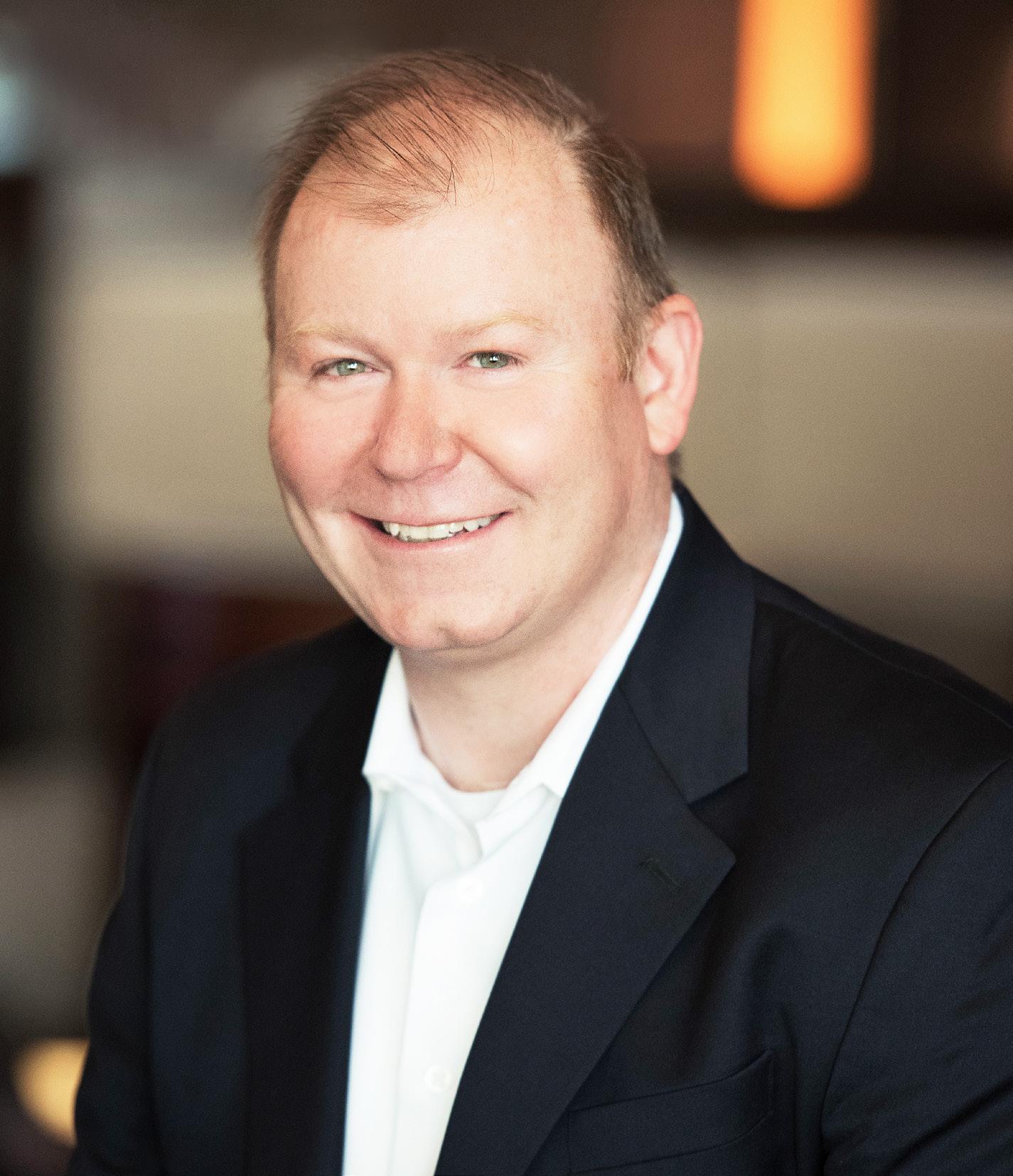
Given Hilton’s size as a company, which employs nearly 420,000 team members and operates in 117 countries and territories, technological integration, synthesized operations, and innovation are crucial to McCarthy’s work in risk management.
“The ‘Hilton Alert’ app is one of the core tools we built in the last couple years,” McCarthy says. The app, compatible with any smartphone, prompts a Hilton employee to five basic, yes or no questions regarding potentially risky or dangerous incidents, and is connected to an operations center—open 24 hours a day, 365 days a year—that receives the alert with any accompanying information, including text descriptions and photo attachments. Then, the “triage team” at the operations center “connects the incident with the corporate engines that can best resolve and help bring them to de-escalation, and ultimately business resumption.”
“I learned early in the military,” McCarthy continues, “that you want to make sure you have all the right people to help support you in highly complex, high-stress situations.” According to McCarthy, Hilton’s groundbreaking app, the first of its kind in the hotel industry, is all about smart, coordinated support.
“When you have nearly six thousand locations in more than one hundred countries and territories, there is something going on at a hotel at any given hour of the day,”
McCarthy says. Recalling a specific instance when, through the Hilton Alert app, his team was able to effectively respond to a crisis, McCarthy cites Hurricane Maria in 2017 in Puerto Rico, which is home to multiple Hilton properties, as an inspiring example.
After the eye of the hurricane passed through the island, with so many services and lines of communication down, Hilton Alert became a primary method of communication used by the properties. “We could make sure we were providing [our properties] with all the things they needed, whether it was food and water, oil, gas, blankets, flashlights—anything you could imagine to help support the hotel and the surrounding community,” he
says. “It was a massive event that impacted an entire island, but we were able to keep communications with all of our hotels.”
Throughout his career, McCarthy has developed a style of leadership that meshes perfectly with the company culture at Hilton. He notes that in the military, responsibility is built at all levels of positions to achieve goals and meet expectations—a framework he works to replicate within his teams.
“Leaders are needed at every level, and they need to know they will be supported,” McCarthy says. “You might not always make the right calls, but you need to keep the engine running, and you need to know your manager will have your back.”
You’ve surely been at a dinner table where you or someone else launched the Foursquare Swarm app to tap the check-in button. Today, those check-ins are powering location for thousands of developers, and Foursquare wants to ensure our shared data is making our lives easier—without costing us our privacy.
When Foursquare launched in 2009, “our goal was about introducing the world to real-time location sharing. It was about checking in at the more than 105 million venues around the world that we had, and then sharing locations with friends in your network. We obviously accomplished that,” says Marc Ellenbogen, general counsel and chief compliance officer. “But our goal wasn’t just to build the world’s best check-in button.”
By ANTHONYThe next goal was to build an industry-leading location technology platform, which Foursquare is doing

How Marc Ellenbogen and Foursquare advance privacyfriendly practices to ensure data is used only for good
RUTH
through a suite of developer tools, business solutions, and consumer products, and a recent round of fundraising, resulting in $150 million and the acquisition of Placed. Ellenbogen, who also has an MBA in entrepreneurship and innovation, played a major role in steering and guiding the deal.


Foursquare now powers business solutions and consumer apps and services built on its understanding of location for brands like AccuWeather, Apple, Microsoft, Tinder, TripAdvisor, Twitter, and more. Those billions of check-ins since 2009 provided firsthand confirmation
Marc Ellenbogen General Counsel and Chief Compliance Officer Foursquareabout a phone’s location. “That now is the foundation for our understanding of how phones see the world,” Ellenbogen says.
It’s also a mountain of valuable location data that can be used for a variety of purposes, and it’s a central tenet of Foursquare’s and Ellenbogen’s that Foursquare’s data be used to power experiences that provide real value for consumers. “We will never sell your path of visits of locations through the world,” Ellenbogen says. “But there are companies out there that are doing that.”

That’s one reason why Foursquare and Ellenbogen are calling for federal legislation to regulate the location technology industry, which is currently regulated only at the state level in the US, if at all. “There are good uses of location technology and there are bad. When used for things like safety of children, reducing traffic congestion, city planning, healthcare—those are all ways we could use location technology, and we don’t want to prevent that,” Ellenbogen says.
As a bad use of data that a federal policy could prevent, he cites the example of telecom companies selling location data to bounty hunters. “Left to police ourselves, what we’re seeing is it’s harder and harder to compete on a truly ethical and what I’ll call privacy-friendly way with those who are competing otherwise.”


There’s also a practical reason: without standard regulations across the US, states are coming up with their own regulations, leaving companies scrambling to stay compliant nationwide, let alone globally. One of the most prominent examples is the California Consumer Protection Act, which took effect in January 2020 and allows consumers to disallow the sale of their data to third parties, among other regulations.
“What you’re going to be left with is a patchwork of different regulations that don’t quite work together,”


“Everyone has to have a look at themselves and decide where their ethical lines are drawn as a company.”
We congratulate Marc Ellenbogen and wish him continued success as General Counsel & Chief Compliance Officer with Foursquare Troutman Sanders, with an integrated network of offices across the U.S., works with our clients to navigate their most complex legal issues, including corporate, litigation, intellectual property and privacy matters.
Ellenbogen says. “Unifying that and having one law across the country is really what we’ve been advocating for.”
With more and more reports of massive data breaches, and scandals like the one involving Facebook and Cambridge Analytica, Ellenbogen sees an increasing interest among the public and policymakers to address privacy regulation, but he doesn’t expect to see significant progress on federal legislation before the 2020 election.

Even so, Foursquare is doing what they can to advance privacy-friendly practices. There was an op-ed in the New York Times by CEO Jeff Glueck. The firm contractually requires that its business customers and partners be transparent with their users and have privacy policies that accurately reflect how their data is used. They also periodically audit their partners to make sure they continue to maintain those standards, and have turned away revenue opportunities where they felt the use of data was too granular or sensitive or didn’t have a clear service or use case that warranted access to location data.
“Our perspective is, we ought to have a good idea of what is happening with our data once it goes to a third party,” Ellenbogen says. “Everyone has to have a look at themselves and decide where their ethical lines are drawn as a company.”

Foursquare has a cross-functional ethics committee that monitors the issues and

troutman.com


Troutman Sanders LLP
makes recommendations to the CEO. “We consider it a privilege that we have the data that we have and want to protect that,” he says. “I think it’s hard in the start-up world to continue to have that backbone, but I would encourage other companies to really look at that and make ethics a part of the process, not an afterthought because something gets published in the newspaper.”
The stakes are high, but Ellenbogen, who was named to Chambers & Partners’ inaugural list of the most influential general counsels in the US, likes working on the edge, in an area of law that is still developing.
“As a lawyer, that’s the most interesting work,” he says. “That practicing law could actually be fun is something that has been surprising to me. It took me a long time to get there.”
Wilmer Cutler Pickering Hale and Dorr LLP: “I have worked with Marc Ellenbogen since he took on the role of general counsel and chief compliance officer at Foursquare several years ago. He is extremely smart, tactical, works effectively with his legal team, outside counsel, and the business. He does a great job managing outside counsel so that he gets exactly what he needs, and nothing more, on time. He has to terrific judgment and no ego, he is approachable and practical, and a pleasure to work with. All of that has helped him earn a leadership role at Foursquare and a relationship of trust with his internal clients to help the business thrive in a complex regulatory environment, with numerous competitors.”
—D. Reed Freeman, Jr., Cochair, Privacy and Cybersecurity Practice Group, Cochair Big Data Practice Group
Modern cybersecurity is a dangerous business, one that companies have to keep up with to stay ahead of the curve. This is a principle that CrowdStrike CFO Burt Podbere understands more than anyone. “Our adversaries don’t sleep, and they don’t eat,” he says. “We’ve got to stay ahead of that.
Thanks to that mind-set, and the success of the company’s recent IPO in June 2019, CrowdStrike has built a substantial leadership role in the cloud-based cybersecurity industry. When Podbere joined CrowdStrike in 2015, he already had more than twenty years of domestic and international experience in managing and scaling global tech companies, having worked previously at tech titans like Symantec and OpenDNS (which
was eventually acquired by Cisco). Working at other Software-as-a-Service (SaaS) firms like OpenDNS taught him how to go to market, and he grew an appreciation for what it takes to lead a sales organization.
What attracted him to CrowdStrike was more than the chance to continue his passion for innovating and disrupting the industry. It was the prospect of working with CrowdStrike founder and CEO George Kurtz. “George could create a board that would propel the company into rare air,” Podbere says.
When they first met in 2015, Kurtz sold Podbere on the virtues of a subscriptionbased model of cybersecurity and CrowdStrike’s potential to provide that for a world in desperate need of it. Adversaries were becoming more pervasive and sophisticated, and CrowdStrike’s cloud-based
platform was created to solve these “real customer pain points,” Podbere notes.
As such, CrowdStrike works to “stop the breach” for customers looking for strong endpoint protection platforms (EPP) for their cybersecurity. With a skilled, experienced team of security experts and a cloud-native EPP, CrowdStrike works to strike a balance between innovating technology and providing accessible go-to-market platforms. Customers can also use the cloud-based CrowdStrike Store to discover new products, try them out, and seamlessly purchase tech from trusted partners.
The first few years of operation saw tremendous growth, but Podbere knew that the company would need to enhance its global branding awareness. “As a private company, we simply weren’t known in all four corners of the Earth,” he explains. “It was important for us to get our brand more worldwide support.”
So, he began the long process to facilitate CrowdStrike’s public option, leading numerous funding rounds in 2017 and 2018 resulting in more than $300 million. To build relationships with investors, he attended as many banking conferences as possible, as well as investment meetings and non-deal roadshows. This was a critical early stage of the process. “It helped us understand what investors wanted to see from us as a public company,” the CFO explains.
From there, Podbere went through the arduous process of selecting the right advisors— lawyers, accountants, bankers—to create and execute an IPO readiness checklist “as thick as a redwood tree trunk.”
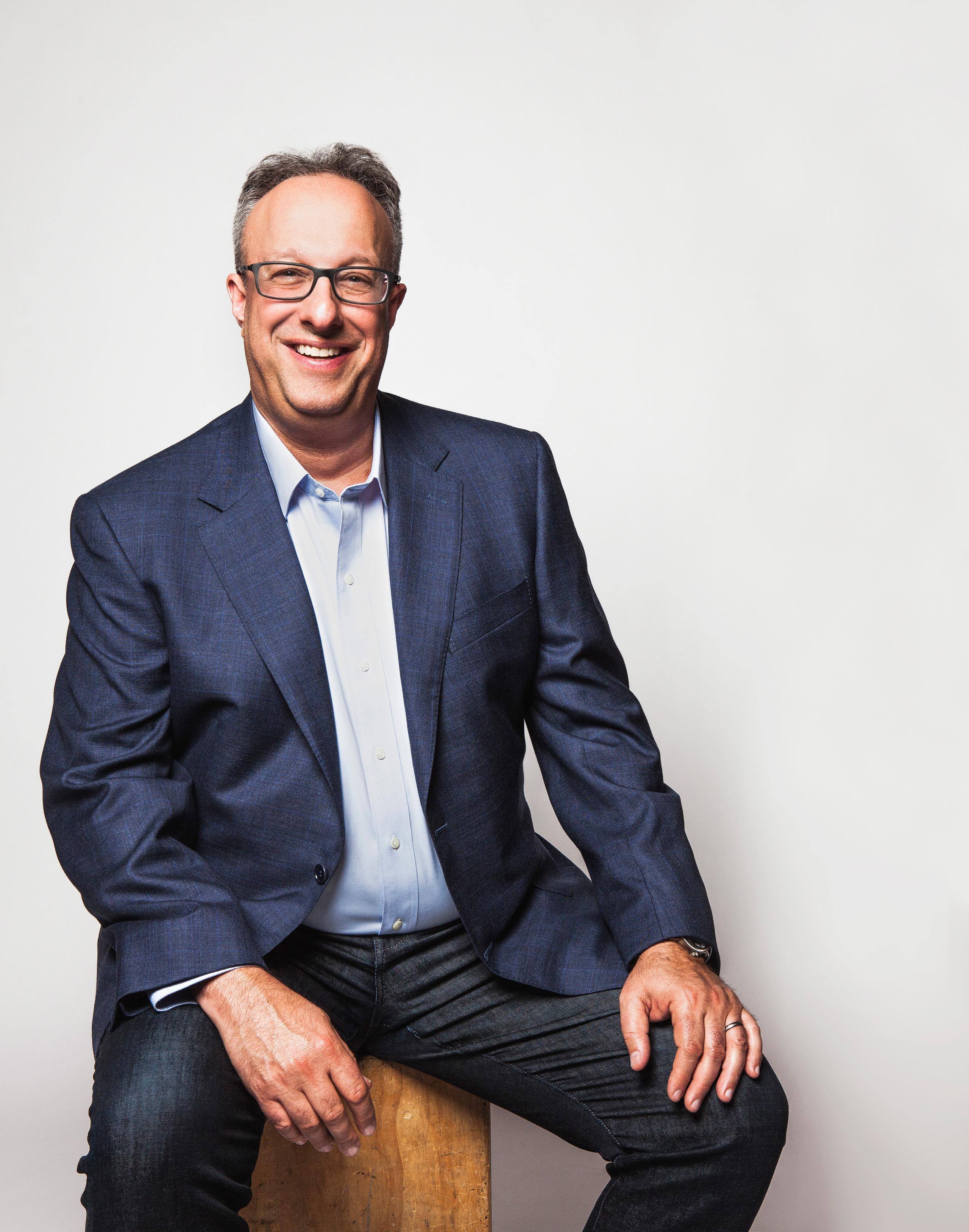 Burt Podbere CFO
CrowdStrike
Patrick James Miller
Burt Podbere CFO
CrowdStrike
Patrick James Miller
It was here that he had to become an expert in project management while on the job, learning the ins and outs of finance, sales, HR, operations, and more. “It’s a big ask, but that’s where the pre-planning and analysis helped,” Podbere says.
After a ten-day roadshow with investors, CrowdStrike debuted to a $612 million IPO, one of the largest-ever for a cybersecurity firm. “We’re very pleased with our success,” Podbere says. “Many banks have said we actually rewrote the book on how to run an effective IPO process.”
Toppan Merrill’s Darryl Grant also notes Podbere’s success with the IPO. “Burt’s impressive business acumen, leadership, and fair-minded practices accelerated the IPO while creating shareholder value,” the senior vice president says. “Uniquely, when choosing among the top two financial printers he focused on the business metrics, value, and execution.
Luckily, Podbere’s approach to the IPO dovetails nicely with one of the central mantras in CrowdStrike’s corporate culture: “remove friction.” As CFO, Podbere works to keep the company efficient, driving costs down while maintaining growth. That necessitates keeping departmental and team relationships smooth and frictionless.
For instance, Podbere has built a strong relationship with president of global sales Michael Carpenter. The two “challenge each
other in ways other executives don’t,” Podbere explains. Between sharing sales calls and meeting customers and board members, Podbere and Carpenter help each other with a close connection to each other’s roles in the company.

Off the back of their successful IPO, CrowdStrike has plans to maintain that momentum with further innovations in the cybersecurity space. Chief among these is Falcon, CrowdStrike’s cloud-native endpoint protection platform that provides comprehensive security without the need to force compatibility with other platforms.
“Buying different technologies and slapping them together in one agent doesn’t work,” Podbere explains. So, Falcon consolidates eleven integrated modules into a lightweight agent that works in tandem with their CrowdStrike Store.
Even after this triumph, Podbere is constantly looking for ways to stay excited as CFO. “The work of protecting our customers and stopping the breach is never truly done. I continue to find passion in our mission and innovation day in and out,” he notes. Central to that sense of momentum is his continued collaboration with Kurtz. “It’s the most enriching professional experience I’ve ever had,” Podbere raves.
As CrowdStrike continues to disrupt and innovate, the company’s status at the top of the cybersecurity game seems assured.
“Many banks have said we actually rewrote the book on how to run an effective IPO process.”
BURT PODBERE
Pure Storage is one of the fastest-growing IT storage companies in history. The Mountain View, Californiabased company hit $1 billion in its first ten years, expanding into Europe, Asia, South America, and Australia. The company still has a lot of growth potential, but Mona Chu doesn’t let the pace upset her composure.
“The fast pace in a dynamic, growing company creates a lot of challenges and opportunities for everyone. It’s a lot of hard work but very rewarding,” says Chu, who is the vice president of finance and corporate controller at Pure Storage. “We’ve become an international company, so working with
With Google and Box on her résumé, Mona Chu leverages her expertise to support Pure Storage’s global expansion
different countries means different challenges and jurisdictional requirements.”
The company was founded in 2009, and Chu came on board in 2015, just in time to help with a huge project. “I joined in January, and we went public in October,” she says. “Luckily I’d been through the same thing several times before, helping other companies go through the IPO process.”
Chu had jumped into the accounting field immediately after college graduation in 1994. “I had studied economics and was looking for finance-related opportunities,” she recalls. “And I picked up my CPA soon after. I became more and more focused on accounting and finance, and I stayed in the field for twenty-five years."
That stretch included eleven years at Google, during which time the company went public and grew into the search-engine behemoth it is today.
“It was a once in a lifetime experience and I learned a ton,” she says. “There were six hundred employees when I first got there, and there were more than fifty thousand by the time I left. Revenue went to about $50 billion. It was a phenomenal experience.”
Chu was working as a senior director at Box Inc., when the CFO at Pure Storage—a former Google executive—recruited her.
While much of the company’s growth has been organic, over the past two years Pure Storage has also been on a buying spree. In 2018 they acquired StorReduce, a data
 Mona Chu
VP of Finance and Corporate Controller Pure Storage
Mona Chu
VP of Finance and Corporate Controller Pure Storage
“The fast pace in a dynamic, growing company creates a lot of challenges and opportunities for everyone.”
MONA CHU

duplication software company, and earlier in 2019 they acquired the software-based file storage company Compuverde.

Chu’s past experience had prepared her for the task. “During my time at Google, we did a lot of transactions and these were not much different: straight-forward transactions,” she explains. “The key is going through due diligence and make sure everyone is on the same page. Acquisition is just the beginning and afterwards is integration which takes a while to complete.”




amexglobalbusinesstravel.com/roi
Chu has learned that working for tech companies in Silicon Valley, there’s little time to rest on one’s laurels. She’s constantly educating herself.
“There are always updates and new regulatory requirements,” she says. “The rules are always evolving. We have to be up on the latest and greatest. There's SEC and accounting rules in the United States, IRS rules, regulatory authorities and filing requirements in all other countries—it’s a lot to keep up with.”



Chu keeps abreast with the industry by reading trade publications, attending seminars, and networking. She also relies on her expanding team.
American Express Global Business Travel (GBT) is a joint venture that is not wholly owned by American Express Company or any of its subsidiaries (American Express).
“American Express Global Business Travel,” “American Express,” and the American Express logo are trademarks of American Express and are used under limited license.
“You have to build a strong team who you can trust and delegate because you can't do it all by yourself,” she says. “I have about fifty
people, mostly here in Mountain View, California, and with about ten in Dublin, Ireland, and about seven in Utah. We’re starting to grow our Singapore office, too.”


The company’s growing international reach has its advantages. Twice over the past year, Chu has traveled to Dublin to meet with her team members. She took the Emerald Isle crew out to explore the attractions as a team building exercise.
Back home she’s become accustomed to the hurdles that come with living in the Bay Area, the global center for high technology and innovation. “Hiring is very competitive,” Chu says. “You have to do extra diligence to find the right people. It’s a challenge I deal with every day.”
To decompress, she enjoys activities that provide a physical workout, such as cardio hip-hop classes and occasionally yoga.
Chu also offers a few words of advice to people starting their career. “When I was young, I jumped around, but then I learned to do otherwise,” she says. “Get a job in a company that has growth potential and stay there for a while.
“That’s the best way to gain meaningful experience and to learn and grow your career,” she continues. “Jumping from one company to another won't give you that experience.”
“You have to build a strong team who you can trust and delegate, because you can’t do it all by yourself.”
MONA CHU
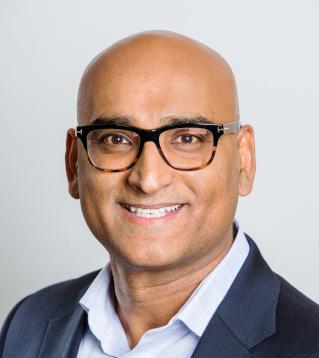 By PETER FABRIS
Amir Hameed VP of Global Solutions Engineering RingCentral Inc.
By PETER FABRIS
Amir Hameed VP of Global Solutions Engineering RingCentral Inc.
Cloud-based communications solutions provider RingCentral Inc. works closely with clients to devise systems for voice, video, team messaging, and customer service needs. Along with technical expertise, RingCentral offers solutions to business challenges—an essential goal of the company’s global solutions engineering team.
Though Hameed’s team is composed of many technical experts, these engineers strive for a thorough understanding of customers’ strategic issues. “Our job is to ask a lot of questions and be curious about business imperatives,” says Amir Hameed, vice president of global solutions engineering. Knowing how a client intends to grow their business influences how to design their communications infrastructure and functionality.
“As solutions engineers, we are viewed as trusted advisors,” Hameed says. That role means that the solutions engineer assigned to a client is as an advocate for the client as the development team designs the system.
“We are in the field every day,” Hameed says. Taking the pulse of industries regularly, Hameed’s team stays on top of new business developments, enabling RingCentral to offer competitive intelligence for its customers. “If we find out that a competitor to a client is offering, say, new video functionality, we can feed that back to our client, and that may influence their system development.”
For example, the company suggested that a major fitness center chain add an analytic function to its customer database that could identify gym members who have not visited a gym in recent weeks. The fitness center could then reach out to these customers to find out why they’ve lapsed in their exercise routines and, if they are having problems, offer assistance from fitness coaches or encourage them to take part in new fitness programs. “That was a differentiator for us,” Hameed says. “It was one of the reasons why we won the deal.”
The imperative for the solutions engineering team to assume a strategic advisory
role, not just tactical application-building role, adds significant challenges. Continuing training and education is a must.
“Every solutions engineer must understand everything that we sell,” Hameed says. Even if they specialize in a certain area, they must have a baseline of knowledge of all services as well as strategic partner offerings like those from Poly to maximize customer value. As such, Hameed instituted a requirement that all solutions engineers be trained to make presentations and demos on the company’s contact center solution. “Before me, that was left to contact center specialists,” Hameed says.
To allow team members to educate themselves on such important matters, Hameed encourages solutions engineers to spend 10 to 20 percent of their time on the job learning new concepts. Partnering with human resources, Hameed tracks career development—including training and expertise—of the solutions engineering team. Managers meet with employees regularly to map out
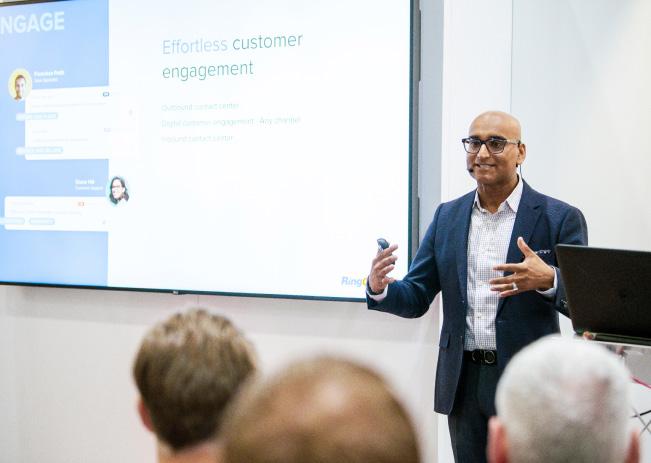 In 2019, Amir Hameed spoke at the Digital Transformation Expo in London, where RingCentral was a sponsor vendor and keynote presenter.
In 2019, Amir Hameed spoke at the Digital Transformation Expo in London, where RingCentral was a sponsor vendor and keynote presenter.
short-term and long-term skills training. This systematic approach to talent management is critical to the larger goal of building trusted consulting partnerships with clients.

Another goal of career development efforts is to build a pipeline of managers who can step up in responsibility as the company continues its rapid growth. In the quest for new management talent, Hameed looks for solutions engineers who have suggestions on how the global team can improve processes.
“Is there a way we can do process better?” he asks. “Sometimes people who are new to us have insight on new ways we can do things.” Solutions engineers who offer those suggestions and take a lead in implementing them often get promoted faster, he adds.
To succeed in a role like solutions engineer, individuals must be inherently curious, Hameed says. One must ask a lot of questions of clients to find out about their business challenges. Wanting to know more requires a natural drive to uncover issues that are not always obvious and may take time to identify. Individuals who naturally want to learn more have the best chance to succeed. This may often mean understanding how clients interact with their customers and how to improve the customer experience.
When managing a globally dispersed team, hiring people familiar with the nuances of the local business environment is a must, Hameed says. Of course, fluency in the local language is crucial, but there’s more to know. For instance, businesses in Australia may now be obsessed with business
continuity planning in the aftermath of the devastating bushfires of early 2020. They are focused on ensuring that systems can operate independently of their brick and mortar sites that could be damaged by fire, which influences their approach to infrastructure and backup systems.
Many of RingCentral’s large enterprise clients are moving toward a wholesale digital communications transformation, Hameed notes. Global organizations often have varied legacy systems in different locations. They aim to unify communications services into one coherent platform. RingCentral allows these customers to connect to a state-ofthe-art platform from any location that has a broadband connection. This, in effect, outsources communications services so customers no longer have to devote resources and personnel to support the infrastructure.
From wherever they are, Hameed’s team shoulders key responsibilities for RingCentral’s clients, supplying some expertise that clients used to provide for themselves. It’s a role that Hameed has his team well prepared for, but success must come with a strong commitment to keep pushing the capabilities of digital transformation.
Poly is the global communications company that powers authentic human collaboration. We believe in solutions that make life easier when they work together and with our partners’ services. Our desk phones, audio and video conferencing, headsets, software, and services are a leading choice worldwide for every kind of workspace.



“Our job is to ask a lot of questions and be curious about business imperatives.”
AMIR HAMEED

Digital payments are shaking up the financial world as new non-bank financial companies compete with traditional banks. Services such as Apple Pay and Venmo challenge core financial offerings of the country’s largest banks.
In response, a consortium of seven of the largest US banks developed a new digital payments network. The result, called Zelle, debuted in 2017. The service has taken off, with more than three hundred financial institutions currently making Zelle available through their mobile apps, and consumers sending $50 billion through the Zelle Network in Q4 2019 alone, says Tracy Cheney, general counsel for Early Warning Services, the bank-owned company that developed and operates the Zelle Network.
Cheney is responsible for all legal matters governing Zelle and Early Warning’s other solutions. She steers the company through the uncertain path of real-time payments as regulators grapple with technological advancements. It’s a dynamic environment with great

strategic opportunities for financial players and convenience benefits for consumers, but risks abound for both. Cheney’s challenge is to manage the risks and ensure that Zelle follows laws geared to make digital payments as safe as possible.
Early Warning was established in the 1990s to assist banks with deposit account fraud and risk management. The company provides solutions that allow financial institutions to share information that can prevent fraud. For instance, when a consumer applies for a bank account, Early Warning’s solutions can help the financial institution authenticate the consumer’s identity and decide whether to open the account, and which services to offer, based on any reported prior history of fraud or account mismanagement.

When person-to-person mobile payment services really took off in 2015, it made sense for the banks to turn to Early Warning to develop a safe and fast experience for customers to move money between bank accounts. After all, Early Warning already had the
know-how to address the new security concerns surrounding mobile payments.
“Our strategic road map stems from common issues the banks are facing,” Cheney says. “Whether it’s fighting fraud in a certain banking channel or finding ways to reduce friction in everyday financial transactions, that’s a cue for Early Warning to take action.”
Detecting and preventing fraud is very much a moving target, as new services and features open new avenues for bad actors to steal from unsuspecting consumers. A service like Zelle is a great convenience, but if users are defrauded by scammers, it can be difficult for them to get their money back. Early Warning monitors the network in an effort to weed out such fraudsters as soon as possible.
Still, Cheney says consumers should consider services such as Zelle the same as exchanging cash. “Consumers should think of these transactions as irrevocable,” she says. “Don’t send money to people you don’t know and trust.”

Another challenge: users inadvertently sending money to the wrong account holders. To send money, Zelle users enter the recipient’s email or mobile number. If a user enters invalid or outdated recipient information, the funds could go to the wrong account. One way Zelle tries to help prevent those errors is by displaying the name of the individual linked to the entered email or mobile number before the transaction is complete so the sender can back out if it’s not the name of their intended recipient.
Early Warning also added verification prompts before users send money. “We are constantly looking for new ways to educate consumers on the safe use of Zelle,” she explains. “We also advise consumers if they don’t know a person or aren’t sure they’ll get what they paid for, using a credit card may be a better payment option.”
Data privacy is another key point of focus, especially with the California Consumer Privacy Act (CCPA), which took effect in January 2020. Sometimes referred to as “almost GDPR,” after the European Union data privacy law, it is by far the strongest privacy legislation enacted by any US state. Under this law, consumers have more rights to control how their private data is used.
“Generally speaking, consumers can ask businesses to disclose what personal information they collect about them and how they use it,” Cheney says. “Consumers can also opt out of the sale of their personal information.”
The new law also gives consumers the right to have their data deleted from databases held by private companies. Cheney and her team spent a lot of time and resources analyzing the CCPA applications for Early Warning and preparing for the effective date.
Cheney’s legal team is embedded within business units working on the development of Early Warning’s services, including Zelle, allowing initiatives to get legal
guidance early in development. The aim is to give the business unit an early go-ahead or advice on how to adjust the strategy to reduce risk.
“We try to take out redundancies,” Cheney says. “If we are seeing similar requests from different units, we can use the analysis from one for all of them.” Thus expediting the approval process.
Cheney’s leadership skills and expertise catches the eyes of the company’s external partners. “Tracy’s ability to advance innovative business models, while keeping regulatory compliance concerns in mind, makes her a legal thought leader in the fintech world, as well as a pleasure to work with on the client level,” says Julia Kernochan Tama, partner at Venable.
To keep abreast of industry and legislative developments, Cheney and legal team members participate on various advisory boards and working groups alongside the company’s partner financial institutions and industry forums, such as the US Faster Payments Council. “It’s a wonderful opportunity,” Cheney says, “for us to work with some of the best minds in the industry to identify, analyze, and even shape how regulations govern our services.”

Though the challenges are formidable, Cheney relishes the opportunity to help shape the future of realtime payments. Such a stimulating work environment is many a lawyer’s dream. She feels fortunate to be able to live it and hopes her efforts will be evident in many delightful financial experiences.
Venable LLCP: “Tracy’s ability to advance innovative business models, while keeping regulatory compliance concerns in mind, makes her a legal thought leader in the fintech world as well as a pleasure to work with on the client level.” —Julia Kernochan Tama, Partner

“Whether it’s fighting fraud in a certain banking channel or finding ways to reduce friction in everyday financial transactions, that’s a cue for Early Warning to take action.”
Numbers have always been Nancy Gleason’s thing.
“Even as a young person in school, I always liked math and did very well in school. So, it seemed like a natural way to go as I went to college and started looking for my first job,” she says. “I always had that interest in the number and the analytical side of things.”
She originally started in school as a finance major. When she had to take an accounting class during her studies, Gleason realized she liked that aspect of numbers better and graduated summa cum laude with a bachelor’s in accounting from St. John’s University in 1984.
Today, Gleason serves as vice president and controller of Vineyard Vines, the popular Stamford, Connecticut-based clothing and accessory retailer. Having started her career in a public accounting firm, Gleason was working at a family office firm that handled high net worth entertainment individuals when a friend who worked at Vineyard Vines reached out to her for a referral.
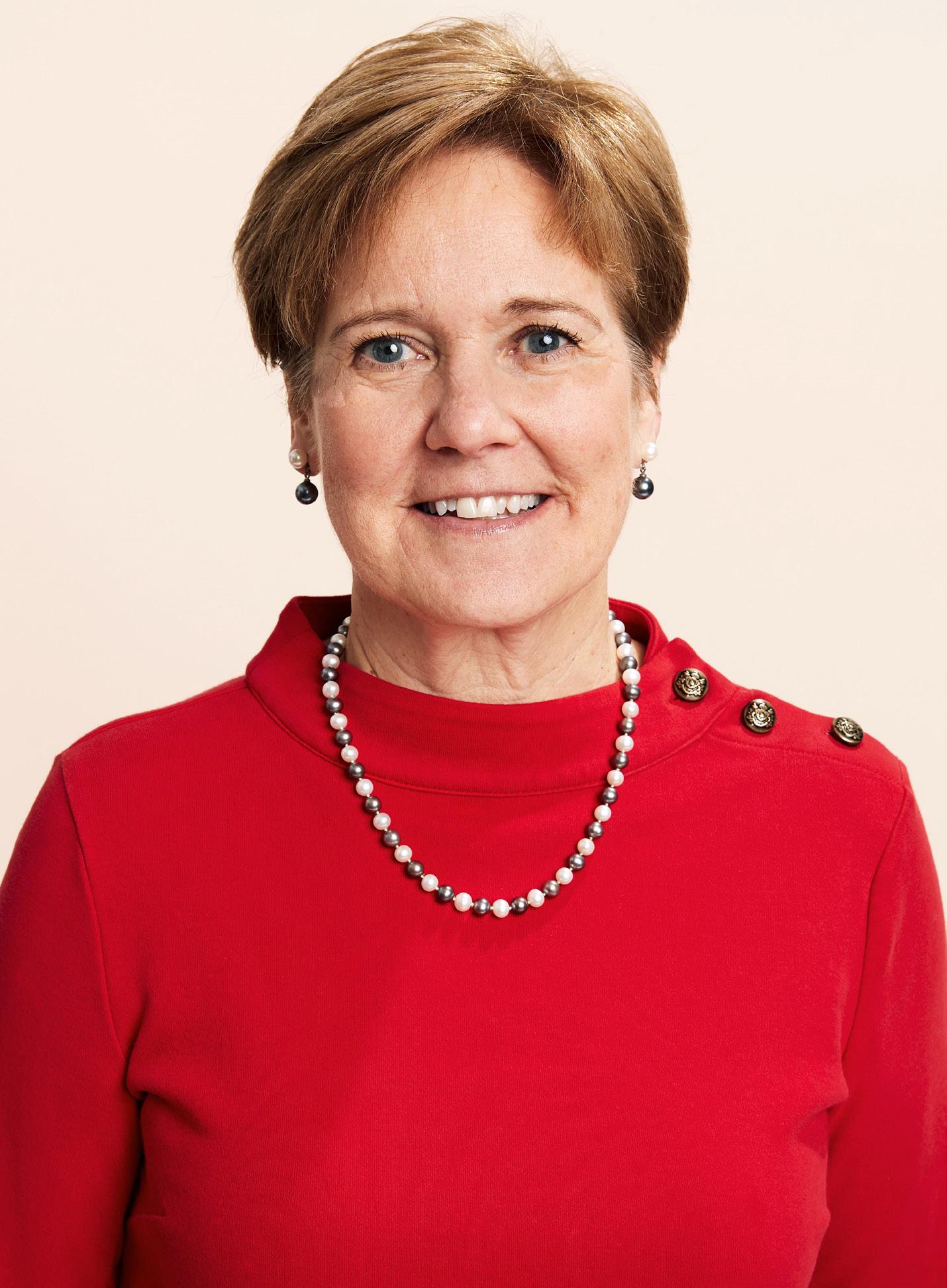
The friend was looking for a recommendation for someone who could come on board as assistant controller. After looking at the job specs, Gleason realized this was a job she wanted for herself. Not long after, she snagged the job and was quickly promoted to controller. Three years later, the company made her a vice president. Gleason recently completed a six-month stint as acting CFO while the company completed its search process, culminating in the recent hiring of Can Yazicioglu as its new CFO.
Under the prior CFO, Gleason was given a great deal of autonomy to run the controller function, and there was a very clear delineation between the Financial Planning and Analysis (FP&A) team, responsible for forecasting and budgeting, and the pure accounting side. As acting CFO, one of the bigger adjustments Gleason had to make was getting up to speed with FP&A and familiarizing herself with budgeting and forecasting and longer-term strategic issues.
“Bridging the divide between the two sides was a big challenge, but also a great learning opportunity that I really enjoyed,” she explains.
With a new year and a new CFO, Gleason is transitioning back to her previous role as VP and controller.
“I’m still in this in-between world,” Gleason shares. “I am still very much involved in a lot of the processes that were happening while I was wearing the CFO hat.”
For example, she began working on the budget for 2020 and will help complete it alongside Yazicioglu before fully transitioning back to her old position.
Not that Gleason will be worried about how she’s going to spend her day. Vineyard Vines has several big projects going on from the controller side, such as implementing the new leasing standard that the Financial Accounting Standards Board released.
Nancy Gleason VP and Controller Vineyard Vines“That’s a big, heavy lift on our side,” she notes. “So, it’s a pretty busy day regardless of what hat I’m wearing.”
Since she joined Vineyard Vines in 2011, Gleason has seen a lot of growth at the company, founded—and still led— by brothers Shep and Ian Murray. The company, which opened in 1998, has expanded from thirty storefronts to about
one hundred in addition to building a successful e-commerce business.
“Even from a workforce side, we’re now sitting at 275 people at corporate headquarters and we were barely at 100 when I started,” Gleason says. “It’s been very exciting to be part of that growth.”
The expansion has played an integral part in brand awareness in new markets, and
And we’re ready to listen. We’re strong partners who understand your industry, your challenges and your goals. You’re ready for the next stage of your unique business journey. And we’re ready to help.

For more information, visit us at citizensbank.com/commercial or contact:
Doug Moore Senior Vice President MetroNew York
douglas.j.moore@citizensbank.com
203-900-6811
Gleason notes that Vines is looking to double its footprint in the next three to five years.
“Even though that might seem counter to what you hear in the news, we see retail playing an important role in the way we engage with our customers,” Gleason says. “We are committed to providing a best-in-class customer experience, and we find the stores a critical element to achieving that. It’s becoming more about creating an experience rather than just a shopping destination.”
The company’s numbers confirm that e-commerce rises with expanded storefronts as people are introduced to the brand. Vineyard Vines is also planning on going international, taking a slightly more measured approach to ensure they do it consciously and carefully to succeed.
“Our brand is rooted in the idea that ‘Every Day Should Feel This Good,’ and as our brand has grown, we’ve seen through our e-commerce business that we have a
growing international audience who shares that mentality,” Gleason says. “We’re going to take a test-and-learn approach, and partner with local market experts who can help us tell our story in an authentic way.”
Other areas where Gleason’s financial expertise is coming in handy are with brand and license extensions where she helps explore the value of moving into other product lines. For example, last year the company collaborated with Target to get visibility in other lines (like pet products and homeware) to see how they would resonate with customers.
Gleason is still as excited about numbers today as she was back in grade school solving mathematical equations.
“I love what I do and love working for Vineyard Vines and Shep and Ian,” she says. “You spend a great deal of time at work, and I think when you’re able to say you love what you do and who you do it with, it goes a long way to making for a happy life.”
“We’re now sitting at 275 people at corporate headquarters and we were barely at 100 when I started. It’s been very exciting to be part of that growth.”
NANCY GLEASON
To Ashley Halfman, her journey to vice president and general counsel of Printpack, a world-leading flexible and rigid packaging company, is like something out of a fairytale. “I sometimes compare myself to Goldilocks,” she says with a laugh. “I started out at one of the largest law firms in the world, then I worked for a small boutique law firm, and then I ended up at Miller & Martin, which is a mid-sized firm, before coming to Printpack.”
And from the moment she joined Printpack, Halfman says, it has felt just right.
“When I first met with the former general counsel for an interview, he shared a booklet with me, this little printed booklet that has all the names of the recipients of Printpack’s service awards,” Halfman says. “We give out service awards for everyone who has been here twenty years and longer, and many of our associates have been here twenty, thirty, even forty years.”
“So, it was just page after page after page of names in that booklet,” Halfman continues, “and that longevity at one company is very unusual in this day and age.”
The booklet made a big enough impression on Halfman that she decided to join the Printpack family

Halfman has found a workplace worth waiting for at
in September 2016 as associate general counsel. And as she quickly learned, that word—family—was the not-sosecret key to the long careers of all the names she had seen listed in that booklet.
“We are a family-owned company. We have been since our inception—Mr. J. Erskine Love Jr. started the company in a basement with one machine and one associate, and the Love family has been at the helm of the company for the last sixty-four years,” Halfman says. “And it still retains that family atmosphere today.”
The company’s core values were created back in the 1950s, Halfman explains, but they are still the “bedrock”
 Ashley Halfman VP and General Counsel Printpack
Ashley Halfman VP and General Counsel Printpack
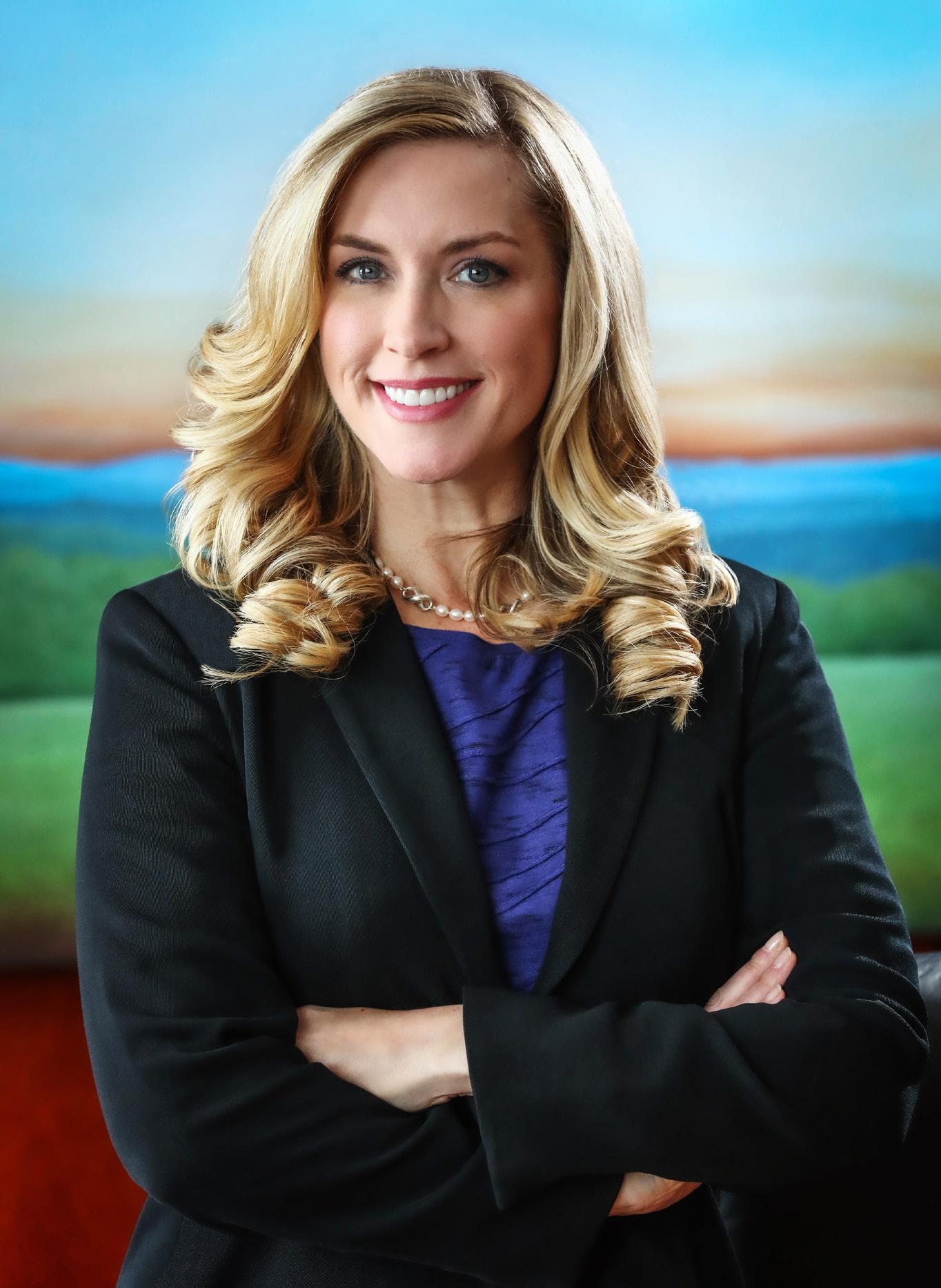
of Printpack’s culture and operations today. “Those values are just about treating people right,” Halfman says simply. “They’re about caring about people. Every workplace talks about their culture or tries to define their culture. But I think the proof is in the pudding here.”
Halfman herself has made a point of contributing to that culture through a women’s initiative called Inspire. “Inspire has been around for eleven years now,” says Halfman, who serves on the Inspire leadership team, “and our mission is two-fold: to attract and retain female associates and to support a strong leadership pipeline for women.”

Although many of Inspire’s projects—such as the effort to establish wellequipped, private mother’s rooms at each of its nineteen facilities in the US and Mexico—center strongly on women, the initiative also aims broadly to enrich the lives of all Printpack associates.








“We hold a yearly leadership forum that any Printpack leaders can attend and sponsor a monthly networking lunch group for everyone in our Atlanta locations. The Inspire team is just a really amazing, dedicated group of women who have worked very hard to make life better for everyone across the company,” Halfman says.
Thanks to initiatives like Inspire and the family atmosphere cultivated by the company’s leadership, Halfman says, the average Printpack associate stays with the company for twelve years, and a large number of associates have been there twenty years or more. However, there is one notable challenge associated with that statistic—namely, the imminent retirement of the company’s numerous veteran associates.
“A lot of these longtime associates have already started to retire, including our former general counsel and several other senior executives,” the GC says. “One positive effect is that we have some fresh, new per-





“We want to continue to be an employer of choice and attract folks who feel that they are being treated well, and that they are part of the family.”


In addition to her titles as vice president and general counsel, Ashley Halfman also holds the distinction of being the first woman to serve on Printpack’s senior leadership team. But that “first” designation does not reflect the true culture of the company, she says.
“We have really great representation of women on the managerial level,” the GC explains. “I’ve been very fortunate, here and early on with my mentors, to have other people who advocated for me because they saw how hard I worked. It’s important to me that people inside and outside of Printpack know that, as a company, we embrace diverse perspectives.”
spectives in our leadership and in our senior ranks. But on the downside, we are also losing a great deal of expertise and institutional knowledge.”
As a result, attracting and retaining talented people is one of Printpack’s top priorities right now, Halfman says. The company has been reviewing its pay and benefits packages as well as all of the “intangibles” that factor into associate engagement. It has recently undergone a study to ensure its pay and benefits are in line with the industry standard, and has also enhanced its vacation, teleworking, and paternal leave policies.

As general counsel, Halfman has been playing a key role in those efforts, helping other department leaders ensure that their policies are not only best-in-class but also compliant with all relevant laws and regulations. And that can be a challenge, she notes, given all the recent regulatory changes at both state and municipal levels
regarding sick leave, parental leave, and other paid time off.
To Halfman and the other members of the senior leadership team, that challenge is more than worth taking.
“We’ve worked hard to attract top talent, to make sure that our workforce is diverse and inclusive, and to incentivize the performance of our younger or newer folks who are moving up into leadership positions,” Halfman says. “There are a lot of initiatives still in progress, but our leadership recognizes how important this is—we want to continue to be an employer of choice and attract folks who feel that they are being treated well, and that they are part of the family.”
Alston & Bird gladly congratulates Ashley Halfman on her well-deserved recognition. Our commitment to Printpack dates back several decades, with founders of both organizations working side by side to grow this notable packaging company. We look forward to working with Ashley as she continues guiding Printpack toward ever greater prosperity.
Gouchev has built her firm to be everything that modern companies need from a big law firm—but without any of the drawbacks
By ZAYVELLE WILLIAMSON Portraits by GILLIAN FRYIt is not unusual in business or legal circles to say that you are focused on the client. But to Jana Gouchev, managing partner and founder of Gouchev Law, “focusing on the client” means going beyond what any other law firm has ever done in the name of client service.
A full-service national boutique firm based in Manhattan, Gouchev Law has cultivated a reputation for providing the same top-notch quality of service that large firms are able to offer—but with unparalleled speed, communication, and cost savings.
Profile caught up with Gouchev to chat about the strategies, tools, and philosophies that have made the firm so distinct within the industry.
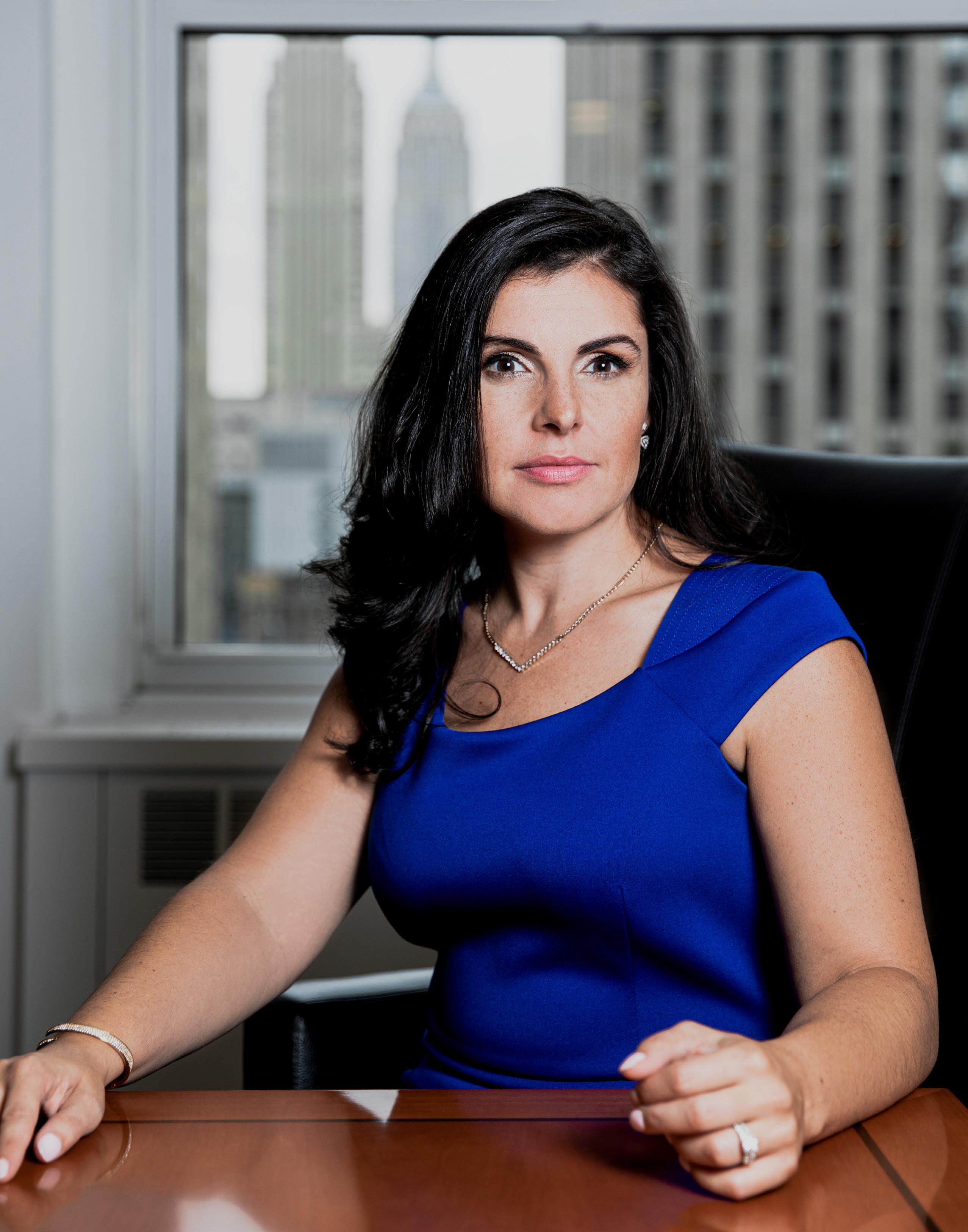 Jana Gouchev
Managing Partner
Gouchev Law
Jana Gouchev
Managing Partner
Gouchev Law
What makes Gouchev Law such an attractive choice to general counsel and other top-level executives?
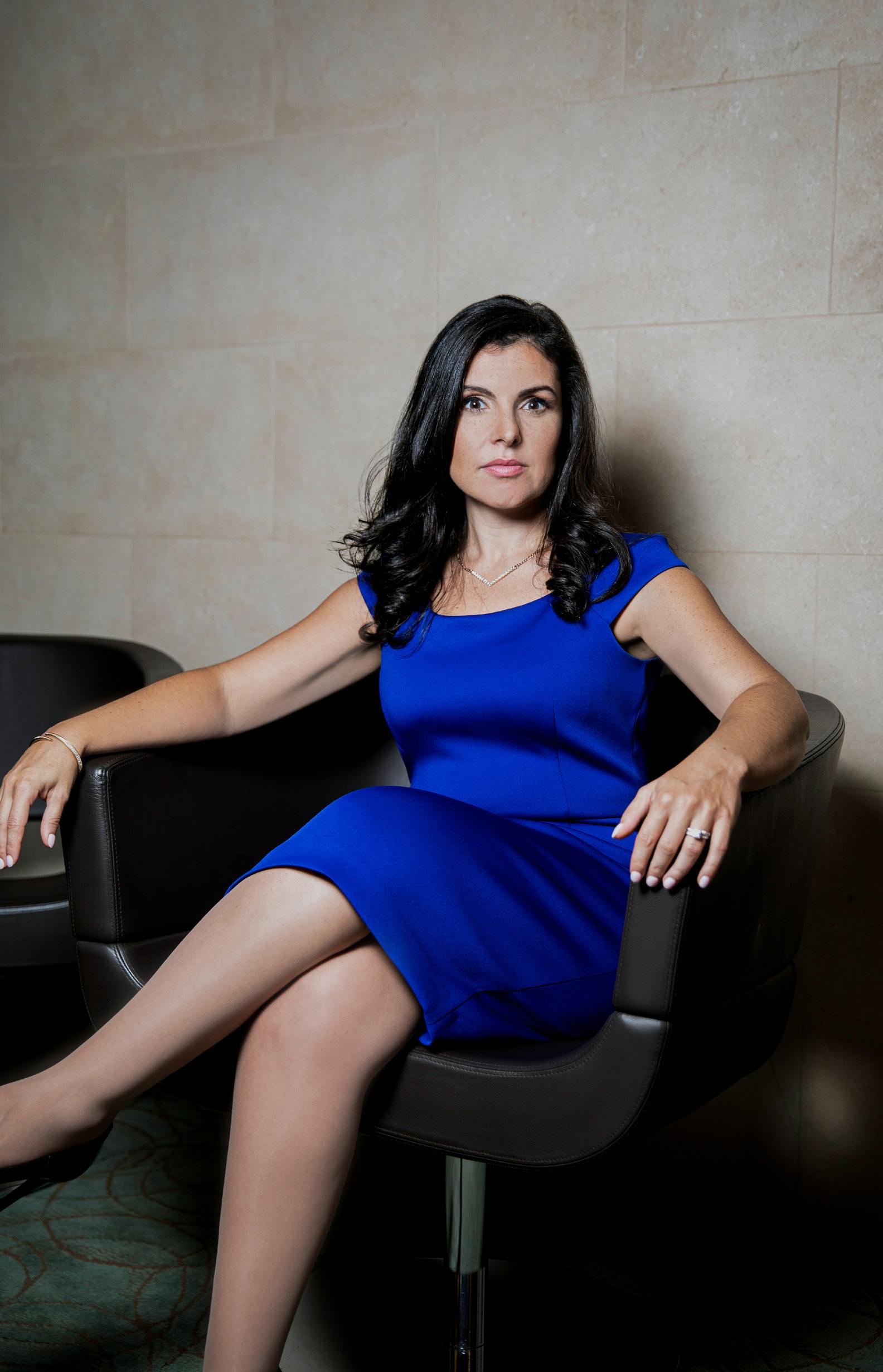
We truly do treat every client like they’re our only client. To start, we don’t take on too much—we’re very selective about choosing our clients. We only work with clients whose businesses and industries we are intimately familiar with, and then we take a deep dive into research before they even hire us.
We interview the clients themselves to try to understand where they’ve been, where they want to go, what their business practices are, and to make sure that we are aligned with their business practices and goals. We make sure that we have a team available that specializes in the kind of work the client needs, whether that’s master services agreements, employment agreements, or mergers and acquisitions.
But we also talk with clients’ legal teams, marketing teams, sales teams—sometimes even their entire C-level executive team. We want to get a holistic understanding of what is going on in the company and take on only the clients that we know we can help, and that’s why the relationships work so well in the long term.
If being strategic about the clients you take on is the start, what comes after that?
We are committed to our goals, and that means being available, being relationship focused, being fast, and ensuring that we always provide high-quality service.
We make ourselves constantly available to our clients, but we also focus on that accessibility in our relationships with internal members of our clients’ companies. CEOs, marketing representatives, sales executives—those relationships are also very important and help us drive maximum value for our partners.
That commitment to close and to build long-lasting relationships are why each of our attorneys spends three times longer in training than lawyers at other firms. All of
our attorneys have at least fifteen years of experience—we don’t have any paralegals or first-year attorneys working on cases in order to save costs—so we know that they’re able to provide an extremely high-quality product. Nevertheless, we don’t give our attorneys any clients until they’ve been here for a year. We want to make sure that they really understand our culture, that they’re truly ready to work with our clients and provide them the best service possible.
Being fast often comes down to technology. I use the most advanced technology available to save time, make processes for clients smoother, and enable us to provide more consulting-style advice. It’s the technology being used by the biggest law firms out there, but at a fraction of the cost.
You seem to have set a very high standard for yourself and for the firm. That level of service doesn’t come easily. Does Gouchev Law face any particular challenges because of that commitment?
Yes, our commitment to our goals of being available, fast, and relationship focused is
slowing our growth rate a bit. Our revenue is half of what it could be. But that’s OK for me because, like with any other business, growing too fast can hurt you.
Speaking of the firm’s growth, could you share some of the values or personality traits that you particularly look for when vetting new hires?
I have a staff that truly embodies our values. We are exceptionally dedicated, passionate, strong, and relentless in our efforts to protect our clients. We are a very diverse team, and the fact that we come from different backgrounds and have different viewpoints translates to the level of service that we are able to provide to our clients.
To work here, you have to be a deal maker and a diplomat as well as a tough negotiator. Those values are what help us get results for our clients, but they also speak to who I am and why I created Gouchev Law. I’ve seen how law firms and lawyers typically work, how they often get a bad rap for inefficient communication, slow turnaround, and a work product that’s just not quite there in
“We don’t give our attorneys any clients until they’ve been here for a year. We want to make sure . . . that they’re truly ready to work with our clients and provide them the best service possible.”
JANA GOUCHEV
terms of quality. And companies have seen that, too. So when those companies come to us and see that we don’t have a revolving door, that our clients stay with us for a long time and that we are wholly committed to helping our clients design and execute their goals, they can see the difference.
What are some of the main practice areas that Gouchev Law specializes in?
We are a corporate law and intellectual property firm—we handle everything that companies might need from a corporate and IP law firm, from corporate documents and contract law to employment agreements and corporate financing. On the IP side, we do trademarks and patent cases. But that IP work often goes hand in hand with corporate law because sometimes clients need both.
Do you have any ideas as to how you want to continue the firm’s track record of growth and innovation in the years ahead?
We have the foundation for growth—we have thirteen attorneys as well as other staff members who focus on project management, technology, marketing, and operations. They’re like mini versions of the departments that big firms often have; they’re there to make sure that everything is moving quickly and smoothly and satisfactorily for clients.
We’ve grown our client base because of that internal structure and because of the type of team member that we have on board. Now, we’re prepared to use technology to make our operations even faster and even more accurate so that we can build strategically on that foundation.
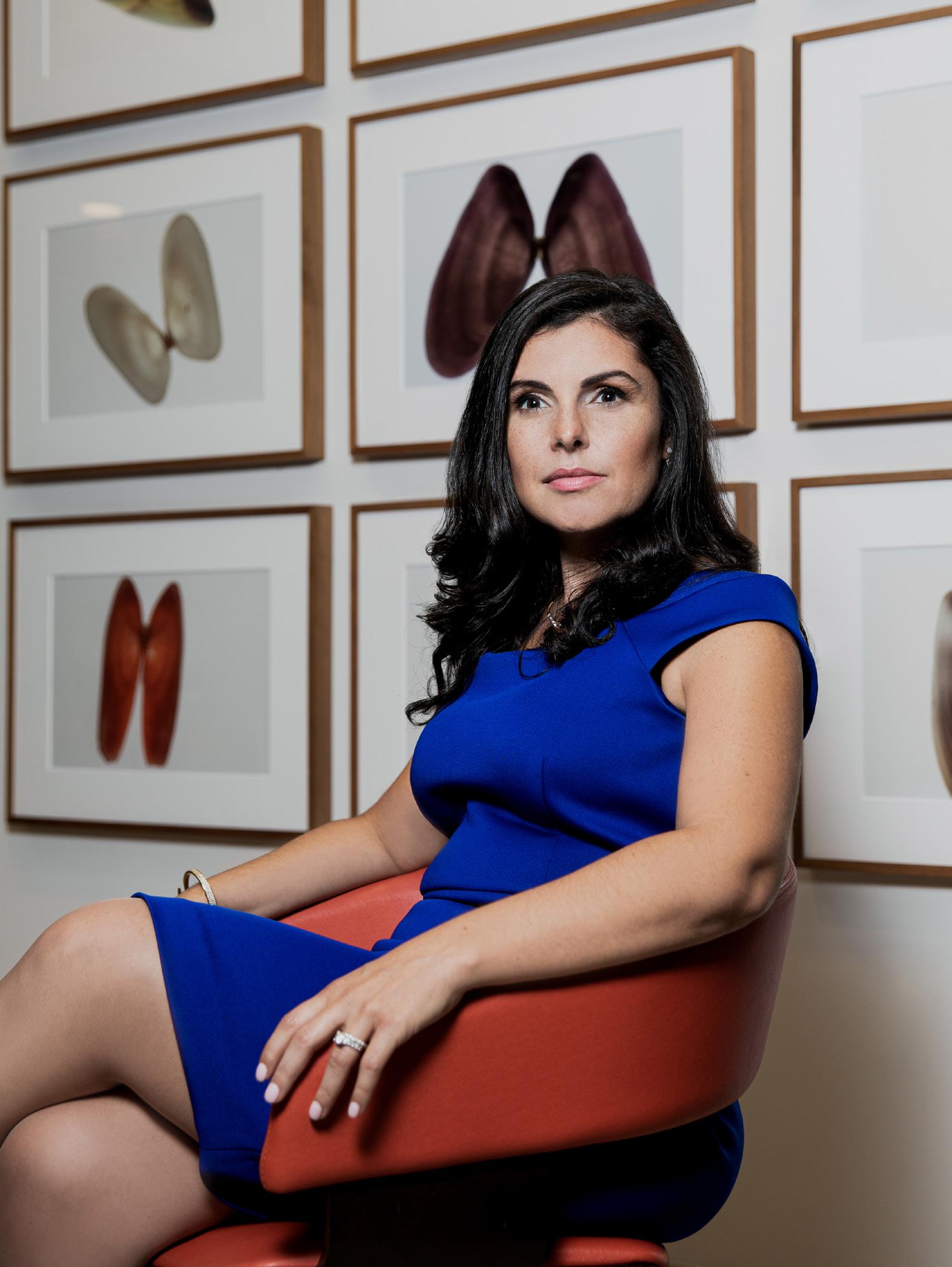
“We only work with clients whose businesses and industries we are intimately familiar with.”
JANA GOUCHEV
Charlotte
Pomasl focuses on morale and culture for Newpark’s tax department By LORI FREDRICKSON Portraits by NATHAN LINDSTROM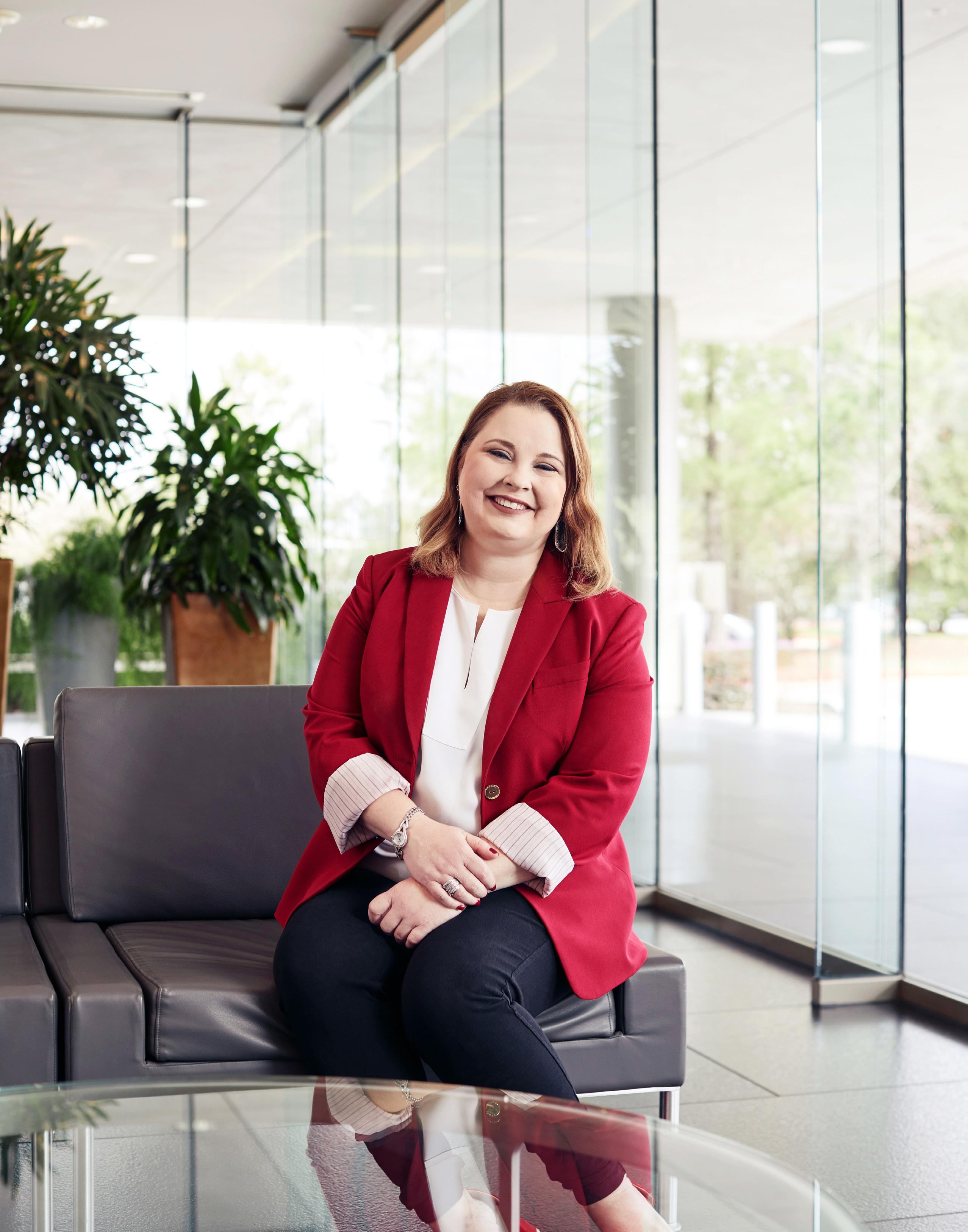 Charlotte Pomasl VP of Tax Newpark Resources
Charlotte Pomasl VP of Tax Newpark Resources
When Charlotte Pomasl was first bitten by the accounting bug during an introductory course at St. Mary’s University, one of the things she loved was the diversity of opportunities. After all, she explains, accountants are vital to every type of industry.
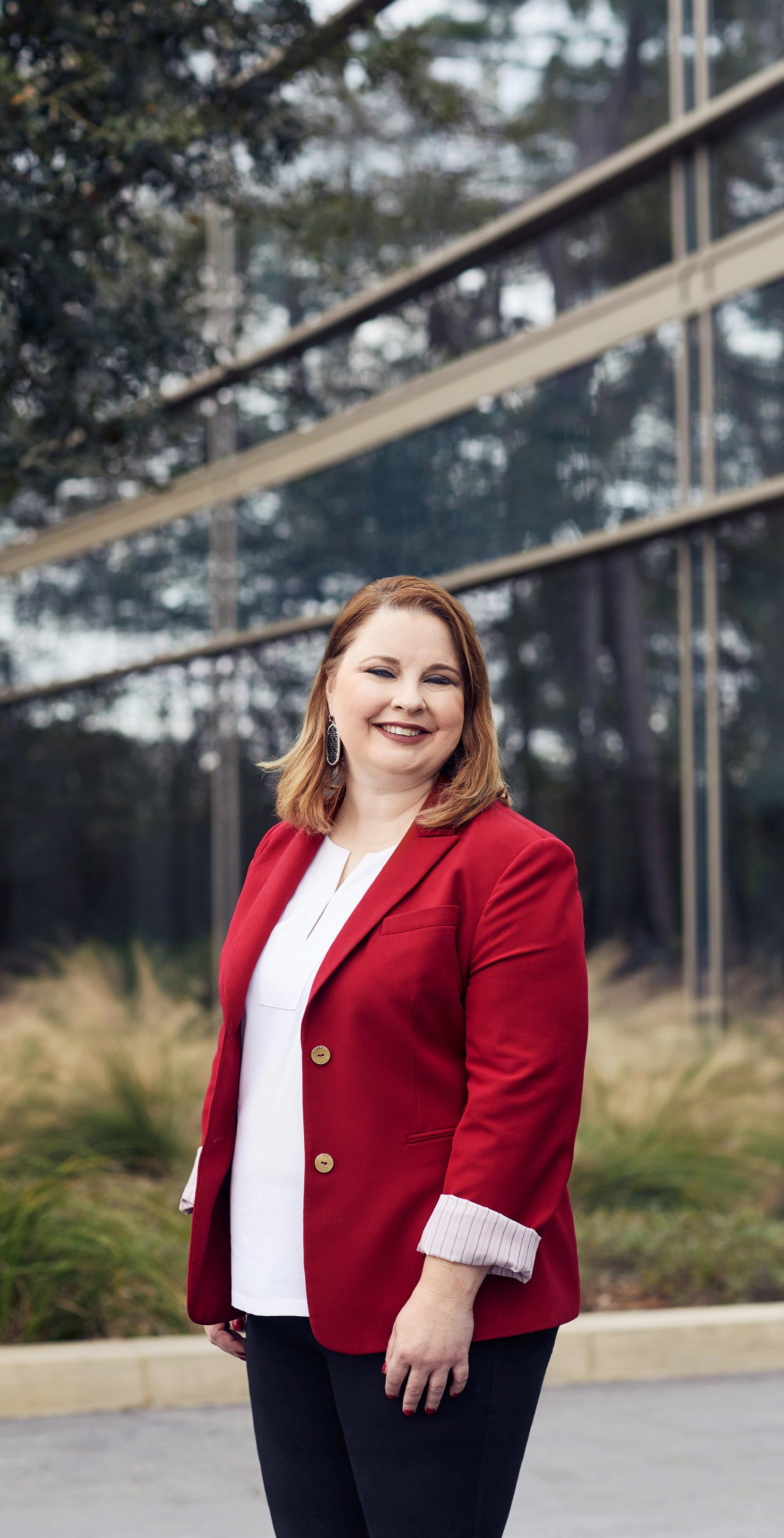
At the end of her introductory corporate tax course over the summer, she knew that she wanted to specialize in taxation and went on to receive her master’s in taxation from the University of Texas at Austin. Pomasl focused on tax return preparation early on in her career while working at Deloitte and AIG American General.
As she moved up the ranks, she learned that being an effective tax executive depends on learning your client’s or employer’s business and providing advice that is relevant to daily operations.
“To be a good tax advisor, you have to really understand the business and the challenges that the business faces,” Pomasl says. “And to provide leadership, you also have to be a good communicator. You have to take something that’s very complicated and explain why management should care.”
Both were integral to the start of her leadership as vice president of tax at Newpark Resources, located in her hometown of The Woodlands, Texas. In addition to Deloitte and AIG, Pomasl built her international tax expertise at Chicago Bridge & Iron as well as in Ernst & Young’s International Tax Services practice as a senior manager.
Then, in 2012, she had the opportunity to be the international tax senior manager for the US arm of French multinational oil and gas company TOTAL. For the next five years, she streamlined processes while immersing herself in the tax issues of the oil and gas industry.
“TOTAL prepared me very well for my job at Newpark. It is a fast-paced environment where communication with both US and French executive management is key,” she explains. The role gave her a new perspective on communicating complex tax issues to executives. “Not only are you explaining a different country’s tax laws to colleagues overseas, but you also have to explain the
impact succinctly, which can be a challenge when dealing with complex tax law.”
And when Newpark approached her about joining in 2017, then as its director of tax, she quickly found that they were interested in her not just for her expertise in the industry but also for her ability to navigate cultural barriers.
“One of the first challenges I faced when arriving at Newpark was improving the morale of the tax department,” she explains. “Tax is a demanding profession, and overtime and deadlines can make it difficult to retain staff. My challenge was reducing overtime and understanding the needs of my team to improve morale.”
To tackle this challenge, Pomasl scheduled one-on-one sessions with all members of her team from her direct reports to entry-level positions, asking each a set of questions about what they liked and did not
like to identify common themes and areas for improvement.
A key measure was empowering the tax team to manage their schedules. “I don’t like the term ‘work/life balance’,” she says. “On any given day, work can sometimes take more time, and other times, life outside of work takes more of a priority.”
Another initiative was making sure the tax department had more interaction with other groups, rather than staying siloed. She also introduced weekly team meetings. “I wanted to get to know my team, and I wanted them to get to know me,” Pomasl says. “I always tell people that I’ll trust them until they give me a reason not to.”
Building a stronger culture in her first year was integral to the company, particularly when they were hit with two major challenges. First was during and in the aftermath of Hurricane Harvey in August
“I wanted to get to know my team, and I wanted them to get to know me; I always tell people that I’ll trust them until they give me a reason not to.”
CHARLOTTE POMASL
2017, during which she and team members bonded through crisis and as others left for work closer to their homes. The remaining tax team really connected as they worked through deadlines and a large acquisition.
The next challenge was when the Tax Cuts and Jobs Act of 2017 was enacted later that year. “This was on December 22, which meant that for our 2017 financial statements, we were going to have to understand and reflect the tax impact of all these tax law changes,” Pomasl says. From then on it was nonstop meetings and phone calls, working feverishly to understand how to apply the new tax laws. “I don’t think any tax professional had a great Christmas that year,” Pomasl jokes.
Nevertheless, she made a point to boost team spirit, putting up holiday decorations to make the office environment more festive.
And she focused on being able to explain the changes to management.
“At this point in my career, it’s not about number crunching; it's about being able to spot when there's an issue, being able to explain what the issue is, what the risk is, how to fix it, and why we should care about it,” she explains.
One tricky item the new act introduced was Global Intangible Low-Taxed Income (GILTI), a law that effectively ended the deferral of US taxation on foreign earnings. Because GILTI impacts a company’s effective tax rate, it was critical to understand the rules quickly and explain the tax implications to management.
Since those early hurdles, she’s focused on continuing to streamline processes. Pomasl has introduced new technology to automate Newpark’s tax provision process, focusing
“At this point in my career, it’s not about number crunching; it’s about being able to spot when there’s an issue, being able to explain what the issue is, what the risk is, how to fix it, and why we should care about it.”
CHARLOTTE POMASL
on value-added projects and working more efficiently to manage the team’s overtime without sacrificing accuracy. She also negotiated to outsource filing state returns, freeing up her team for more critical valueadded work.

Pomasl has also continued to check in regularly to make morale a focus. “There’s so many things that would be called low-hanging fruit, but I believe these things have really made a difference,” she explains. This includes providing the team with the necessary technology to efficiently and effectively work,
expanding training opportunities, decorating for various events and holidays, and making the tax area a warm and inviting place.
“My philosophy as a leader is that when things go well, my team gets all the credit,” Pomasl explains.
“It’s my job to ensure they have the tools they need to do their job and to remove obstacles. I strive to create a safe environment where my team can take on new challenges, make mistakes, and learn from them. To me, the best part of having a leadership role is mentoring my team.”

Brett Beveridge on how he successfully grew T-ROC from scratch to help retailers optimize their brick-and-mortar strategies
By RUSS KLETTKE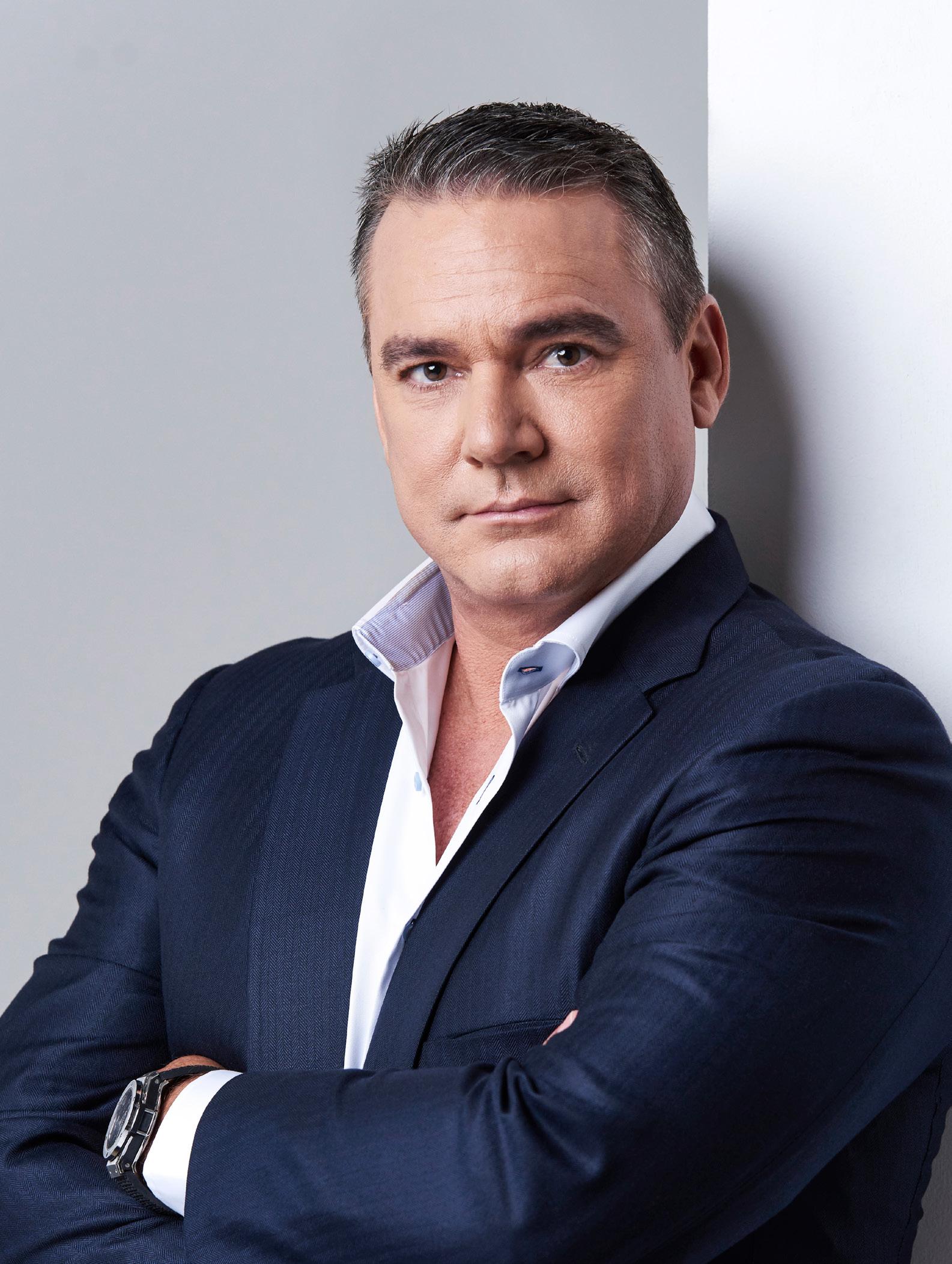
Brett Beveridge throws out a surprising statistic in presentations he gives to those interested in the retail industry. It is how, contrary to popular belief, only about 12 percent of consumer commerce happens online, with the vast majority still occurring in traditional stores.
Brick-and-mortar retailing is alive and well, the CEO and founder of The Revenue Optimization Companies (T-ROC) is happy to report. And Beveridge would know: a huge part of his company and its proprietary digital tools are focused on helping companies do a better job of selling products in traditional stores.
Coral Gables, Florida–based T-ROC is a sales performance agency working largely in the US and Puerto Rico, providing custom training, merchandising, and inventory management to the likes of Sam’s Club, Apple, AT&T, Cricket, Dollar General, Walgreens, and many others. T-ROC has been recognized six times on the Inc. 5000 list of fastest-growing companies—it employs six thousand people full-time and has twenty thousand contingent staff.
Given that the company was founded in 2000 and really hit its stride about eight years later, it’s no stretch of the imagination to understand that as went the Great Recession—when retail sales dropped to their lowest point in thirty-five years—so too went most of T-ROC’s clients.
“It was a really tough time,” says Beveridge, whose firm had just rolled out a home improvement merchandising concept launch for the Home Depot in 2008. Occupying two thousand to four thousand square
feet of floor space in stores in six states, the program was suddenly pulled. “That took us back to zero.”
But Beveridge is a believer and a survivor. “We asked, ‘What do retailers need to do now in a recession?’” The answer was to help them make the most of the traffic and markets they were serving. T-ROC survived, as did its clients, and they clawed their way back as the economy did the same.
To be clear, there are a sea of changes happening now in how retail sales are transacted. Part of the trend is for online-based companies to nonetheless establish a physical presence in the brick-and-mortar world. Amazon bought Whole Foods at the same time it set up what look like old-fashioned
bookstores. Online clothing brands such as Bonobos offer “guideshops,” where customers are measured before ordering from a screen. Electronics retailers, including phone carriers, have dedicated stores—or stores within stores—in big box retailers. The distinctions between virtual and physical stores are becoming less and less clear.
Changes of this nature are in Beveridge’s blood, as is selling. He sold health club memberships in college and then, with a friend, he sold early versions of cell phones from a van in parking lots in the late 1980s. That business thrived, and they eventually established retail locations before selling the company to Sprint/Nextel.
From that experience, he came to understand that selling complex products requires special knowledge and skill, and that retailers could use outside help to finesse it. What has evolved are four companies—the Retail Outsource, Mobile Insight, the Consumer Insight, and SYMBITS—that each provide different types of services, operate under separate P&Ls, and all report to T-ROC, which handles financial management, start-up financing, legal, and other administrative functions.
Unlike some entrepreneurs who invent widgets that then require a business to sell them, Beveridge says he’s a businessperson largely driven by a will to succeed. But truthfully, given how he sells being good at selling, he’s not so different from the widget designers: he sells the thing he knows best.
Beveridge created something else that is essential to fast-growth companies, and that’s the T-ROC culture. “I absolutely am the guy high-fiving and having fun, and appreciate

working where people are proud of what they do,” he says. That culture includes a core set of values—be entrepreneurial, work honestly and with integrity, embrace change and the learning that change requires, amaze your customers, and have fun—which come naturally to him. “The company culture is my life values.” He believes it was critical to surviving the recession.
Twenty years into the business, Beveridge is confident he’s built a team of people who are as adept at selling and managing as he is. He offers no distinct plans for exiting the business, but he is taking stock of what he’s learned and will share it in a book set for release in the first half of 2020: Do It Anyway. He writes about the whys and hows of pursuing entrepreneurial dreams.
“For people who are on the fence about starting a business, I say in the book, ‘go for it,’” Beveridge says. “They should know bad things will happen, but there are ways to survive it.”
“I absolutely am the guy high-fiving and having fun, and appreciate working where people are proud of what they do.”
BRETT BEVERIDGE
Jeanne O’Connor was double majoring in psychology and business at Montclair State University when it occurred to her that human resources sits at the intersection of her two degrees (she graduated with both a BA and a BS).
“I realized I could apply what I enjoyed from psychology to a business setting,” she says. “The biggest draw for me was knowing I could come into an organization and positively affect how employees perceive their job, manager, culture, company, and career.”
By STEPHANIE ZEILENGAToday, she’s heading up some notable HR transformations as senior vice president of HR at Billtrust, a business-to-business payment provider where she’s been overseeing workforce planning, employee development, total rewards, and employee relations since she joined the company in 2011. Her tenure has coincided with a time of tremendous growth for the company, which isn’t coincidental: that success is partly due to the culture O’Connor has created and nurtured.
Billtrust is routinely included on the Inc. 5000 list of the fastest-growing private companies in North America; today, it boasts 565 employees in 22 states, with a 98 percent customer retention rate. “My role is to drive and nurture Billtrust’s organizational culture, attract and retain great talent, uphold our values, and ultimately make sure all of our employees become Billtrust ambassadors— people who authentically advocate on our brand’s behalf,” O’Connor says.
Last year was particularly prolific for O’Connor and her team as they headed up two major HR projects. One was the development and soft launch of Career Central, a self-service HR system for employees that catalogs organizational job families and job descriptions. Created entirely in-house, the system aids employee career development and increases internal mobility, transparency, and alignment, O’Connor says.
“It allows employees to understand the types of roles available within Billtrust and what it will take to get there—it gives employees not only visibility, but a powerful way to take control of their career,” she explains.
O’Connor has facilitated Billtrust’s growth over the last decade by making the company a great place to work
The second major HR project in 2019 was designing and running Billtrust’s firstever management summit to celebrate the company’s eighteenth anniversary. The twoday event focused on key leadership skills, company growth, and strategy and goals moving forward. It provided management with content and tools to encourage deeper collaboration, as well as breakout sessions covering topics such as accountability and rewarding results.
“In order to promote the cohesiveness of the leadership team, we recognized the need for a forum that would allow managers to continue to evolve and develop their skill set while engaging in person,” O’Connor says. “We came out of it a more unified leadership team with better cross-functional communication.”
The biggest challenge of O’Connor’s role has proved to be attracting and retaining top talent—a constant need for a rapidly growing company like Billtrust. To improve the employee experience, last year O’Connor rolled out an agile quarterly check-in process, replacing the annual review with more frequent touchpoints. Her team also debuted the eNPS (Employee Net Promoter Score), which surveys employees on whether they’d recommend Billtrust to a friend. Both changes help HR to gauge employee satisfaction.
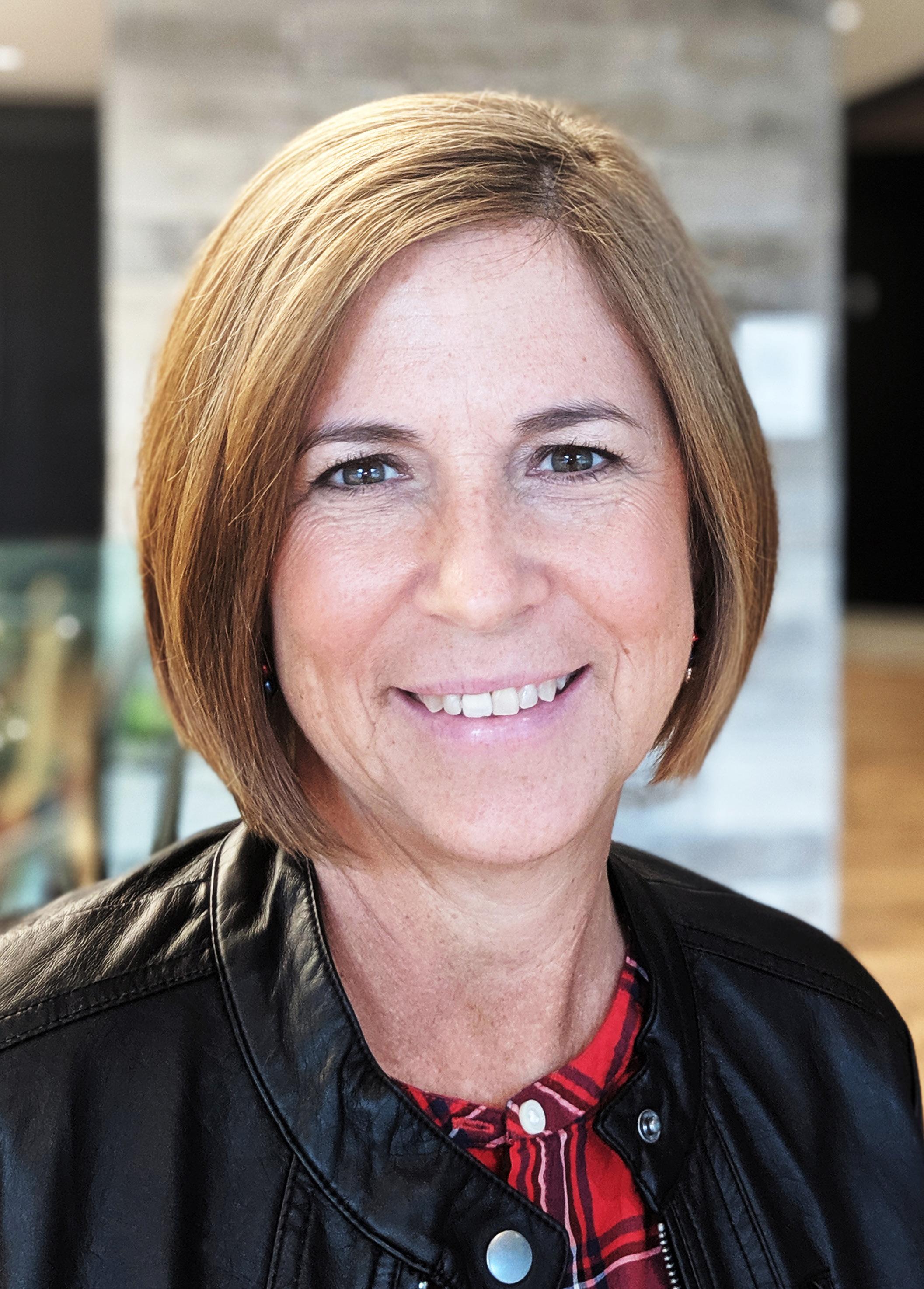
“We’re in a hot labor market, and that can make it challenging to hire the kind of rock stars we want,” O’Connor says. “To attract top-level talent, we provide an incredible culture with great perks and benefits, such as unlimited paid time off, free medical healthcare for all employees, and a wealth of personal career development opportunities. All of that, plus the technology we create here, helps candidates see advantages in working for Billtrust.”
O’Connor’s leadership made it possible for her team to orchestrate a huge amount of change within a single year. She leads by Mark Spiron
Jeanne O’Connor SVP of HR Billtrustexample and encourages autonomy, always reminding her team that their number-one goal is making Billtrust a wonderful place to work.
“All of our decisions and policies ladder up to that idea, and I strongly believe that happy employees make for a successful company,” she says. “I guide my team to make sure every decision we make results in a positive answer to the question, ‘Does this make us a great company and a great place to work?’”
Positioning HR as an ally to employees has been key to the maintenance of Billtrust’s culture through growth as well as O’Connor’s success at the company. It’s also what O’Connor identifies as the top challenge facing HR professionals generally. “The HR function has

traditionally been perceived as a ‘rule maker’ or ‘policy enforcer,’” she says. “It’s important for us, as HR leaders, to ensure that we are collaborative, trusted business partners to the organization and have a seat at the table to help drive the results of the business.”
To others in the HR field, O’Connor offers this piece of advice: “First, always remember to bet on people’s best. Assume they are coming from a good place and working hard. It’s amazing, when you offer your belief in someone, what they can deliver. Second, recognize that what got you here won’t get you there. We should look at everything we do consistently with a fresh set of eyes, always continually reinventing ourselves, our teams, and our organizations.”
“It’s important for us, as HR leaders, to ensure that we are collaborative, trusted business partners to the organization and have a seat at the table to help drive the results of the business.”
JEANNE O’CONNOR

The magnitude of world-changing events can often seem so transformational that it’s difficult to account for the how such events can alter the trajectory of a life in ways both big and small. For Teach For America (TFA) General Counsel Tracy-Elizabeth Clay, September 11, 2001, was both intensely personal as well as occupationally jarring.
Clay’s law firm partner was in the Pentagon when hijacked American Airlines Flight 77 struck the first floor
of the building. Clay’s partner wasn’t injured, but the magnitude of the day left a wider question lingering in Clay’s mind.
“I was working in one of the most prestigious law firms in Washington, DC, doing antitrust work, I was probably on track to make partner, and I wasn’t really sure how I had gotten there,” Clay remembers. “My professional path wasn’t lining up with my truest passions and interests.”
Clay had spent her early postcollege years working within marginalized communities. She was convinced she’d wind up in the policy space helping those whose voices often go ignored. But she was unexpectedly accepted to law school, and her journey simply shifted. But like so many, 9/11 was the turning point for a new direction for the young lawyer.

Clay would connect with Teach For America founder Wendy Kopp shortly thereafter, and for the past eighteen years has put her skills to use for an organization that operates in thirty-seven states and whose student population, if combined, would account for one of the nation’s top-five largest school districts.
 Tracy-Elizabeth Clay SVP, General Counsel, and Chief Risk & Compliance Officer Teach For America
Tracy-Elizabeth Clay SVP, General Counsel, and Chief Risk & Compliance Officer Teach For America
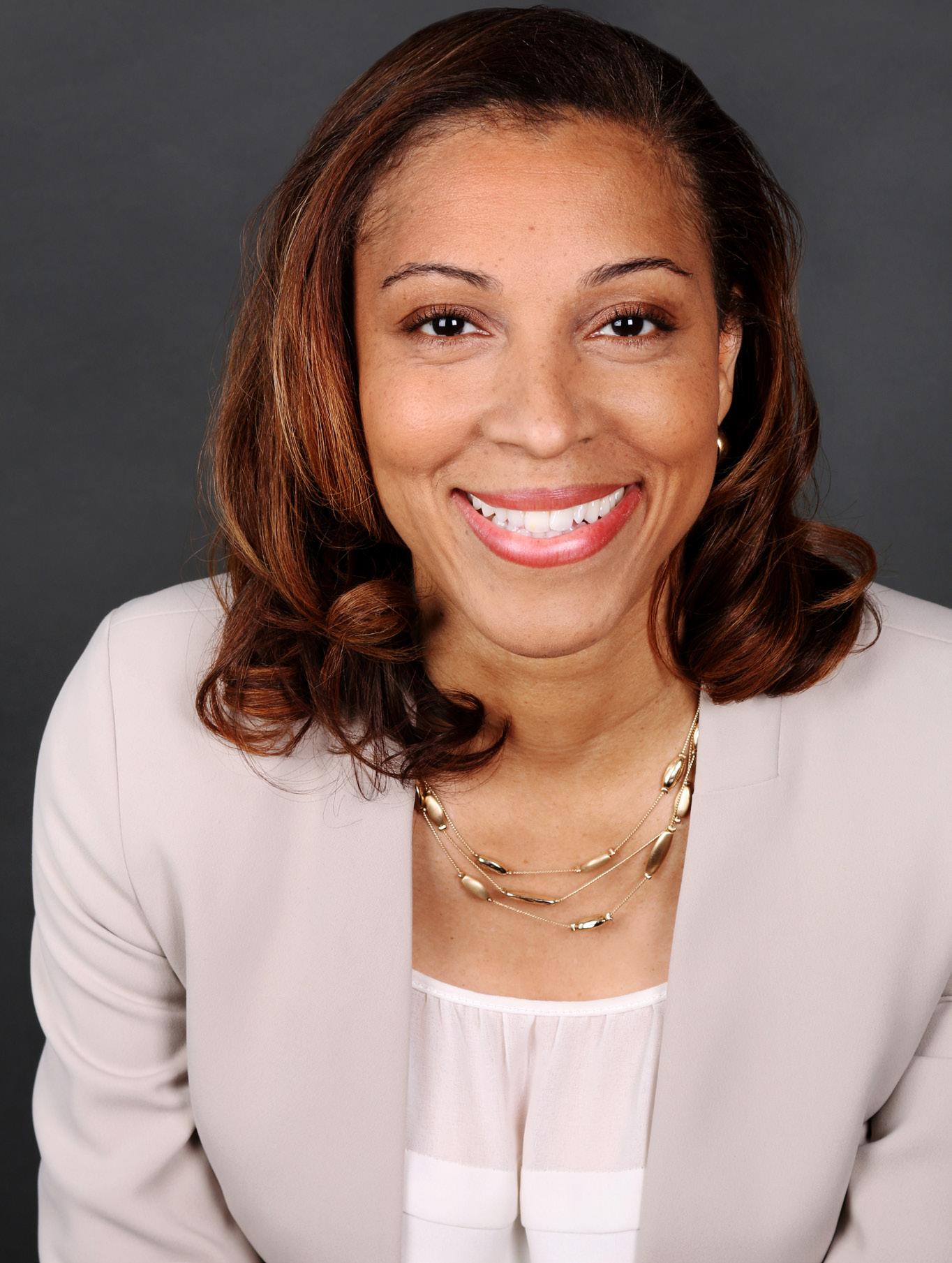
Teach For America seeks out leaders from top universities who are willing to teach at least two years in a traditional public or public charter school in a low-income community, a mission that Clay has aided not only in the legal field, but in acting as executive director in launching TFA’s Philadelphia region.
“When I first came here, the organization was at a place where it needed to expand, and I thought I would be here for two or three years to aid that effort,” Clay says. “Then, I assumed I’d just back into that policy space because it’s Washington, DC, and where else can you help make such a significant impact on policy? But what I found was that the work we were doing was so transformational for so many people that I just fell in love with the challenge.”
That love has been translated through a steady stream of different job titles, different regions, and expanded responsibility as TFA doubled in size and then nearly doubled again. Clay currently serves as GC and chief risk and compliance officer with an additional corporate secretary role.
Given Clay’s wide swath of responsibilities, and the multiple sets of federal, state, and local regulations that TFA must abide by in all of the communities it in which it operates, the GC has a very specific perspective on how her teams manage.
“I’ve orientated to the position so that there’s no way that I or the teams I lead can be in-house experts on everything; the landscape is too diverse and also too dynamic,” Clay explains. “What we’ve learned to do is really work from a risk paradigm. We constantly home in on the one or two most important things we should be focusing on, and that is always a challeng-

ing game of prioritization.” Among other things, it has meant leveraging relationships outside of the organization with partners to provide expertise when it needs to be specifically applied.
Leveraging relationships are essential for a much wider variety of reasons as well. “The most successful GCs seem to privilege people management, develop strong team cultures that bring in diverse perspectives, and exponentially increase their impact without exponentially increasing their resources,” Clay says.

The GC isn’t simply the most veteran, most tenured person to provide answers to the C-suite anymore. The job has expanded too much to make that the only box to tick off.
The Why Clay says that the value her teams provide is about more than formal legal advice. “I find in my role that one of the biggest values my people bring is the relationships they form with the rest of the organization,” the
“I’ve orientated to the position so that there’s no way that I or the teams I lead can be in-house experts on everything; the landscape is too diverse and too dynamic.”
GC says. “We’re able to play our risk management role much more effectively when we’re able to get in front of issues because we’re trusted partners. Fifty percent of this might be legal skill, but the other fifty percent is being relationship-savvy and a thought partner.”
The GC says that lawyers often have the reputation of being too process oriented. “I’m always, always about the impact,” Clays explains. “I’m asking ‘why’ first: what does this get us and the ‘how’ comes later.”

The approach makes sense for a lawyer who has spent eighteen years watching TFA alumni make real and fundamental changes for children across the country. The ‘why’ is so simple, and that’s what defines Clay’s own commitment to her role.


Patterson Belknap Webb & Tyler LLP is thrilled to congratulate our friend and colleague Tracy-Elizabeth Clay on this well-deserved recognition of her accomplishments. Tracy-Elizabeth is an exceptionally dedicated and thoughtful leader who inspires the best in those around her. We are proud of our close with relationship with Tracy-Elizabeth and her team at Teach For America.
A relationship is an investment and Quarles & Brady is a law firm that understands the enduring rewards of a solid collaboration. We see goals through your eyes, and then use our experience and insight to best position you to achieve them. Your challenges are our challenges: your successes are our successes.

Patterson Belknap Webb & Tyler LLP is a New York City based law firm with approximately 200 lawyers. Patterson Belknap delivers a full range of litigation and commercial law services.

For more information, please visit www.pbwt.com.

In 2018, the US Secretary of Commerce awarded Technologent an “E Star” Award for excellence in exporting. You will find it hanging in one of its twelve offices across the United States. Tammy Cooper, vice president of human resources and controller for the technology sales company, is very proud of the achievement.
However, she first talks about a different honor. For four years, the company has earned the employee-voted Best Places to Work honor, run by the Orange County Register
“It’s our secret sauce,” Cooper says. “We take care of employees. We do not see them as expendable. They are our greatest asset.”
Cooper oversees a great deal of the company’s infrastructure, and, while no two days are the same, all the days are “stacked with tasks from morning to night,” she says.
There are certain seasons of activities. October is benefit negotiation and open enrollment meetings, December is performance review, January is audits, etc. But year-round, she handles new hires, offboarding, mediation, payroll, and the myriad duties assigned to her and her staff, both in accounting and HR.
Fifteen years ago, Cooper worked in Cleveland’s steel industry. She arrived in California, took a job at a nursing home company, and found herself working eighty-hour-plus weeks. An offer to be within the HR depart-
ment at Technologent provided the opportunity to join a small, family-oriented company. The founders, a husband and wife team, insisted on work/life balance.
Three years in, maintaining that promise of balance, they offered Cooper an expanded role, vice president of human resources and controller, with robust teams under her in both departments.
The company began by selling only Sun Technology products. They opened a call center in Nebraska to support reps and quickly became a top ten seller. At just the right moment in 2008, they decided to diversify, and they now work with major accounts for other companies, including Dell, IBM, Oracle, and EMC. With Technologent now three hundred
People matter most, and Tammy Cooper keeps that top of mind as she transforms the HRIS systems and culture at Technologent
employees strong, Cooper says, “I’ve grown with the company.”
Taking care of employees means more than simply fulfilling the tasks of HR. It also means innovating and evolving. Cooper and her team recently completed a long look at their HRIS system, which was previously manual. A desire to integrate systems drove a shift, along with the fact that, Cooper says, “We sell technology; we need to be automated.”
With four criteria—an engaging and user-friendly interface, integration into their current payroll, using ADP, and flexibility— Cooper settled on ServiceNow as the new HRIS system. Beyond fulfilling top needs, ServiceNow also offers a chat feature and houses the company handbook and a history of all HR interactions for each employee. “We can be as paperless as possible,” Cooper says. Technologent also sells some of ServiceNow’s other products and is recognized as a customer and representative.
Talking about another company transformation, the VP says that Technologent employees are committed and work hard. She also knows that what they want has shifted. “People have a different idea of the workforce,” she says.
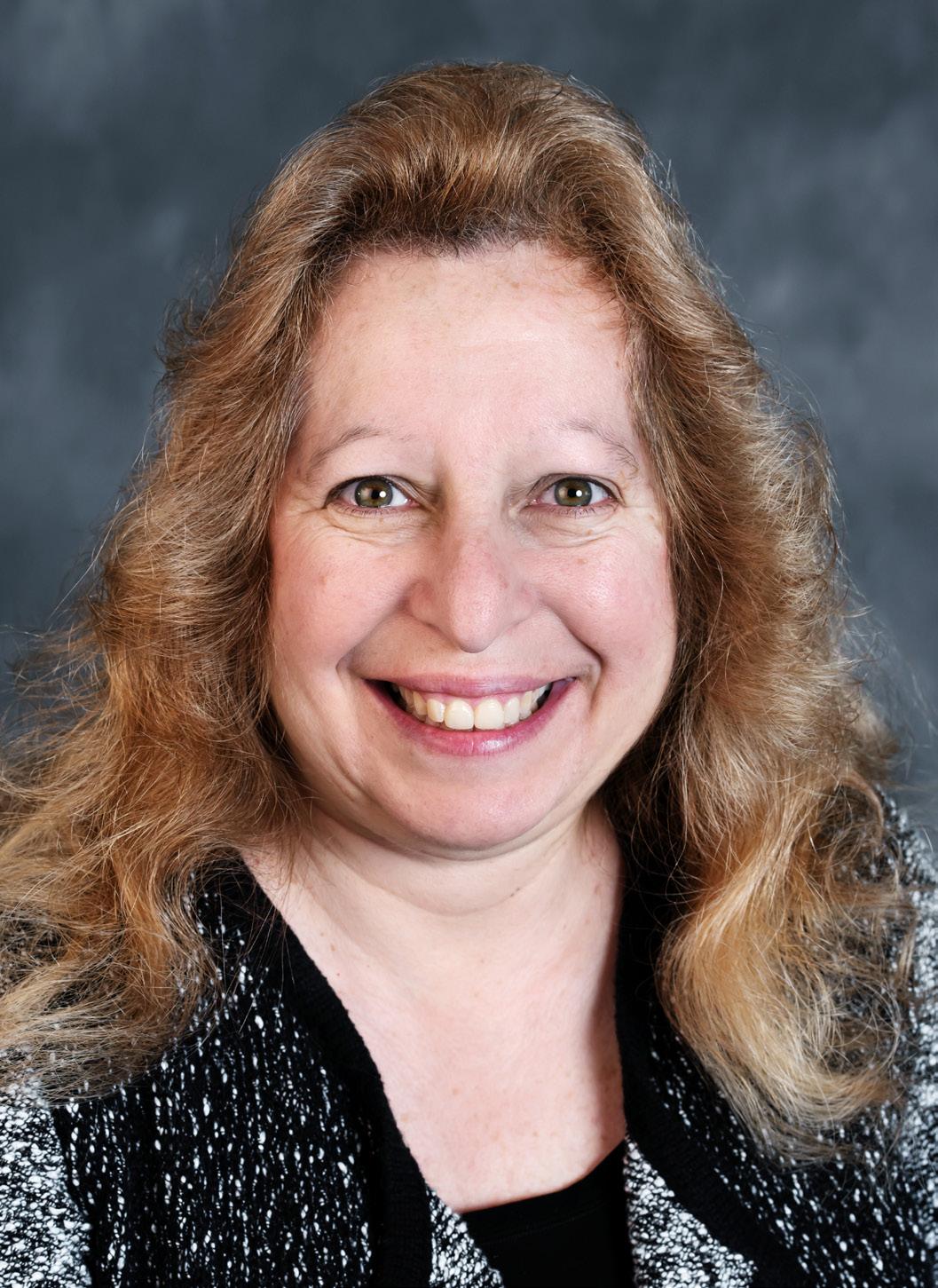
To accommodate this, Cooper is leading Technologent through a culture shift that centers around work scheduling. As more employees seek a 4/10 work week as well as work from home options, Cooper explores structures that will ensure each staff member is a successful person and employee.
She points to the central tension. “What do you need in your schedule to have balance?” she asks. “You need to be with your family. But you
also need to get your work done.” It is her goal to offer avenues for achieving this balance. While at work, Cooper wants to make sure employees are engaged and supported. Inclusion has been key in her look at culture shift. “We have people of all ages here. People in their seventies all the way to millennials in their twenties. We are diversified. We have a family feel,” Cooper says.
The company, bolstering that family feel, holds outings, lunches, games, and annual sales meetings in beautiful places. It also sponsors days of giving for causes that employees support. All this, Cooper feels, leads to an environment people want to be a part of and she backs it up with a statistic.
“Our turnover is less than 10 percent,” she says. “People want to retire here.”
Technologent has twelve offices across the US, as well as offices in the UK, Mexico, India, Columbia, Canada, and Germany. Maintaining a unity of culture across this geography presents a challenge. Cooper helps bring employees together annually and spreads the message of “One Technologent.”
Looking forward, the VP says that, while employees voted them best place to work in Orange County, they can always do better. With a shift to online HR systems and engagement in cultural change, there’s no reason to think there won’t be another award for Orange County’s best places to work in 2020.
“We take care of employees. We do not see them as expendable. They are our greatest asset.”
TAMMY COOPERTammy Cooper VP of HR and Controller Technologent
Experience of a Lifetime. That mantra is what drives Vail Resorts, the world’s largest mountain resort operator, and its fifty-five thousand employees each and every day. It is the mission of the company—and the meaning is twofold. Vail Resorts strives to create an experience of a lifetime for every guest that visits its thirty-seven mountain resorts around the globe, and the company does so by creating an experience of a lifetime for its employees.
“Passion for the mountains is what unites us,” says Lynanne Kunkel, chief human resources officer for Vail Resorts. “Our mountains are our product—but it’s our people
who enable the experiences that our guests are looking for. Our employees are the secret to our success, so investing in their leadership development is paramount.”
Kunkel has a unique perspective on leadership development shaped by an early experience in her career. After graduating from Carnegie Mellon University in 1989 with a degree in chemical engineering, she accepted a management position in laundry manufacturing for Procter and Gamble, a global consumer goods leader, known for popular household brands such as Tide, Dawn, Swiffer, and Febreze. Kunkel says she was struck by the way that P&G was driving big transformation in the industry and changing the way that teams came together to do their work.

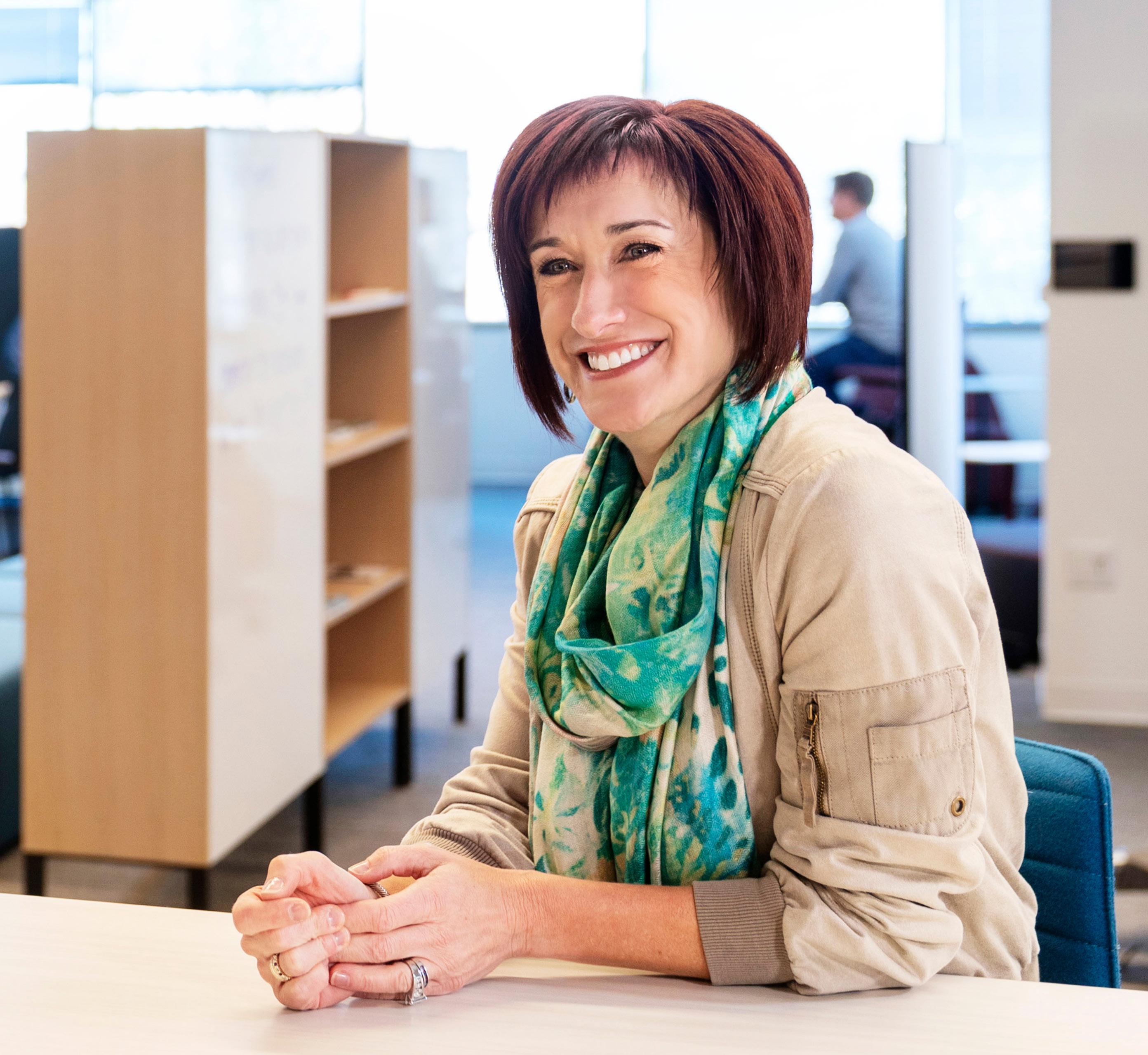
Advancing female leaders across all parts of Vail Resorts is a priority for the company. Lynanne Kunkel says that includes championing change across mountain operations, a historically male-dominated sector within the ski industry.
“We are proud to have women running major resorts, and in critical senior leadership roles, in every region we operate around the world. In addition, more than 40 percent of our board seats and a third of our executive committee members are women,” says Kunkel, a mom of five and sponsor of the company’s diversity and inclusion efforts.
This past year, on International Women’s Day, Vail Resorts launched a new enterprise-wide inclusion platform, POWDER, which stands for Providing Opportunity for Women through Diversity, Equality, and Respect. As a result of its ongoing gender diversity and inclusion efforts, the company was named one of America’s Best Employers for Women by Forbes
“In manufacturing at that time, we were moving away from purely supervisory-type managers and toward leader-coach roles— accountable for both the results of our operation and the development of our people,” Kunkel recalls. “I experienced firsthand how the advancement of capability and leadership drove business results and outcomes. The strong connection between the two ultimately guided my career into human resources and onto Whirlpool Corporation, which also prioritized the development of its leaders at all levels of the company.”
In May 2017, when Kunkel had the opportunity to be CHRO for Vail Resorts, she was thrilled to find that the company shared her passion for leadership development.
“At Vail Resorts, leadership development isn’t just a way to increase organizational effectiveness; it’s a cornerstone of the company’s culture,” she says. “The company’s success has been rooted in simultaneously delivering on the needs of today with a continuous eye on the future, so developing our leaders is how we’re able to continuously innovate and lead the industry.”
As CHRO, Kunkel oversees a series of leadership programs designed to develop leaders across the company, whether you’re a seasonal lift operator or a C-suite executive.
“We emphasize that every employee is a leader—it doesn’t matter what level or part of the organization they’re in,” Kunkel stresses. “We have several leadership programs in place that start with something as simple as ‘Basecamp,’ a one-day program aimed at understanding our leadership competencies, to our most intensive experiential program, “Camp III,” where leaders spend twelve dedicated days over seven months exploring their own leadership effectiveness and personal development.”
Adding nineteen resorts to its portfolio in just the last year, scaling leadership development is a key focus for Kunkel and the entire leadership team at Vail Resorts.
“A big part of our business model is the continued expansion of our network, which means we need to be able to quickly integrate our new employees into our culture to ensure our guests can consistently have an Experience of a Lifetime no matter which resort they visit,” Kunkel explains. “One way we do this is through our annual Leadership Summit—where we bring our top eight hundred leaders from around the world to Keystone for three days and focus solely on leadership alignment and development. These leaders come from mountain operations, human resources, marketing, etc.—ensuring
 Courtesy of Vail Resorts
Courtesy of Vail Resorts
Heavenly Mountain Resort, which overlooks Lake Tahoe, opened in 1955 and joined Vail Resorts in 2002.
that our leadership culture is fully present within every corner of our business.”
Vail Resorts’ commitment to leadership development is just one way the company stands out as a leader within the industry. Two years ago, Vail Resorts announced an initiative focused on preserving and protecting the great outdoors: Commitment to Zero. This sustainability effort commits to achieving a zero net operating footprint by 2030 through zero net emissions, zero waste to landfill, and a zero net operating impact on forests and habitat. The company has made significant progress to date, investing in a large-scale wind energy agreement and diverting more than eleven million pounds of waste from landfill across its resorts in 2019.
“Our passion for the mountains comes with a responsibility to preserving the en -
vironment and the communities in which we live, work and play,” Kunkel says. “Commitment to Zero is so important to our employees, and we’re constantly inspired by the grassroots ideas that come to life across our resorts—it’s truly both a top-down and bottom-up initiative.”
Commitment to Zero is one of the key elements of EpicPromise, Vail Resorts’ corporate responsibility platform. In addition to sustainability and conservation, EpicPromise encompasses the company’s community giving initiative and the employee foundation, which provides educational grants and financial support to employees in need.
“Our employees are our most important asset,” Kunkel says. “Supporting them and investing in their development is key to our continued success.”
“The company’s success has been rooted in simultaneously delivering on the needs of today with a continuous eye on the future, so developing our leaders is how we’re able to continuously innovate and lead the industry.”
LYNANNE KUNKEL

Karen Walker joined PagerDuty at a unique time for the company. “I came in right as the company was going public, and I was given the opportunity to play a big role in leading our preparation for our very first few earnings calls,” Walker explains. “I think that the early days, supporting investor relations and being present with the CFO and CEO, were really great experiences and an excellent way to learn about the business.”
Walker is senior vice president of finance and is responsible for finance and accounting. She believes her role with Pandora and collective experiences thus far have set her up to be successful in her most recent role
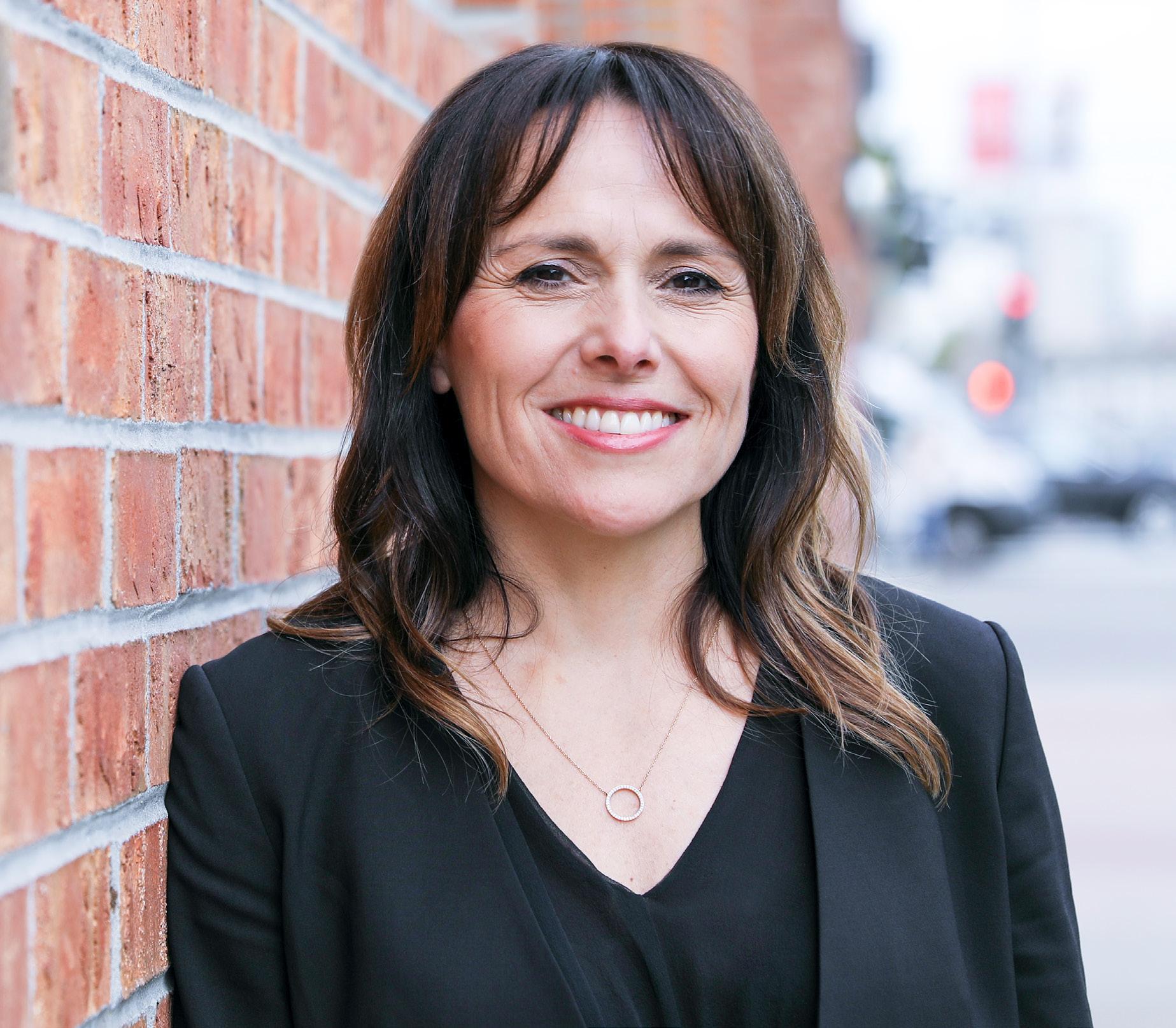
at PagerDuty, a software as a service (SaaS) leader in digital operations management.
The significance of PagerDuty lies in its ability to allow distributed teams to work in real time to respond to, resolve, and prevent incidents, such as outages. A single digital disruption can impact organizational revenue by $200,000 to $500,000 in a matter of seconds. However, PagerDuty leverages machine learning to orchestrate teams on complex issues, across multiple business units and geographies, converting a deluge of data into insightful action so that organizations can minimize impact to brand and revenue.
“At Pandora I was involved in supporting investor relations,” she explains, “and I think

that it was a great launchpad and set of experiences that have allowed me to take on a broader leadership role at PagerDuty.”
In addition to Pandora, Walker has worked in several dynamic and high-growth organizations like Uber—experiences to which she attributes her strength in building scalable processes from the ground up and adopting a customer mind-set. “I have been very fortunate to have had experience building teams from scratch and also maturing finance organizations to help them reach their full potential,” she says. “PagerDuty is no exception. We have a great finance team and are continuing to build on our early momentum.”
This is where one of PagerDuty’s core values comes in handy: championing the
customer. “Finance may not always be on the front line of customer interactions, but it’s imperative for finance organizations to have the customer experience in mind with everything they do. We have to make sure that we reduce friction and create a seamless experience for our customers in all ways that we interact with them,” Walker says.
In addition to this customer mind-set, Walker is focused on scaling and maturing operations. This pursuit is important because of the company’s growth trajectory and because of the large opportunity in this new and emerging category.
PagerDuty has several tailwinds, including the rapid adoption of cloud-based infrastructure and the growing number of companies embarking on digital transformation. With these trends come increasing complexity coupled with consumer expectations for a perfect experience every time, she says.
“So, what PagerDuty does is help companies protect their brand and revenue by mobilizing teams to take the right action at the right time,” Walker explains. “It’s exciting and a unique and compelling opportunity to be with PagerDuty right now.”
And the fact that PagerDuty is led by a female CEO, Jenn Tejada, is also compelling and inspiring for Walker.
Working for a female-led company “is certainly rare,” Walker concedes. “It’s particularly rare in the enterprise software space. It’s very inspiring to me. PagerDuty is dedi-
cated to diversity and inclusion, and I think people really enjoy that because when they come to work, they are seeing and working with people that they relate to.”
Walker believes that representation is vital to the growth of not only the individual but also the organization. “In the absence of representation, it is more difficult to find leaders you can relate to and that you want to emulate. As a woman in finance, it’s amazing to be part of a female-led company and to feel represented and empowered to be yourself,” Walker says. “Jenn Tejada is fired up, and it is hard not to be motivated when you’re with her. She’s an inspiring leader. When you have representation and the right balance, everybody feels empowered.”
As an aspiring CFO herself, Walker has a few words of advice for women looking to grow within the finance function:
Take the time to invest in yourself. “Plot your strategy; think about where you want to be and if what you are doing today is moving you toward your goal.”
Leverage your network. “It needs to become part of a normal routine, and you never know when you might be able to help someone within your network. I think it’s a great way, particularly for women, to pay it forward, to help each other.”
Be an advocate for yourself. “Lean into the things you are looking for. Ask for what you want, demonstrate your value, and take risks.”
“We have to make sure that we reduce friction and create a seamless experience for our customers in all ways that we interact with them.”
KAREN WALKER
PwC congratulates Karen Walker on being featured in Profile Magazine
Named the third healthiest midsize employer by the Phoenix Business Journal , Nextiva has been setting the standard for valuing employees for the past two years. Former Chief Human Resources Officer Kathi Winter has been a trailblazer at ensuring employees feel respected and appreciated, and the award from the Phoenix Business Journal shows her work has paid off.
“Our focus on company health and wellness is a top priority—we intentionally build benefit offerings tailored to employee needs,” says Winter in a Nextiva statement. This focus on employee health is one of many ways that Winter revitalized the human resources field for Nextiva.
Winter began her HR career at Honeywell as the director of the HR department. Winter remained at Honeywell for eleven years before becoming vice president of HR at CIT for two years, and then VP of HR at loanDepot for six. In 2017, Winter earned the title of CHRO at Nextiva and was given the opportunity to employ the leadership skills she’d acquired. Some of the skills that Winter has used include process improvement, organizational decision-making, and developing people strategy.
Given her nearly twenty-year career, it’s no surprise that Winter brings plenty of experience to the table. Winter’s experience provides her with distinctive insights on industry trends. Winter believes that companies need to make a dramatic shift in how they approach HR if they are to increase employee retention.
One approach that companies can use is to establish clear, strong, and simple company values. “When an organization is truly committed to operating within its set of ideals,” says Winter in an interview with HR Technologist, “recruitment becomes much more targeted.” According to Winter, when a company hires people who already identify with the company values, the employee is more likely to stay with the company. An organization can then display their focus on people excellence by making their values transparent and clear.
Another way Winter revitalized HR at Nextiva was through her employee and technology initiatives. Winter is implementing a people infrastructure that has a sustainable foundation of culture values, including employee appreciation. On the tech side, Nextiva is applying artificial intelligence and analytics to their business communications platform, NextOS. Winter says that Nextiva will also apply the same analytical tech to HR, and this new system will allow for insight into the specific needs of their employees.
Winter’s expertise has allowed for a unique insight into building a strong culture. “The truth is, it is all the leaders and people inside a company that builds its culture,” states Winter in HR Technologist. “HR leaders can help build cultures that foster customer experience and loyalty by treating their employees with the same dignity and respect as is expected with the customer.” If the employee feels respected and valued, it shows in how they address the customer, and a happy customer is always good for business.
Altogether, Winter’s experience and modern mind-set have allowed for great success not only in Winter’s career, but for Nextiva as well. In her commitment to people excellence and the organization of company values, Winter makes HR look easy. It is her dedication to ensuring employees feel valued, respected, and a part of a team that has allowed for the most success in her field.
We’re proud to recognize our valued partner, Kathi Winter with Nextiva, for her leadership, vision, and dedication to the “human” part of Human Resources.
Roxy Bargoz used to joke that she was “the only happy lawyer in New York City” back in her days in structured finance and securitization at a white-shoe law firm. The work was intense and sometimes grueling but she loved it, in large part because of the people on her team.
Bargoz went on to work with that same group of people for a different firm—Katten Muchin Rosenman— in Chicago, and she planned to continue there for the long haul. But then came an opportunity that changed everything. Avant, a Chicago financial tech company, offered her a job the same year she was on track to make partner. That made her decision to leave her law firm job even tougher.
“It was a really hard decision to leave my firm, but I knew I would regret saying no to this opportunity five years down the road,” she says.

Avant’s Roxy Bargoz prioritizes fun and transparency in the workplace. To achieve both, she believes in the power of small, everyday acts.
She joined Avant in 2015 as an associate general counsel, managing debt capital markets. She tossed out her business casual clothes, threw on a hoodie, and embraced start-up culture.

“I never really looked back,” says Bargoz, who was born in Romania and grew up in the Midwest. Her success has made her a strong believer in saying yes to big risks and new opportunities. Now Avant’s executive vice president and general counsel, Bargoz prioritizes creating both an open, transparent and a casual, fun workplace where people work hard but also don’t take themselves too seriously.
While law was always the path Bargoz had in the back of her mind for herself, she also grew up with an aptitude for writing. During college at the University of North Carolina at Chapel Hill, she initially focused her


studies on journalism and creative writing, but quickly shifted gears to major in business.
“I had an interest in how the world worked from a business perspective,” she says. She figured that field also lent itself better to a career practicing corporate law. As a child of immigrants, Bargoz jokingly says her parents always told her she only had two options for her career—law or medicine. She never did like the sight of blood, so she went the other route and graduated from law school at Georgetown University in 2006. That’s also where she met her husband, who was from New York City and convinced her to give living there a try. She wound up in the world of structured finance not long before the 2008 financial crisis hit.
“I didn’t know what I was choosing, but I knew I wanted to work with this particular group of people,” she says. The timing also gave her the opportunity to learn how to navigate the industry during a downturn.
When Bargoz and that same group of colleagues transitioned to working for the Chicago-based firm in 2010, she and her husband relocated there. Five years later, the chance came up to join fast-growing Avant, an online lending platform.
Though her work has shifted, Bargoz’s peoplecentric approach has stayed with her at Avant, where

she currently leads the legal team. She finds it just as important to communicate Avant’s grand visions and goals for the future with her team as it is to communicate why and how specific decisions are made.
“I think certainly the more insight you can have into the direction of the company and why we’re doing certain things in certain ways, the more you feel like an integral part of it. My hope is that everyone feels invested in the company’s future and success, rather than feeling caught in a tidal wave and just moving with the company based on certain unspoken decisions made at the top,” she says.

In the spirit of communication, Bargoz also wants to launch a series of primers to educate employees on legal issues to give them a sharper edge when making business decisions.
To develop a culture at Avant where everyone feels invested, Bargoz says, a non-hierarchical structure is crucial. Once an employee gets in the door at Avant, their background becomes less relevant than their desire to take on new projects and problems, she says. That’s also one reason why many executives at the company are on the younger side.
“We do a really good job of hiring really smart, ambitious people who at the same time don’t take them-
“You don’t have to change the world. You can change your little corner of the world. It doesn’t have to be these grand things. It could just be simple, everyday acts that make work fun and interesting.”
selves too seriously but who rather realize we’re all in this for one goal: to grow our company,” she says.
That practice in hiring also lends itself to a casual, laid-back workplace. “You’ve got to keep it fun,” she says. “The people on my team and my other colleagues at the company love to poke fun at me. I really try to play into it because, again, it sets the stage for a playful, lighthearted atmosphere.”
Working at a start-up is a key reason Bargoz has been able to focus on creating a fun workplace while still making an impact for team members. Much of her mind-set comes down to the belief that you can effect big change with small actions.
“When I think about helping people have a better day-to-day work life and the ways I could do it—you don’t have to change the world. You can change your little corner of the world,” she says. “It doesn’t have to be these grand things. It could just be simple, everyday acts that make work fun and interesting.”

Katten’s industry-leading structured finance and securitization practice is a cohesive team offering clients insights formed from decades of bringing together a broad diversity of training and transaction experience to assist with wide-ranging needs. We proudly salute our former colleague Roxy Bargoz and her team at Avant. Learn more about us at katten.com/ structuredfinanceandsecuritization.

Buckley LLP congratulates Roxy Bargoz for this welldeserved recognition. We are proud to partner with her and her team at Avant. With offices in Washington, DC, Los Angeles, San Francisco, New York, Chicago, and London, we offer premier enforcement, litigation, compliance, regulatory, and transactional services to financial services institutions and early stage and leading fintech and technology companies.
Buckley LLP offers premier enforcement, litigation, compliance, regulatory, and transactional services to financial services institutions and early stage and leading fintech and technology companies, as well as venture capital and private equity funds, investment companies, and corporate and individual clients throughout the world. “The best at what they do in the country.” (Chambers USA)

buckleyfirm.com

Chapman and marketplace lending just go together.
We are proud to serve the fintech community, and we congratulate Roxy Bargoz and her Avant team for their continued innovation and leadership in the online lending space.
When Kevin Kohutek proposed that US Concrete offer employees a new financial wellness program, top-level executives doubted that the initiative could succeed. Their hesitation stemmed from the company’s widely dispersed workforce that would make it difficult to communicate with employees and coordinate the program.
But Kohutek, then vice president of finance and treasurer, was confident that he could succeed. “I said that I would deal with it,” he says, “and I suggested that we pilot the program in Texas.” Kohutek’s confidence must have shown through, as company officials gave the go-ahead.
The project has no direct impact on corporate revenue or profits; it’s emblematic of Kohutek’s management philosophy, which comes down to “treat people how you would like to be treated.” The online financial wellness program, in partnership with SunTrust Bank, will “make employees more well-rounded people,” he says. It may aid employee retention, given that happy workers tend to remain with a business, he adds.
“Financial stress is not a new problem, and financial education is not a new solution,” says Brian Nelson Ford, financial well-being executive at SunTrust bank. “However, workplace financial wellness is different and it’s working. It sends a clear message that the company cares.”
The initiative is an example of how a financial chief can collaborate with human resources—a partnership that can have many benefits.
Kohutek is guided by an empathetic management approach based on a servant mentality that he honed while working for ClubCorp, a firm that owns and manages country clubs and other private clubs nationwide. Hospitality companies like ClubCorp require attentive customer service from all employees. Company leaders extended this mind-set to its workers as well, Kohutek said.
For example, all new hires received a “Warm Welcome” package that included a gift basket along with their onboarding packet of information. Exceptional performance shown during the work week was recognized with “Magic Moment” rewards such as additional time off or company merchandise. When employees left the company, they received a “Fond Farewell,” a thank-you package for a job well done.
These gestures were an outward sign of the “work family” culture that Kohutek embraced and continued to hold onto after he moved to a very different industry when he joined US Concrete.
Day to day, that philosophy means managers should keep their doors open, be visible, offer compliments for doing a good job, and be respectful of employees’ personal lives. “If they have to get to a graduation or a kid’s concert or sporting event, even when there’s an important deadline, you tell them to go,” he says. Such gestures pay off in better morale and loyalty, he believes.
A two-year stint managing US Concrete’s newly acquired New Jersey affiliate reinforced that notion. “The office had been underperforming and morale was not good,” Kohutek recalls. There were several problems Kohutek noticed soon after moving from Dallas to New Jersey. For one, the office environment didn’t help. It was dark and had seven-foot-high cubicles that discouraged collaboration.
One of his first decisions was to move the office to a more modern, well-lit space outfitted with open-concept cubicles that allowed employees to see each other across the office. This led to more impromptu conversations and aided his effort to transform
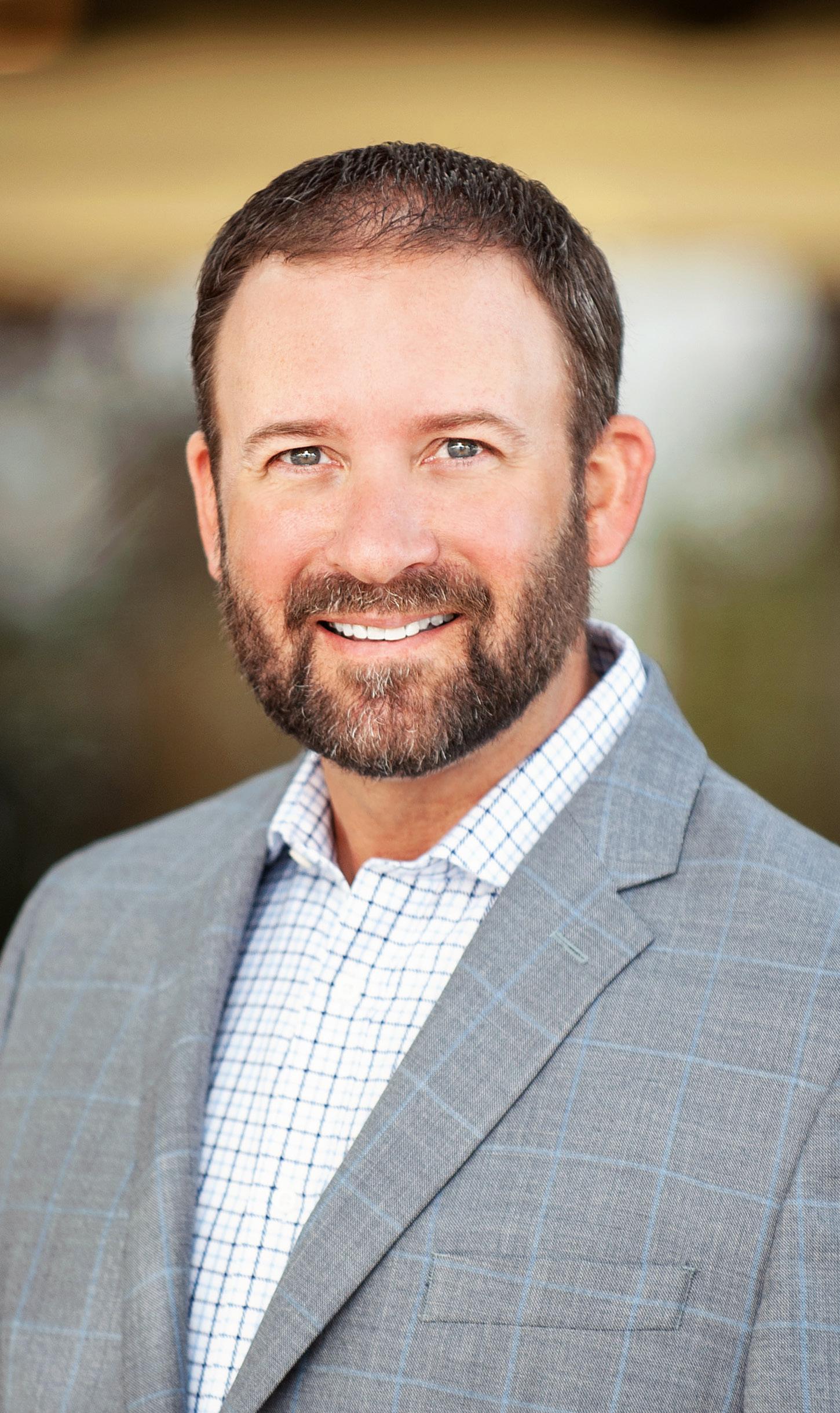 Kevin Kohutek
CFO
Osburn Contractors
Kevin Kohutek
CFO
Osburn Contractors
the culture toward a more collegial one, featuring open communication. “I encouraged more face-to-face meetings and less emailing,” he says. In time, this approach took hold, and morale improved.
As a financial manager with natural instincts for employee relations, Kohutek has been a valuable ally to the HR department. Naturally, his accounting expertise is an asset when evaluating benefit plans such as health insurance. He’s able to crunch the numbers to deduce which insurance vendor and which specific health plan of many would be most cost effective. But even more importantly, he analyzes the impact various plans could have on employees’ lives.
“I think about employees who may not be able to see the same doctor if we switch plans,” Kohutek says. Some may, for example, have children with serious medical conditions who have longstanding ties to particular caregivers. If the plan forces a switch in medical provider networks, this could cause a disruption in some workers’ lives. Kohutek looks beyond the bottom line to spot such potential problems, and he’s earned the
trust of HR professionals in assessing the full scope of such impactful decisions.
When building a team, as he did when US Concrete moved its headquarters from Houston to Dallas, Kohutek hires people who will embrace the culture he wants to instill. While technical ability is a prerequisite, personality and cultural fit is just as important, he says.
“Most people who have the right experience can do the job,” he says. Beyond that, Kohutek looks for hires who are motivated by similar professional and cultural business principles. This makes for a more cohesive and effective business unit. “I don’t want a person who is going to shut the door, put on headphones, and not want to talk during the day,” he says.
During interviews, Kohutek tries to draw out the candidate’s personality by asking open-ended questions and by listening more than talking. A key question is “how do you like to manage, or how do you like to be managed?” If the candidate responds by saying that they prefers a top-down approach in which subordinates are told what to do without giving much input, the candidate
probably wouldn’t work out. Another red flag is someone who says they would rather work independently with minimal interaction with coworkers.
A strong penchant for a “work family” culture prompted Kohutek’s latest career move. He joined Dallas-based construction company Osburn Contractors as CFO. “Their leadership team is small group of like-minded people—a strong faith-based organization,” he says. “I met all of them, and they had a similar interview process as mine.” The rapport he sensed with leaders during the interview process gave him the confidence and comfort level to make the change.
Kohutek looks forward to the challenges of a rapidly growing smaller company, including working hand-in-hand with the business leaders to drive value throughout the organization. With the firm’s culture more in sync with his own, any frustrations and difficulties that arise will be easier to address. His career path illustrates the importance of a well-tailored cultural fit. It’s something everyone should keep in mind as they make their way in the business world.
“If they have to get to a graduation or a kid’s concert, even when there’s an important deadline, you tell them to go.”
KEVIN KOHUTEK

Chief People Officer L. David Kingsley takes a two-way street approach to talent acquisition, engagement, and retention at Vlocity
By RUSS KLETTKEVlocity, a leading provider of industry-specific cloud and mobile software, is based in San Francisco with another office in nearby San Mateo, where demand for tech workers continues to outstrip supply. The fierce competition for talent shows no sign of abating and requires a new set of rules to win and thrive.
And the market isn’t hypercompetitive just in Silicon Valley. Vlocity also has offices in twenty-five countries around the globe. They find they have to work just as hard at attracting and retaining people in Raleigh-Durham, North Carolina, and Salt Lake City, Utah, as well as in Europe, Asia, and Latin America.
Chief People Officer L. David Kingsley describes the company’s approach to talent acquisition, engagement, and retention as a two-way street. “It has to be a symbiotic relationship,” he says. “Employers need to prove themselves to job candidates as much as the other way around.”
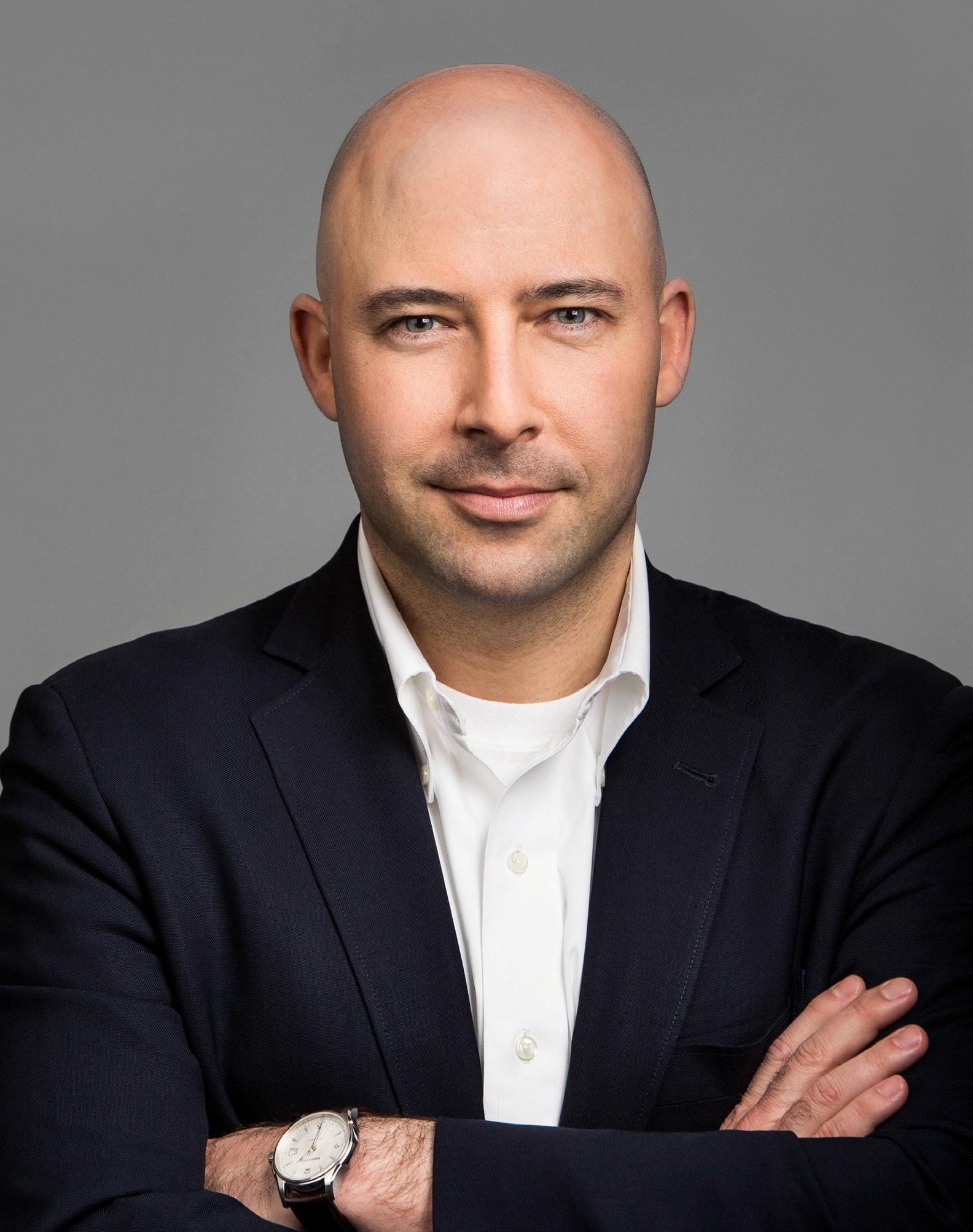
To illustrate this, he shares that the company has a set of seven values, which includes recognition of what employees value. The “People are the Core” value states that “success depends on building, empowering, and developing a highly talented, energetic, creative, and high-performing team.” That falls heavily on Kingsley and his team, who perform what is sometimes referred to as human resources. But not at Vlocity.
The old rules of HR don’t work in the enterprise software industry and others, Kingsley explains. Vlocity, which counts Salesforce as its largest strategic partner, serves six industrial verticals: communications, media and entertainment, energy and utilities, health, insurance, and government. As companies undergo rapid digital transformation, Vlocity employees are expected to treat clients as they themselves are treated by Vlocity.
Which is why the Vlocity HR department is called “Employee Success.”
“At every stage of engagement, a candidate or employee will ask themselves if they identify with our company, our values, and our way of treating our customers,” Kingsley says. That includes as interviewees, new hires, seasoned employees, or management. “Each stakeholder experiences moments of truth based on their own unique engagements with the company and its brand. We actively seek input from those stakeholders to ensure we’re delivering on their expectations.”
Like the customer relationship management software the company is built on, Vlocity sees and treats each stakeholder as a unique customer.
By the numbers, Vlocity has done well with creating a workplace where people feel a connection. “Vlociters,” as Kingsley calls them, almost doubled in size from 550 people to nearly 1,000 in the course of 15 months.
But successful recruiting isn’t the full story. In the one-to-five Glassdoor rating system, the company scores a robust 4.4 while the company Founder and CEO, David Schmaier, nets
L. David Kingsley Chief People Officer Vlocityan enviable 98 percent approval (the average is 69 percent).
Other factors that speak to the employee experience include internal referral rates and strong gender representation. Kingsley says that in the past year, more than 40 percent of hires were from existing employees’ referrals. “That tells me that people here are working in an engaging and psychologically safe environment if they’re willing to recruit friends,” he says.
Roughly a third of the product and engineering organization at the company are women—comparing favorably to most other tech companies. Google reports that 17 percent of its technology staff is female, at Airbnb it’s 13.2 percent, Yelp is 8.3 percent, and Dropbox has 6.3 percent, according to data collected on Github.
“We have strong women leaders who believe in empowerment and inclusivity,” Kingsley says. “We run a values-driven organization that is committed to customer and employee success.”
He eschews the old “up or out” model that was common a generation ago. Instead, the digital-native generation is more receptive to what he calls the three types of em-
ployee experience, each of which is possible at Vlocity.
The first are mountain climbers, who strive for promotions. The second are deep divers, people who become highly skilled specialists. And third are adventure seekers, employees who are comfortable with changing roles, providing value where needed and possible.
Kingsley himself evolved into the people talent business when working at another company at the start of his career. There he observed some in more traditional HR roles being unnecessarily disruptive and not contributing to the company’s overall success. He recognized that there is a continuum in what talent management can be, ranging from a necessary evil to a critical enabler to a trusted advisor.
When he was recruited several years ago to work at Salesforce, he discovered how creating positive experiences and environments for employees was quite analogous to client experiences. The key phrase is “we help you get what you need, for where you are going,” he says.
Lest anyone assume this results in a laissezfaire environment, Kingsley assures that is not the case.
“Our offices and our culture are professional and focused,” he says. “Our customers are tackling some of the most complex industry transformations in their history—we share that same ethos, while at the same time empowering our people to spend quality time outside of the office and away from work.”
Visit Vlocity headquarters, and this philosophy is represented by the photography adorning the walls and meeting rooms. Vlocity’s core value of “People First” is evidenced in the smiling faces of customers, partners, and employees.
“Treating those employees like customers,” Kingsley says, “is part and parcel of ‘the notso-secret sauce’ that has helped our company grow to where we are today.”
And if past performance is indicative of future results, Vlocity is a company to watch.
BPM is one of the largest California-based accounting and consulting firms, ranking in the top fifty in the country. From complete HR outsourcing, consulting, recruiting, HR system transition services to elevating cultures, our HR and People Services group can scale up or down with your organization. Learn more at bpmcpa.com/HR or call 925-296-1058.
“Treating those employees like customers is part and parcel of the ‘not-so-secret sauce’ that has helped this company grow to where we are today.”
L. DAVID KINGSLEY
Jill Pappenheimer champions cloudbased technologies as a way to bring about meaningful cultural changes for employers and employees
By RUSS KLETTKEEffective human resources requires a combination of hard and soft skills. Organizations’ money is saved and productivity rises when employees empowered and aligned with the company’s business objectives. Achieving those outcomes requires leaders to think differently about HR and utilize technologies that complement these practices.
That’s where Jill Pappenheimer comes in. Pappenheimer founded Options4Growth in 2012 as a means to elevate the way employers engage with people and the way people engage in their work, combined with cloud-based technology tools. In late 2018, BPM LLP acquired Options4Growth’s HR consulting practice to complement the CPA firm’s advisory service offerings.
Prior to joining BPM, Pappenheimer also worked with her former business partner to develop Insights, a performance management tool offering all-in-one solutions for “purpose-driven” companies, many of which are nonprofits.
“Insights facilitates ongoing feedback (guided one-on-ones) transparency and alignment with organizational objectives,” says Pappenheimer, who is now a partner at BPM. “It helps identify obstacles and barriers employees face and offers the ability to course correct. It shows employees how to own responsibilities and move the needle of individual success and that of their organization. This kind of behavioral change can only be lasting if it is facilitated by a tool to ensure stickiness.”
Pappenheimer shares an example of a client who benefited from the technology—a nonprofit after-school program whose administrators wanted to ensure educators stayed true to the objectives of the organization and remained engaged in their work.
“They used Insights to be able to execute on identified strategic objectives and create accountability with their teachers,” she explains. “The CEO was worried in particular about one teacher leaving. But through the use of Insights, they discovered a hidden passion and created a development goal—writing a newsletter, which the teacher really enjoyed and has become a successful communication/ PR vehicle for the school. It aligned an organizational need with the teacher’s personal
Jill Pappenheimer Partner BPM LLP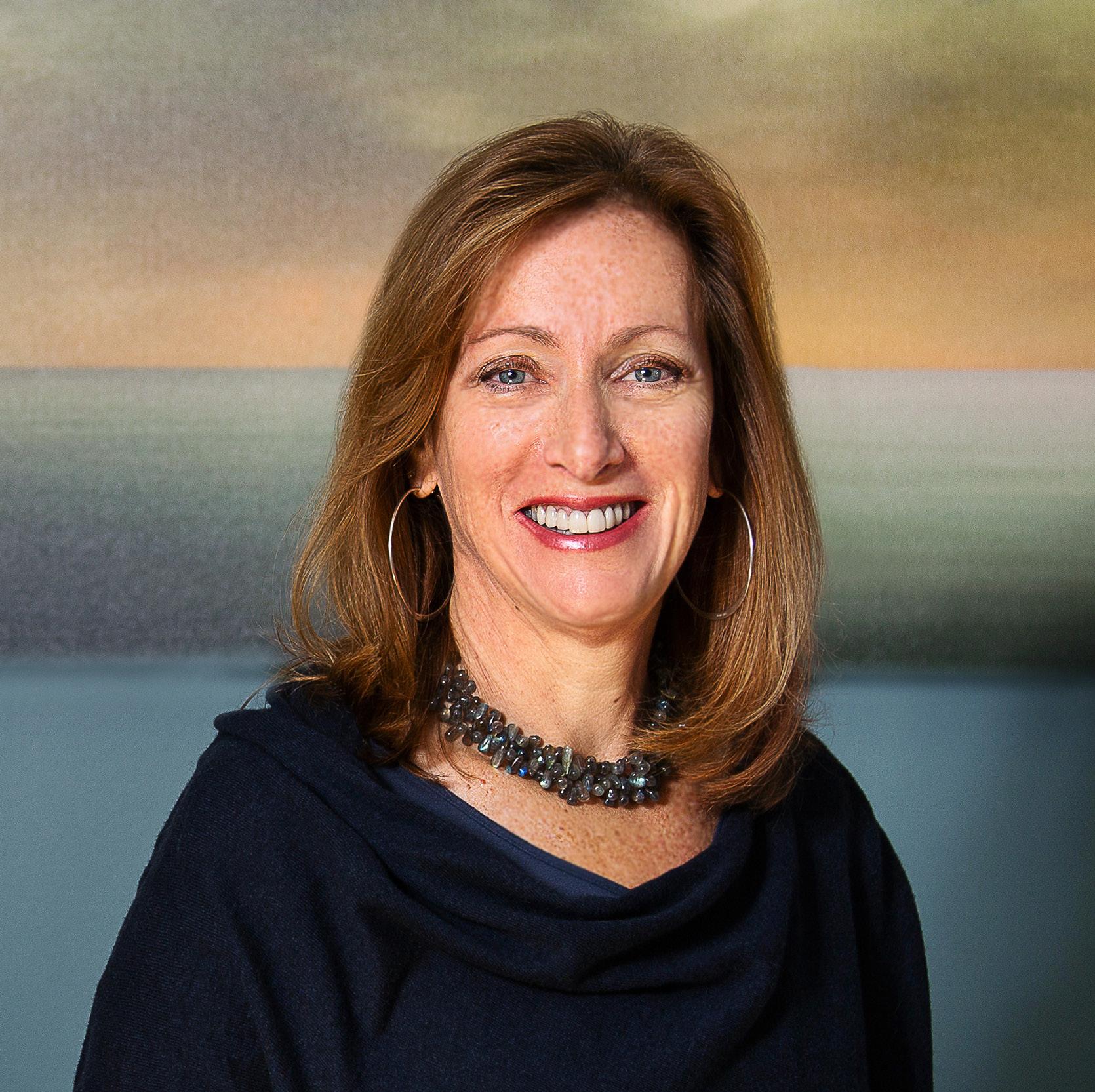
strengths. The CEO has found the tool to be pivotal for their organization.”
This is not unlike some successful client engagements in Pappenheimer’s work since joining BPM. She shares that throughout every encounter, structural challenges are met with those soft and hard tools that, in combination, bring about meaningful changes for employer and employees alike.
Recently a CFO at a technology firm brought Jill’s team in to support an unfortunate problem—senior management’s reputation of intense vitriol as a means of communication. Pappenheimer’s team determined that while change at the top was needed, the middle and lower ranks of employees had to be addressed as well.
“We had to make sure policies and practices at the firm honored its people,” she says. “We also made sure that managers in the middle ranks had coaching and training skills. It’s an unfortunate fact that managers are usually skilled at functional levels, but don’t have strengths with people skills.” Senior management then was coached to emulate this culture—and shed the yelling.
Another firm—a consumer food products company—was struggling to keep up with their significant growth. Throughout a 15year period, the company grew from 15 to 1,200 employees with only one HR manager, who was not modernizing and scaling the people management function sufficiently. Pappenheimer and her team went to work, introducing new technologies for employees and the HR team that streamlined their processes as well as engaged employees differently and at a higher level..
“The right performance and human resource management tools are instrumental and can be game changing for HR team and the entire organization. Companies are hesitant to make the investment in HR, and specifically HR technology, but the outcome can be hugely impactful,” Pappenheimer says. “These are opportunities to create growth through people by ensuring clarity
of roles, line of sight to organizational objectives, and engaged, cohesive teams that are collaborating and having fun. It doesn’t have to be a painful, expensive, or yearlong undertaking to create positive change through facilitated technologies.”
Pappenheimer adds that it is important to stay on top of technology trends and tools, such as artificial intelligence (AI). “AI is highly undervalued in the HR industry, and the potential for its use is enormous,” she explains. “It can be powerful in recruiting talent and in identifying where a candidate will be a cultural fit with an organization.”
While AI tools can be effective for HR departments, its various applications can raise questions in terms of usage, particularly with regard to privacy issues, such as data compiled from scanning social media and employee emails.
“I have concerns, even if it could help us understand people better,” Pappenheimer says. “Clients ultimately have to embrace technology, one way or another—they have to. In the twenty-first century, honoring people and aligning employees’ work with organizational strategies is as important as finance.”
With the right application of new technologies along with old-fashioned human respect, the soft skills of HR don’t look so hard.
“In the twenty-first century, honoring people and aligning employees’ work with organizational strategies is as important as finance.”
JILL PAPPENHEIMER
When Alana Matthews was seven years old, she joined the boys’ hockey team in her hometown of Meadville, Pennsylvania. “Everyone in my family skated,” she says with a laugh. Her two brothers played hockey, and her dad was their coach. Her mother taught figure skating and got her on the ice at age two. “I didn’t really enjoy figure skating, but I was a strong and fast skater, so I thought hockey would be a better fit.” Except there were no girls’ teams for her to join.

“My mother was my biggest advocate,” she recalls. “She didn’t see any reason why I shouldn’t be allowed to play.” When the family moved, she joined another boys’ team. “I didn’t get to be on a girls’ team until I was a freshman in high school.”
A rash of knee injuries sidelined her for most of high school, though. At Colgate University, where she


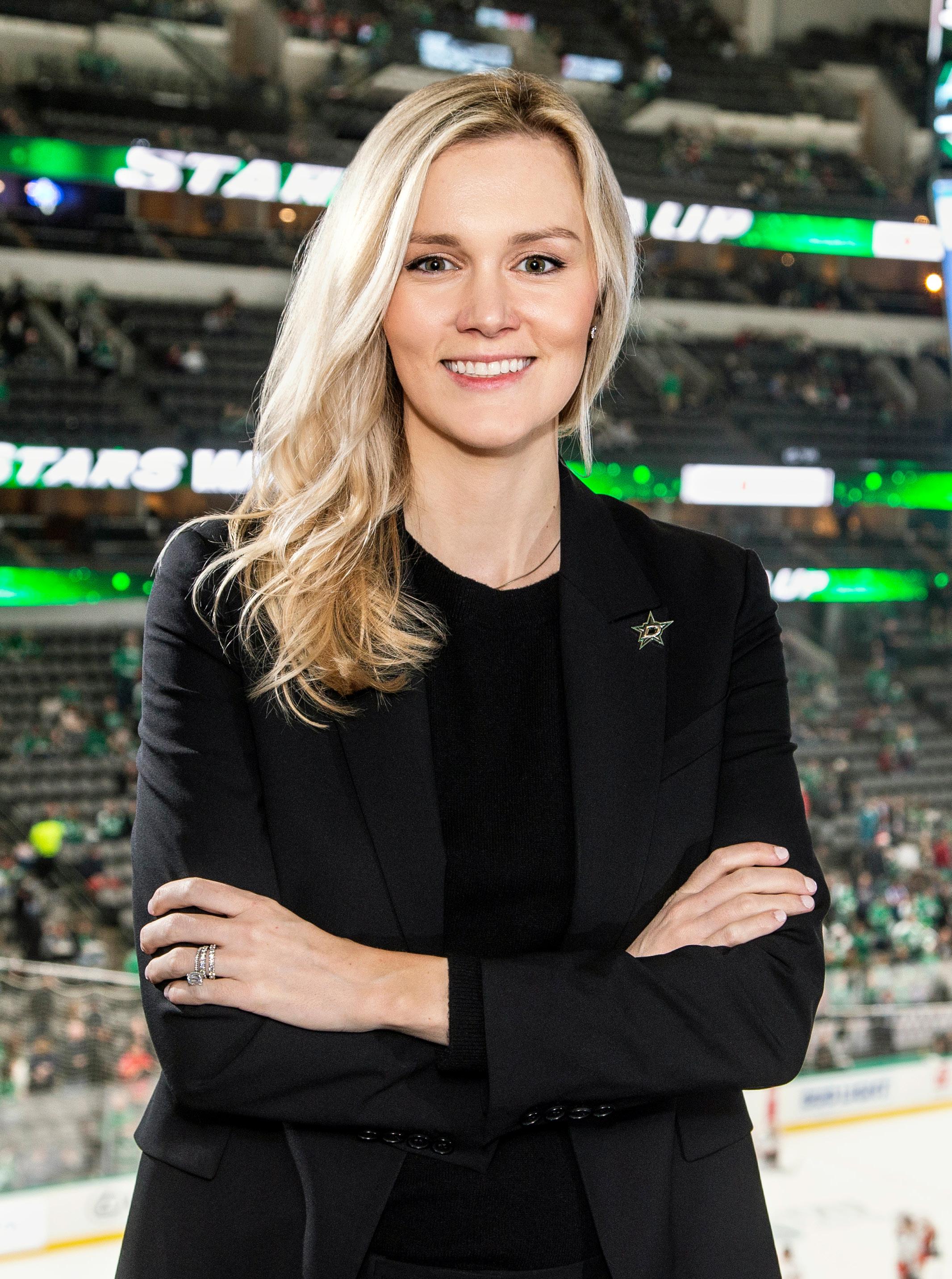 Alana Matthews EVP of Business Operations and General Counsel Dallas Stars
Alana Matthews EVP of Business Operations and General Counsel Dallas Stars
majored in political science, she played on a club team and did some play-by-play announcing for the boys’ varsity team.
Another long-held passion was to go to law school. After graduating from Southern Methodist University (SMU) Dedman School of Law in 2012, she worked as a litigation associate at Wilson Esler in Dallas. “I was more interested in transactional law, but it was a great opportunity,” she recalls, “and taught me how to think on my feet and to structure deals to avoid litigation.”
She knew she wanted to eventually work in the sports industry, and so she began an energetic campaign of going to conferences, including Sports Lawyers Association events; meeting with industry professionals; and reading voraciously. “I spent all my spare time hustling to build a network and educate myself.”

Matthews didn’t realize it at the time, but she had embarked on exactly what Richard Bolles recommends in his best-selling job-hunting book What Color is Your Parachute? : a series of informational interviews. “I met with
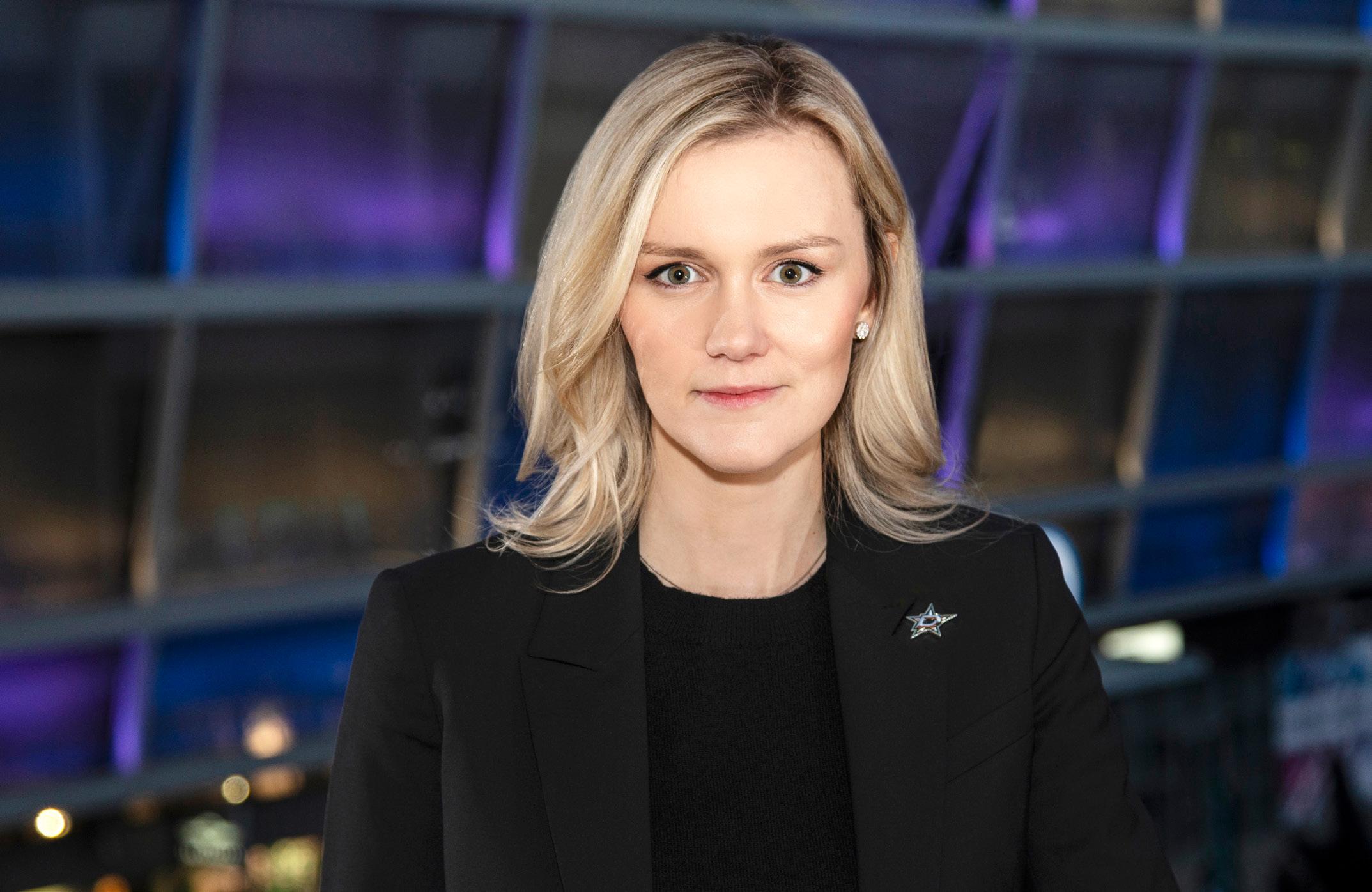

lots of executives, but I wasn’t responding to job postings or asking them for anything,” she says. “I just wanted to learn what they did, what challenges they faced, and who else they thought I should talk to.”
One of those meetings was with Jason Farris, Dallas Stars chief operating officer and author of several books, including Behind the Moves: NHL General Managers Tell How Winners Are Built . Her knowledge, focus, and eagerness paid off, and she joined the Stars organization in 2014 as its first in-house counsel under the current owner, Tom Gaglardi.
She added another attorney to the legal department in 2016. “She worked for a large defense company for ten years, so she has a great deal of business experience and maturity,” Matthews explains. “That is essential here since we are juggling so many different matters—including personnel concerns, contract negotiations, taxation issues, and real estate acquisitions and developments.”
The team plays at and is a partner in the American Airlines Center in Dallas and operates, has its executive Tim
offices, practices, and holds community programs and events at Comerica Center in Frisco.

To help her stay on top of everything, Matthews has taken several executive education courses. She earned her certificate in accounting and finance from SMU to improve her understanding of corporate finance. She took an online course in strategic HR management from Cornell University. Soon after being promoted to vice president and general counsel, she took another SMU course in master negotiation. “It’s important to know what you don’t know, and then go and learn it,” she explains.
In March 2018, Matthews’s job was expanded to include executive vice president of business operations. She was seven months pregnant at the time.
“Though it was incredibly exciting to become more involved with the executive team, I have to be honest; it was a difficult year,” Matthews explains. “I was going on maternity leave two months later, so I had to get up to speed quickly on lots of different issues. It was our first child and we don’t have family here, so there was quite a bit to deal with after having the baby, too, including leaving meetings to breastfeed or picking him up from day care.”
She credits the Stars management team for their support, and says the experience gave her much more respect and empathy for what working mothers go through. Becoming a mother helped Matthews become a better leader.
“You shouldn’t make people choose between their job and their family. If you do, you will lose talented people. You should ask people what they need and then help them succeed both inside and outside the office,” she says. “After my pregnancy, we improved our maternity and paternity leave policies and built more flexibility into our return-to-work programs. I’m glad my experience will make it better for other women in our workforce.”

Working in the sports industry has been everything she imagined—and so much more.
“I get to use my legal degree to contribute to an organization that gives so much back to the community. I love seeing local kids learning to skate at Comerica Center and fans having a good time at our games and knowing that I played a small role in providing that enjoyment,” Matthews explains. “I’m also proud to help North Texas become known for hockey, not just with our games but through our hosting of events like the 2020 NHL Winter Classic, which attracted 86,000 fans, making it the second-most attended game in NHL history. I find all of it incredibly rewarding.”
Winstead is proud to support Alana Matthews and the Dallas Stars. Alana is a distinguished team executive who leads with integrity, unity, and excellence. We admire her business knowledge, passion for hockey, and commitment to making a difference in communities throughout Texas.
Winstead celebrates our friend, Alana Matthews, for her outstanding accomplishments, distinguished leadership and winning spirit.
“You shouldn’t make people choose between their job and their family. If you do, you will lose talented people.”
™
An Extraordinary Trailblazer
Alana Matthews
Executive Vice President, Business Operations and General Counsel, Dallas Stars
Marjorie Zyble brings her nearly twenty years of GE and HR expertise to help transform GE Aviation’s culture
By BILLY YOSTMarjorie Zyble is undeniably a GE expert. She has spent the entirety of her professional career across GE’s many business units: GE, GE Capital, GE Oil and Gas, GE Power, and GE Renewables. They’ve provided proving grounds for Zyble’s career growth and, as a result, benefited from her continuing HR development.
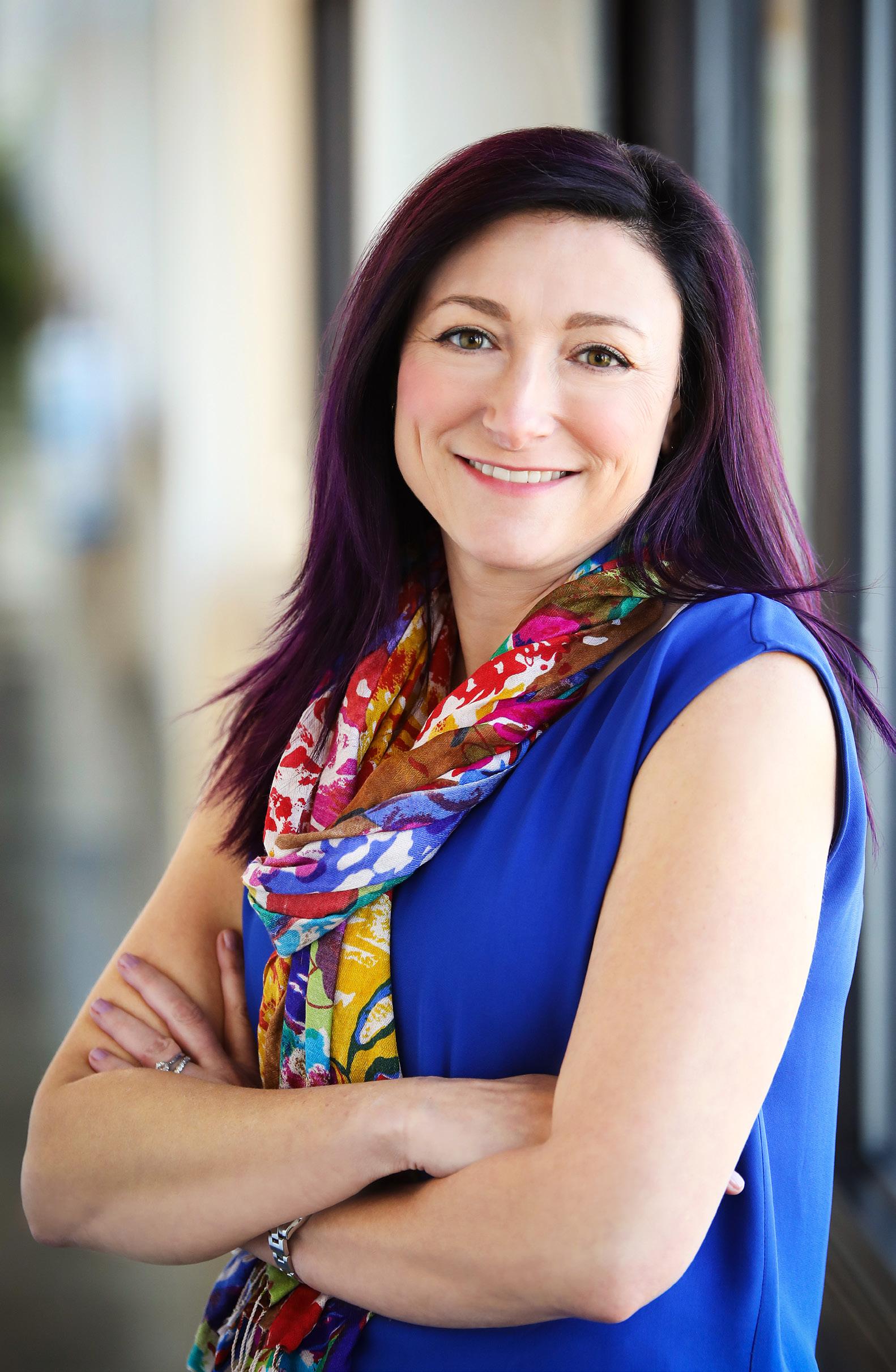
This makes Zyble the perfect person to lead GE Aviation’s cultural transformation as chief talent and culture officer.
She describes the feeling of “being given the keys to the castle” in terms of opportunity to truly grow both her team and the organization. “There is so much white space to create and the opportunity to make something without asking for permission,” she says.
But Zyble downplays her talent expertise. “I’m not a trained talent person. I took a class in grad school twenty years ago,” Zyble says, laughing. “I’m not an expert in the same way that those who have stayed in that area are. What I do bring to the table is a breadth of experience, having seen so many different businesses and business cycles.”
While there were seeds planted before she arrived, Zyble says the ownership and support of all initiatives by those in leadership is helping pave the way for real and lasting change. Driving change comes down to integrity for Zyble. “I was brought up to believe I shouldn’t ask someone to do something that I wouldn’t do myself.”
Zyble’s strategy is clear to Ranjit DeSousa, president of Lee Hecht Harrison. “Marjorie clearly understands that talent is the key to business success,” DeSousa says. “All business leaders could learn from her strategy.”
Zyble speaks comfortably, almost loosely, and has a tendency to tell it like it is. It was a mentality that she had to smooth the edges of
when she began her career. As HR leader for GE Renewables, she found herself having to support a boss with whom she found it difficult to see eye-to-eye.
“It was by far the hardest job I’ve ever had,” Zyble remembers. “It was the first time I was in a corporate environment and had to learn to be more flexible and adaptable with my style. Could I still be successful by influencing less directly?”
If her trajectory is any indication, the answer is an overwhelming yes. As she has taken on larger roles, she says it has been a challenge not to engage her team the way she finds more instinctual.
“In the thick of things, I like to engage in passionate discussion and really have a healthy debate. But what I’m learning as I’m in bigger leadership roles is that my participation can actually dampen the discussion,” Zyble explains. “It’s easy to assume that the hierarchy is flat, but especially in Aviation, it’s simply just not the case. I need to create space for my team and help elevate their voices, not necessarily my own.”
Zyble’s approach is very much in line with GE Aviation’s cultural transformation. “If we want to change culture, we have to shift what we measure, reward, recognize, and adapt all of those little behaviors that affect our day-today interactions,” she says.
A recent conversation among her team about “office jerks” comes to mind. “Just because people can be jerks doesn’t mean they’re always jerks—with a few exceptions,” the executive says. “Sometimes it’s a matter of addressing those attributes that make them
perceived that way and starting from there.”
In essence, the idea of culture often comes down to repeatable behaviors by both leaders and employees. By making a series of small tweaks, the larger organization will flourish.
The transformation is night and day from when Zyble first came onboard. She says this is a healthy byproduct of realigning the talent assessment process.
“There was already a deep connection with the talent that we grow and build and develop in the organization, and we want to protect that,” Zyble says. “But it’s equally important that we find a balance with the natural bias that comes when you’ve known people a long time. How do we look at a more robust development plan to develop our leaders and how do we take a more quantitative lens focus when we’re looking at talent?”
Talent now has a more focused understanding of the gaps they need to fill in their own experience, she explains, ensuring a wider skill set down the line. To build the organization’s leadership development program, Zyble worked with Hogan Assessments.
“Leadership matters. Marjorie understands the importance of building future leadership capabilities today,” says Christopher J. Duffy, partner at Hogan Assessments.
“By integrating Hogan’s quantitative, measurable approach into GE Aviation’s leadership development programs, she has greatly accelerated leadership growth to maximize the organization’s potential.”
With all that Zyble has accomplished, her risk tolerance is probably higher than most HR professionals—it can sometimes mean pushing too hard at the wrong time. “I’ve had to learn to pace myself and slow down, but it can be really interesting when things don’t work,” she explains. “There’s a lot to learn there.”
Learning from failure is one thing, but Zyble expresses a willingness to mull through the wreckage with a desire to grow that seems valuable and rare. It’s a trait that enables her to drive GE Aviation’s cultural transformation—a journey that shouldn’t ever end.
“I see cultural transformation comparable to a product life cycle,” Zyble says. “The past eighteen months or so, we’ve been really building. As we move into the next couple of years, it’s about nurturing and growing and stabilizing what we’ve created. Then, eventually, we’ll plant more seeds and move in new directions. It’s only in complacency that we’ll get passed by.”
“It’s easy to assume that the hierarchy is flat, but especially in [GE] Aviation, it’s simply just not the case. I need to create space for my team and help elevate their voices, not necessarily my own.”
MARJORIE ZYBLE
























































In particular, ALM saluted our leadership assessment capabilities — our ability to identify leaders who will blaze trails, knock down walls and drive success. We’ll help build a pipeline of them, turning accurate assessments and insights into informed, objective decisions on who to hire, who to promote, and who to develop and how. The result? You’ve got leaders equipped to succeed, you’re accelerating high potentials, key roles are filled, succession is planned for — voilà, you’re ahead.
If being ahead sounds good to you, let’s talk. Call 800-611-4LHH or meet us online at LHH.com













Jennifer Saavedra has always been interested in understanding what inspires people at work. She recalls sitting on an airplane as a young professional and asking the woman next to her what was her name and what she does for work.
“She laughed and said, ‘Isn’t it funny how our first question to others is always about work?’” Saavedra explains. The two spoke more about how professionals spend more awake hours at work, meaning happiness or unhappiness at work spills into all aspects of life. “This motivated me to understand what inspires people to do more than just ‘show up.’”
Saavedra’s graduate research showed how important the leader was in a person’s likelihood to be motivated and drive strong performance. Now as Dell Technologies’ senior vice president of talent and culture, she uses that passion to transform learning
How Jennifer Saavedra and her team invest in world-class content to reshape the learning and leadership development experience at Dell Technologies
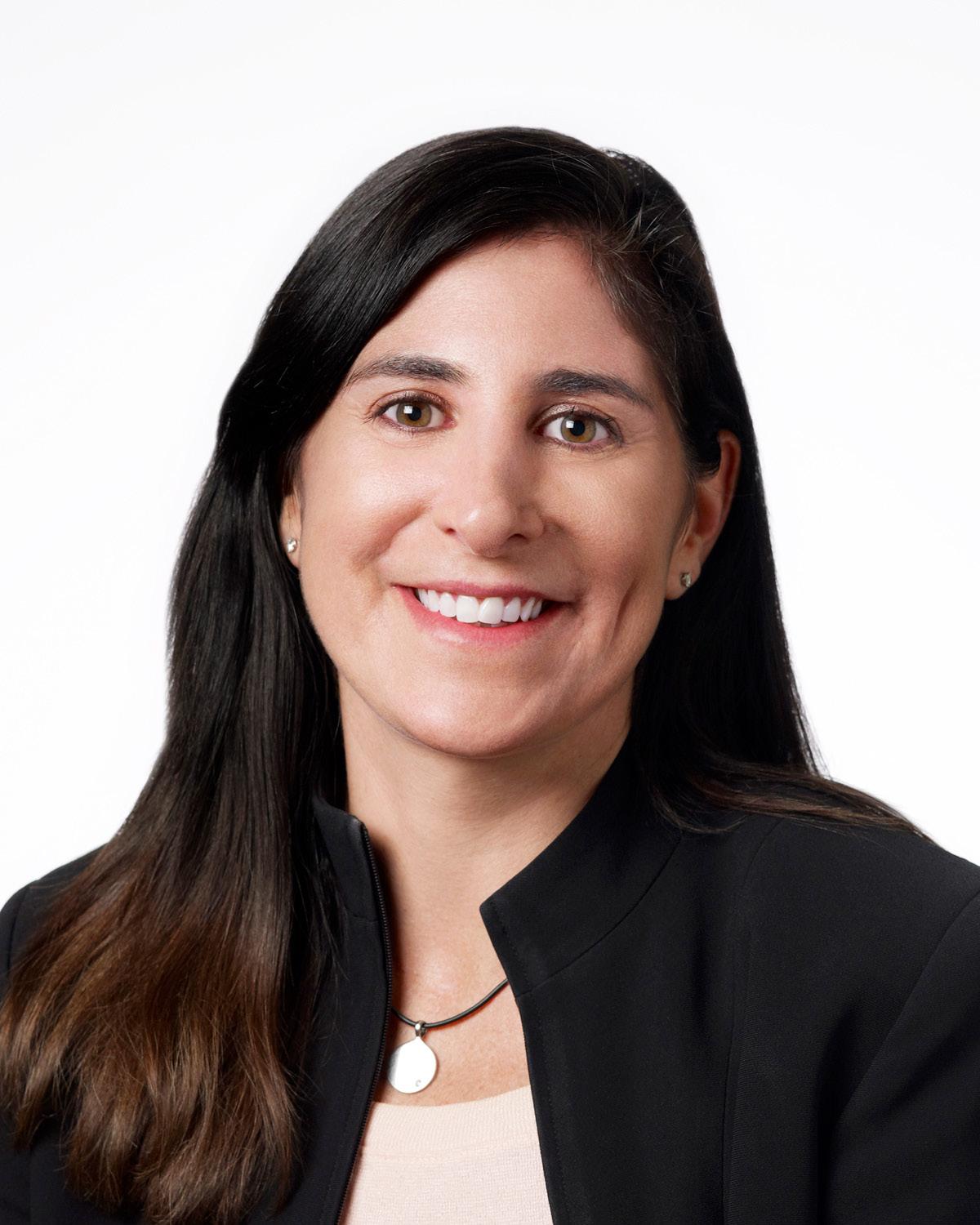
and leadership development through the company’s people philosophy.
The people philosophy provides a strong point of view on what it means to work at Dell Technologies, as well as what it means for the company given its purpose to create technologies that drive human progress forward.
“Just as our technology and expertise help our customers achieve their potential, our workplace should do the same for our team members,” Saavedra says. “We should be a place where a team member not only can fulfill their potential but expand it, growing the boundaries of what it means to be their best personally and professionally.”
In the past year, Saavedra and her team have taken the steps to transform learning within the company. They closely examined how corporate learning was happening by completely rethinking the entire learning experience, Saavedra explains. “We put ourselves in our learner’s shoes and examined everything from our content to our learning technology to how we delivered.”
Dell Technologies has a global workforce of more than one hundred and fifty thousand. Saavedra and her team invested in curating world-class content from internal and trusted external sources, expanding the definition of content to go beyond PowerPoint slides or long e-learning modules to include microlearning, videos, articles, usergenerated content, and more.
“The way people learn has changed and so did our approach,” Saavedra notes. “Live” learning evolved from one-way teaching to multidirectional facilitated discussions. “With more facilitation and less teaching, learners can not only learn from their peers, leaders, and experts, but they can also share their own knowledge and experience.”
In the past year, Dell Technologies has made three key learning transformation investments to help employees achieve, develop, grow, and succeed.
The Learning Studio is an interactive platform that enables a personalized learning experience with access to content from sources such as LinkedIn Learning, TED Talks, and edX in addition to internal content specific to the company. Through artificial intelligence, the studio generates recommendations to employees based on their career and learning interests.
Featured pathways within the program align with future skills, professional skills, leadership skills, and businessspecific technical learning. One example is the Future Insight podcast series, which
provides an inside view of today’s skills and predications of what tomorrow hold through conversations with leaders, team members, subject-matter experts, and industry specialists, Saavedra says.
“Team members can access this and all other content anytime, anywhere, on any device, bringing a consumergrade experience to corporate learning,” Saavedra explains. “More than just a digital platform, the Learning Studio empowers team members to strengthen relationships and community across the company and support mastery of new skills through practice supported by leading software and peers.”
Dell Technologies’ culture was not created by accident, but rather through hard work and intention. “The power of our culture is unifying, yet it allows team members to bring their full selves to the workplace,” Jennifer Saavedra explains. “They can be who they are and thrive in our culture and our company.”
We believe our customer relationships are the ultimate differentiator and the foundation for our success.
We believe in and value our people. We perform better, are smarter, and have more fun working as a team than as individuals.
We believe our ability to innovate and cultivate breakthrough thinking is an engine for growth, success, and progress.
We believe in being accountable to an exceptional standard of excellence and performance.
Dell data has shown the impact leadership has on key outcomes, such as employee and customer net promoter scores, attrition, sales, and more. Thus, leadership development efforts are aligned around three programs: Foundations of Leadership for new leaders, Advanced Leadership Experience for managers and senior managers, and Director Leadership Program for directors and senior directors.
The programs provide immersive experiences for leaders to actively participate in workshops where they partake in simulations and hackathons, learn from each other, and get hands-on practice on how to use digital tools and technology.
We believe integrity must always govern our fierce desire to win.
“We know that leadership inspires our people to be their best and do their best,” Saavedra explains. “It’s the leadership that makes our strategy possible and culture real in each of our teams.”
The third key technology investment area for Saavedra and her team is a software platform called Inspire. But it is much more than a technology platform, she notes. “This
is about culture change and viewing a team member’s impact as holistic from recognition to performance to development.”
The platform is available anywhere from any device, empowering team members to seek and provide recognition, advice, and feedback. This can be private or shared depending on what the team member wants.
“We also enable check-ins to facilitate richer dialogue around impact, priorities, and development between the team member and the leader,” Saavedra explains.
These investments and their successes would not be possible without Saavedra’s agile team, which she says she is so fortunate to be part of. The team created an environment where challenges are welcome and debates positively impact the work they do.
“Importantly, they energize me, are fun, optimistic, ambitious, innovative, and make me laugh,” Saavedra says. “I’m really a coach to set the vision, help connect dots across the team, bridge relationships, and provide them with the right level of coaching, support, guidance, and challenge they need and desire to do great work.”
With a strong team and driven by the mission of driving human progress forward, Saavedra’s impact on learning development has just begun.
1. Customers 2. Winning Together 3. Innovation 4. Results 5. Integrity“We should be a place where a team member not only can fulfill their potential but expand it, growing the boundaries of what it means to be their best personally and professionally.”
JENNIFER SAAVEDRA

Donna Hughes spent years as an attorney in the retail and pharmaceutical spaces and puts her varied experience to use as CHRO at EmblemHealth
By A.J. ZAKDonna Hughes found her passion for the field of human resources by way of law. In her years as an attorney, Hughes focused on employment and labor issues as in-house counsel at Circuit City Stores before later working on fast-paced mergers and acquisitions in the pharmaceutical industry.
She then rerouted her path, taking a job as senior vice president of HR at a pharmaceutical company in 2015 before leaving in 2018 and taking time off from her career to care for her ailing parents. They passed away within five months of one another, an experience that drastically transformed her perspective on how to advocate for people dealing with health problems.
That was her mind-set when the opportunity to become EmblemHealth’s chief human resources officer came along. Nothing else resonated with her like that role did.
“And not just because of what I had just gone through,” she says today. “But also be-
cause EmblemHealth has an eighty-year-old legacy, but it has an entrepreneurial spirit.”
Hughes joined the company—one of the largest not-for-profit health plans in the US—in March 2019. During her time, she has worked to break down communication silos, led an initiative to improve the onboarding experience for new employees, and more.
Hughes grew up in New Jersey in a family with strong Caribbean roots. She studied economics at Rutgers University before attending Rutgers School of Law, where she graduated in 1992. She worked at law firms for a few years before becoming an in-house attorney for Circuit City in 2001. She led the labor and employment section of the legal team there for eight years, up to and including the company’s bankruptcy.
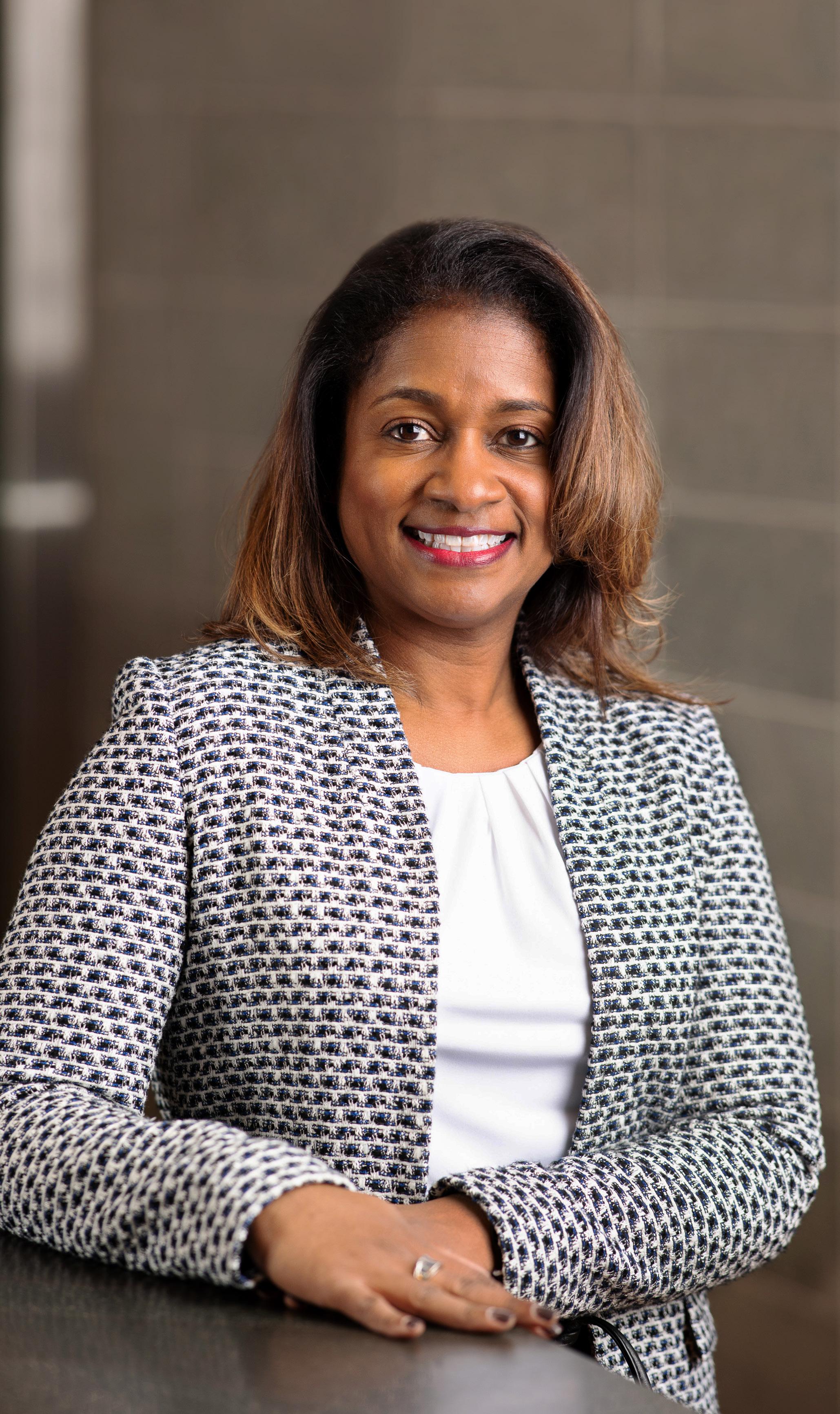
“I was part of a leadership team that had to tell thirty thousand people they would be out of a job. It was earth-shattering,” she says. Her time there during the bankruptcy also required Hughes to serve multiple functions at once—an HR partner one day, an executive coach on other days, and an attorney handling employee benefits issues on others, until the company closed in 2009.
After that experience, Hughes left the world of retail. She took a position as an attorney with Watson Pharmaceuticals, which eventually became pharmaceutical giant Allergan. During her time there, the company underwent massive growth, completing acquisition after acquisition.
Much of her time at Watson is still a blur, Hughes says. Days were full of fast-moving deals, post-merger integrations, and time spent developing and leading HR workstreams. All of that upheaval meant she was one of the leaders who had to determine how company culture functioned as it absorbed those other businesses.
“I learned to be a better listener, because when you’re moving that fast it’s easy to just be quick, hit, and move,” she says. “And you can’t do that without knowing when to stop and listen and really hear other voices that are participating in the process.”
In 2015, Hughes received a call from the CEO of pharmaceutical company Impax Laboratories. He asked her to join his executive leadership team—but not as an attorney. Impax sought someone with a nontraditional
Donna Hughes CHRO EmblemHealth
As one of the nation’s largest non-profit health insurers, EmblemHealth is dedicated to creating healthier futures for our customers and communities.
We commend EmblemHealth Chief Human Resources Officer Donna Hughes for championing teams and setting new standards for transformative change.
strategic background to become its senior vice president of HR. Her law background gave her that edge, allowing her to approach problems in a more multidimensional context.
Hughes worked at Impax until late 2018. After the passing of her parents, Hughes made her way back into the full-time job market, but this time as someone who understood the work it takes to be a caregiver and patient advocate.
“As a leader, I’ve always told my teams, family first,” she says. “It will all work out in the end if you do what’s important for your personal values.”
It wasn’t long after joining EmblemHealth in early 2019 that Hughes knew she had made the right career decision. She visited one of AdvantageCare Physicians’ primary and specialty care offices and EmblemHealth Neighborhood Care, which offers free health and wellness support in New York City. Hughes spoke with a patient who shared how EmblemHealth services helped that patient to lose weight and eat healthier, in large part by taking into account the socioeconomic barriers that had made those goals difficult in the past. Hughes got to see firsthand the impact her organization has on people’s lives.
“In pharmaceuticals, I felt that because we were helping people to become healthier and get the medications that they so badly needed,”
Hughes says. “But this is different. EmblemHealth’s mission is to create healthier futures for our members and the communities it serves. This is personal and hands-on.”
In her short time at EmblemHealth, her team has overhauled what the first one hundred days of work look like for new employees joining the company. She’s also cut communication inefficiencies across the company to support the agility needed in an evolving organization.
It is an exciting time for EmblemHealth as it focuses on innovation, building customized offerings for its members, and ensuring members have access to high-quality, affordable healthcare, Hughes explains. And in 2020, Hughes will further focus on strengthening the employee experience.
Her background as an attorney hugely shaped her approach to leadership today. The profession of law is often one of “command and control,” as she describes it. Over time, Hughes came to believe that she can win more hearts and minds as a servant leader, rather than by being overly prescriptive—especially when an organization is navigating significant change.

“Because it’s not easy,” she says, “and colleagues experience different feelings along the curve of change. A good leader has to be in tune to that, to help folks along the way.”

“EmblemHealth has an eighty-year-old legacy, but it has an entrepreneurial spirit.”
DONNA HUGHES
As a senior partner at McKinsey, Kevin Carmody helps companies become resilient through holistic, organization-wide transformations
By JOSEPH CHARNEY Portraits by GILLIAN FRYCompanies with spectacular size and rich histories are uniquely vulnerable to the ills of habit. For many companies, standard business practices and operating strategies become ritualized. “The way we do things” becomes deeply ingrained from top to bottom and extremely difficult to change.
But at one point or another, there comes a time that demands radical change. Without evolving the “way we work,” companies will struggle to survive. Doing so requires perseverance, grit, and gusto.
Kevin Carmody, a senior partner at McKinsey, specializes in helping companies drive major transformation programs.
Kevin Carmody conceptualizes resilience as one fundamental question: how does a company spend part of each day looking forward and preparing for likely disruptions that might impact its ability to reach full potential?
He lists three critical ways companies can build resilience:
1. Enhance the role of the finance team. Too often, the CFO is seen as simply an accountant, measuring historical performance. Their extensive knowledge of the organization’s financial health and what drives performance, as well as their access to critical information, can help plan for the future.
2. Pressure test the capital structure and cash flows. Routinely test the top ten most sensitive operating inputs. This helps identify potential landmines that could materially impact liquidity while also highlighting smaller issues that can have a compounding effect when combined with other unforeseen events.
3. Unlock hidden value from the balance sheets. Relentlessly scrub the balance sheet to generate substantial cash and optimize the company’s cost of capital.
While many of McKinsey’s consulting efforts involve deep analysis on a particular problem that goes “narrow and deep,” Carmody’s work is focused on delivering holistic and rapid transformation programs that fundamentally change the trajectory of a company’s performance. Citing McKinsey research that concluded 70 percent of transformation efforts fail, the firm launched a new approach to delivering these types of organization-wide transformations, roughly ten years ago.
“We found that approximately 70 percent of these companies did not achieve what they initially set out to do,” Carmody says. “We took this as a challenge and developed an approach that was designed to flip the odds and help our clients reach their full potential.”
This approach was designed to codify the common threads among the transformations that succeeded and avoid the common pitfalls that caused companies to fail. McKinsey has refined its transformation practice, helping several companies change their fates, drive performance, and reach their full potential. “We help at a scale that mobilizes entire organizations,” Carmody says.
“There’s a very specific way to drive exceptional performance at companies in a fundamentally different way,” he continues. “Not just strategy, not just procurement, not just the commercial organization, not just operations—but instead looking at everything.”
Carmody grew up in the Midwest, and he credits the region’s blue-collar mentality and his father’s early work at a manufacturing company as precursors to his work at McKinsey. Carmody recalls being introduced to his father’s company at ten years old.
“He would introduce me to folks in the office and explain the intricacies of how the company worked but he always made a point of taking me down to the shop floor to show me the people who were actually manufacturing the products,” Carmody explains. “He said, ‘You can learn from people across all levels of the organization, but you first need to understand what we actually do in the plant each day.’”
This early and comprehensive “end-toend” education proved critical in Carmody’s current line of work. “It helped me think more holistically about what I do today—you
“Everyone plays a critical role in the success of the company and must be treated with the utmost respect.”
KEVIN CARMODY
 Kevin Carmody
Senior Partner
Kevin Carmody
Senior Partner
have to look at the full picture and engage the entire organization to be successful,” Carmody says.
The most critical lesson he learned from his father, however, was about how to fix a company’s culture. “It doesn’t matter if you’re the CEO or if you’re working on that third shift—everyone plays a critical role in the success of the company and must be treated with the utmost respect,” Carmody says.
While the specifics change based on any given industry, a pillar of a McKinsey’s approach to transformation involves engaging thousands of employees at all levels of the company. “It’s not good enough to engage the top ten executives—you need employees at all levels of the company to buy into
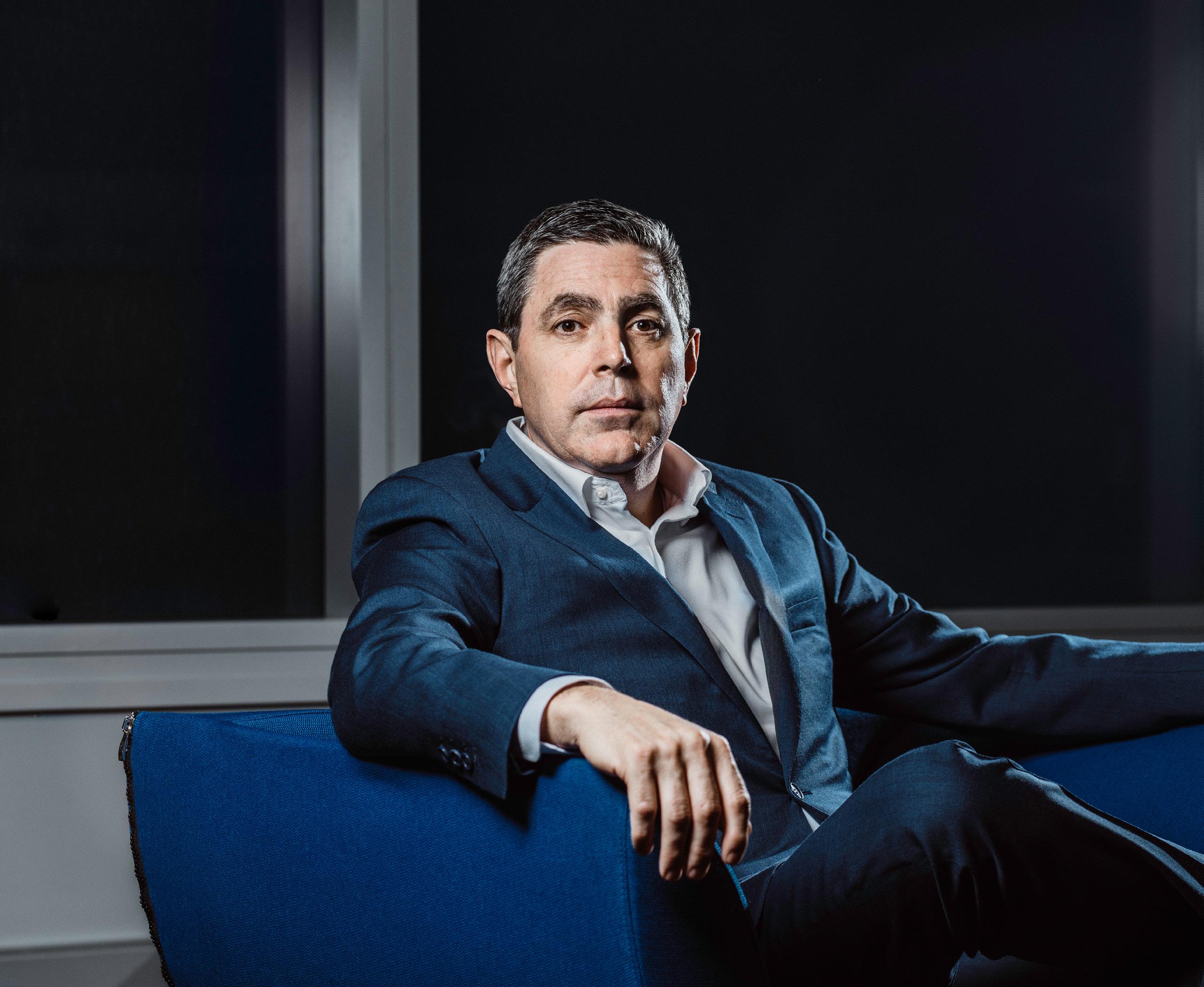
the program and personally deliver performance,” Carmody explains. “That’s how you begin changing the hearts and minds of the organization.”
A recent transformation Carmody led did just that, seeking value across all aspects of the organization. The company faced downward pricing pressure, an inefficient cost structure, excessive leverage, and other legacy issues from recent M&A activities.
“When we arrived, the management team was initially focused on improving G&A [general and administrative] costs and managing near-term liquidity to see them through a refinancing,” Carmody says. “While this was the path of least resistance, there was a clear
opportunity to help them drive a financial and cultural transformation that looked at every lever impacting performance, starting with the operations teams at each site. It was the first time that the site-based operators had a real voice in materially shaping the trajectory of the business.”
According to Carmody, over a twelvemonth journey the company delivered more than $200 million of EBITDA improvements, of which G&A was only a small percentage of the overall target. “This allowed the company to reset the business, recapitalize its balance sheet and drastically improve its competitive position as an industry leader,” he says.
Change is hard and getting the managers and workers to “buy into the mission” is the most challenging imperative, Carmody explains. If a company can demonstrate that an employee’s work is tangible and critical to the success of the transformation, these programs have a much greater chance of succeeding. “People want to know that their voices are heard and that they are actually contributing to the success of the company in a meaningful way,” Carmody says.
When the McKinsey team looked at a set of companies that applied this type of
approach, the results were staggering. “On average, the companies delivered 2.7 times more than the management team thought possible when the transformations got under way,” Carmody says.
During a transformation, the intellectual rigor of the initial analysis and planning is only a starting point. According to Carmody, focusing on the details of execution, combined with “grit and perseverance” are also key ingredients of success. Given his previous experience in the private sector, Carmody empathizes with client executives and employees who are tasked with weathering the storm of a company-wide overhaul.

During high school, Carmody played basketball competitively under the tutelage of a coach who played football under the legendary Bo Schembechler. “We had some of the hardest practices—there was never a day off,” Carmody says. “He taught us that every cut, every pass, every shot, counted. And that grit, perseverance and an attention to detail were the seeds of success.”
In the business world, Carmody says that “hope alone is a losing proposition.” Under Carmody’s leadership, McKinsey’s transformation practice combines the best of strategy and execution to help companies persevere.
“You have to look at the full picture and engage the entire organization to be successful.”
KEVIN CARMODY







In six years, Jessica Hodkinson has held four roles with increasing responsibility at Panasonic. “My path to general counsel was somewhat different than most,” the lawyer says. “I wasn’t a commercial lawyer or a securities lawyer; I’m a litigator-turned-labor-and-employment lawyer who also happens to do a lot of investigations.”
 By BILLY YOST
By BILLY YOST
Whatever the unusual path to her position, Hodkinson obviously made quite the impression. The lawyer jumped from employment law to deputy general counsel to North American general counsel in the time it takes some lawyers to get fully comfortable in a single role. Since assuming control of the North American region, Hodkinson has initiated a department-wide reorganization fundamentally rooted in what she calls the three C s: commitment, communication, and collaboration.
In her short time at Panasonic, Jessica Hodkinson rose to general counsel and reorganized the North American legal departments using her three Cs
For the past four years, Jessica Hodkinson has led Panasonic’s partnership with New Jersey-based Volunteer Lawyers for Justice (VLJ). VLJ and Panasonic lawyers created a Veterans Legal Wellness Clinic that provides a broad range of free legal services, such as driver’s license restoration and finding employment and housing. The clinics are held at a local Veterans Administration hospital to provide easier access. This year, Hodkinson was asked to join the board of trustees of VLJ.
“These opportunities allow us to give back to society and make an impact,” Hodkinson says. “Contributing to society is one of seven basic business principles the company’s founder wrote almost a century ago. It remains an important pillar of Panasonic and a central part of an organization that’s purpose driven, whether empowering sustainability or defining the future of transportation, and feels especially meaningful and impactful in my work as general counsel.”
One of the best parts of speaking with Hodkinson is her frankness about moving up the ladder at Panasonic. “I think Panasonic sees me as a problem-solver as I’ve helped lead the organization in navigating the constantly changing landscape of our business,” Hodkinson says. “Having quickly risen through the ranks of the legal department, I’m grateful to be part of an organization that provides growth opportunities for professionals who can meet the needs of our diverse and rapidly evolving organization.”
It’s important to note that the GC didn’t just happen into her role. Her nontraditional path has provided her a slightly different tool belt with which she has built out her own expertise. “Coming from labor and employment really helps you understand what motivates people and where the risks lie,” she says. “As a litigator, you know where challenges are and how to help the various businesses within the organization overcome those vulnerabilities and drive success.”

This is Hodkinson’s particular strength: be an identifier of problems and a solutions-oriented leader capable of making needed changes.
One of those changes involved the multiple North American legal departments that had long operated as somewhat autonomous units with minimal communication and collaboration. “Though there had historically been dotted line reporting, it’s now direct reporting to me with dotted line reporting to their business leaders,” she says. “This has enabled more communication, greater leveraging of technology and information among the various divisions, and a reduction of costs.”
The North American legal department reorganization illustrates all the most important parts of Hodkinson’s three C s of leadership. “The first C—commitment to our business—helps drive all of our various businesses where they need to go,” Hodkinson explains. “This includes our department focusing on digitization as well as automation.”

McGuireWoods knows that only a collaboration of bright minds and different viewpoints can create the innovative solutions our clients need in today’s marketplace.
We congratulate Jessica Hodkinson for her leadership, insight and support as General Counsel of Panasonic. We value the partnership that has been built and the trust Jessica has placed with our firm.
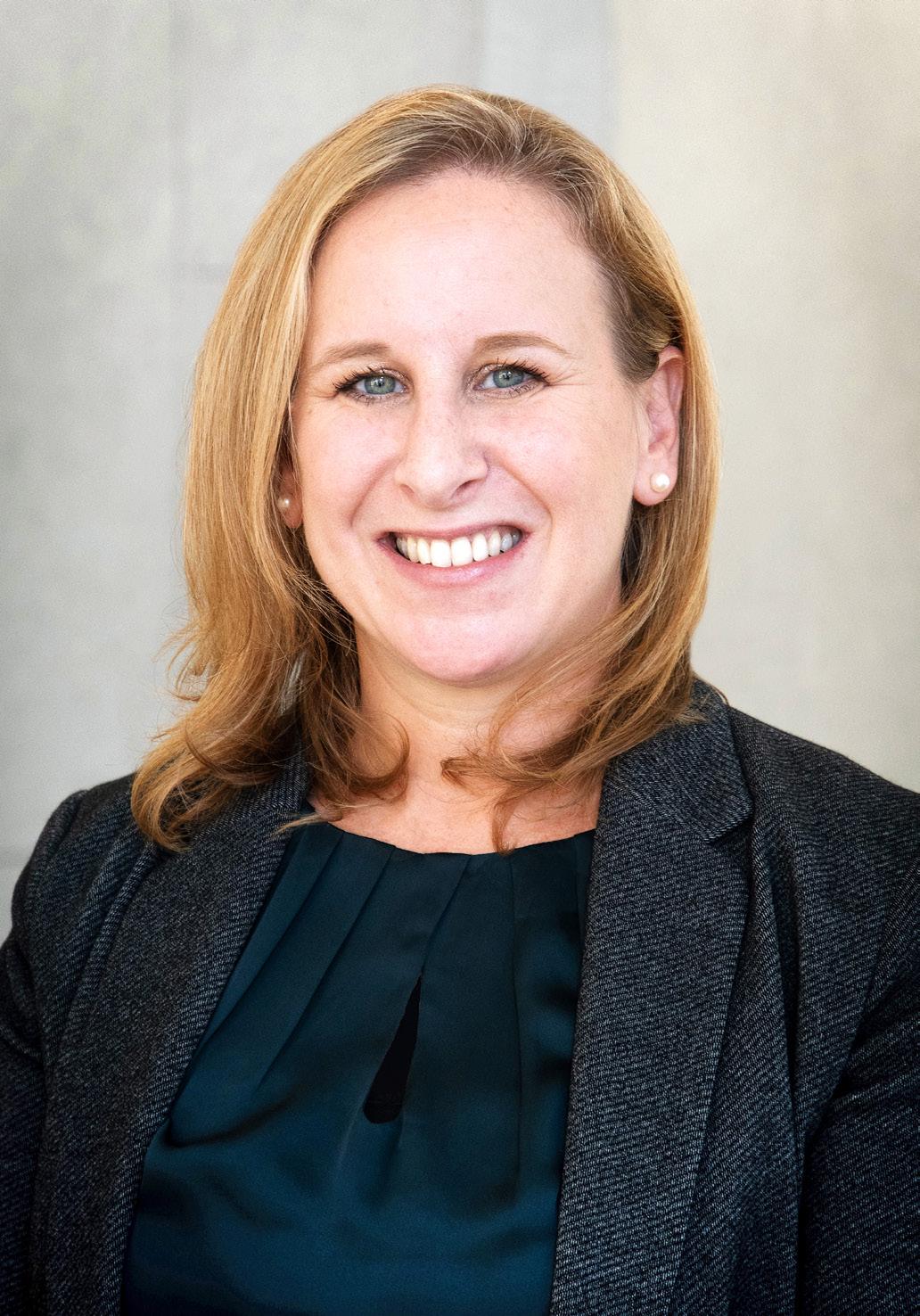
That effort started with baby steps: automating NDA agreements, improving the e-billing system, and focusing on data privacy tracking rules. “We’re really making sure that we have the technology within the legal organization to drive efficiency and collaboration and better practices overall,” Hodkinson says.
The second C—communication—is inherent in better connecting all of the North American legal departments and lends it-

self directly to the third C of collaboration. “Leveraging the expertise that we have in our specific regions and working together, whether it’s in IP, legal operations, privacy, or various other subject matters, is an initiative we’ll be continuing to drive going forward,” the lawyer explains.

Panasonic has been such a strong proving ground for the three C s partially because of its more than thirty diverse business units. “We have a huge portfolio of
Jonathan
Blank, Partner +1 434 977 2509
jblank@mcguirewoods.com
1,100 lawyers | 21 offices www.mcguirewoods.com

vision.
When sensitive matters call for comprehensive strategies, responsiveness, seamless coordination, and innovative, cost-effective advocacy, clients turn to WilmerHale for uncompromising defense in high-profile and complex litigation and investigations.

businesses from producing the lithium-ion batteries for Tesla to operating the largest, most advanced intelligent transportation data network in the US and powering WiFi and in-flight entertainment systems for top airlines,” Hodkinson illustrates. “For me, I am able to learn something new literally every single day.” The GC says that those lessons are what continue to propel her forward in her role and keep her always engaged.
Ongoing and evolving challenges for Hodkinson and the North American legal team include data privacy and the business and compliance perspectives of trade issues that are always a challenge for globally operating companies.
As Hodkinson continues to evolve in her role, she says that her strength as a relationship-builder is one she continues to rely on for partnering with so many of the various business units within Panasonic.
“I try to always be the communicator. I’m very open and transparent, sometimes to
a fault,” Hodkinson says, laughing. “But I think this is what also makes me valuable. People know that I will say what I think.”

With a reorganized continental legal team and a penchant for solving any problems that come her way, Hodkinson says that family time is essential to maintaining her cool—also yoga. “When I don’t do yoga, I think it’s a disservice to everyone around me,” the GC jokes.
Balancing the legal needs of thirty-plus business units seems to come a little more naturally to Hodkinson than a yoga pose, but given her capacity for finding solutions, it’s likely that the fast-rising GC will be found in the eight-angle pose any second now.

WilmerHale: “Jessica’s great instincts allow her to cut through the noise and remain focused on the most important risks and opportunities. She operates with integrity, respect for all people, and the decisiveness that is critical in a complex, fast-moving organization.”
—Ronald Machen, Cochair, White Collar Defense andInvestigations
“I think Panasonic sees me as a problem-solver as I’ve helped lead the organization in navigating the constantly changing landscape of our business.”
WilmerHale applauds Jessica Hodkinson’s leadership and
Heather McHale isn’t trying to “have it all.” But, you might say she’s got it anyway. She married her high school sweetheart, had three children, and now, as executive vice president and chief human resources officer at OneMain Financial, she is responsible for shepherding the careers of almost ten thousand employees.
McHale planned to go into counseling, but a college course in organizational psychology sparked a fascination about how people work together.
“The majority of our lives are spent at work,” she says. “How do we bring diverse groups of people together and optimize their ability to succeed in an inclusive, challenging environment that encourages them to build their careers here and do their best?”
After graduating from Loyola University New Orleans, McHale went straight into an organizational psychology master’s program at Columbia University, taking classes at night and interning full time in HR departments during the day. She graduated,
Heather McHale believes in a culture that supports employees both at work and in their personal lives, which drives how she’s shaping the employee experience at OneMain Financial
married, and began working in HR at Pfizer and then Merrill Lynch. Seven years in, she became pregnant with her first child, and it made her rethink her priorities.
“I worked super hard to achieve my career goals and focused on bringing my best to my job each day and accomplished and achieved things I was really proud of. And then one day, I had this little baby in my arms, and it made me reevaluate my life. I was like, ‘How am I supposed to do this?’” she says. “Employees, particularly women, are under pressure to have it all and balance a rich family life with a demanding corporate job. And quite honestly, even with a great partner in my husband, I couldn’t figure it out. I know there’s people who do, but I wasn’t one of them.”
Around that time, McHale spotted a New York Times Magazine story, titled “The OptOut Revolution.”
“The article profiled women, some just like me, and they said it might be OK for us to leave the workforce so we could take a step back and focus on our families, and then come back at a later time,” she recalls. “I remember reading that piece thinking it was a revolutionary idea for me and going, ‘You know what? I’m going to give it a try.’ At the time, I thought it may have been the biggest career risk of my life.”
McHale helped with her family’s business after leaving Merrill Lynch and later had two more children. The day she brought her youngest home, her daughter—her second
Heather McHale EVP and CHRO OneMain Financial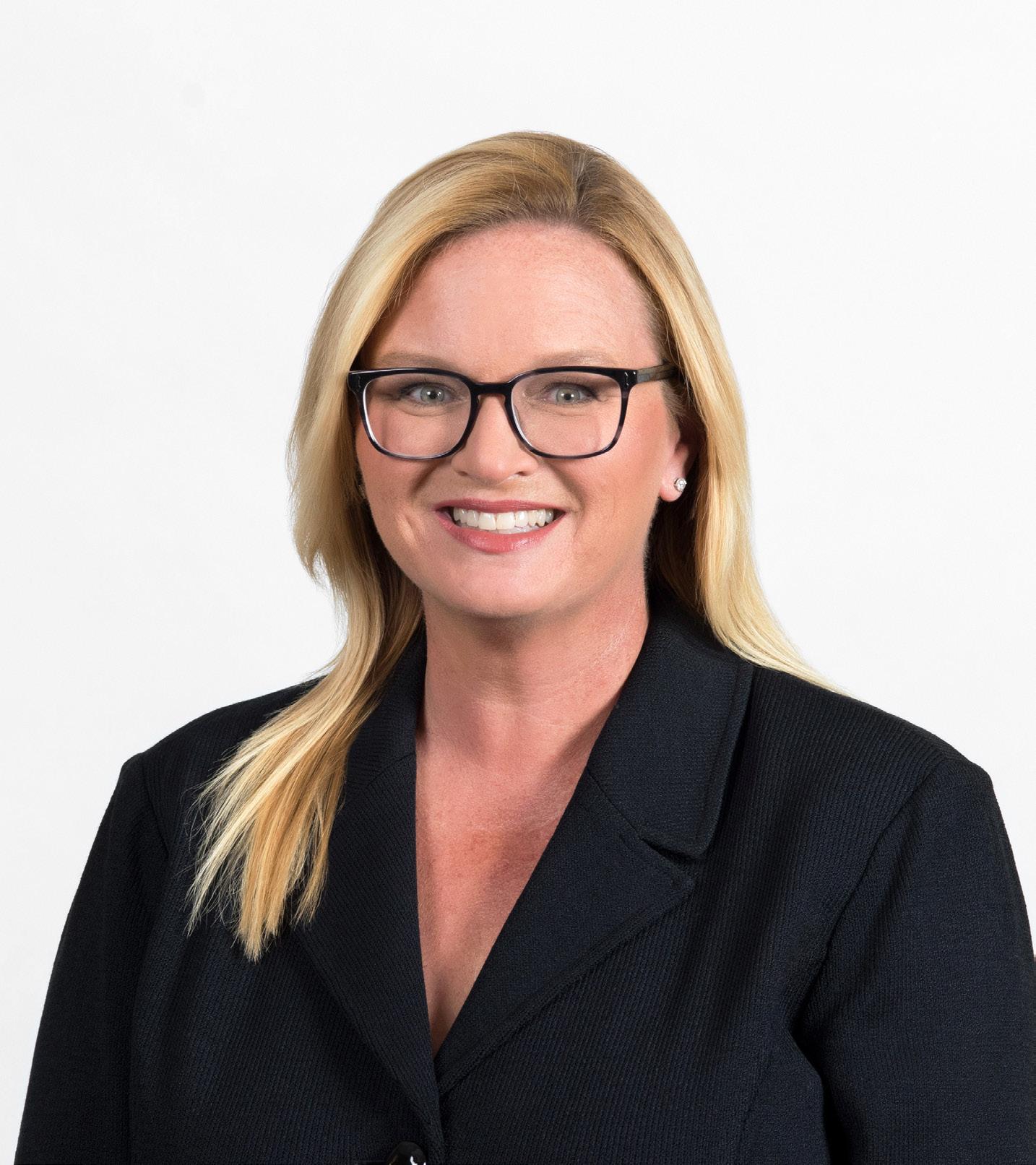
child—was referred for early intervention and later diagnosed with autism.
“After several years of hearing others question my decision to ‘walk away,’ I knew for sure I had made the right decision about my career,” she says. “My biggest career risk ended up being the best gift I could’ve given myself and my family, because I took the time and had the breathing room to really focus on my daughter’s needs. I was able to fully immerse myself in learning about my child’s disability and how to advocate for her.”
Since then, every career decision has been balanced by McHale’s personal drive for achievement and her family-first attitude. She remained at home until she
felt confident her daughter was on the right path and then reentered her career with a position that was more compatible with her new life. The experience with her daughter also changed her approach to her work.
“It makes me more thoughtful and patient in my approach. It has helped me understand how we relate to each other, how someone may need to learn or train differently, how people develop and progress in their jobs differently and what someone may need to be successful usually varies from person to person,” she says. “This may all look and feel very different, so we really need to focus on meeting the employee where the employee needs to be met in order for them to do and be their best.”
At OneMain, which specializes in personal loans for nonprime consumers, customer experience is the top priority. McHale makes sure employees have the same great experience at every stage of the employee career cycle.
“I take a very holistic view of our employees and what their total work/life experience looks like. I never want that to have one lever out of line,” she says. “From day one at OneMain, I want employees to feel welcome at this amazing organization and ensure that they have everything they need to be a successful team member and meet all of their career goals.”
To understand and shape that journey, McHale spends a lot time visiting many of the
1,600 branches and meeting with employees to understand what they need.
“I think it’s one of those things you have to prioritize. You can do surveys, but they’re no substitute for relationship building,” she says. “Have I met ten thousand employees? Absolutely not. But I travel a lot. I get on the road. I sit down and have conversations. Data tells you a lot, but human interaction tells you more.”
McHale adjusts how she delivers bestin-class HR by strengthening partnerships, driving value, developing future leaders, and fortifying the company’s culture of inclusive teamwork and customer service. She added new positions into her organization, including a head of leadership development, and is creating programs for entry-level managers up through the C-suite. She’s helping OneMain attract world class talent and develop its future leaders.
McHale is still skeptical about “having it all.” Some days, she says, her dinner consists of a Pop-Tart while standing at the kitchen sink after her last child has gone to bed. But she’s giving it her all and having a great time in her current role.
“I feel incredibly privileged to be part of the leadership team at OneMain. We’re committed to delivering the best for our customers and our employees every day,” she says. “Being on this journey, at this time in my life, with this extraordinary team—I couldn’t ask for more.”
“How do we bring diverse groups of people together and optimize their ability to succeed in an inclusive, challenging environment that makes them want to be here and do their best?”
HEATHER MCHALE
Devoted to both our customers and our employees, we’re not like other lenders, and we’re not like other employers.

At the New York Racing Association, Jelena Alonso takes an artful approach to accounting, using numbers to tell a compelling story about the business, its wins, and how it can improve
By STEPHANIE ZEILINGAJelena Alonso is an accountant by trade and a storyteller by vocation. As vice president and chief accounting officer at the New York Racing Association (NYRA), she believes her role is not only numbers and statistics but also to weave the data into the larger business narrative.
Her unique approach originated from her background in music. At first planning to pursue a degree in music theatre, Alonso quickly realized she was on the wrong path, signed up for some business classes, and learned she had a knack for accounting. This was not as big of a surprise as it would seem.
“Music and math are very similar—they use the same side of the brain and require
you to count,” Alonso says. “They’re both about creative storytelling. Music tells a story set to the counts. Accounting tells a business story set to numbers.”
She began her career as an auditor at PricewaterhouseCoopers. While there, she learned she wanted to be in-house, where she could influence strategy and be an agent for positive change. “I audited companies in many different industries,” she says. “A big aha moment was when I realized that I was always checking someone else’s work. I regularly saw processes and account schedules and reconciliations that could be improved. I had an itch to fix things.”
Alonso’s philosophy of accounting as storytelling deepened at PwC. “The CFOs and accountants who caught my attention were
the ones who really told a story and took me away from the numbers,” Alonso says. When she began delivering reports in her career, she followed suit, always referencing the larger narrative behind the numbers. “I never want to just say ‘revenue went up 2 percent’—that’s boring! I want to say why it went up. I always try to dig a little deeper and get to the color behind it.”
When an opportunity opened up at NYRA in 2009, she jumped at the chance. “I’m a Long Island girl and was eager to get out of the city and be able to work on this beautiful racetrack,” she says. She relied on her background in auditing to quickly get up to speed at NYRA, going line by line to understand where each item came from and how it fit into the larger business.
 Jelena Alonso VP and Chief Accounting Officer The New York Racing Association
Jelena Alonso VP and Chief Accounting Officer The New York Racing Association
The New York Racing Association and Milliman have a long-standing commitment to providing the best health and retirement benefits to NYRA employees. Milliman salutes NYRA for their dedication to health and financial well-being.

In her current role, Alonso oversees all accounting functions, as well as financial compliance with regulations, and cost savings for NYRA, which operates three racetracks. Her accounting oversight includes the finances stemming from the organization’s racetrack, gambling, concessions, TV broadcasting, parking, and ticket sales operations.
In other words, it’s a complex business. “There’s a lot of information from all these different areas that needs to be captured and reported correctly,” Alonso says, noting that as a quasi-governmental agency and a gambling institution, is heavily regulated. “There are many statutes I have to be compliant with regarding racing, gambling, and anti-money laundering laws. Having so much money moving through here translates to a big focus on internal controls, particularly over financial reporting.”
Alonso always has an eye out for process improvements and works with CEO David O’Rourke and other senior managers to drive strategy and innovation. In reporting numbers, she still relies on storytelling and has taught her team to do the same. “It’s important to be technically correct as an accountant, but I also teach my team to really understand the results so they can tell the larger business story behind the numbers. It’s not just about putting numbers in place, it’s about translating them into business trends, driving operational efficiencies, and improving
profits. It’s about making the story timely and interesting and talking to the audience in English, not financial language.”
Alonso’s improvements to business operations at NYRA include her work on an RFP for software to manage and centralize sponsorships sales, which include seating, signage, races, and TV spots, among other things. “With new revenue recognition rules, it’s important to capture all the data in one place so we can account for it correctly,” she says.
This software will also help operations run more smoothly. Salespeople will always have accurate information on what’s available for sponsorship at what rate and individual departments, from ticketing to the TV crew, can fulfill sponsorships as contracted. The software is expected to roll out in 2020.
Racing is an old business, and Alonso relishes the challenge to update and fix outdated, inefficient, or broken processes. “I’m still constantly asking questions,” she says. “Anytime I ask why we do something a certain way and I hear this is how it’s always been done, that triggers me to think there’s a better and more efficient way forward.”
Alonso doesn’t see her career at NYRA as all that different from her original aspirations in musical theatre. “Belmont Park is right outside my door, and my office overlooks the paddocks. I get to see those beautiful animals every single day,” she says. “I really think of our business as putting on a show.”
“I never want to just say ‘revenue went up 2 percent’—that’s boring! I want to say why it went up. I always try to dig a little deeper and get to the color behind it.”
JELENA ALONSO
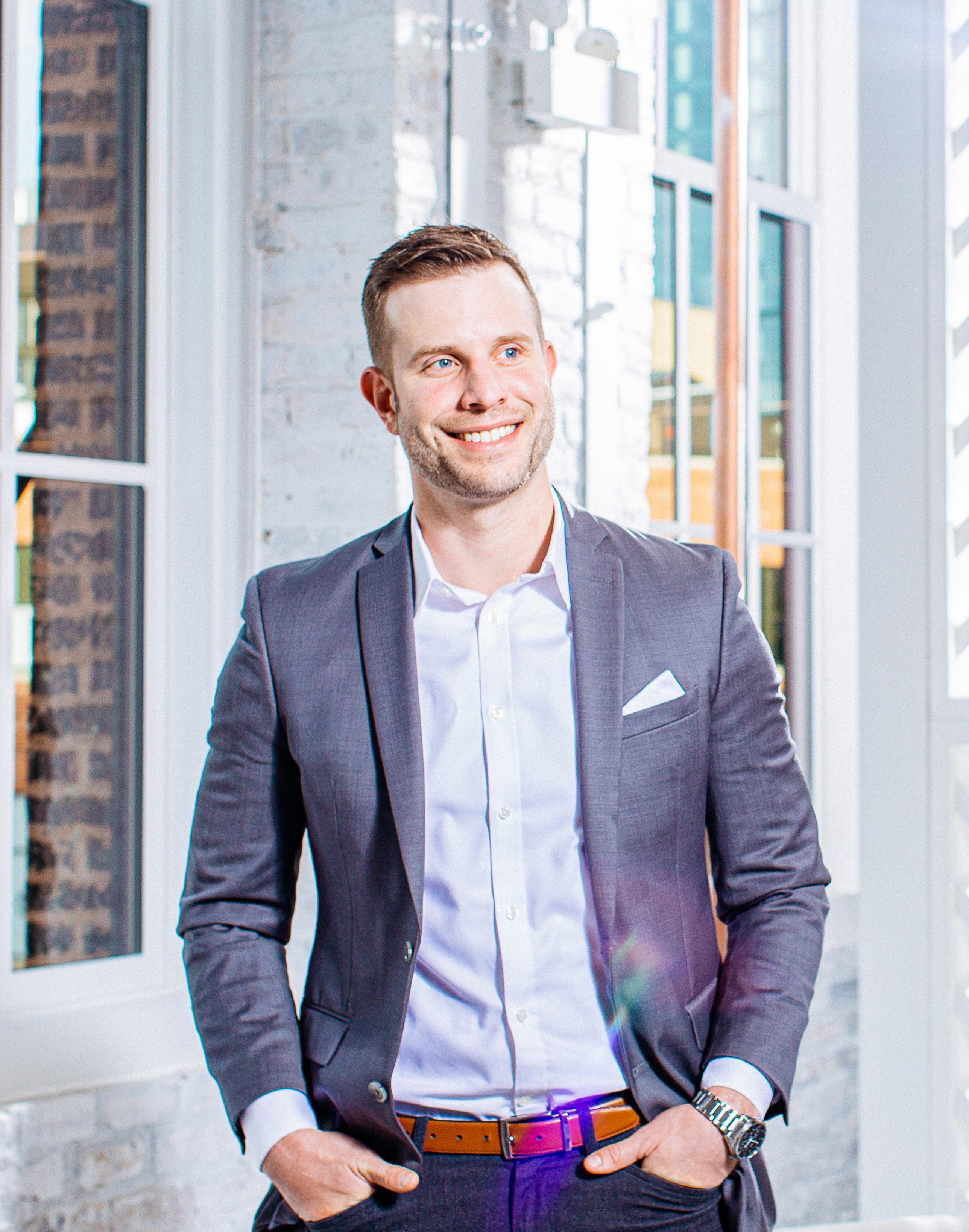 Shawn Bushouse
COO
Vital Proteins
Shawn Bushouse
COO
Vital Proteins
Vital Proteins’ collagenbased health and beauty products have rocketed to the top of the marketplace in less than a decade. And according to Chief Operating Officer and Chief Financial Officer Shawn Bushouse, it’s because of one thing: culture.
“I have never seen a business achieve so much in so little time, repeatedly,” remarks Bushouse, who came to Vital in April 2018 after leading the James Skinner Baking Company as both executive vice president and CFO. “In my Fortune 500 days, some of the product we launched would’ve had a twelve- to eighteen-month launch target. At Vital, we’ve gone from concept to shelf inside of sixty days—it’s truly amazing what can happen when you rewrite the norms,

move with speed, and assume nothing is impossible.”
Vital has worked to cultivate a “hyperentrepreneurial” culture, Bushouse explains, a culture that complements the fast-paced, innovative demands of the market by ensuring that everyone is doing what they truly enjoy.
“People here have found what they’re really good at, what comes naturally to them,” Bushouse says. “When everyone has that mind-set and genuinely rallies around the Vital mission, the workplace becomes very effective.”
Promoting this kind of culture is a constant effort, Bushouse explains, and starts even before a new employee’s first day at the company. “While the tangible experience is vetted in our upfront filtering processes, in later rounds we are looking to see if the employee has the entrepreneurial mind-set,” he says. “Do they view their career as a set of jobs, or do they view it as an opportunity do something truly meaningful?”
Every employee, regardless of level or department, goes through an immersive orientation program once they join the team, Bushouse says. “Each functional lead in the company comes in and meets the new employees and presents on what their department does, and on the third day the employees go into the manufacturing facility and warehouse to truly understand what we do as a company,” he says.
This approach not only helps new employees hit the ground running but also
strengthens the bridge between the commercial and operational sides of the Vital business. That bridge is particularly important to Bushouse, who, as the son of trade workers, grew up surrounded by people working in construction, plumbing, and electrical roles.
“Vital is a commercially oriented company—we have world-class sales, marketing, PR, and design—and I’ve driven us to view the operational and support areas in the same way,” he says. “It’s very important to make sure that both components of the business are working together.”
As COO, Bushouse has worked to champion the success of the operations and supply chain teams, bringing “elevated life to the operations environment” and celebrating the wins of both commercial and operational teams. In fact, he says, even people who aren’t part of the Vital team would be able to see how committed the company is to both sides of the business, just from walking in the door.
“Our headquarters is an absolutely beautiful building. The aesthetics are just amazing, and it has been meticulously designed to promote openness and collaboration,” Bushouse says of Vital’s new Chicago base. “But if you walked in our manufacturing facility, you would see the exact same décor, right down to the carpet choices. And that sets a certain atmosphere—if you walk in as an hourly employee, you feel just like the CEO does when he walks in in the morning.”
“It’s truly amazing what can happen when you rewrite the norms, move with speed, and assume nothing is impossible.”
SHAWN BUSHOUSE

As told by Shawn Bushouse
“Mentoring is how we ensure that we are unlocking the best from each employee. It’s easy to say mentoring is for slower growth, for more mature companies. I couldn’t disagree more. I’d argue it’s even more important to dig in and directly mentor employees in high-growth, fast-moving environments so that you can help keep everyone focused and not slide into a ‘normal’ pace.”
But it doesn’t stop at décor. Since 2018, Bushouse has worked to foster an unparalleled working experience for all Vital employees— because company culture, he explains, is all about the collective employee experience.

According to Bushouse, Vital Proteins employees are able to take advantage of a wide range of programs, including a quarterly performance bonus plan that “makes all employees part of our success,” group fitness classes hosted on the rooftop by fitness influencers, and access to complimentary coffee and smoothies prepared by an in-house barista at the Vital Café.
The culture created by those types of programs has helped propel Vital to its current level of success, but maintaining that type of culture, especially during periods of
hyper-growth, is another undertaking altogether, Bushouse notes.
“As the business moves lightning quick, it’s very easy to put your head down, push forward on your own agenda and tasks, and let that broader culture-building element drop a bit,” the COO says. “We absolutely sprint through the day, focusing on very tangible, short-interval goals. It’s initiatives like the employee orientation program that help us keep our focus on the cultural element.”
Now, Bushouse says, Vital plans to bring that business style to the rest of the world. “We’ve seen such wild success in the US, and now we are bringing Vital to the EU and Asia,” he says. “What a great opportunity to bring fantastic products to the rest of the globe and extend the Vital employee base.”
When Lou Nowikas came to Hearst fifteen years ago, he assumed it would be in a role similar to the specialized design and construction project management position he had perfected at Goldman Sachs. But as has become a tradition, the job wasn’t entirely the job.
“I came to Hearst to manage specific areas of the Hearst Tower design and construction and quickly learned I’d be involved with . . . everything,” Nowikas says with a laugh. The robust team he was used to being part of was now Nowikas and one other person. From programming and building to office design and furniture selection (along with more traditional amenities, operations, and security), it was now under Nowikas’s purview, and he’s only taken on more as the years rolled on.

Hearst’s Lou Nowikas goes beyond his role as vice president of real estate and facility planning to reduce environmental impact and increase employees’ well-being
 Lou Nowikas
VP of Real Estate & Facility Planning Hearst Corporation
Lou Nowikas
VP of Real Estate & Facility Planning Hearst Corporation





The now vice president of real estate and facility planning has seen the breadth of his work increase exponentially, but in ascending roles at Hearst, Nowikas has maintained a determined dedication to the employees by making sure Hearst Tower is able to evolve with the times, and his recognition that sustainability and wellness initiatives can often intersect has laid the groundwork for the betterment of both Hearst’s employees and the environment.
After the Hearst Tower received its distinguished LEED certification upon the

completion of its nearly eighty-years-in-theworks tower construction, Nowikas said there was cause for massive celebration. Initially, the project had only been projected to earn LEED silver distinction, but during the process, it was determined the building could go for the higher gold certification.
The Hearst Tower was the first skyscraper in New York City to achieve the distinction for both the exterior and the interior, but Nowikas says, it was only the first step. “I’ll be honest; we moved in and patted ourselves on the back, but I really didn’t know what was going to happen next,” the VP says. “People were
really excited, so they started to ask questions about sustainability. A lot of questions.”
The problem with being the first is the learning curves that have yet to be discovered. Nowikas found that the plastic cups offered on-site were biodegradable, not recyclable, and there is a stark difference. “We were recycling, not composting, so we were essentially contaminating our recycling stream,” he remembers. “These were decisions that were made with good intentions, but they weren’t always made with the right information.”
The cups were switched immediately; a new lesson learned. Hearst’s newest sustainability
effort will substantially reduce its environmental impact by eliminating not only the plastic cups but also a litany of single-use materials in favor of more reusables.
For the past thirteen years, Hearst’s Wellbeing employee wellness initiative has provided health, nutritional, and fitness programming and opportunities for those inside Hearst Tower and spread around its nationwide offices. It was a very different program on Nowikas’s first day.
“I realized that, for whatever reason, we didn’t have wellness initiatives rolling up to HR,” Nowikas says. “So, I owned it.” Despite having little experience in the area, wellness became a passion point for the then director of operations. He just wasn’t sure how to get started.
“I brought in our third-party restaurant and food service associates, our wellness provider, and our fitness provider and got them in a room,” Nowikas says. That meeting occurs monthly to this day, as Hearst focuses on monthly health topics, employee competition opportunities, and other wellness initiatives.
When Nowikas was promoted to his current role, he continued to stay involved with the Wellbeing program he helped shape.
Part of what has kept Nowikas interested in his role for the past fifteen years is that Hearst’s portfolio encompasses more than 360 different companies. “We’re so many companies that each have very different needs,” the VP says.
From the Country Living offices in Birmingham, Alabama, to the WPTZ television station in Burlington, Vermont, every single project is different.
“The world is also a much different place than it was in 2006,” Nowikas says. “When we moved into Hearst Tower, our business was very heavily print. Half the floor was editorial; half the floor was sales and publishing. That’s how it was organized.”
An increasingly digital world has greatly modified the needs and uses of office space. “With changing technologies, continued growth, reorganizations, and consolidations, the space is organized in a much different manner today,” Nowikas says. “We have a much denser number of bodies on each floor.”
Adapting to that evolution without unlimited access to constant rehabilitation funds means thinking smart and ahead. “We have to change with the times, or else we become obstacles for the business,” Nowikas says. “We may own and manage a lot of real estate,
“We may own and manage a lot of real estate, but our core business is media information and services, and I’m here to support that.”
LOU NOWIKAS
HOW DO YOU INSPIRE WELL-BEING IN THE WORKPLACE?

WITH ON-SITE SERVICES RANGING FROM FITNESS CENTERS AND ERGONOMICS PROGRAMS TO WELLNESS AND RESILIENCE COACHING, OPTUM CAN HELP YOU BUILD A HEALTHIER, HAPPIER AND MORE PRODUCTIVE WORKPLACE. BY CREATING A TRUE CULTURE OF HEALTH, YOUR EMPLOYEES WILL FEEL MOTIVATED TO MOVE MORE, EAT BETTER, AND BUILD RESILIENCY.

VISIT OPTUM.COM/ONSITE-FITNESS TO LEARN HOW YOU CAN BUILD A HEALTHY WORKPLACE, A RESILIENT WORKFORCE AND SUSTAINED PRODUCTIVITY.

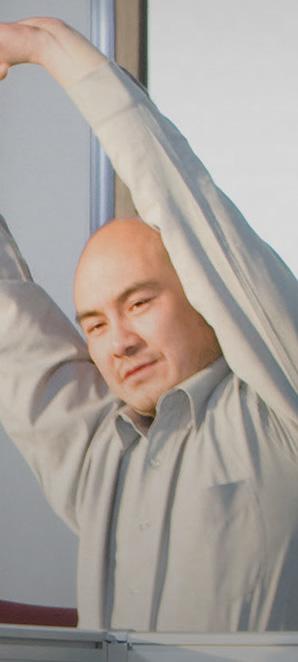

© 2020 OPTUM, INC. ALL RIGHTS RESERVED.













but our core business is media information and services, and I’m here to support that.”
The sheer breadth and portfolio that is under Nowikas’s purview may seem shocking, but the VP maintains that its crucial to recognize the link between sustainability and wellness.
“Sustainability is building and maintaining to support the environment,” the VP says. “That’s for the health and well-being of the people as well. We include our people’s well-being as part of our sustainability efforts.”
“For employees to experience a true culture of health and sustain long-term engagement in corporate well-being programs, some level of on-site support needs to be manifested in the physical work environment,” says David Milani, vice president of Optum On-Site Services.
And Nowikas’ efforts to create sustainable and welcoming environment affect more than just Hearst employees.
“Lou fosters a culture where the Harvard maintenance staff who clean and maintain the Hearst Tower feel valued, engaged, and are treated like part of the Hearst family,” says Mark Hellman, senior vice president at Harvard Maintenance. “While appreciation and recognition of our staff is part of Lou’s character, it also aligns with his (and our) goal of keeping Hearst Tower looking like the day it opened fourteen years ago.”
Hearst has provided the best challenge for Nowikas precisely because it hasn’t allowed him to fall into a routine. He’s now built two buildings, created long-standing and proven wellness initiatives, and continues to keep the most talked about building of 2006 at the forefront of doing right by its people by doing right by the environment.
 Courtesy of Hearst Corporation
By KATHRYN KRUSE
Courtesy of Hearst Corporation
By KATHRYN KRUSE

Melanie Klint is interested in strategy. A legal career that started in-house, as opposed to in a legal firm, taught her the importance of strategic planning and partnering. More than that, her path has given her the skills to execute a good plan. In January 2019, PFSweb, an e-commerce company providing fulfillment services and professional digital commerce agency services that has been through several evolutions since the 1990s, brought her talents on board as its first in-house counsel.
When Klint arrived at PFSweb, she was tasked with founding and building out the legal department. While her long-term goals center around business facilitation, she recounts that during her first month at the company, she employed a strategy of observation and restrained action. “I just spent some time determining what was what and how things were done before upsetting the apple cart,” says Klint, who knew change might be met
As PFSweb’s first general counsel, Melanie Klint assembles a legal team that makes cost savings and collaboration the norm
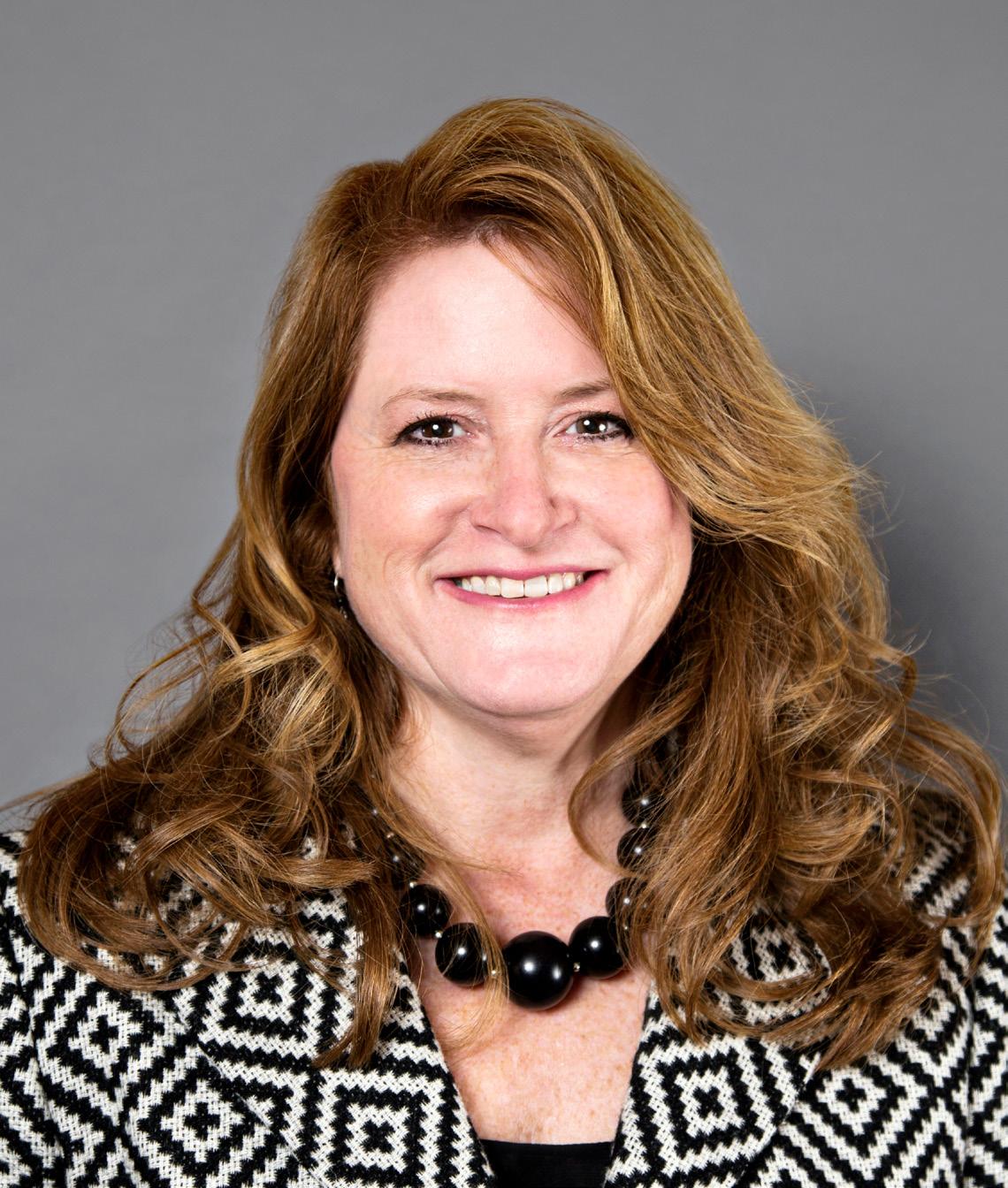
with resistance. “I had no intention of turning over the apple cart.”
A wise choice for a general counselor who needed to prove her value from the moment she walked in the door.
The company’s primary intentions for Klint centered on speedy contract turnaround. They felt that her skills would be most valuable in that arena. When she arrived, Klint reminisces, the contract system had no uniform processes. “I started by questioning,” she says.

After that first month, she began to ask for changes and get buy-in. Leading off with revamped forms, she undertook the task of creating standardized materials. However, she made sure to build in fluidity and “best, middle, and worst” scenarios—characteristics that, she says, support clear communication and increased turnaround speed.
Klint also worked against the perception of her department being a roadblock within the company. Besides revising legal forms, she seeks cultural change. For example, to help move processes faster, she asks her team to schedule calls—something that was uncommon at her arrival—to avoid getting caught in “email hell.” In-person group meetings solve problems more quickly, she observes. She continually looks for ways to push the company.
As Klint describes it, a career centered around direct business engagement means that collaboration excites her more than ridged protocol. It also means she is good at seeing the larger picture and concerns. “I see the forest. I see the individual trees,” she says. “I also see the weeds growing up.” She knows that keeping an eye on metaphorical weeds is critical in deterring metaphorical brush fires.

This spirit of collaboration, and a desire to move faster on contract work, leads Klint to prioritize building a dynamic and skilled team. Such a team is key to
her strategy. Asking for face-to-face meetings and phone calls is just a beginning to the cooperation she seeks from her team of two attorneys and five contract administrators.
As she asks them to suit up for the team, she also provides them with an opportunity to practice skills such as drafting. The goal, Klint says, is a team where people can come together to solve problems and are empowered to think creatively.
“The only reason I’m where I am is [that I have] more practical experience of dealing with issues and assisting with the work-arounds based on that experience,” she says. “but I don’t want to stop people from having good ideas or contributing.”
She also wants a team that can check each other. “You are always wrong sometimes,” she says with a laugh, fully aware that she is building backup as she supports the team. “Experience is a backdrop that can provide guidance, but you still need good ideas to move forward—and having a team that is comfortable sharing ideas can be critical.”
Courtesy of Texas State BarWith her broad-based background, network, and knowledge of resources, Klint offers ways for other employees outside the legal team to gain expertise and perspective. “I want to help them help themselves,” she says. “I want them to learn to mitigate risk.”
Reaching out to other departments is having an effect, and her days are more than full. While the company originally intended her to focus solely on revenue issues, she says, her impact expands as departments begin to understand how she can support them.



“Don’t just call outside counsel” has been her advice throughout PFSweb. Heeding her advice, the human resources team has sought help from Klint’s in-house team with employee relations, litigation, policy, procedures, and handbooks. Klint’s in-house HR work, she explains, lead to cost savings.
While the general counsel and secretary continues to read and interpret contracts,















she also looks at structures and policy to understand risk management. She supports quarterly reporting.
As Klint begins to list her current duties, she pauses and then says, “Basically, every aspect of the company from contract renewal to commerce issues to HR and public company concerns.”






PFSweb launched as a wholesale distributor of computer and office automation supplies. It now provides fulfillment support, order processing, and e-commerce technology while keeping eyes on shifts in tech and consumer movements. With her multifaceted knowledge base, Klint is ready and able to jump in on a range of issues to support expansion and change, from security to M&A, and she loves variety.






New growth at PFSweb, and the new efficiencies she and her team will facilitate, exhilarate her. “The foundation is laid,” the VP says. “Time to build the house.”

Rest assured Klint has strategies for raising the structure.

“Experience is a backdrop that can provide guidance, but you still need good ideas to move forward— and having a team that is comfortable sharing ideas can be critical.”
SUCCESS DRIVEN BY EXPERIENCE, SKILL AND CREATIVITY
Obtaining great results originates from the ability to view issues from diverse perspectives. Our decades of experience providing insightful and strategic legal counsel deliver business solutions time and again. Let CSG transform your vision into reality.
Valerie Hulse thought that the size and complexity of KBR would provide challenges and continual career growth opportunities for her when she joined the company sixteen years ago. Today, as vice president of global compensation, benefits, and HRIS, she says, “KBR truly delivered on this.”
Hulse started at KBR in corporate accounting and then moved into accounting for the business, where she got exposure to KBR’s government services project work. She then moved into benefits accounting, which she discovered was her passion, and which gave her the opportunity to work closely with HR and the legal department. Three years later, she transferred into HR, leading the executive compensation team, and her responsibilities progressively expanded to her current role in 2014.
“Compensation and benefits work touches every employee at the company. At the very core, it’s a fundamental reason that employees go to work every day, providing the means to provide for themselves and their families,” says Hulse, whose role covers approximately thirty-eight thousand employees across forty countries. “It’s important that we put the thought, analysis, and work into ensuring that these programs are competitive and operating effectively for our employees and for KBR.”
The highlight of Hulse’s job is working with her team and people across the globe to understand what is important to employees from a total rewards perspective. This is particularly important when KBR acquires other companies, which it recently did with Wyle Laboratories, Honeywell Technology Solutions, and Stinger Ghaffarian Technologies (SGT)—representing more than twelve thousand new KBR employees in all.
Valerie Hulse puts thought, analysis, and work into ensuring compensation and benefits programs operate effectively for all KBR employees
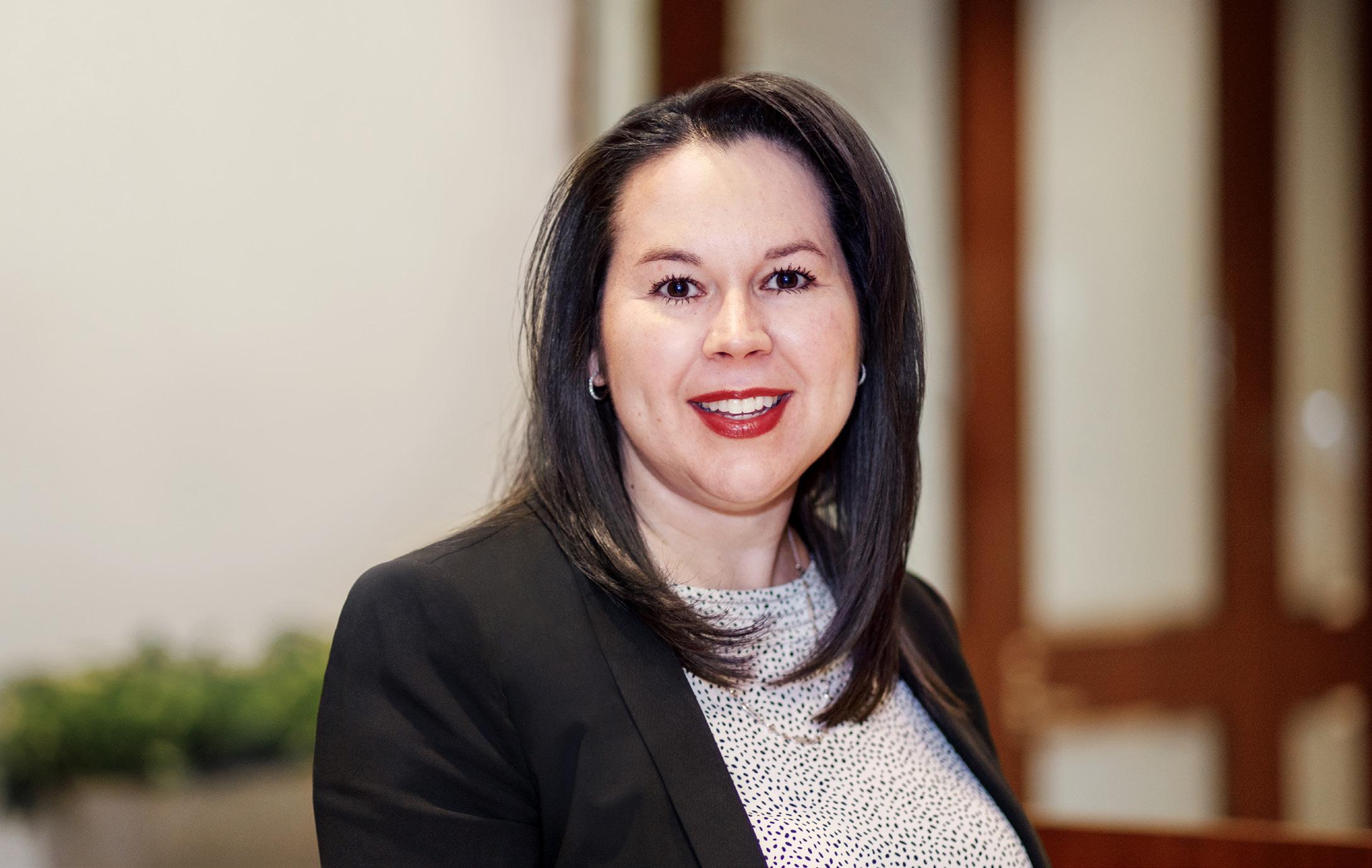
“From a compensation, benefits, and systems perspective, there were many different programs that we had to consider to design the right method, plan, and timeline to harmonize the four separate companies,” which will often have different benefits carriers, 401(k) matches, and other program differences, Hulse explains. “There was much work that had to be done to pull it all together to determine what the right package of compensation and benefits would be for these three different companies coming into KBR.”
To retain the employees who are joining your organization as part of an acquisition, Hulse says it’s important to look holistically at the package that will be presented to them, and not to make assumptions about what will matter to the employees.
“You could come in with your own bias of what you think is important, because you’re living in your culture,” she says. “Having perspective from the employees of the [acquired]
company is important in order to help you make decisions on what the right total rewards packages may look like ultimately.”
Doing this, Hulse says, will help make the employees’ transition a positive one. “You want them to recognize that as they come into KBR, they’re valued, and that what they currently have from a compensation and benefits perspective has been considered, and it’s been thoughtful.”
Equally important is how the resulting programs get communicated to employees, and Hulse works closely with the HR business partners and business unit leaders to deliver those messages effectively and in a way that promotes a unified culture.
“They’re the ones that have that direct communication with the employees,” she says. “It’s going to have a more meaningful impact to the employee when it’s coming from their business leader rather than coming from a corporate department.”
Having an effective HR information system is vital to administering these programs across such a large organization, and Hulse led the project team that chose and implemented Workday across KBR globally in the span of less than two years.
“It’s been a positive change in the tools that we provide to our leaders, managers, employees, and HR to work more effectively,” she says. “I’m proud of the work that was accomplished by my team, HR, and the many functional departments that continue to work so well together as we optimize the system.”
Hulse, who maintains her CPA credential, says her background in accounting continues to serve her, even since her role has taken on more of an HR focus. “You really have to evaluate the financial consequences of decisions that are being taken,” she says. “Because I have been in the project accounting and corporate accounting groups, I understand some

We join Profile magazine in recognizing Valerie Hulse for excellence in promoting KBR’s culture with each acquisition—while continuing to keep the humanistic approach. Her hard work and commitment are an inspiration to everyone.
of the challenges they have and how the impact of decisions made from an administrative standpoint will impact them.”

Involvement in activities outside of her role has been an important aspect of Hulse’s career at KBR. She serves on the board of directors and executive committee for the Houston Business Coalition on Health, and is an advisor to Aspire, KBR’s women’s employee resource group.
“Networking with colleagues that experience similar challenges in their organizations enables us to collaborate and leverage collective influence to provide effective solutions for our organizations,” she explains.
Mentors and mentoring are also important to Hulse, and she has made a personal commitment to sponsoring three women who work at KBR—mentoring them and helping to ensure that their capabilities are recognized by leadership.

“I see someone that’s either a sponsor or a mentor as someone that you can talk through those things that are really going to help you continue to advance in your career,” she says. “I know that I would not be where I am today if it weren’t for those individuals in my life.”
As retirement and health and welfare administration advisors, Curcio Webb helps organizations achieve the specific outcomes they seek, whether it is performing financial due diligence, governance and risk mitigation, or enhancing employee engagement. Clients choose Curcio Webb for its independence, objectivity, vast experience, and subject-matter expertise.
For Tracie Sponenberg, an interest in human resources came early: high school. She had shadowed her aunt, who worked in personnel, both in high school and early in college. “Personnel seemed to combine my love for business, people, and psychology,” Sponenberg explains. “I was hooked early.” That spark ignited into more than twenty years in HR for Sponenberg, who is currently chief people officer at the Granite Group. She has seen the function grow and evolve, and in the past five years, she has taken an active role in helping HR leaders transform their departments through her active participation in the Society for Human Resources
Management (SHRM), teaching at Southern New Hampshire University, and cofounding both HR Rebooted and Disrupt HRNH.
When Sponenberg first started as a HR specialist at UPS, the department was seen as an administrative function. They were the administrators, the paper pushers, the rule followers, and the complaint department. It was when she left UPS for her first leadership role that she witnessed that HR was a business partner.
“That was rare then, and we still aren’t where we should be,” she notes. “The number one thing that holds HR back is HR. We have to see ourselves as confident business executives for our companies to see us that way. If we don’t view ourselves that way, why would anyone else?”
Sponenberg has had a seat at the table for the past twenty years, and at the Granite Group, it’s not even a question that HR is a true business function.
She joined the Granite Group—one of the top fifty plumbing, heating, and PVF wholesale distributors in the United States—in July 2015. At the end of 2014, Sponenberg’s family was going through big changes. Her stepdaughters’ mom had passed away, and the family focus and priorities shifted. Her husband started his own CFO consulting company so he could spend more time with his daughters. Sponenberg was looking at spending a lot of time in California as her company was looking to relocate a facility.
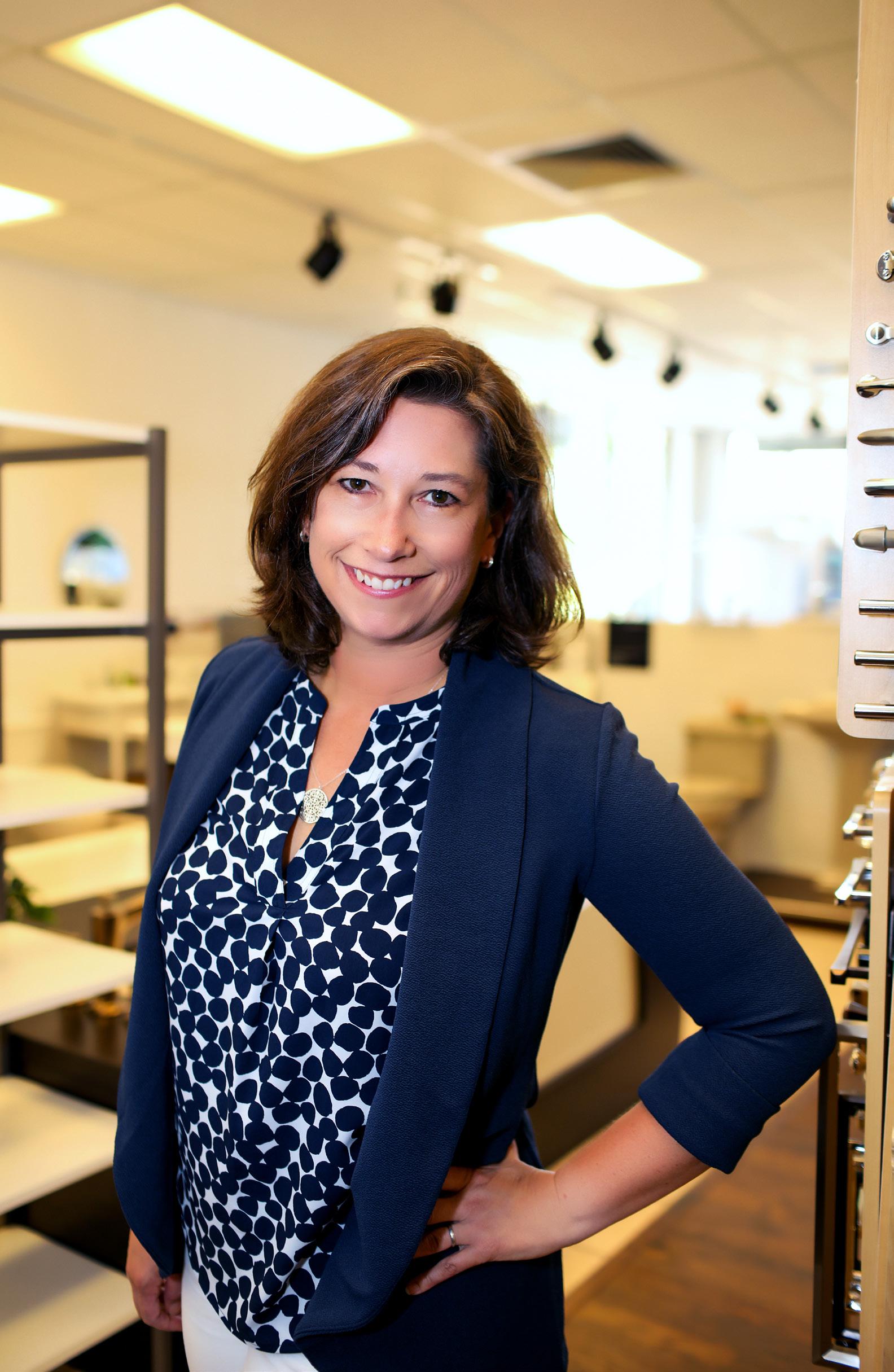
Then an early mentor reached out about an opportunity in Sponenberg’s hometown. The catch, she explains, was that it was a very lean team and the company was a plumbing wholesaler. “I went for the interview, and I quickly learned what an incredible company it was,” she explains. “I was all in.”
As part of her exit negotiation at Emerson Ecologics, Sponenberg agreed to meet with her successor to ensure she had everything
It wasn’t until Tracie Sponenberg joined the Granite Group that she understood what it meant to be an introvert. A behavioral assessment from the Predictive Index helped her not only understand herself but also provided her with the tools to use her introversion to her advantage. Then she set out to make herself uncomfortable. She built her public speaking skills, took risks. “I started to take a look at myself, areas where I was holding myself back, and did something about it. It’s given me so many opportunities that I would never have had otherwise,” Sponenberg says. “Introverts can lead, and it can be a huge advantage to be an introverted leader.”
she needed to be successful. That person was Michelle Strasburger.
“We never stopped meeting. Through that, we became really great friends,” Sponenberg says. “In late 2018, we both ended up attending the same conference, and over dinner one night, we decided to form a project that would explore how to change HR for the better.”
And thus, HR Rebooted was formed. The project is devoted to changing how people think of human resources. Sponenberg and Strasburger craft podcasts, short videos, blogs, and speaking engagements that focus on the changing world of work based on four tracks: technology and innovation, business strategy, women supporting women, and diversity.
“We don’t make money doing this, and we don’t have sponsors intentionally,” Sponenberg explains. “We’re doing it solely to make the world a better place, one HR professional at a time!”
When it comes to transforming HR, Sponenberg notes that the focus is often on larger companies. But nearly 50 percent of the country’s workforce works for small businesses, which employ five hundred people or fewer.
Sponenberg has spent most of her career working for midsized companies and offers advice for HR leaders at small companies on how to transform HR.
Start with learning the business. “Learn about business in general and about your business. Read business and industry periodicals. Twitter is great for this, so get involved! Some of the best conversations in HR, and in business, are happening in 280 characters or less.”
Learn the technology. “Understand how your company’s ERP system works. Learn how to use technology to automate some of the routine HR tasks, and then go and do it. Learn about how your company goes to market with its products or service.”
Go to industry events. “Get out there and meet your company’s customers. Befriend your CFO, CIO, CMO. You can learn a lot from them, and they can learn about you.”
Ultimately, align the HR strategy with the business strategy, Sponenberg says. “You must do this to transform. And all of these things are valuable learning experiences that will help you and your company.”
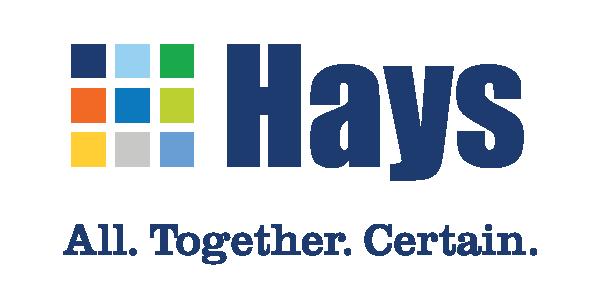
“When I first thought I wanted to get into IT, one of the reasons was because I didn’t have great relationship skills, and I thought my perfect job would be sitting in a corner somewhere typing away on a computer,” says Brandon Covert, VP of IT for the Cleveland Browns.
Covert has now been with the Browns for fifteen years, and his job probably couldn’t be any more relationship based if he tried. The VP engages multiple vendor partners who help make the fan experience at every Browns game as seamless as possible, whether they’re at the FirstEnergy Stadium in person or watching from home. And that doesn’t take into account all of the people inside the organization he communicates with on a daily basis.
A contracted IT consultant before he was brought in-house, Covert says the NFL team has truly become home, and it’s why he’s stayed for a decade and a half. But that doesn’t mean the VP has it all figured out. In fact, the professional sports franchises he oversees IT efforts for has just doubled, and he couldn’t be more excited.
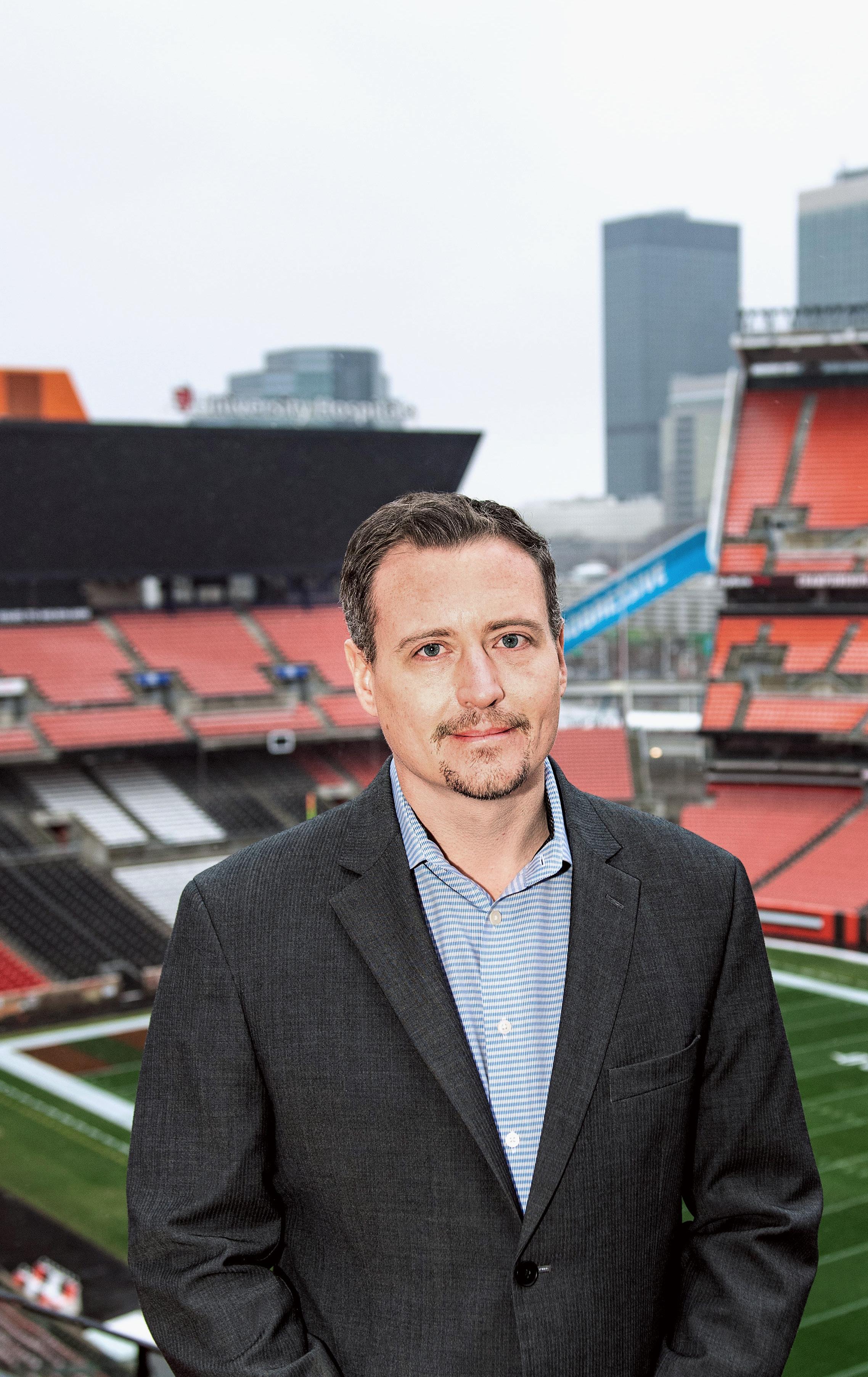
Covert’s journey to the Browns is, in many ways, in keeping with the team’s scrappy underdog reputation. The future IT VP didn’t make it far through his first year of college before electing to opt out for something else; he just wasn’t sure what. “I was washing trucks at UPS, working as a line cook, whatever I could, really,” Covert recalls. But his love of tech coincided perfectly with organizations looking for what Coverts calls “any warm body who might be interested in computers” to train and deploy as the Y2K Compliance panic took full effect. The rest is history.
Coming to the Browns after spending time in a slew of industries, from banking to healthcare, Covert says he was most struck by the culture of the professional football team that extends well beyond any normal nine-to-five.
“As stressful as it can be and as many hours as everyone here puts in, it’s never felt excruciating,” Covert says. “The people here feel like family to me, and that extends well beyond my department to the entire organization. Everyone understands the challenges of our business, and we’re aligned to try to accomplish the same goal.”
While the football season may require substantial weekend hours and a willingness to be on call at any time, Covert says the Browns’ focus on making their organization a great place to work is definitely noticed. “People who work here feel supported and want to do a good job,” Covert says. “I’ve been other places where you come in and do your work and go home. I don’t think that’s the attitude here for anyone.”
Covert says aiding on-field success means delivering an unrivaled fan experience. “We spend a lot of time working to identify the main friction points of a fan’s journey in our stadium on game day,” Covert says. “We’re continually looking for new ways that technology can help reduce that friction.”
The Browns have spent years studying traffic patterns on game days from both vehicular and pedestrian standpoints. “Obviously, seventy-thousand people leaving at the same time tends to cause some traffic problems,” Covert says, laughing. “But I think we’ve improved that process to be ten-times better than it has been in the past.” Part of
that solution includes partnering with GPS Waze to communicate with fans directly about street closures and ideal routes for getting to and from fan parking on game day.
Once in the stadium, the IT team has partnered with its food, beverage, and merchandising vendors to reduce the time of sales so that fans can get back to the game.
“Whatever seconds we can save really adds up when you’re talking about the volumes of people we deal with,” Covert explains. Contactless payment, expanded cellular and WiFi coverage, and more single-item stands for high-volume concessions (beer, in particular) have all been areas of focus as the Browns continue to cut down on transaction times.
“Enabling our customers to thrive is our number-one priority at Momentum Telecom,” says Todd Zittrouer, CEO of Momentum Telecom. “It’s been fantastic to work with Brandon and his team these past few years and have our solutions be part of an always-evolving fan experience.”
In all of these spaces, maintaining a communicative and collaborative relationship with third-party vendors is essential. “Regardless of which partner is performing the function, it’s ultimately the Brown’s brand at stake,” Covert explains. “We spend a lot of time with these companies to instill rewards programs and ensure they train their employees appropriately to implement service with excellent standards because we recognize these people are a key interface between us and our fans.”
As if one professional team wasn’t enough, the Haslam family, who owns the Browns, has invested in a little team down the I-71 interstate. The Columbus Crew, a Major League Soccer mainstay, are in the middle
of building a brand-new stadium, putting Covert’s IT expertise to the test. “This is such a unique opportunity to build a new stadium. There’s literally a giant hole in the ground in Columbus right now. I get to be part of a technology implementation that you’re not necessarily going to get to do unless you’re building something new.”
The new stadium and new training facilities in Columbus are set to open in 2020, and Covert says there are both overly and less obvious tech capabilities that haven’t been seen in professional sports. “This is a whole new aspect of my day-to-day, and while it’s a lot of work, it’s so exciting,” Covert says.
Working with the Columbus organization is yet another set of relationships to navigate that are crucial to the on-and-off field success of the team. For a guy who thought his dream job was working quietly solo in front of a screen, Covert’s evolution as a leader and tech expert is a real underdog win for the people of Ohio.
When the Cleveland Browns wanted to revamp its internal communications and networking playbook in 2012, it turned to Momentum Telecom. Momentum helped the Browns architect a solution that allowed them to eliminate the complexity of multiple vendors and scale as their needs changed. For Browns VP of IT Brandon Covert, no example captures this teamwork quite like Thanksgiving in 2015. The Browns needed to increase the WiFi capacity at FirstEnergy Stadium by 500 percent prior to a big event, and Momentum worked through the holiday to get the job done. Learn how we can help your business: visit momentumtelecom.com.
“The people here feel like family to me, and that extends well beyond my department to the entire organization. Everyone understands the challenges of our business, and we’re aligned to try to accomplish the same goal.”
BRANDON COVERT

As a founding member of Alteva, a pioneer in cloud communications, Mark Marquez has watched a company of five driven individuals doing a couple hundred thousand in annual revenue blossom through multiple acquisitions into a 500-employee company with more than 400,000 voice seats and more than $150 million in revenue a year, now as part of Momentum Telecom.
“When you own a company, you realize the capital and experience it takes to grow,” says Marquez, who is currently executive vice president of technology at Momentum. “Through each acquisition, it’s increased our ability to grow and expand. It’s not just about growing revenue, but also watching the people who started here evolve and develop is really a gift.”
 Mark Marquez
EVP of Technology
Momentum Telecom
Mark Marquez
EVP of Technology
Momentum Telecom
Mark Marquez grew up milking cows. The farm is where he feels most at home. But when Alteva was sold and eventually became part of Momentum Telecom, Marquez wound up splitting time between his Pennsylvania home and Virginia. He’d commonly fly with his Alteva partner, who had both a pilot’s license and a plane.

It wasn’t until the company was sold that Marquez took his friend’s advice to get his own pilot’s license, cutting down his travel time from eight hours to something much more manageable and on his own timeline.
“It wasn’t for any other reason than so I can get home to my family quicker,” Marquez says.
Marquez is that rare breed of tech mind that is able to translate his side of the business to more easily understood concepts. “One of the things that might be a little different about my own journey is that while it’s been highly technical, so much of what I do is to be an active part of the customer engagement process,” the EVP says. “That means I’ve been out on a ton of sales appointments, in addition to talking to our existing customers about what vendors they’re looking at, the technology they’re interested in, and the business problems they’re trying to solve.”
In short, Marquez has cultivated a proactive approach that sees technology as much more than a help center, it’s an integral business partner.
The very “un-IT”, white-glove approach that Marquez and Momentum take is in part informed by the massive amounts of consulting work Marquez did in the nineties, work-
ing to learn each individual client’s unique needs and where the right solutions could be applied.
“I’ve always found that the more customers and employees that I connect with, the more complete the picture I have from all of these different angles and perspectives,” Marquez says. “We get to see the vastness of the landscape, but also can identify when customers are asking for the same things over and over again. It really influences the products that we build and sell.”
Marquez has been in the tech-solutions game long enough to have watched the continued evolution of what is now commonly known as unified communications. Before the birth of the big data movement, it was simply a voice venture.
“Companies were out there providing PBX systems just to make and receive calls,” Mar-
Addison Gearyquez remembers. “When voice communications went digital, all of a sudden we had this data we could gather about businesses. We started talking about integrating other applications, instant messaging, shared desktops, and multipoint-video. Customers continue to look for more efficient ways of communicating, and we’ve continued to move forward into technologies such as automated interactive voice response, team collaboration, and the migration into contextual data.”
Momentum’s bread and butter is providing cloud-based solutions, and Marquez says that means finding new and innovative ways of streamlining and simplifying businesses’ migration to the cloud, offering them access to the latest technologies while increasing redundancy, efficiency, and cost savings.
“Business data and communications is increasingly moving to the cloud. Access to mission-critical information is of the utmost importance. Enterprise networks used to be really complex and costly with products like MPLS, which is a private IP network,” Marquez explains. “You can now use cost-effective overlay software like SD-WAN to replace it.” Technologies such as this enable Momentum to design solutions for all customers with business continuity in mind.
Marquez’s wide breadth of experience has also informed his leadership at Momentum. “I think I’m always concerned with taking everyone’s ideas and bringing them to the table,” Marquez says. “I want to make sure that everyone is thinking broadly about the way we’re gathering information, the way we’re processing it, and how we’re putting it into action.”
It wasn’t IT or consulting that grounded the EVP’s approach to embedding deep with his clients and constituents, though. Straight out of college, Marquez wound up managing a handful of restaurants and nightclubs.
“I think that’s where I developed my philosophy that if you’re really involved, you’re going to better understand what’s going on,” Marquez says. “If you’re talking to the people that are coming in, the staff, the more you’re going to know what your hurdles are and what gaps you’re trying to fill.”
When it comes to filling gaps, Marquez’s D2 college football career certainly doesn’t hurt, either. It’s where the EVP learned how to get his team on the same page, and it’s a lesson that continues to pay off at Momentum.
“It’s not just about growing revenue, but also watching the people who started here evolve and develop is really a gift.”
MARK MARQUEZ

Jobe Danganan has always had a passion for ensuring that consumers are protected. His interest in helping the public, which he says runs through his veins, has led him from low-income neighborhoods in Los Angeles to some of the most prestigious institutions in the world. And as general counsel, corporate secretary, and chief compliance officer at HomeLight, Danganan is using his expertise to help transform the home-buying experience for consumers across the country.
“My family immigrated to the United States when I was twelve, and I grew up in Los Angeles,” Danganan says. He left Los Angeles in 1995 to attend Harvard University, later deciding to pursue joint JD and MPA degrees at the University of California, Berkeley law school and Princeton University, respectively. After receiving his JD and clerking for the US Court of Appeals for the First Circuit, he worked for several years as an associate at top law firms in Boston and New York.
Throughout his distinguished career, Jobe Danganan has been on a mission to help and protect consumers
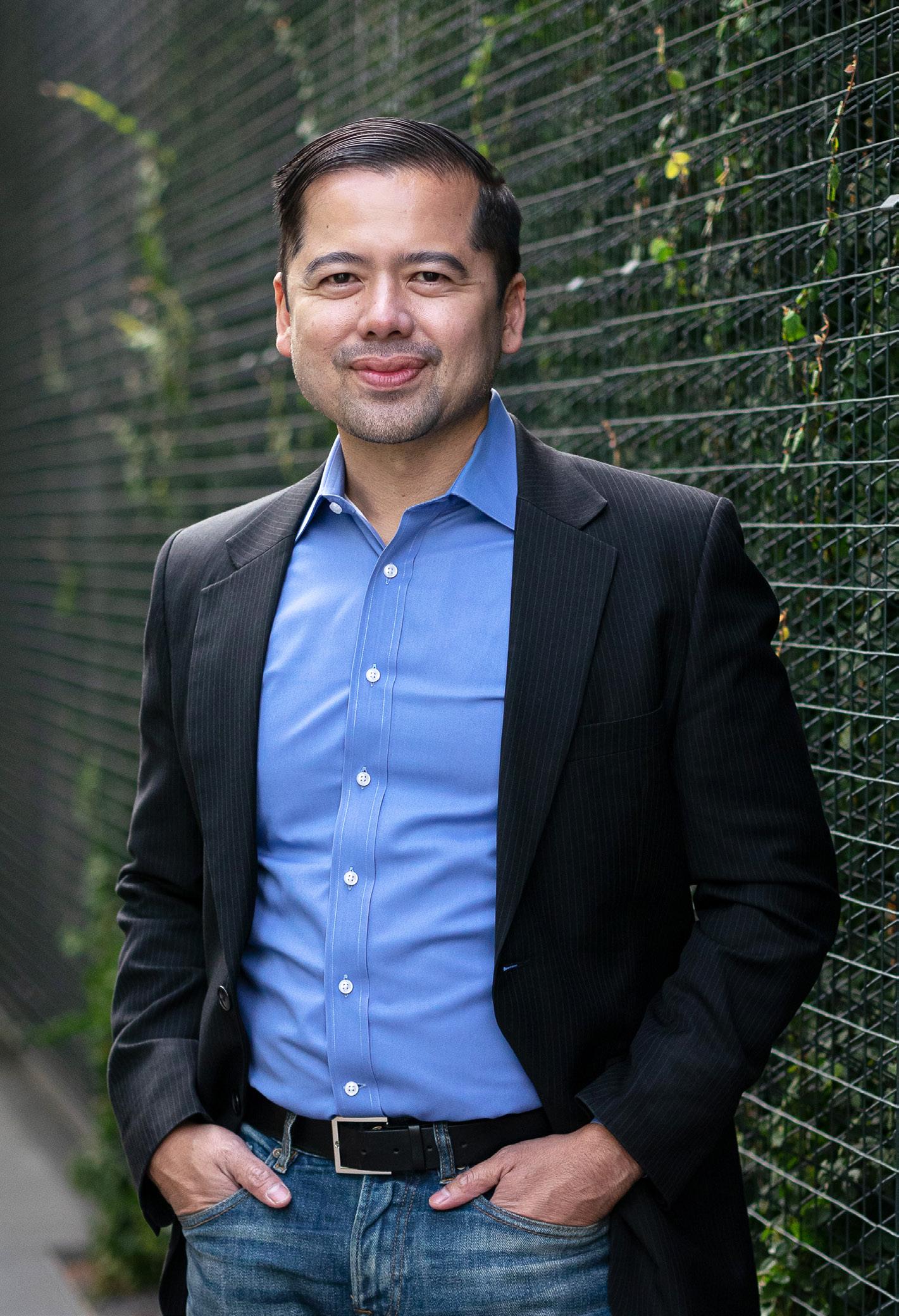
“And then the financial crisis happened,” Danganan says. “With its broad impact across so much of the population, I really wanted to take part in the effort to give back to the public and help protect consumers.” So in 2010, when there was an opening for a senior investigative counsel on the Financial Crisis Inquiry Commission, Danganan seized the opportunity to examine the cause of the 2008 financial collapse.


After the commission published its final report, Danganan moved to the Consumer Financial Protection Bureau (CFPB), where he spent the next three years as
an enforcement attorney-advisor working to correct the financial abuses he had seen inflicted on those around him.
“I had friends and family members who had lost their homes to foreclosures and short sales,” Danganan says. “The CFPB was like a breath of fresh air—my job was to help find ways to protect consumers in the financial marketplace, whether that was mortgages and credit cards or student loans and debt collection. It was such a wonderful opportunity, and I loved every minute of it.”
After leaving the CFPB in 2014, Danganan continued in his consumer-centered mission as general counsel, chief compliance officer, and corporate secretary at fintech mortgage startup Sindeo.
“Many people, including millennials, distrusted big banks by then and partly blamed them for the financial crisis,” Danganan recalls. “Sindeo focused on helping consumers understand what they are getting into with a mortgage and used technology to make the mortgage process easier.”
HomeLight, a San Francisco-based real estate technology company that has been making headlines in the home-buying space since its founding in 2012, has a similar vision, Danganan says. “We’re really trying to help consumers make sense of the real estate process. If you’re a first-time home buyer, where do you begin? You could search around the internet for houses, but do you know how much you can afford? How do you find a good real estate agent? What are all the different fees for? HomeLight helps answer all of those questions.”
Given his previous experience in government, Danganan is ideally situated to help HomeLight navigate the strict regulations of the financial services industry.
“As a compliance person, regulations are always at the back of my mind, especially in terms of issue spotting and risk assessments,” he says. “My government experience is a part of me—a big part—and it’s become even more relevant now that HomeLight has acquired a mortgage company.”

Acquiring another company requires an in-depth vetting process, Danganan explains. When HomeLight decided to acquire a mortgage company instead of
building its own, he did full diligence on the potential target’s regulatory and compliance regime, technology systems, governance, and more.
Large-scale decisions like major acquisitions can be stressful, he notes, but as an attorney, “people look to you to be rational. Calm. A compass for the company. If legal is panicking, everyone at the company will know that things are hitting the fan, and they’ll panic too,” he says with a laugh.

It can be extremely challenging, though, to keep that level of calm—especially at start-ups, where risk is inherently part of the culture. “You have to take yourself outside of the present situation, find your center, and rationally assess the pros and cons of each option,” Danganan advises.
Fortunately, he says, HomeLight’s culture is one of “complete transparency, from the CEO down.” That kind of culture not only makes it easier to accurately assess risks but also serves as a competitive advantage for the company as a whole.
“If you look at our Glassdoor rating, it seems almost unreal. But it’s true,” Danganan says. “We have a culture of excellence, a culture of transparency and collaboration. Everyone expects the best from everybody else— but when you’re here, you’re part of our family.”
“Everyone expects the best from everybody else—but when you’re here, you’re part of our family.”
Over the course of eight years, Overland Park, Kansas–based Netsmart Technologies has grown from seven hundred associates to reach more than two thousand associates. The substantial growth necessitated that the company find a senior executive capable of building out its extensive human capital goals while effectively partnering with business objectives. Human resources and traditional business units rarely have much in common, but Wendy Hill doesn’t see it that way at all.
The inaugural Netsmart chief people officer has built a successful career in HR because she comes from the business side.
Hill has some big ideas for driving better results by doing what is best for the growing number of Netsmart associates: integrated health services.
Hill first dipped her toe in to HR at accounting company Arthur Anderson. “I’m really not an HR person by education,” she confesses. “My major was in business and information systems, and I started on the business side. But I think that’s why I’ve been successful in the HR space.”
After nearly three years at Arthur Anderson, she joined Cerner Corporation as an HR partner. It’s there that Hill has spent the bulk of her career to date—close to seventeen years with progressively broader job titles.
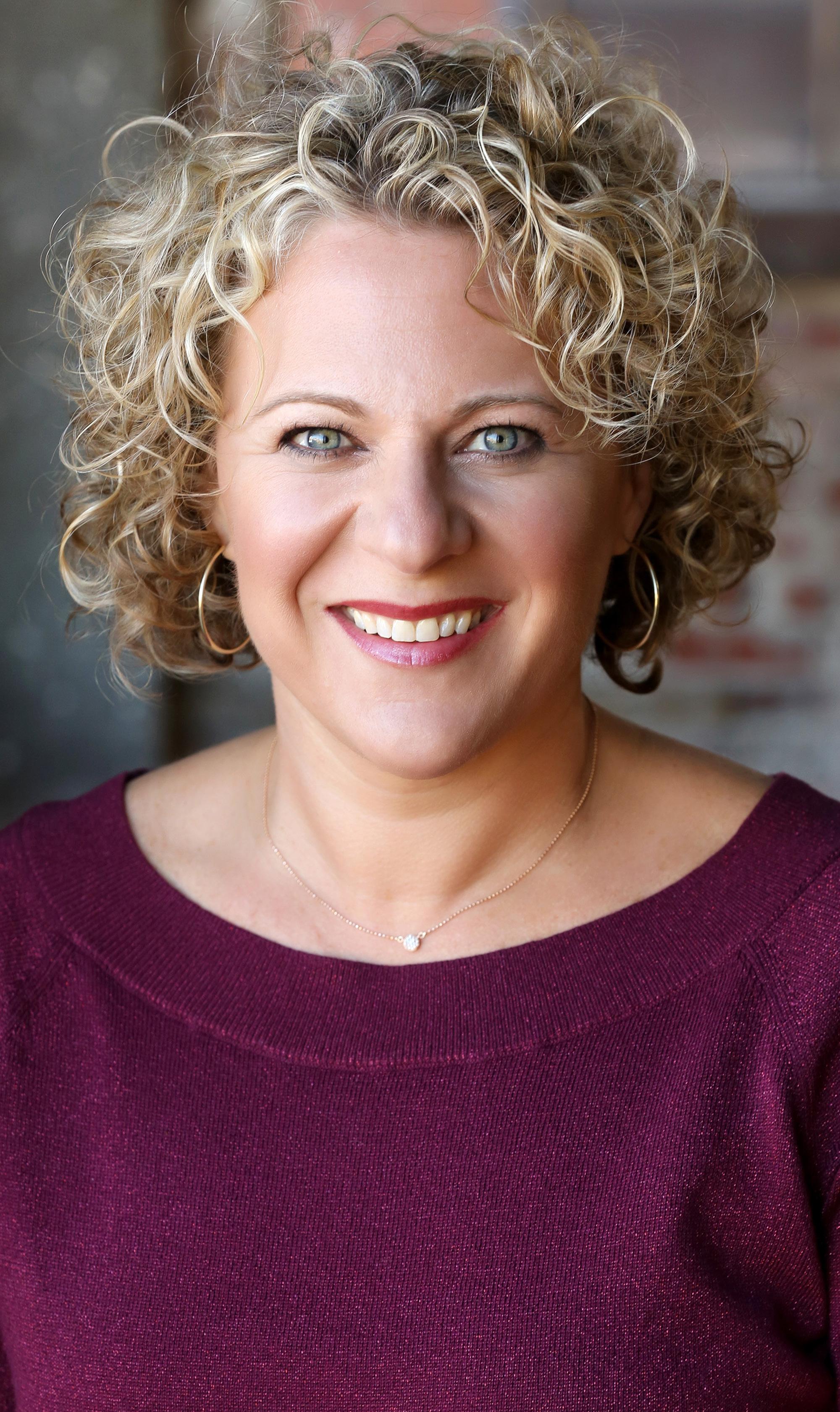
Even in the HR space, Hill still says she didn’t ever inhabit a pure HR role and instead focused on being a generalist. She never operated in a benefits or payroll position where most HR experts spend their time.
“It was our team’s job to understand what the business needed from a human capital perspective and take those needs back into HR to create the right programs in support of the business,” Hill explains. “On the flip side, we would implement central HR programs and processes back into the business to ensure consistency across the organization.”
Part of the reason Hill was able to professionally mature with so much breadth was because the pace of growth at Cerner, like Netsmart, was extensive. “When I started, there were about five thousand associates, and twenty-nine thousand when I left,” Hill says. “Every year was a challenge, figuring out how to do something new and do it to scale.”
Hill enjoyed her time at Cerner so much that she really wasn’t looking to leave. “I had been there for so long; I loved my team and was in a really good spot,” Hill says. She had responsibility for fifty HR partners across the globe from India to the UK to North America, with all of those units reporting up to her. Then Netsmart CEO Mike Valentine got in touch.
“I think part of what he and Netsmart was looking for was someone with a background like mine. He didn’t want an HR purist but someone who had business exposure and understood how to bring those two things

It’s

together,” Hill explains. “I thought it was an amazing opportunity to be part of the growth of a company that is headquartered in my hometown and find a way to take a good foundation and really run with it.”
Hill arrived at Netsmart in February 2019, and her impact was immediate. The chief people officer has taken a business-minded approach to an issue not typically associated with the bottom line.
Netsmart focuses on a wider range of health that includes not only the physical but also the mental and financial health components. If any of those three are off-kilter, Hill says there can be impacts at work and at home. It simply doesn’t make good sense for associates to be in need and not have the support necessary.
“If our goal is to provide the right support to our associates to keep them engaged and delivering the best value to our clients, we need to provide the right level of support,” Hill says. “Most employers, until recently, thought of physical health as the primary driver of what it means to support our associate population.”
As more direct links to mental health, work engagement, and productivity come to
bear, Hill says she’d rather Netsmart be at the front of the integrated health movement than waiting to play catch-up.
Part of that connection comes with the fact that Netsmart provides electronic health records and other services to the behavioral health and post-acute sectors. “Part of our client base is focusing on the patient and helping them work through whatever mental health situation they might be struggling with,” Hill says. “If we’re going to provide a high level of service to our clients, we need to make sure we’re doing the same thing inside our own walls.”
Netsmart offers mental health first aid training to all of its associates to help address early warning signs of a colleague in distress and how to help transition them to a healthier journey. The company offers mindfulness support via applications to help associates be more engaged with their feelings and emotions.
She has worked closely with RxBenefits to provide another important benefit: pharmacy services. “Pharmacy is a frequently used and critical employee benefit, but it is also a significant driver of cost,” says Kimberley Grebe, vice president of account management at RxBenefits. “It has been our
distinct privilege to partner with Wendy to develop a balanced pharmacy approach that prioritizes employee health while helping contain costs. Her drive to do right by both employees and the organization makes her a valuable leader.”
Telehealth services will be online in 2020, and Hill says that given newer generations are more apt to share difficult information by text, that option will hopefully be available as well. In 2020, Hill says the company will be engaging in more education as to how associates can benefit from the services provided. “We need to think about how to meet associates where they are to best serve them,” Hill says.
Focusing on integrated health wasn’t an issue burning in her pocket when she arrived, Hill says, but the focus Netsmart has on its people really spoke to her. Now, she’s all in.
“I get to focus where I know we can make a large impact to the associates and on making Netsmart even better,” Hill says. “I would love for us to be leading this effort and to help other employers understand how to best support their associates with all components of health—including medical, mental, and financial health.”
“If we’re going to provide a high level of service to our clients, we need to make sure we’re doing the same thing inside our own walls.”
WENDY HILL
Alisha Valavanis helps WNBA Seattle Storm and Force 10 Sports achieve victory both on and off the courts by focusing on the power of teamwork and collaboration
By SARA DEETERFor Alisha Valavanis, sport is far more than a profession and a passion—it’s a way of life. “Sport has been at the center of my life from the very beginning,” says Valavanis, who leads both the WNBA’s Seattle Storm and its management company, Force 10 Sports. “I grew up in Indiana, a basketball state. My twin sister and I started playing ball as soon as we could walk.”
But according to Valavanis, the culture of sports that marked her childhood had less to do with the sports that she played and much more to do with the values that her parents espoused.
“From very early on, I felt like I was part of a team—my family’s team,” Valavanis explains. “My mother and father were and always have been my greatest coaches. So I was learning about team, and the power of communication and collaboration, long before I had the language for it.”
That understanding is what helped propel Valavanis to success on her high school team and later on the basketball team at California State University–Chico, she says. “Once I stepped on the court, it was very clear to me what you can achieve as a team, and that there is nothing better than winning together.”
Even after Valavanis graduated in 2000 and transitioned from a player to a coach, she remained focused on that passion for team dynamics.
“At the Division II and midmajor Division I levels, I was involved in more than just the basketball team itself,” she says of her years working as a coach at major universities in California. “That was such a great landscape for me to learn about everything from operational scopes to marketing, communications, and development.”
Valavanis came to Force 10 Enterprises and the Seattle Storm in July 2014 following a nearly three-year stint as the assistant athletic director at the University of California, Berkeley. In addition to her work as president and CEO of Force 10 Sports Management, Valavanis also serves as CEO and general manager of the Seattle Storm team.
“This is something unique to the WNBA, the opportunity to be a CEO on the business side but also the general manager on the basketball side,” Valavanis notes. “As the CEO, I’m
responsible for the business operations, and on the general manager side, I’m responsible for the development of our roster, scouting management, and the management of the coaching staff.”
But as Valavanis emphasizes, she is never forced to shoulder the responsibility of those dual roles entirely on her own. “I have a phenomenal coaching staff and support staff around me doing exceptional work,” she says, “so my roles on both the business side and the team side are highly collaborative.”
The organization-wide commitment to collaboration has done far more than just make Valavanis’s life easier, though. It is also what helped carry the team through one of the biggest challenges a professional sports team can face: a complete rebuild.
“In professional sports, success is cyclical. There are times when a team is at its highest level, and there are times when you have to rebuild. I faced that in my first season here,” Valavanis says. “And that whole process reinforced how critical it is to have ownership and team buy-in, to execute a game plan and goals.”
In the first year of Valavanis’s tenure, the team and the entire staff came together to set goals related to development, momentum, and future success. And just a few years later, in 2018, the Seattle Storm won the WNBA championship—the team’s third win in franchise history.
“That’s the thing about a team like this,” says the CEO. “No matter what challenges come up, we’re in it together.”
“No matter what challenges come up, we’re in it together.”
ALISHA VALAVANIS
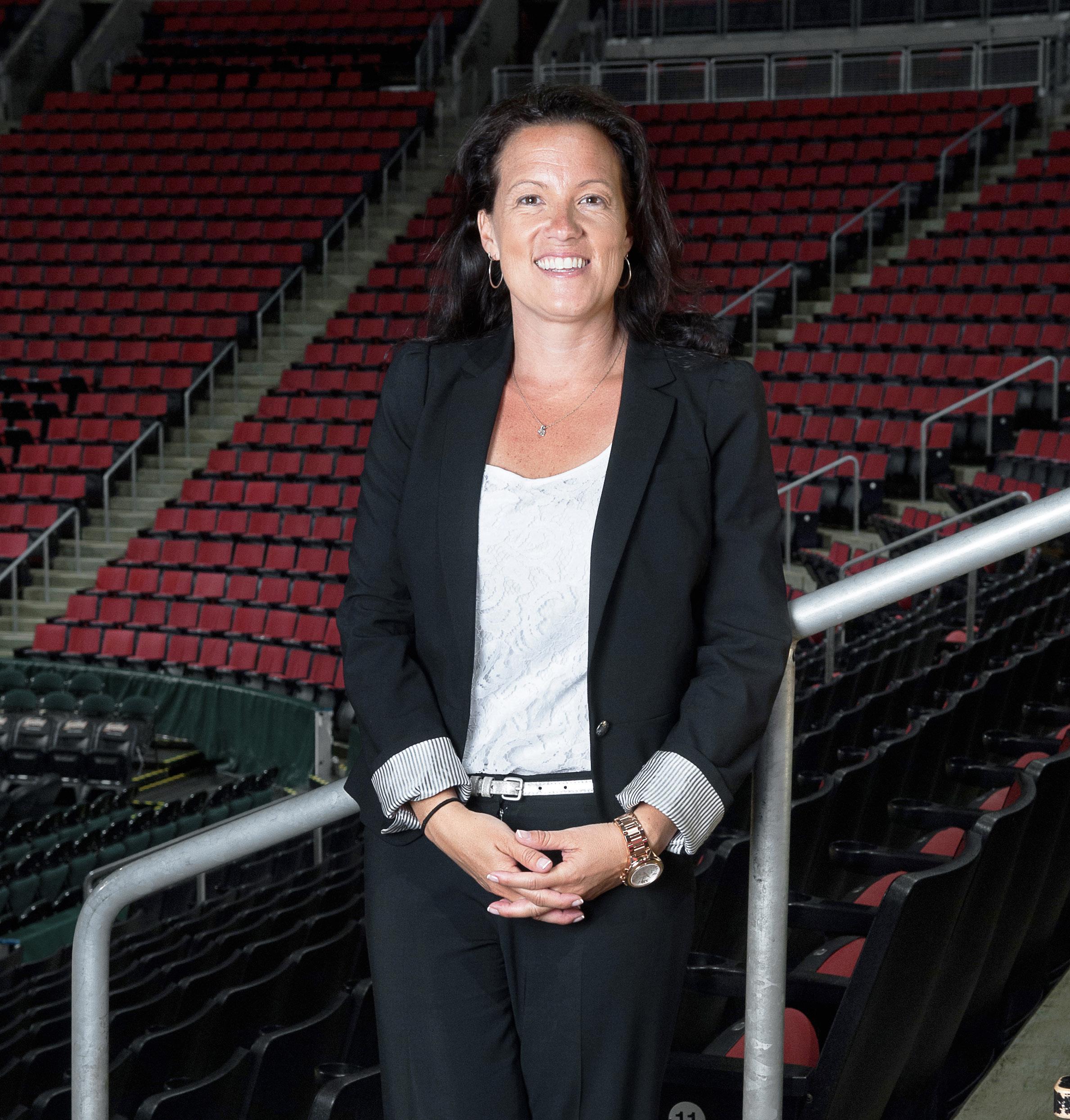 CEO,
WNBA Seattle Storm and Force 10 Sports
CEO,
WNBA Seattle Storm and Force 10 Sports
Valavanis also credits collaboration and teamwork with driving Force 10’s mission to make a social impact. “We are really looking to support teams that may not have the size or the resources of some of the larger teams out there, to use the power and the platform of sports for positive change,” she says. “The idea is that we can diversify our revenue opportunities and also directly align with our mission to advance opportunities for women.”
Force 10 has been working for years to promote women’s basketball championships and support women’s sports teams, and according to Valavanis, the organization has also recently launched the first professionally owned three-on-three pro women’s basketball team in the country.
“Sports has a really unique space in our lives; it brings people together, and here at the Storm, we are focused on using this platform to drive positive social change,” Valavanis says. “We always ask ourselves, ‘Will this help advance our efforts to create a more equitable and fair landscape for women and girls?’
“Our little girls as well as little boys come to games and watch these elite athletes, many of whom, are women of color, compete on the court. These women become their models,” Valavanis continues. “I think about the impact that has on the children coming to the games because that is inherently what the WNBA is: a representation of our work towards equality and diversity and inclusion.”
But just as it takes a team to achieve victory, it takes a team to drive values like diver-
sity and equality across the city and the country. The Seattle Storm and Force 10 wouldn’t be nearly so successful in their efforts to drive social good without corporate partners like Symetra on their side, Valavanis says.
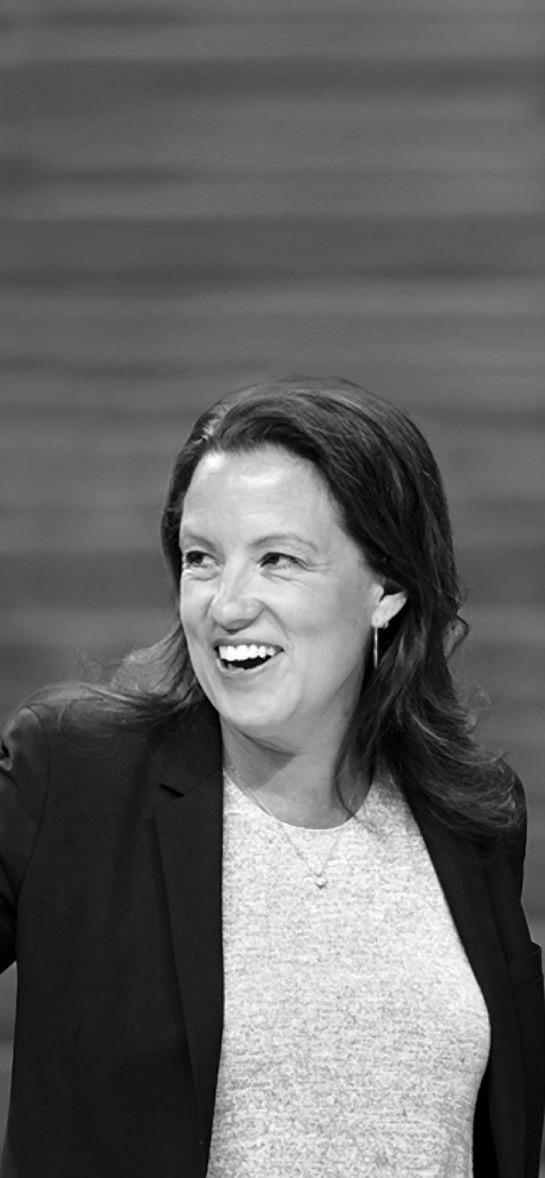
When Symetra was exploring potential sports relationships in 2019, Trinity Parker says the partner organization would have to not only elevate Symetra’s brand but also authentically share its values around diversity and inclusion, empowering women and youth, and commitment to community.
“Alisha and her team at Force 10 got this immediately, and it was pretty clear at our very first meeting that we would enter into a long-term partnership with the team,” says Parker, who is the senior vice president of marketing, communications, public affairs at Symetra. “She has been a true partner for Symetra as we work to advance our brand and help drive positive change in our Pacific Northwest community.”
“Those marquee-community partnerships are a critical part of running a sustainable WNBA franchise,” Valavanis says. “We are so fortunate to be in Seattle—our mission is reflected in the community here, and people and companies across the city really show up.”
BECU is Washington State’s leading member-owned financial cooperative, committed to improving the financial well-being of its more than 1.2 million members and their communities. BECU supports many organizations, teams and groups dedicated to community betterment. Learn more about the credit union and membership eligibility at becu.org.
“Sports has a really unique space in our lives; it brings people together, and here at the Storm, we are focused on using this platform to drive positive social change.”
ALISHA VALAVANIS
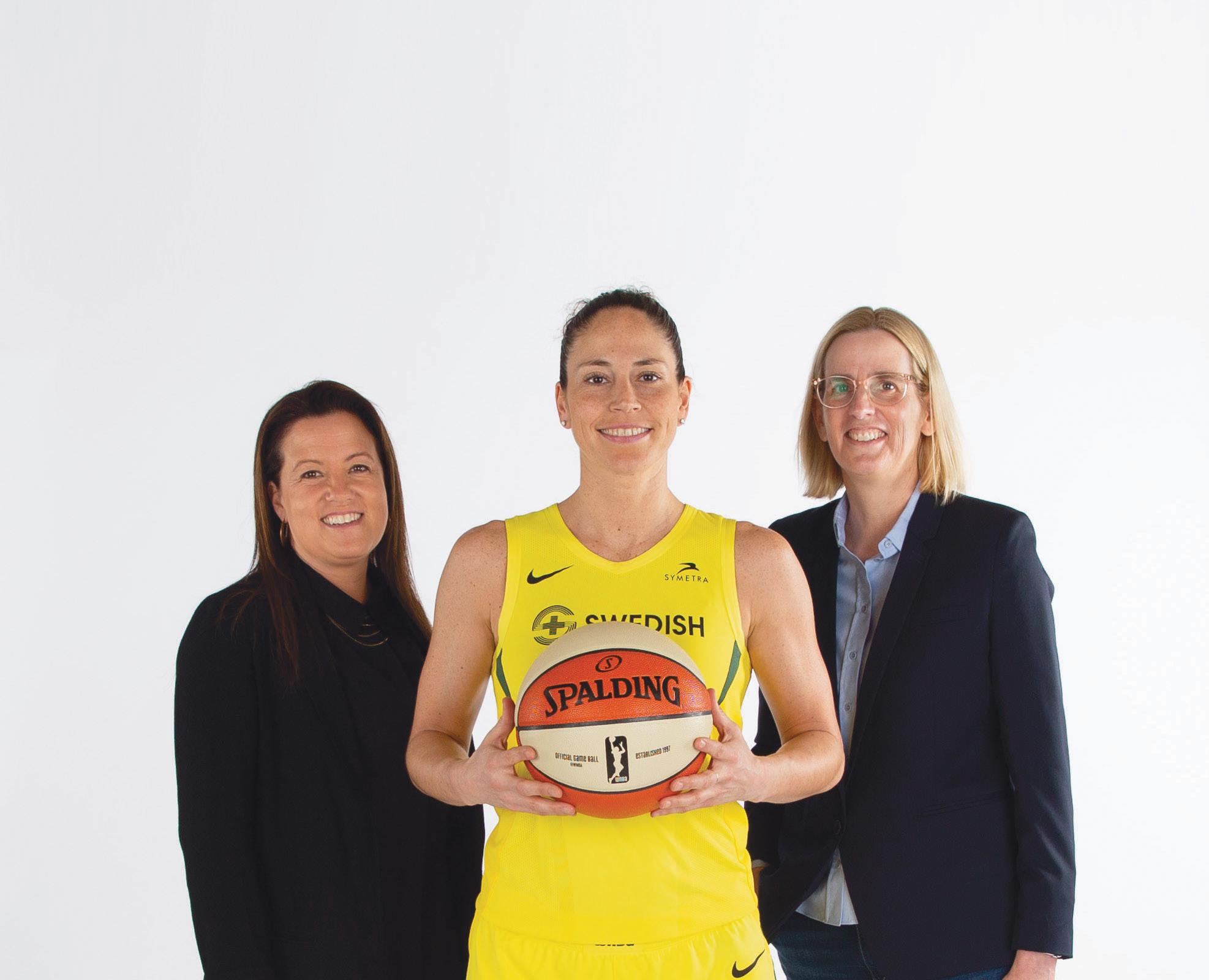

As a general counsel in a fast-paced and constantly evolving industry, Michael Valente’s steady leadership helps him stand above the crowd



Michael Valente knows how to keep a cool head. In the past few years alone, Valente has expertly guided a global company through a spin-off from a major gas and chemicals corporation as well as a tumultuous $5.8 billion merger with German conglomerate Merck KGaA. Throughout all of these challenges, Valente’s steady commitment to his team and to the business has shined through.
An accounting major at Rider University, Valente enrolled in concurrent JD and MBA programs at Seton Hall University after graduating in 1990. While pursuing his JD and MBA, Valente also worked as a staff accountant at New Jersey–based advisory and accounting firm WithumSmith+Brown.
In 1998, following his graduation from Seton Hall University, Valente accepted a clerkship with the Honorable James Petrella on the Superior Court of New Jer-
sey. The fifteen years after that clerkship saw Valente cultivate an expert understanding of legal matters in general and mergers and acquisitions in particular: after a nearly three-year stint as a corporate attorney at Lowenstein Sandler PC, Valente transitioned to the inhouse department of specialty chemicals and materials company Rockwood Holdings Inc.
Valente spent close to thirteen years at Rockwood, starting out as a senior corporate counsel and eventually securing the role of VP and general counsel, which gave him oversight of internal investigations and compliance, strategic alliances such as the sale of Rockwood Holdings to Albermarle Inc., corporate governance, M&A, and more.
In 2015, Valente was recruited to serve as general counsel of Air Products based on his experience in M&A matters. As GC, Valente was responsible for managing the
Versum expands into the electronics market as a subsidiary of Air Products Air Products develops industry-first bulk and specialty gas service MEGASYS Air Products launches a global venture, partnering with leading Japanese electronics companies The Air Products Electronic Chemicals (APEC) business group forms Versum Materials spins off in October 2016 Versum completes merger with Germany-based MerckFor well-deserved recognition of his experience, intellect, and professional integrity.
We are honored to have had the opportunity to represent Versum Materials as their trusted counsel.

Simpson Thacher
Proudly Supports the Work of Michael Valente

Senior Vice President, General Counsel and Secretary of Versum Materials, Inc.
We Applaud Michael on His Vision and Industry Leadership

spin-off of Versum Materials, a subsidiary of Air Products and an American company known for producing the electronic materials used in breakthrough products and technologies. In fact, the company’s future-oriented mind-set is reflected in its name, “Versum,” which derives from the Latin word for “toward.”


Thanks to Valente’s guidance, Air Products was able to successfully complete a tax-free spin-off of Versum in October 2016. Valente himself also left Air Products at that time, joining Versum’s leadership team as SVP, general counsel, and secretary.
“It required everyone to take initiative, so we changed [the] culture of division to create a sense of accountability and responsibility [so] that they can really elevate their performance and energy,” Valente said of the spin-off in an interview with The Legal 500. “General counsel often refer to the business as clients. I’ve tried to change that view because it sounds like you’re detached from the client. The team should recognize it can impact the company. [We] should be business partners as opposed to clients because we have [a] vested interest in the success of the company.”
Valente’s external partners have noticed his ability to lead companies through transitional periods.
“Michael has an exemplary track record of guiding companies through transformational deals and other high-stakes matters,” says Roxane F. Reardon, partner at Simpson Thacher. “His dedication, breadth, depth, versatility and ability to identify key strategic business opportunities make him a true leader.”
And things haven’t slowed down for Valente since the 2016 spin-off. In January 2019, Versum announced an upcoming merger with Entegris Inc, a specialty chemi-
cals and materials solutions company renowned within the microelectronics industry. Just a few months later, however, Entegris was outbid by Merck, a multinational chemical, pharmaceutical, and life sciences company headquartered in Darmstadt, Germany.
Through its partnership with Versum, which was finalized in October 2019, Merck aims to capitalize on the recent growth of the electronics industry, enhancing its portfolio of advanced materials and accelerating its production of next-generation semiconductor technologies.
In recognition of his unwavering leadership throughout this process as well as his history of success with more than thirty corporate acquisitions and divestitures, Valente was named to The Legal 500’s US GC Powerlist in 2019.
“Complimenting Michael for his skills as a lawyer is like complimenting a quarterback for having a great arm. Yes, it is an important competent of his success, but his leadership skills are so much more important,” says Nick San Filippo, partner at Lowenstein Sandler. “Michael builds and leads highly driven teams with a culture focused on excellence and delivering measurable results.”
Simpson Thacher is proud to partner with Michael Valente and the legal team of Versum Materials in its acquisition by Merck. Widely recognized as one of the preeminent law firms in the world, Simpson Thacher offers clients a world-class M&A team with decades of experience in structuring, negotiating and completing some of the most complex and transformative transactions. A remarkable array of clients, from large multinationals to Fortune 500 companies to smaller and closely held private companies to emerging companies, turn to Simpson Thacher for effective, value-added solutions to critical commercial challenges.

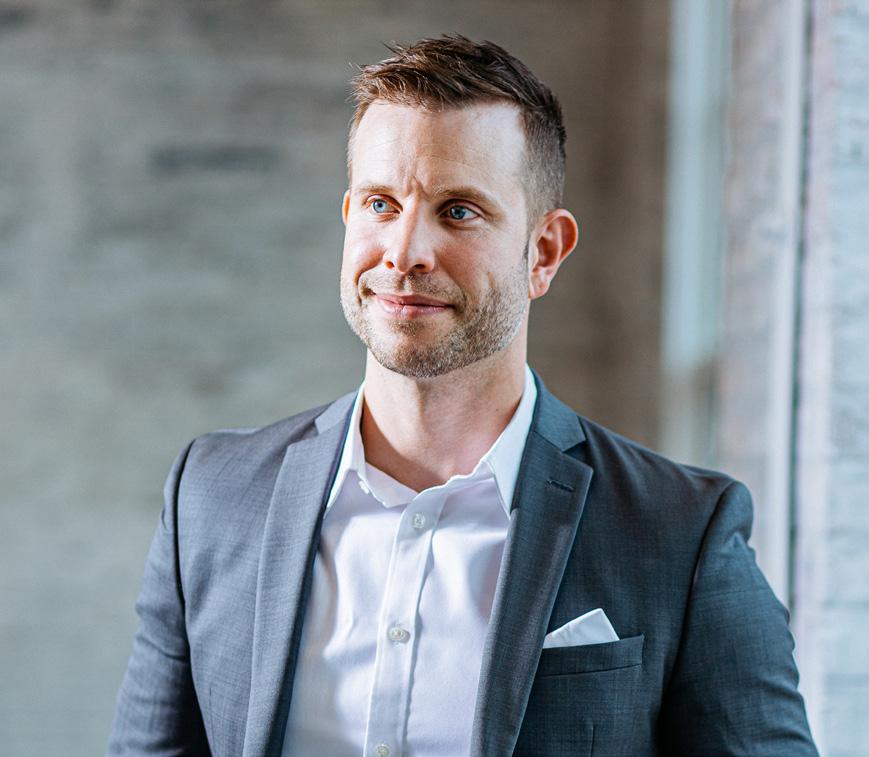
General counsel are increasingly evolving into strategic business partners, replacing law firm partners as the highest-paid and most-senior role in the legal profession. Here’s a look at what the GC role looks like across the US and in the Fortune 500.
California has 13% of GCs, beating out New York at 10% and Washington, DC at 7%.


18% of GCs attended the top fifteen law schools: Yale, Stanford, Harvard, University of Chicago, Columbia, NYU, University of Pennsylvania, University of Michigan, University of Virginia, Duke, Northwestern, Berkeley, Cornell, University of Texas at Austin, and Georgetown
70% of current GCs were promoted from inhouse positions at their current company or had an equivalent role at another company
27% are also EVPs
26% are also SVPs
14% are also chief risk officers
7% of Fortune 500 GCs were formerly law firm partners
On average, a Fortune 500 GC serves the same company for 8 years in any legal role before rising to the top
Certified has earned the reputation as the most reliable and respected furniture installation, warehousing and commercial relocation firm.
We are unparalleled in our commitment to provide flawless planning throughout every furniture project we manage, and complete support during and after transitioning into a new space.
In the past 10 years we’ve completed more than 50 million square feet of commercial office spaces for leading banks, publishers, media and insurance companies, as well as law firms, educational and healthcare institutions.
Learn more about us at: certifiedmsi.com

your
These are the catchphrases resonating across the personality assessment space, but what do they actually bring to the table? At Hogan, we know there are no shortcuts when it comes to personality assessments that accurately predict workplace performance. Over the last five decades, we’ve gathered an unprecedented quantity of data that shows our assessments do what we say they do. Predicting performance is serious business, and Hogan doesn’t play games.
hoganassessments.com